

The Perfect 5 to 7 Days in Belgium Itinerary
Last Updated on February 13, 2024
by Lizzie Fitzgerald
Disclaimer: This article contains affiliate links. That means if you click a link and make a purchase, we may make a small commission. As an Amazon Associate we earn from qualifying purchases. For more information, see our privacy policy.

Besides Brussels , Bruges and Ghent , it can be hard to know just what to include as part a 5 to 7 days in Belgium itinerary. Often said to be where the north and south of the continent meet, the ‘Heart of Europe’ is incredibly diverse with so many different sides.
As it is quite a small country, Belgium is usually very quick and convenient to get around. This means you can see and experience a lot in just a short space of time when you visit Belgium. Everywhere you go, you’ll find hidden gems, gorgeous architecture and some great food to fuel all your exciting adventures!
Table of Contents
How Many Days in Belgium?
Most tourists unfortunately only spend a couple of days in Brussels or Bruges before heading onto either Paris , London or Amsterdam . This obviously isn’t enough time to get a good feel for the country’s complex communities, their different languages, landscapes and identities.
5 days in Belgium is a great start as you can already fit in its vibrant capital and several of the major Flemish cities. As the distances and times involved aren’t too long, you won’t feel rushed despite seeing so many new places.
If you have 7 days in Belgium, that’s even better as you can also explore the country’s coastline and more of its bustling cities. This is a good amount of time to be able to get a really good feel for Belgium without feeling too rushed.

Getting To & Around Belgium
Due to its location at the crossroads of Western Europe , Belgium is very well connected to the neighbouring countries around it. The small nation’s efficient public transport system also makes travelling very easy and affordable.
One of the main places visitors arrive from abroad is Brussels Airport. Also known as Zaventem, it lies on the outskirts of the capital with flights departing to Africa, Asia and the USA all the time.
Located just outside of Charleroi in Wallonia is ‘Brussels South’; the country’s main cheap flight hub. Cunningly named to entice tourists, it is actually about an hour’s bus or taxi ride from BXL. You can organise airport transfers here.
Otherwise, most travellers arrive in Antwerp, Brussels, Bruges and Ghent by bus or train at one of their numerous stations. There are connections to these stations from neighbouring countries such as Lille in France, Amsterdam in the Netherlands or Luxembourg . You can view schedules here .
As the major Flemish cities lie roughly along the same line and are quite compact cities, taking the train and walking are the best ways to get around both Flanders and Brussels.
You definitely don’t need a car for your one week in Belgium as all of the stops are well-connected by the extensive public transit network.
If you have more than 7 days, you may find a hire car necessary to visit some of the smaller villages and forests in Wallonia. There is more information in the “Have More Time” section below.

5 to 7-Day Belgium Itinerary
This itinerary covers some of the country’s must-see sights in its three main regions of Brussels and Flanders. Whether you have 5 days or a full week, you’re going to see much more than most visitors do.
Day 1 – Brussels
After arriving in Brussels, most people head straight to the Grand Place to see the spectacular square and all its grand guild houses. One of the capital’s most iconic attractions, it lies right next to Manneken Pis – the city’s famous statue of a small peeing boy. You can also organise a walking tour to learn more about the city when you arrive.
Afterwards, you can stroll about cute neighbourhoods like Les Marolles or the chic Sablon. Both are home to interesting antique shops and some amazing old churches. Expensive chocolatiers such as Pierre Marcolini and Neuhaus can also be found here.
Not all too far away is the impressive Royal Palace of Brussels and several top-class museums focusing on music, Magritte and the fine arts. After taking some pics or perusing their extensive collections, head to Mont des Arts for one of the best views over Brussels.
Back down next to the Grand Place is the world-famous Delirium which has over 2,000 different beers for you to try. The busy bar is also conveniently located near happening nightlife spots like Saint-Gery and Place Sainte-Catherine.
On the way back to your hotel or hostel, grab a packet of andalouse sauce-coated frites and eat them in the Grand Place gloriously illuminated at night – a quintessential Brussels experience.

Where to Stay in Brussels
Motel One Brussels -This centrally-located hotel is perfect for mid-range travellers to Brussels. There are a range of rooms to choose from, an excellent location for exploring the Belgian capital, a great buffet breakfast on offer each morning and an on-site bar to enjoy.
Pillows City Hotel Brussels Centre – This is an excellent hotel for luxury visitors looking for a plush stay while visiting Brussels. They have a range of modern and comfortable rooms on offer, a fabulous breakfast available and plenty of amenities to ensure you have an amazing stay.
Appart’City Confort – Those who’d like to have their own flat while basing themselves in the Belgian capital will love this aparthotel. Offering a range of different apartments, they combine the comfort and amenities of a hotel with the convenience of a furnished flat.
MEININGER Bruxelles City Center – This hostel is a good option for those looking to save a bit of cash when visiting Brussels. Offering both dorms and private rooms, they have a great location and good self-catering facilities, as well.
Not quite what you’re looking for? Click here to browse more Brussels hotels!
Day 2 – Brussels
On the second day, take the time to dig a bit deeper in Brussels and enjoy more of the sites of this vibrant and diverse European city.
Spend your morning exploring the Atomium which lies a bit north of the city centre. This structure was built for the 1958 World’s Fair and it is a top attraction when visiting the Belgian capital. It takes about 40 minutes to reach her via metro from the city centre, so make sure to factor that into your daily plans. You can pre-book tickets here.
In the afternoon, spend some time strolling through the lovely Parc du Cinquantenaire and enjoy the vibes in this central green space. And then, as the day is beginning to draw to a close, spend some time exploring the diverse European Quarter where there are a number of interesting sites to see.
You also could take some time to enjoy some of the city’s vibrant street art and just simply enjoy the vibes of this bustling capital.

Day 3 – Ghent
Located very close to Brussels along the same train line as the town of Bruges further afield is the absolutely gorgeous Ghent. Although it is often overlooked in favour of Bruges, its small but scenic centre is certainly a must-visit if you have five days in Belgium.
Dominating its historic heart are three centuries-old towers that make for some fantastic photos and viewing from St. Michael’s Bridge.
Aside from entering St. Nicholas’ Church and seeing all its artworks, you can venture up to the top of the Belfry of Ghent and St. Bavo’s Cathedral. Both offer phenomenal panoramas of the city below and other towers beside them.
Strolling along the Graslei and Korenlei quays next to its winding canals is also lovely, especially when all their old buildings are majestically lit up at night. Here you can sit on their steps or at a cafe’s patio for a drink and take relaxing boat trips along the river.
After checking out the gigantic Gravensteen Castle nearby, make your way to the Dulle Griet for more strong Belgian beers in a traditional setting. You can also organise a bike tour to learn more about the city.
As Ghent is a larger, livelier university city, you could always stay a night here if you fancy experiencing more of its vibrant ambience or alternatively head back to Brussels or onwards to Bruges.

Day 4 – Bruges
If you have 5 days in which to explore Belgium, then you’re definitely going to visit the beautiful city of Bruges at some point. Very walkable, the fairytale Flemish town lies only an hour’s train journey northwest of Brussels. The historic centre of Bruges is a UNESCO World Heritage Site and it is absolutely charming.
Once you arrive, just slowly meander your way to the tall spire you see rising in the distance. One of its main landmarks, the Belfry of Bruges towers 83 metres in height and boasts sublime views from up high. You can also organise a walking tour and canal cruise of the historic centre to learn more about the history of the city.
At the foot of the thirteenth-century bell tower is the Grote Markt. Lined by attractive townhouses and lively restaurants, the ‘Venice of the North’s’ main square is always packed with people. The nearby Basilica of the Holy Blood in Burg Square also rightfully attracts lots of attention.
Of course, you can’t miss the Gothic Church of Our Lady and the imposing and beautiful town hall in Beuge, as well.
Other than visiting the Groenige Museum, most visitors spend their time ambling about its pretty cobbled streets and picture-perfect canals.
As Bruges empties at night, it is nice to stay if you want to see the atmospheric city in a different light. You can also take a dark side of Bruges tour in the evening.

Where to Stay in Bruges
Hotel Fevery – If you’re travelling on a mid-range budget, then this 3-star hotel located in city centre is a great choice. Situated in the heart of Bruges, they have a range of lovely rooms on offer and plenty of amenities to ensure your stay is a great one.
Boutique Hotel Die Swaene – This luxury hotel is a great choice for those who’d like a sophisticated and opulent stay while visiting beautiful Bruges. There are a number of fantastic rooms to choose from along with plenty of great amenities. They also have an unbeatable location for exploring the city.
Snuffel Hostel – Those travelling solo or on a tight budget (or looking for a great social atmosphere) will love this central hostel. There are a number of both dorm beds and private rooms to choose from, they have a fantastic location for exploring the best of Bruges and great common areas.
Not quite what you’re looking for? Click here to browse more Bruges hotels!
Day 5 – Bruges
Though Bruges is a relatively small town, it can be worth spending more than a day here to really get a good feel for this lovely little city. There is a surprising amount to do in Bruges so it’s an excellent place to spend your final day in Belgium (if you only have five days to spare).
You have the option of either spending this day seeing some of the sites in Bruges that you didn’t before or you could opt to go on a day trip – the town of Ostend on the coast is a great option.
The latter choice is a good idea for those who only are planning a 5-day itinerary as it allows you to see more of the country in your limited time. If you’re spending 7 days, then spending this entire day in Bruges is the best choice for you.
If you opt to stay in Bruges, then you can spend your day doing activities such as visiting the Choco-Story Museum or the Frietmuseum or even wandering around trying to source the best Belgian waffle in the city (not a bad task, if you ask me!).
Or, if you fancy something with a bit more punch, then consider heading out on a beer tour to sample some famous Belgian beers! If you’re not a beer drinker, then this food tour with a local is a good alternative.

Day 6 – Ostend & Belgium’s Coast
Travellers with a bit more time may want to visit the coast which is where Belgians go to relax, unwind and enjoy the refreshing sea breeze. As Ostend, its largest city, is located not far from Bruges, you can always combine the two rather than take a ninety-minute train from Brussels.
Rather ugly to look at, its wall of huge high-rises overlooks a long, wide beach that stretches the entirety of the country’s coastline. Aside from lounging on its sands in summer, you can walk or cycle along its broad boardwalk before stopping off for some superb seafood.
Ostend’s bustling centre is also packed with plenty of local shops, several museums and the stupendous St. Peter and St. Paul Church which dates to 1907. If you fancy your luck, there is a large casino that also puts on some top-class shows and entertainment acts.
A wonderful way to actually see all the country’s North Sea coastline is to hop on the Kusstram. Stretching 67 kilometres in total, it is remarkably the longest tram line in all the world. Along the way, you can always get off and explore the beautiful dunes around Bredene or enjoy some fine dining at the chic seaside resort of Knokke.
At the end of the day, you can take the train to Antwerp to give you a full day to explore there or either stay in Ostend or Bruges if you want to spend longer in the area.

Where to Stay in Antwerp
Citybox Antwerp – This 3-star hotel in the centre of Antwerp is perfect for those looking for a mid-range place to stay in this Belgian city. They have a great, central location along with several twin, double and family rooms on offer.
Hotel Rubens-Grote Markt – Luxury travellers will love this sophisticated hotel located in the centre of Antwerp. There’s a fab breakfast each morning, several clean and modern rooms available, a lovely terrace and private parking.
Yust Antwerp – If you’re looking for a social and budget-friendly place to stay in Antwerp, you’re sure to love this highly-rated hostel. Offering plenty of dorms and private options, there is also an on-site bar and cafe for guests to enjoy.
Not quite what you’re looking for? Click here to browse more Antwerp hotels!
Day 7 – Antwerp
Yet another popular place in Flanders that most people head to is the bustling port city of Antwerp. The undisputed diamond capital of the world, Belgium’s second-largest metropolis has loads of trendy bars, shops and restaurants for you to try out. You can book a walking tour to learn more about the city.
As with Bruges and Ghent, its historic main square is presided over by an enormous Gothic-style spire that towers over 120 metres in total. The tallest church in the Low Countries, the Cathedral of Our Lady displays some exquisite architecture while elaborate altars, artworks and effigies lie within.
If you want to delve more into the country’s rich artistic heritage then the nearby Rubenshuis is the best place to go. The former home and workshop of Peter Paul Rubens contains numerous paintings by the renowned Flemish master.
Also worth a visit is the Red Star Line Museum which presents another side of the city’s history. It instead looks at the lives of the shipping company’s two million or so passengers who passed through Antwerp on their way to the USA.
As it is known for its pounding nightclubs like Ampere and cool, classic bars such as Den Engel, Antwerp certainly has a lot to do once night falls. If you want to wake up early to catch a plane, however, it’s probably easier to head back to Brussels by train.

Have More Time?
If you have even more time left to explore the country (woohoo!), then there are countless other cool towns, cities and historic sites you can add to your Belgium itinerary.
While most travellers tend to stick to Flanders and Brussels, Wallonia also has some awesome cities to stop by. The most popular are Namur, its scenic capital, and Liege, its largest city, which boasts an absolutely incredible modern train station.
The WWI battlefields and cemeteries at Ypres are also interesting to check out as is Waterloo – the site of Napoleon’s final defeat in 1815.
Another option is to take a beautiful tram ride to Tervuren from Brussels and visit the fascinating Royal Museum for Central Africa. After seeing the lush, green park and woods outside, you can then head to the nearby Leuven – a lively university town home to lots of lovely architecture.
While the French-speaking region does have some interesting cities such as Namur, Liege and Mons, you can also visit small towns in the Ardennes like Dinant and Durbuy. As they are harder to reach by public transport, it’s best to rent a car so you can make the most of your time in Belgium.
From Brussels, it is only an hour’s drive to Dinant which lies along the banks of the Meuse River backed by dramatic rocky cliffs. Its stunning setting, soaring church and the colourful houses of its old town all make for some fabulous photos and viewing.

What a way to spend one week in Belgium or even longer! There is so much to see and do in this beautiful country that a week may well not seem long enough.
Are you planning to a trip to Belgium? Have any questions about this itinerary? Let us know in the comments!

Related Posts:

The Perfect 2 to 3 Days in Brussels Itinerary

The Perfect 1, 2 or 3 Days in Antwerp Itinerary

One Day in Luxembourg Itinerary: A Day Trip from Brussels
About Lizzie Fitzgerald
Lizzie is a writer for The World Was Here First. She loves travelling and discovering new places but also often finds herself returning to her favourite destinations. She has a particular affinity for Greece where she has visited countless islands and destinations on the mainland.
Leave a Comment Cancel reply
Nomadic Matt's Travel Site
Travel Better, Cheaper, Longer
Belgium Travel Guide
Last Updated: April 18, 2024
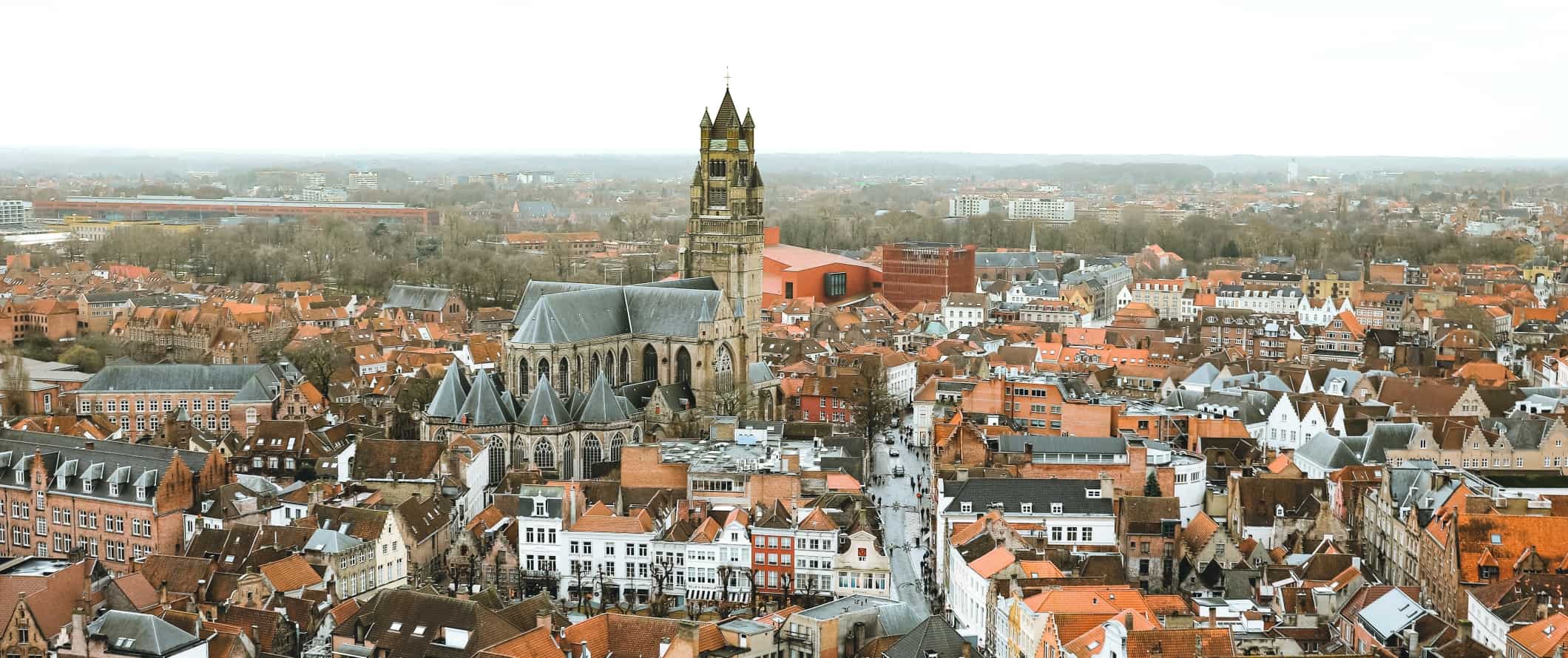
Belgium may be small (it’s one of the smallest countries in Europe) but when it comes to things to see and do it punches well above its weight.
The country boasts over 1,000 breweries and Belgian brewers were some of the first in the world to perfect the beer-brewing process. And the country’s chocolate rivals that of Switzerland , offering decadent sweets that will have you gaining a few pounds during your visit.
On top of that, the country’s mouth-watering frites will make you look at French fries differently for the rest of your life.
And if you’re a history buff, Belgium has countless sites to keep you busy during your visit, including the famous grounds of the Battle of Waterloo, a bloody conflict in 1815 that shaped the face of modern Europe.
More often than not, Belgium gets glossed over by travelers who spend a day in Brussels, Bruges, and maybe a trip to Ghent before they travel onward. However, if you look deeper, you’ll see this country has plenty of medieval towns, historical sites, and parks worth sticking around for.
This travel guide to Belgium will help you plan your trip, save money, and make the most of your time in this incredible country.
Table of Contents
- Things to See and Do
- Typical Costs
- Suggested Budget
- Money-Saving Tips
- Where to Stay
- How to Get Around
- How to Stay Safe
- Best Places to Book Your Trip
- Related Blogs on Belgium
Click Here for City Guides
Top 5 things to see and do in belgium.
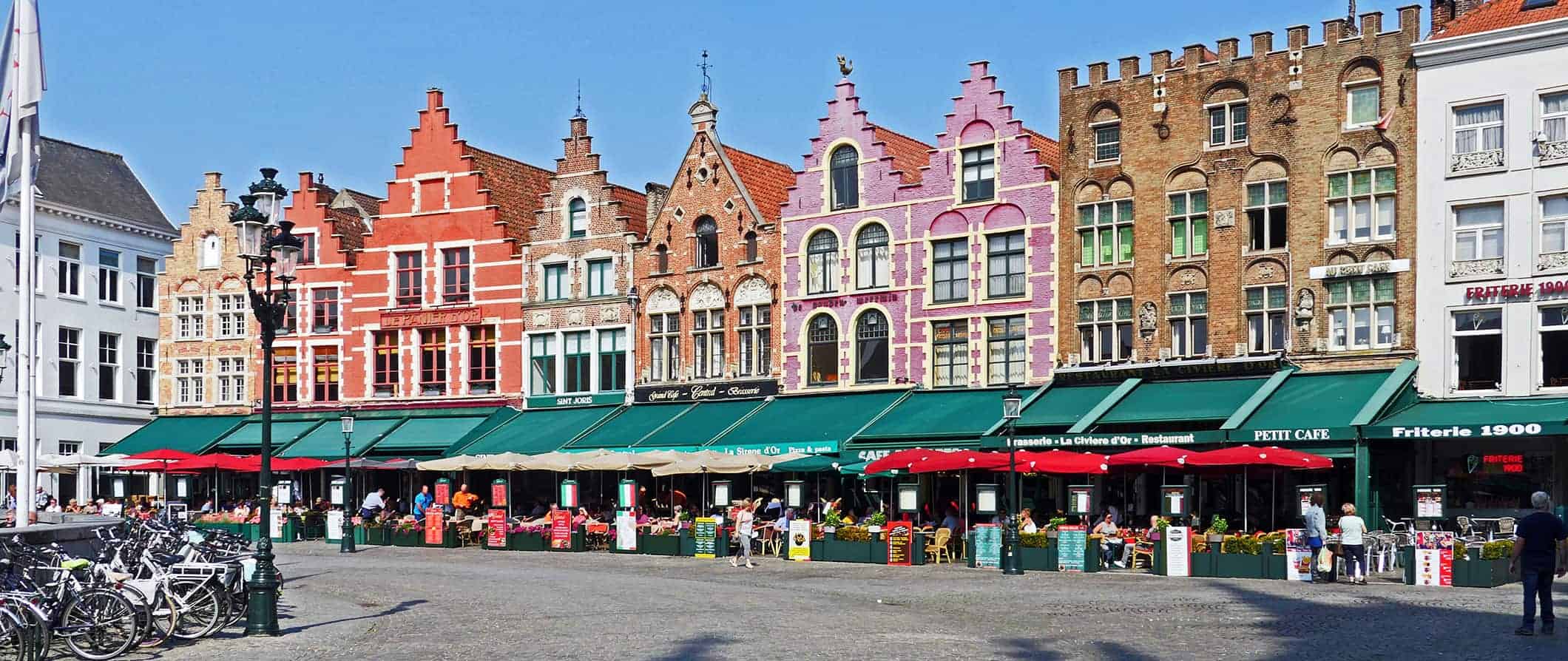
1. See Brussels
Brussels is the administrative center of the European Union — and an awesome city to visit. See the Musées Royaux des Beaux-Arts for its paintings, the magnificent Grand Place and historic Town Hall, sample amazing beer, and more. Spend a few days soaking it all in. It’s worth it!
2. Eat and drink
Though it’s a small country, Belgium has a few culinary aces up its sleeve. Waffles, chocolate, and frites shops dot every street. Beer is produced in massive quantities (there are over 1,000 breweries here, with the most famous being Delirium Cafe in Brussels, which made the Guinness Book of World Records for its selection of over 2,000 beers). Forget the health food, Belgium is a place to indulge in tasty food and hearty brews. If you want to dive even deeper, take a food tour. Discover Belgium has a variety of different food tours offered in all the major cities across the country.
3. Admire Bruges
Bruges is a city not to be missed. It’s one of the most stunning examples of medieval towns left in Europe. BE sure to check out the 14th-century town hall, the Belfry Tower, the Cathedral of the Holy Saviour, its market squares, and canals. While touristy, it’s one of the best medieval towns in Europe and worth seeing up close (at least for a day).
4. Tour Ghent
Ghent is often overlooked compared with other cities in the country, but this university town is charming. To visit the city at its liveliest, come in July when the largest cultural outdoors festival in Europe — known as “Gentse Feesten” — takes place, boasting food, music, and live street entertainment. Just make sure to book your accommodation early!
5. Explore Flanders Field
Flanders was the site of half a million deaths during World War I (over 1 million people were either killed, injured, or went missing here). There are numerous military cemeteries and ‘Missing Memorials’ commemorating those of all nationalities who fell in battle (soldiers from 50 different countries fought here over the course of the war). It was also the site of the first use of poison gas in a major conflict on the Western Front. At the museum in Ypres, visitors can learn about the harsh realities of what it was like to be a soldier in the trenches. Admission is 10-13 EUR depending on which ticket option you choose.
Other Things to See and Do in Belgium
1. visit the castles.
There are more castles per square mile in Belgium than anywhere else in the world. With over 3,000 to explore, it can be hard to know where to start. The Castle of Bouillon in the Ardennes is one of the most historic as it was built in the 11th century. Other must-sees are Beersel, which was built in the 14th century and is one of the best-preserved in the country; Gravensteen, built in the 12th century and centerpiece of the 1913 World’s Fair in Ghent; the 16th-century Gaasbeek, with its lavish rooms and art collection; and 15th-century Freÿr, which is often described as a smaller Versailles.
2. Visit Waterloo
The Battle of Waterloo took place in 1815 and brought a decisive end to the Napoleonic Wars. The battle lasted a full day and involved some 200,000 combatants — tens of thousands of whom died. At the site of the famous battle, there is a memorial in the form of a statue of a lion (looking towards France) on a hill, with 226 stairs, called La Butte du Lion (Lion’s Knoll), which represents the Allied victory. There’s also a nearby visitor center where you can watch films that explain the battle and what it meant for world history (admission is 17 EUR). While here, you can also visit the Wellington Museum (admission is 5.50 EUR). It’s located in the building where Wellington spent the night before the battle and houses maps, an overview of the battle, artifacts, and more. For 23 EUR, you can get the Pass 1815, which includes admission to the Wellington Museum, Battle of Waterloo 1815 Memorial, and Napoleon’s Last Headquarters.
3. Explore Ardennes Forest
Ardennes Forest covers an area of over 11,000 square kilometers and is the place to go skiing and hiking. The area is also famous for wild game like boar and venison, smoked ham, paté, and the world-renowned Trappist beers (beer brewed by Trappist monks). Some popular hiking trails are the Vieilles-Forges Lake Loop (easy, 11 kilometers), The Hautes-Rivières-La Semoy (moderate, 13 kilometers), and Crêtes de la Meuse (hard, 14 kilometers). There are also several multi-day hikes here as well.
4. Visit Cathédrale Notre-Dame
Built in the 12th century, the Cathedral of Our Lady in Tournai is one of the most striking examples of Romanesque architecture in Europe and is designated as a UNESCO World Heritage Site. The cathedral has five towers reaching heights of 83 meters (272 feet), magnificent stained-glass windows. as well as paintings by Rubens and Jacob Jordaens.
5. See Manneken Pis & Jeanneke Pis
These two iconic sculptures can be found in Brussels and are considered by many as a ‘must see’ (there is always a group of people admiring them and taking photos). They are simple, nude male and female children’s figures that are peeing water into a fountain. The male is often dressed up in costumes (and the costumes are saved so you can view previous ones from years past). They are pretty odd tourist attractions but worth a quick photo.
6. Explore the Antwerp Zoo
Located in the center of Antwerp, this zoo is a full afternoon attraction. Open since 1843, it’s one of the oldest and most famous zoos in the world (part of the 1920 Olympics was hosted here). There are several exhibits and unusual garden features to be seen, including some unique animal sculptures. Some of the wildlife here includes sloths, lizards, penguins, elephants, zebras, lions, primates, and more! It’s a great place to take the kids. Admission is 27.50 EUR in the winter and 32.50 EUR the rest of the year.
7. Sample the catch of the day
Ostend Fish Market Visserskaai is an open-air market where the Ostend fishing fleet sells their daily catch (Ostend is just 45 minutes from Ghent, located on the coast). If you’re a fan of seafood, this is an awesome place to check out to eat and take in the local flavor of life on the North Sea. There are numerous restaurants along the seafront and you are guaranteed to get a fresh meal.
8. Wander Parc du Cinquantenaire
Also known as Jubelpark, this park and museum complex opened in 1880 and covers over 74 acres. Located on the southeast side of Brussels, it’s home to the Army Museum, the AutoWorld Museum, an art museum, gardens, and more. It’s a nice place to come in the summer to relax and admire the views after you’ve done some museum hopping.
9. See the Basilique de Koekelberg
The Basilica of the Sacred Heart in Brussels is one of the largest Roman Catholic churches in the world. In addition to its amazing architecture and impressive art deco, it offers beautiful views of the city and the surrounding area. Completed in 1970, the church is very close to the center of town and is free to see (just dress respectfully as it is a place of worship). Admission to climb the tower is 8 EUR.
10. Explore Antwerp
The country’s second-largest city, Antwerp offers an extraordinary variety of local food and beer for visitors to enjoy. For those interested in art, the Royal Fine Arts Museum houses the world’s best collection of the Flemish Masters’ works, including the largest group of Rubens masterpieces in existence. You can also see Brabo Fountain (a fountain with a weird sculpture of a man throwing his severed arm), the Art Nouveau Little Boat building, and the Whisperer statue (it’s a statue that lets you leave a message that someone else can listen to if they input the right code).
11. See the windmills
Belgium has a long history of using windmills, which were used for cutting wood, pumping water, and grinding grain. There are a number of historic windmills from the 18th-20th century still standing throughout the country, some of which you can visit too. Most are located near Bruges.
12. Visit the European Parliament
Founded in 1952, the EU parliament in Brussels is where all 705 members (from 27 countries) meet to debate the future of the EU. You can watch a parliamentary session in the debating chamber (known as the Hemicycle) or tour the building (with an audio guide) when parliament isn’t in session. Space is limited so book in advance (it’s free). On Mondays at 11am and 3pm, there are in-depth guided tours offered in both English and French.
For more information on specific cities in Belgium, check out these guides:
- Brussels Travel Guide
- Bruges Travel Guide
Belgium Travel Costs

Accommodation – For a dorm bed in a hostel, prices range from 25-35 EUR per night for dorms with 4-6 beds. Larger dorms with 10 or more beds cost around 18-25 EUR. Private rooms cost between 70-150 EUR per night. Free Wi-Fi is standard and some hostels include self-catering facilities. Only a few include free breakfast.
Camping is available around the country for those traveling with a tent. Expect to pay around 13-17 EUR per night for a basic plot without electricity.
Budget hotels start between 75-150 EUR for a basic double room. Expect basic amenities like free Wi-Fi, TV, and a coffee/tea maker.
Airbnb is popular throughout the country and you can get a private room for as little as 50-60 EUR per night if you book early. An entire apartment costs between closer to 150-200 EUR. Expect prices to double if you don’t book early, however.
Food – Belgian cuisine has been strongly influenced by its European neighbors over the centuries, specifically France, Germany, and the Netherlands. Food here is hearty with chocolate, waffles, fries, and beer being the most famous cultural staples. Steak and fries, mussels (often with fries), smoked ham, stew, and sausages are just some of the common dishes you’ll find here. Portions are large and filling too (the saying goes that Belgian food takes the portions of German cuisine but adds the quality and delicacy of French cuisine).
Light meals at cafes (like a sandwich, soups, salads, or crepes) cost around 7-12 EUR. Fast food (think McDonald’s) costs 9 EUR for a combo meal. For cheap and delicious sandwiches under 6 EUR, check out the nationwide chain Panos Takeaway snacks, like a cone of fries at one of the ubiquitous frite shops, cost 3-4 EUR.
At a casual restaurant serving traditional cuisine, expect to pay 15-22 EUR for a main dish. If you want to splash out, a three-course meal with a drink starts at 40-60 EUR. Chinese food costs around 10-14 EUR for a dish while pizza is around 8-10 EUR.
Beer or a glass of wine are both around 4-5 EUR, a cocktail is 9-12 EUR, and a latte/cappuccino is 3-4 EUR. Bottled water is 2 EUR.
If you want to cook your meals, there are some great markets throughout the country. Expect to pay around 60-70 EUR for a week’s worth of groceries. This gets you basic staples like rice, pasta, seasonal produce, and some meat or fish.
Backpacking Belgium Suggested Budgets
If you’re backpacking Belgium, expect to spend around 60 EUR per day. This budget covers a hostel dorm, cooking most of your meals, taking public transportation and walking everywhere, limiting your drinking, and doing most free activities like free walking tours and visiting the markets.
On a mid-range budget of about 150 EUR per day, you can stay in a private Airbnb or private hostel room, enjoy a few drinks, eat out for some meals, take the occasional taxi to get around, rent a bike, and do more paid activities like visiting museums, taking a canal cruise, and visiting castles.
On a “luxury” budget of 270 EUR or more per day, you can stay in a hotel, eat out for all your meals, drink as much as you want, take more taxis, and do whatever activities you want. This is just the ground floor for luxury though. The sky is the limit!
You can use the chart below to get an idea of how much you need to budget daily. Keep in mind these are daily averages – some days you’ll spend more, some days you’ll spend less (you might spend less every day). We just want to give you a general idea of how to make your budget. Prices are in EUR.
Belgium Travel Guide: Money-Saving Tips
Belgium is not a cheap country to visit. Accommodation is expensive and food and drinks can really add up. While it will never be the cheapest country in the world, there are a few ways to cut costs. Here are my tips on how to save money in Belgium:
- Drink beer – This country has so many breweries (the most per capita in the world!) that beer is the cheapest form of alcohol. A beer will set you back just a few euros so if you’re going to drink, stick to beer.
- Stay with a local – Couchsurfing connects you with locals who can give you a free place to share and share their insider tips and advice. It’s the best way to save money and have a more local experience.
- Eat cheap – If you’re going to eat out, stick to things like sandwiches, kebabs, and frites. These meals cost between 5-7 EUR and are your cheapest options (unless you cook your own meals).
- Take the bus – Budget bus companies like Flixbus can take you across the country for cheap. It isn’t glamorous, but for tickets starting at 5 EUR, you really can’t complain!
- Go on a free walking tour – This is a great way to learn the history behind the places you are seeing and to avoid missing any must-see stops. You can find them in Brussels, Bruges, Ghent, and Antwerp. Just make sure to tip your guide at the end!
- Get a city tourist card – Local tourism offices have a tourist card for all their attractions, tours, and restaurants. Available in cities like Brussels and Bruges, this card gives you free entry and substantial discounts on all the attractions and tours, free local public transportation (a huge plus), and discounts at a few restaurants and shopping malls. They save a ton of money if you’re planning to see and do a lot and you can choose between 24-hour, 48-hour, and 72-hour passes.
- Rideshare – If you’re flexible in your schedule, use the ridesharing service BlaBlaCar and catch rides with locals between cities (or countries). Drivers are verified and it’s perfectly safe and affordable. It’s usually faster than the bus — and much more interesting!
- Have an ISIC Card – To save up to 50% on the cost of admission to museums and other tourist attractions, be sure to present a valid student card. The ISIC is typically accepted in places where a foreign student ID is not.
- Bring a water bottle – The tap water here is safe to drink so bring a reusable water bottle to save money and reduce your plastic use. LifeStraw is my go-to brand as their bottles have built-in filters to ensure your water is always clean and safe.
Where to Stay in Belgium
Belgium has plenty of fun, social, and affordable hostels. Here are my suggested places to stay:
- Sleep Well (Brussels)
- Brussels 2Go4 Quality Hostel Grand Place (Brussels)
- easyHotel Brussels (Brussels)
- Meininger Brussels City Center (Brussels)
- Snuffel Backpackers Hostel (Bruges)
- St. Christopher’s Inn Bauhaus Hostel (Bruges)
- Lybeer Travellers’ Hostel (Bruges)
- Boomerang Hostel (Antwerp)
- Yust Antwerp (Antwerp)
- Ecohostel Andromeda (Ghent)
- KaBa Hostel (Ghent)
How to Get Around Belgium
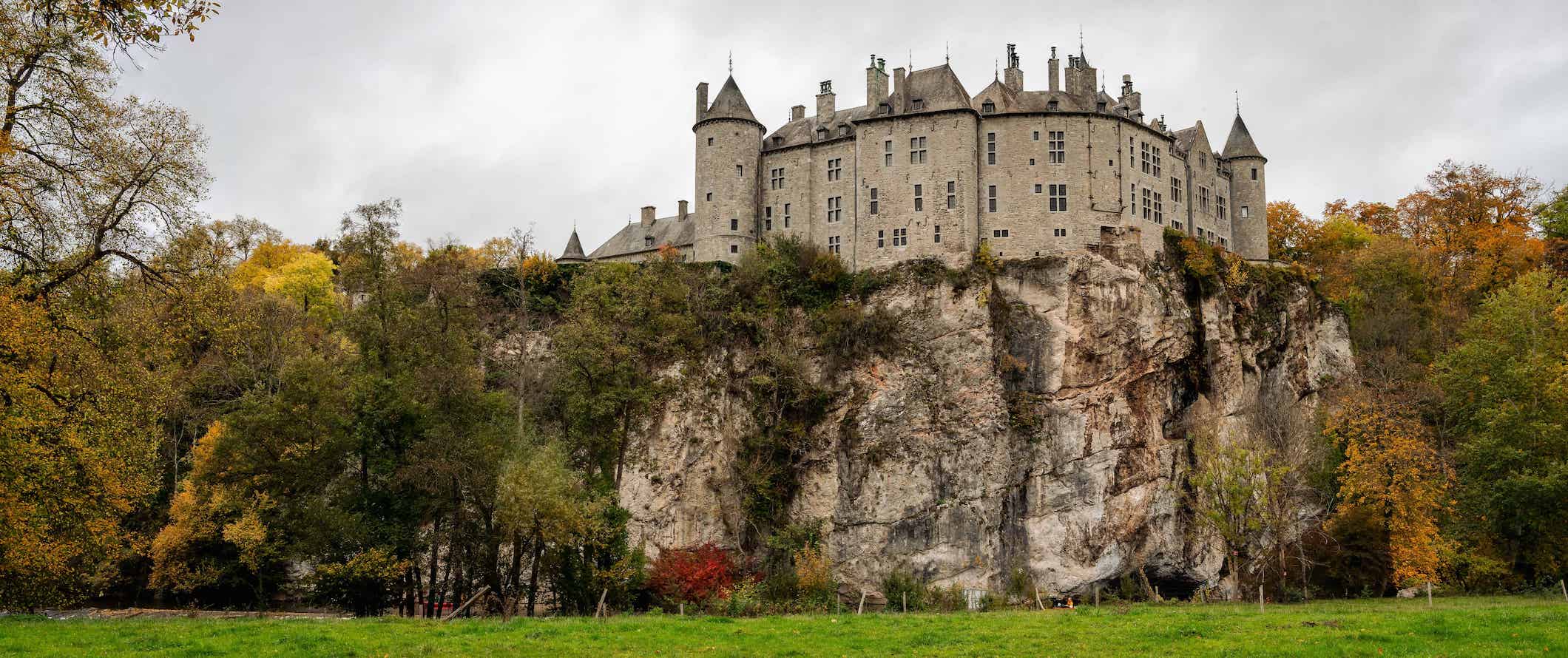
Public transportation – Belgium’s cities and towns have excellent public transportation. Brussels has the only metro system in the country but there are trams in all major cities. Public buses also run everywhere. Tickets cost between 2.50-3 EUR.
Most cities have transportation passes too. Brussels has a STIB-MIVB pass that provides unlimited rides for 24 hours for just 7.50 EUR. In Antwerp, you can purchase a day pass for 7 EUR. Multi-day options are also available.
Taxis – Taxis are generally quite expensive, and seeing as how you can get around on foot or by public transit, they’re not recommended. Fares start at 3 EUR but they can also start as high as 8.50 EUR in some places (like Ghent). Each kilometer starts costs between 2-2.50 EUR, depending on the city. Skip them if you can!
Train – Travel around the country by train isn’t that expensive as the country is relatively small. Brussels to Bruges via train costs about 10 EUR for the one-hour trip. Brussels to Antwerp via train costs about 6 EUR for the 45-minute ride.
You can track schedules and fares on the SNCB website. To find routes and prices for trains around Europe, use Trainline .
A Eurail Pass, which allows travelers to explore Europe by providing a set number of stops in a specific time period, might also be a good option if you’re doing some country hopping. For more information, here’s a detailed breakdown of how Eurail passes work and can save you money.
But if you’re staying within Belgium, the SNCB also has some great value passes:
- Rail Pass Ten – This pass gives you 10 one-way trips anywhere in the country if you’re over 26 years old. The 2nd-class pass is 86 EUR, and it’s 131 EUR for the first-class pass. It’s valid for one year, and if you don’t use the whole thing, you can hand it off to someone else.
- Go Pass 10 – This is the same as the Rail Pass but for people under 26 years old. It costs 55 EUR.
- Go Unlimited – For people under 26 years old, you can get a week of unlimited travel during school holidays for 18 EUR, or a month of unlimited travel in July or August for 29 EUR.
Bus – Intercity bus tickets are often under 10 EUR for most journeys. Getting to and from most of the major airports is easy, with buses and trains readily available. Expect to pay 10 EUR (usually less) for a one-way ticket.
There are a few major bus companies servicing Belgium, including:
I recommend Flixbus for the cheapest rates and most comfortable buses. You can get from Brussels to Antwerp for as little as 4 EUR, or Brussels to Bruges for 6 EUR. Research the schedule ahead of time, however, as buses tend to not run every day. You may also need to use a service like STIB-MIVB if you’re venturing off the tourist trail.
Hitchhiking – Hitchhiking in Belgium is very safe, though not very common. HitchWiki is the best website for hitchhiking info and tips for Belgium.
When to Go to Belgium
The peak travel season in Belgium is from July to August, when tourism traffic is at its highest (especially in coastal areas). It’s always warm and pleasant, with temperatures rarely going above 22°C (72°F). Rainfall increases slightly during the summer months, so bring some rain gear just in case. Expect crowds and higher prices during this period.
Personally, I think May-June and September-October are the best times to visit. In the spring, the entire countryside blossoms. Temperatures are pleasant, around 14-18°C (57-64°F), and there are fewer crowds. The same goes for autumn when the fall colors in the countryside become a photographer’s dream. Fall temperatures range from 5-19°C (41-66°F). You’ll get a lot of sunshine and better prices everywhere. Just bring a sweater and rain jacket.
The low season is during the winter, from November to March. The average daily temperature is 3°C (38°F) but it can go a lot lower than that as well. It can be very cold during these months but Belgium doesn’t get very much snow. Bruges and Ghent are particularly beautiful during this time of year and you can’t beat a mug of hot Belgian chocolate at a Christmas market!
How to Stay Safe in Belgium
Belgium is a safe place to travel — even if you’re traveling solo and even if you’re a solo female traveler. Violent crime here is very rare, though petty theft and pickpocketing can occur in crowded areas so always keep your valuables secure and out of reach.
Solo female travelers should feel safe here, however, the standard precautions apply (never leave your drink unattended at the bar, never walk home alone intoxicated, etc.).
Scams here are rare, but watch out for random people offering you stuff as this often is done to distract you while someone else swipes your belongings. You can read about common travel scams to avoid here if you’re worried about getting ripped off.
If you experience an emergency, dial 112 for assistance.
Always trust your gut instinct. Make copies of your personal documents, including your passport and ID. Forward your itinerary along to loved ones so they’ll know where you are.
The most important piece of advice I can offer is to purchase good travel insurance. Travel insurance will protect you against illness, injury, theft, and cancellations. It’s comprehensive protection in case anything goes wrong. I never go on a trip without it as I’ve had to use it many times in the past. You can use the widget below to find the policy right for you:
Belgium Travel Guide: The Best Booking Resources
These are my favorite companies to use when I travel. They consistently have the best deals, offer world-class customer service and great value, and overall, are better than their competitors. They are the companies I use the most and are always the starting point in my search for travel deals.
- Skyscanner – Skyscanner is my favorite flight search engine. They search small websites and budget airlines that larger search sites tend to miss. They are hands down the number one place to start.
- Hostelworld – This is the best hostel accommodation site out there with the largest inventory, best search interface, and widest availability.
- Booking.com – The best all around booking site that constantly provides the cheapest and lowest rates. They have the widest selection of budget accommodation. In all my tests, they’ve always had the cheapest rates out of all the booking websites.
- Get Your Guide – Get Your Guide is a huge online marketplace for tours and excursions. They have tons of tour options available in cities all around the world, including everything from cooking classes, walking tours, street art lessons, and more!
- SafetyWing – Safety Wing offers convenient and affordable plans tailored to digital nomads and long-term travelers. They have cheap monthly plans, great customer service, and an easy-to-use claims process that makes it perfect for those on the road.
- LifeStraw – My go-to company for reusable water bottles with built-in filters so you can ensure your drinking water is always clean and safe.
- Unbound Merino – They make lightweight, durable, easy-to-clean travel clothing.
- Top Travel Credit Cards – Points are the best way to cut down travel expenses. Here’s my favorite point earning credit cards so you can get free travel!
- BlaBlaCar – BlaBlaCar is a ridesharing website that lets you share rides with vetted local drivers by pitching in for gas. You simply request a seat, they approve, and off you go! It’s a cheaper and more interesting way to travel than by bus or train!
Belgium Travel Guide: Related Articles
Want more info? Check out all the articles I’ve written on backpacking/traveling Belgium and continue planning your trip:
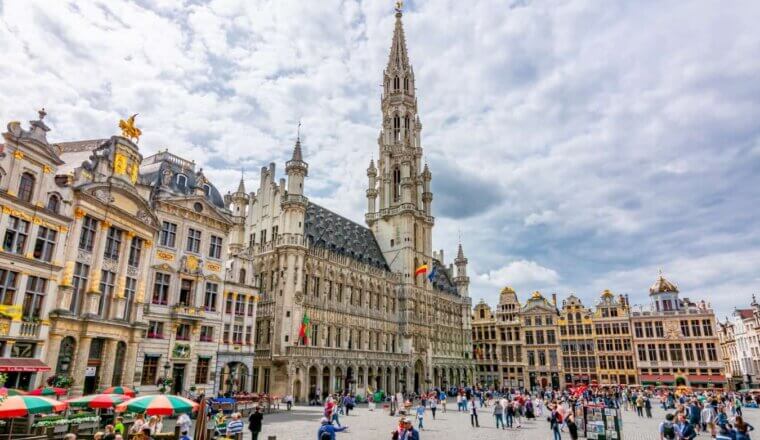
The Best Things to Do and See in Brussels
Get my best stuff sent straight to you, pin it on pinterest.
- Where To Stay
- Transportation
- Booking Resources
- Related Blogs
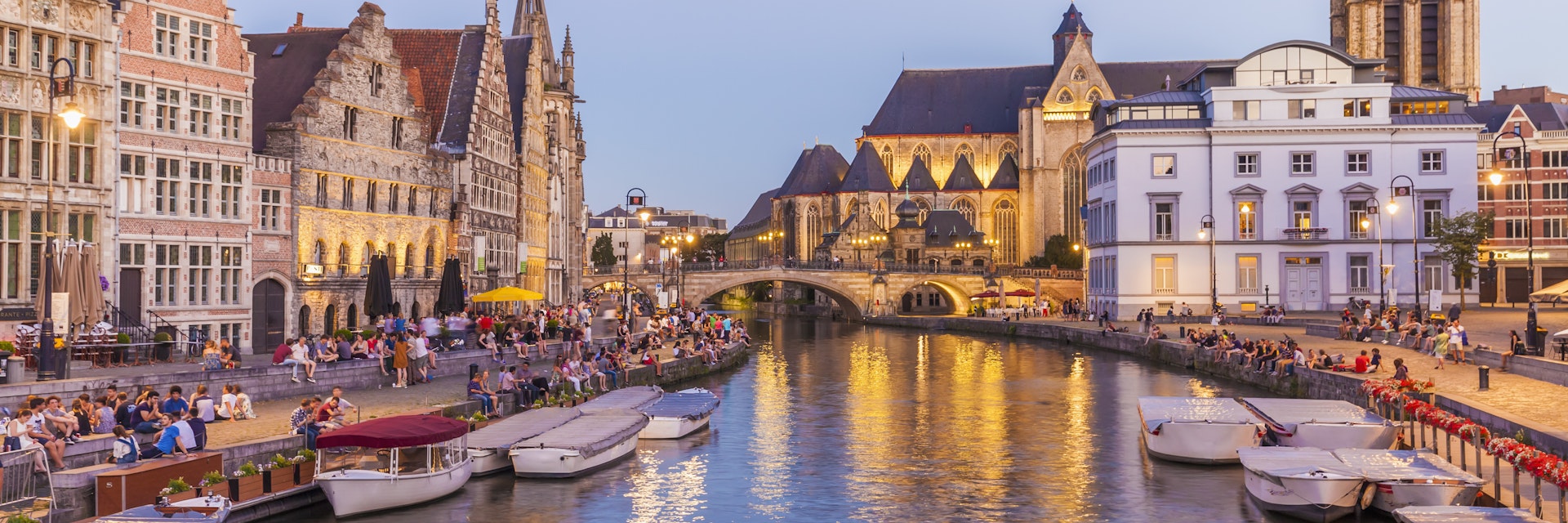
©Westend61/Getty Images
Bruges canals, Antwerp fashion, decadent chocolate, mussels and chips, belfries and castles, crazy carnivals, Tintin and Trappist beers... how could anyone call Belgium boring?!
Best Time to Visit
Best places to visit, attractions, must-see attractions.
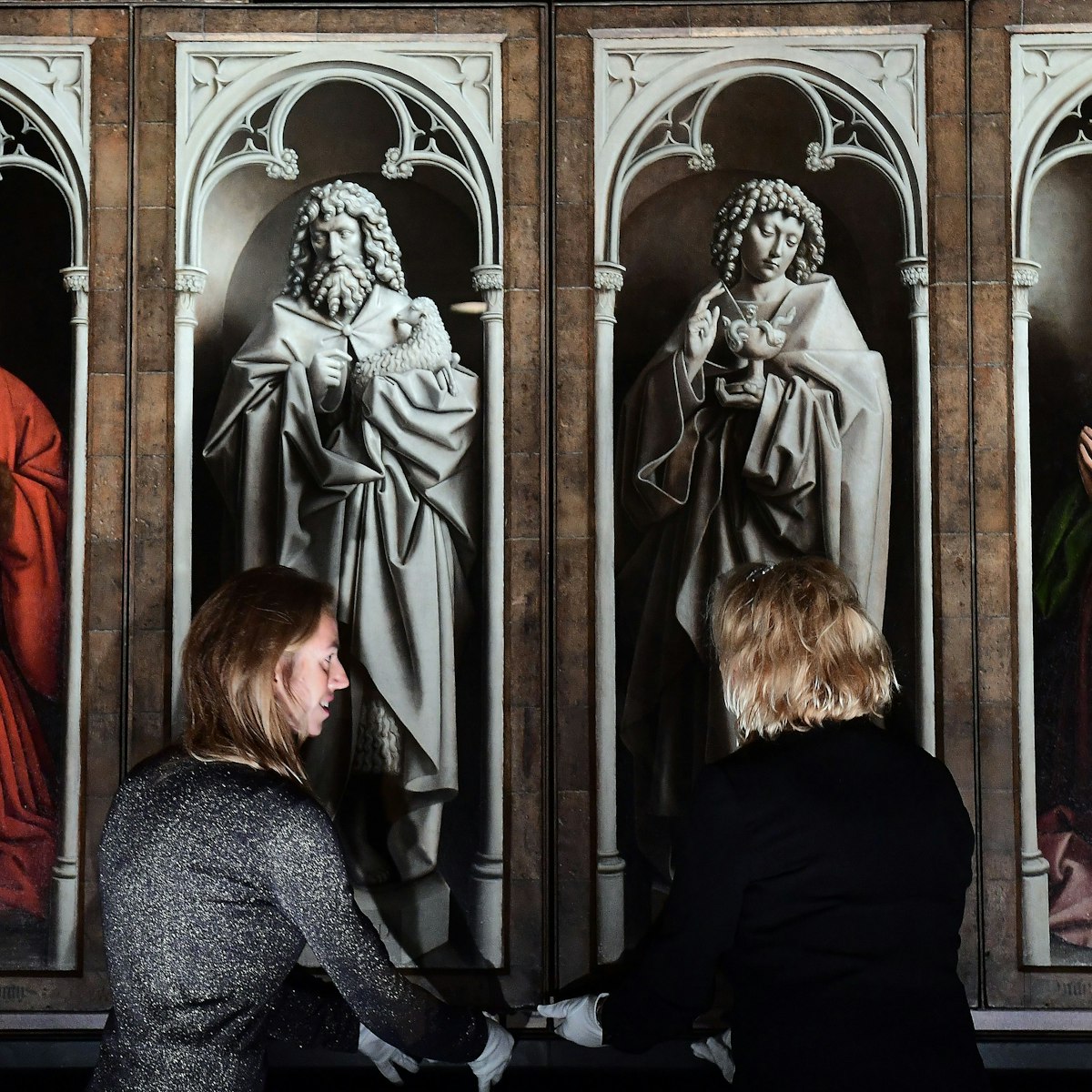
The Adoration of the Mystic Lamb
Art enthusiasts swarm the Sint-Baafskathedraal to glimpse The Adoration of the Mystic Lamb (De Aanbidding van het Lams God), a lavish representation of…
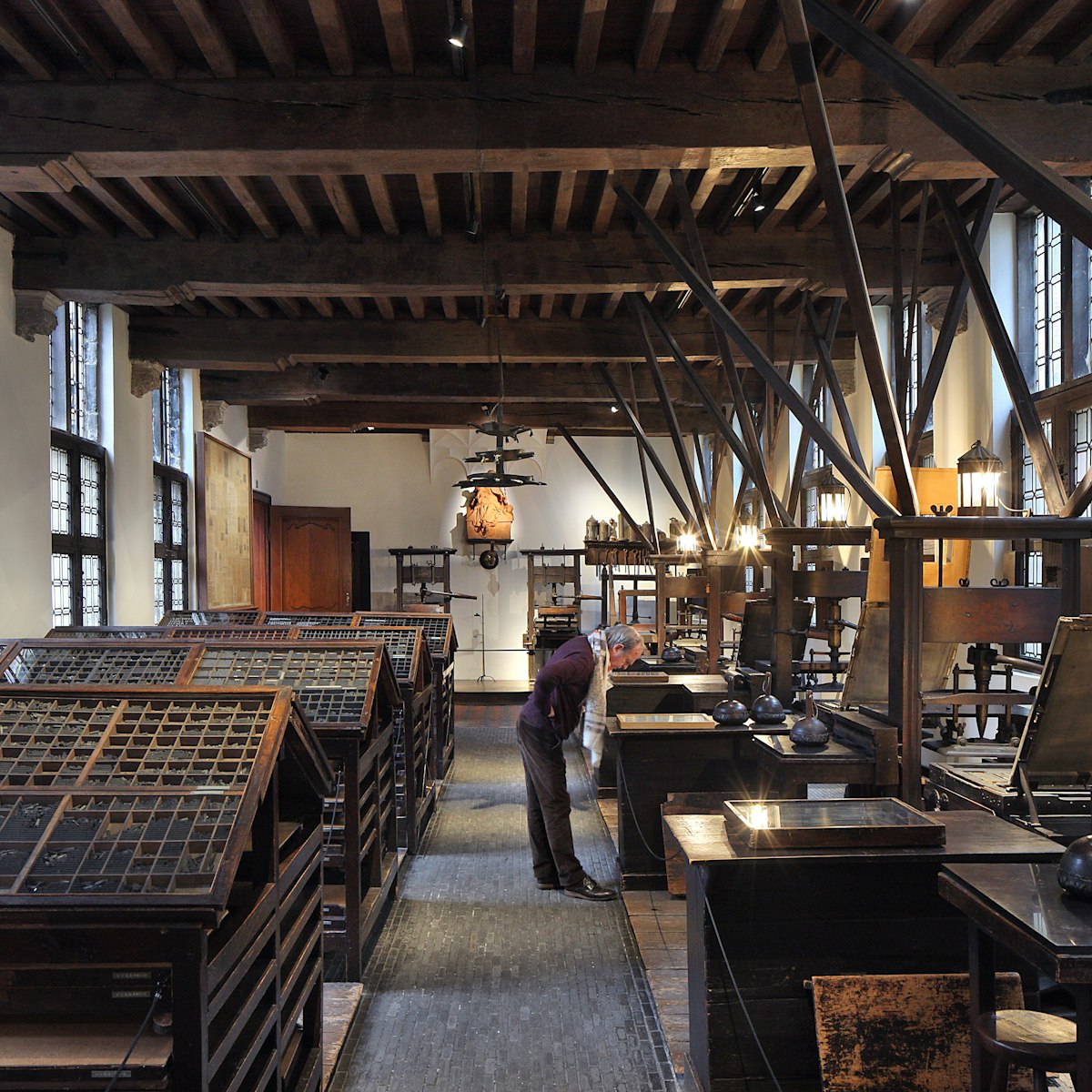
Museum Plantin-Moretus
The medieval building and 1622 courtyard garden alone would be worth a visit, but it's the world's oldest printing press, priceless manuscripts and…
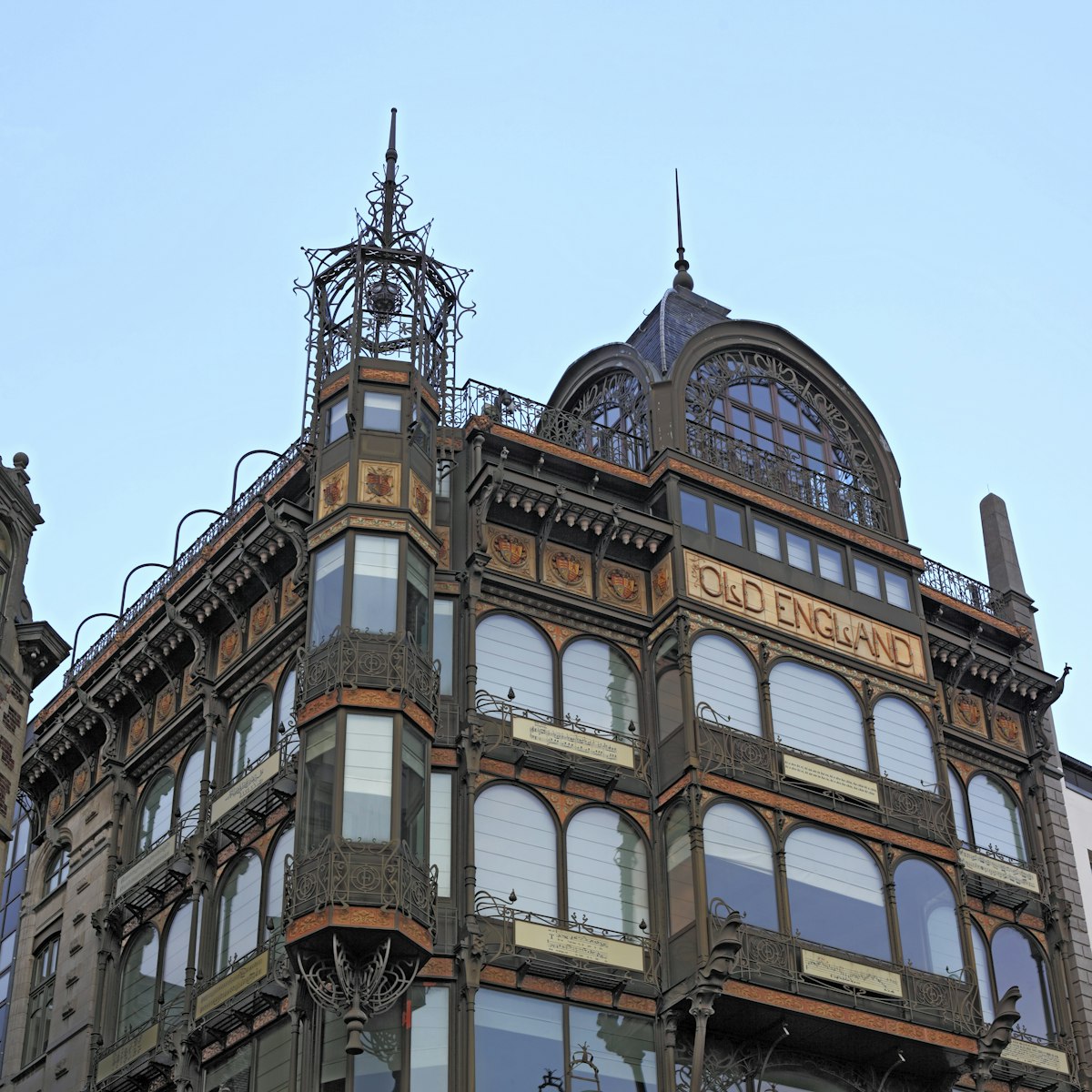
Old England Building
This 1899 former department store is an art nouveau showpiece with a black facade aswirl with wrought iron and arched windows. The building contains the…
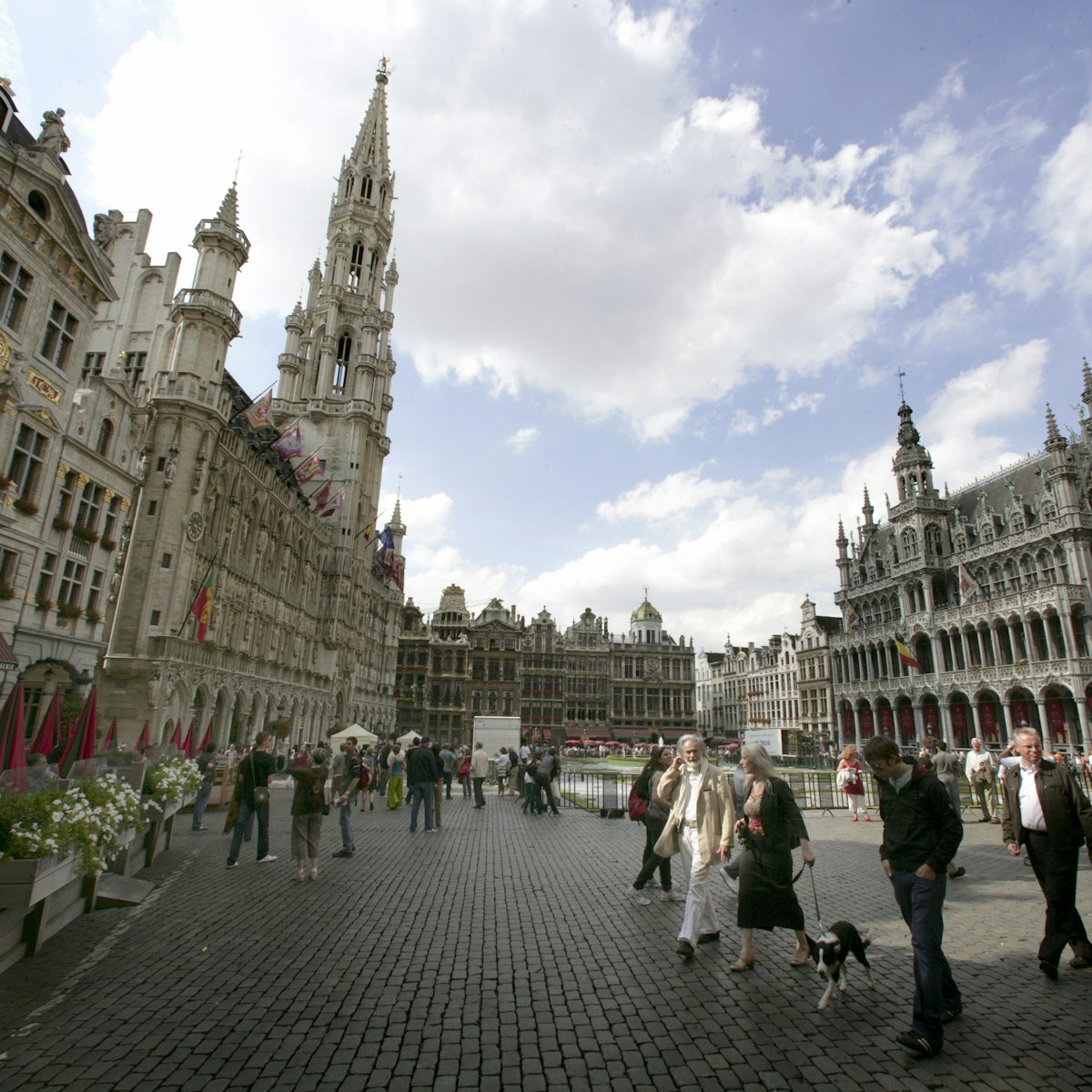
Grand Place
Brussels’ magnificent Grand Place is one of the world’s most unforgettable urban ensembles. Oddly hidden, the enclosed cobblestone square is only revealed…
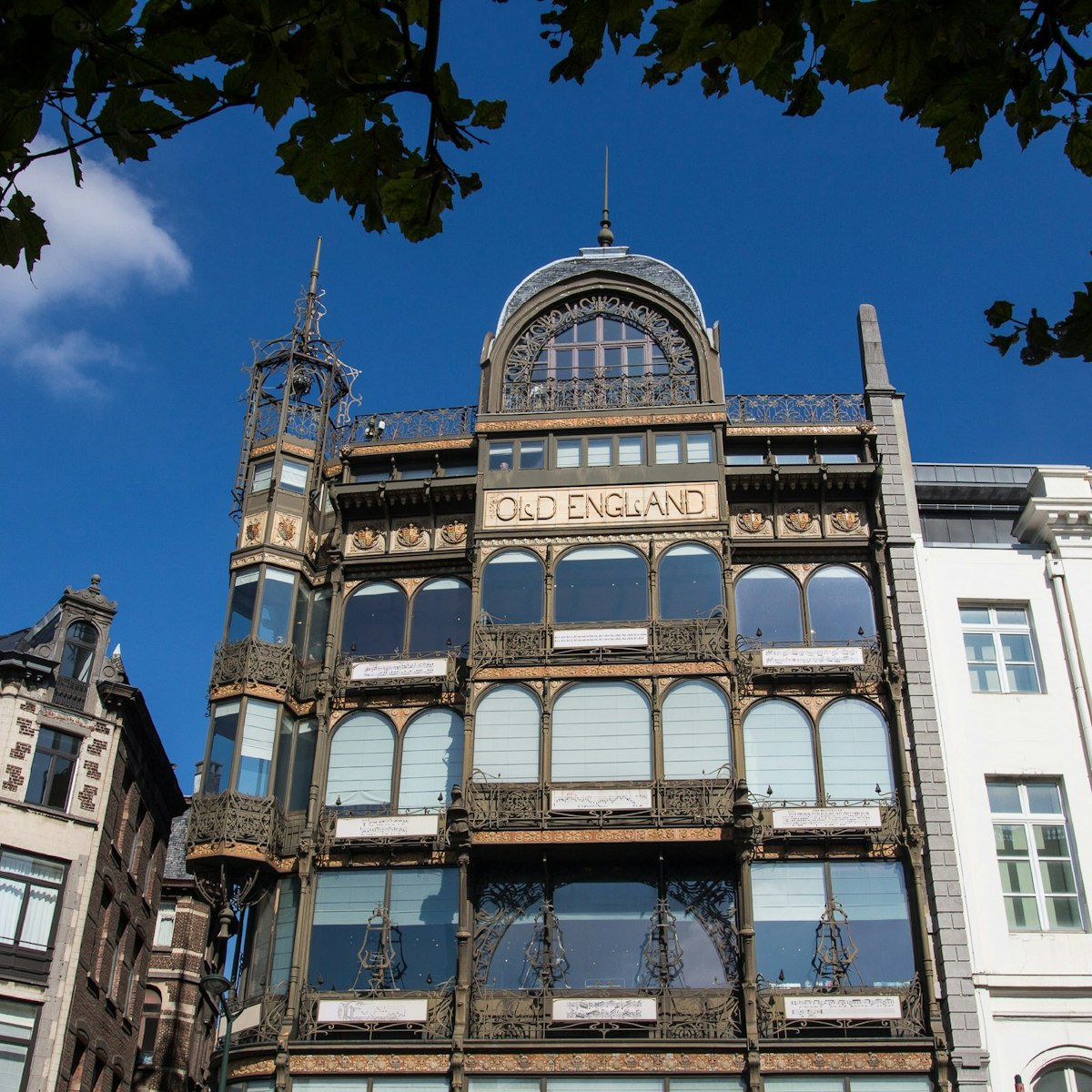
Strap on a pair of headphones, then step on the automated floor panels in front of the precious instruments (including world instruments and Adolphe Sax’s…
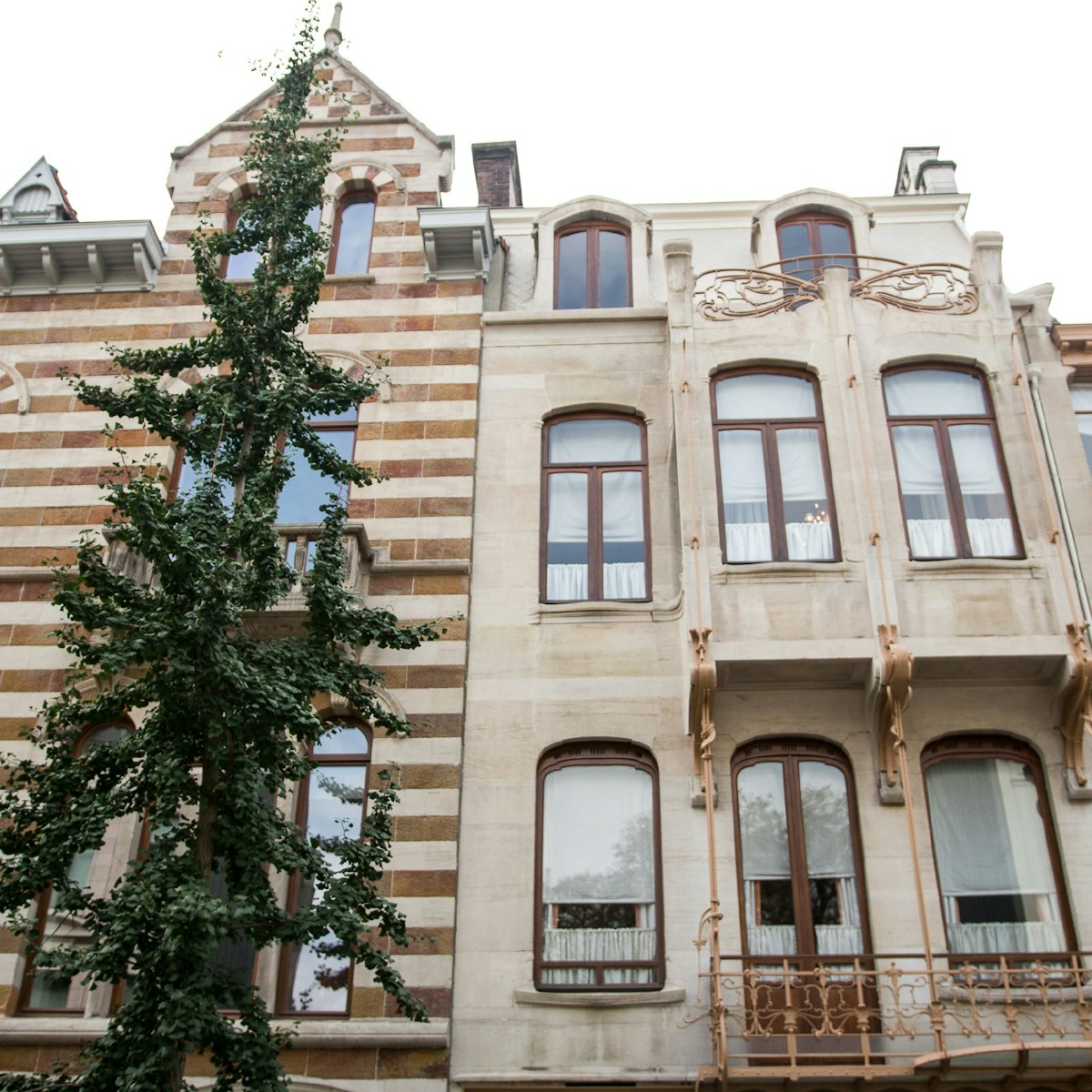
Musée Horta
The typically austere exterior doesn’t give much away, but Victor Horta’s former home (designed and built 1898–1901) is an art nouveau jewel. The…
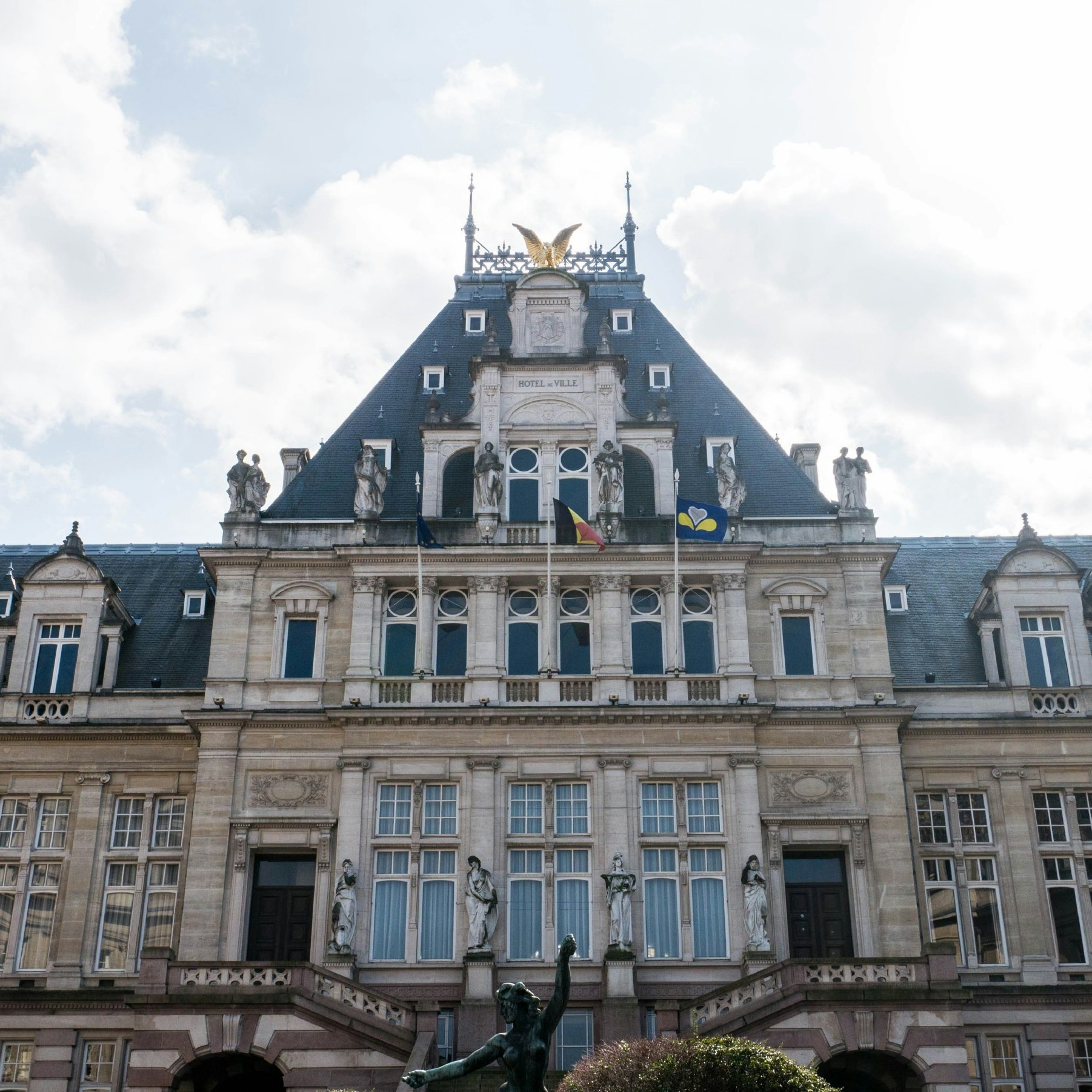
St-Gilles Town Hall
One of Brussels’ overlooked architectural wonders, this splendid Napoleon III–style palace

Pairi Daiza
Set on the grounds of a former Cistercian Abbey, this 65-hectare park is home to more than 5000 animals (including pandas, koalas, gorillas and lemurs)…
Top picks from our travel experts
The 15 best things to do in belgium, from chocolate to comics to castles.
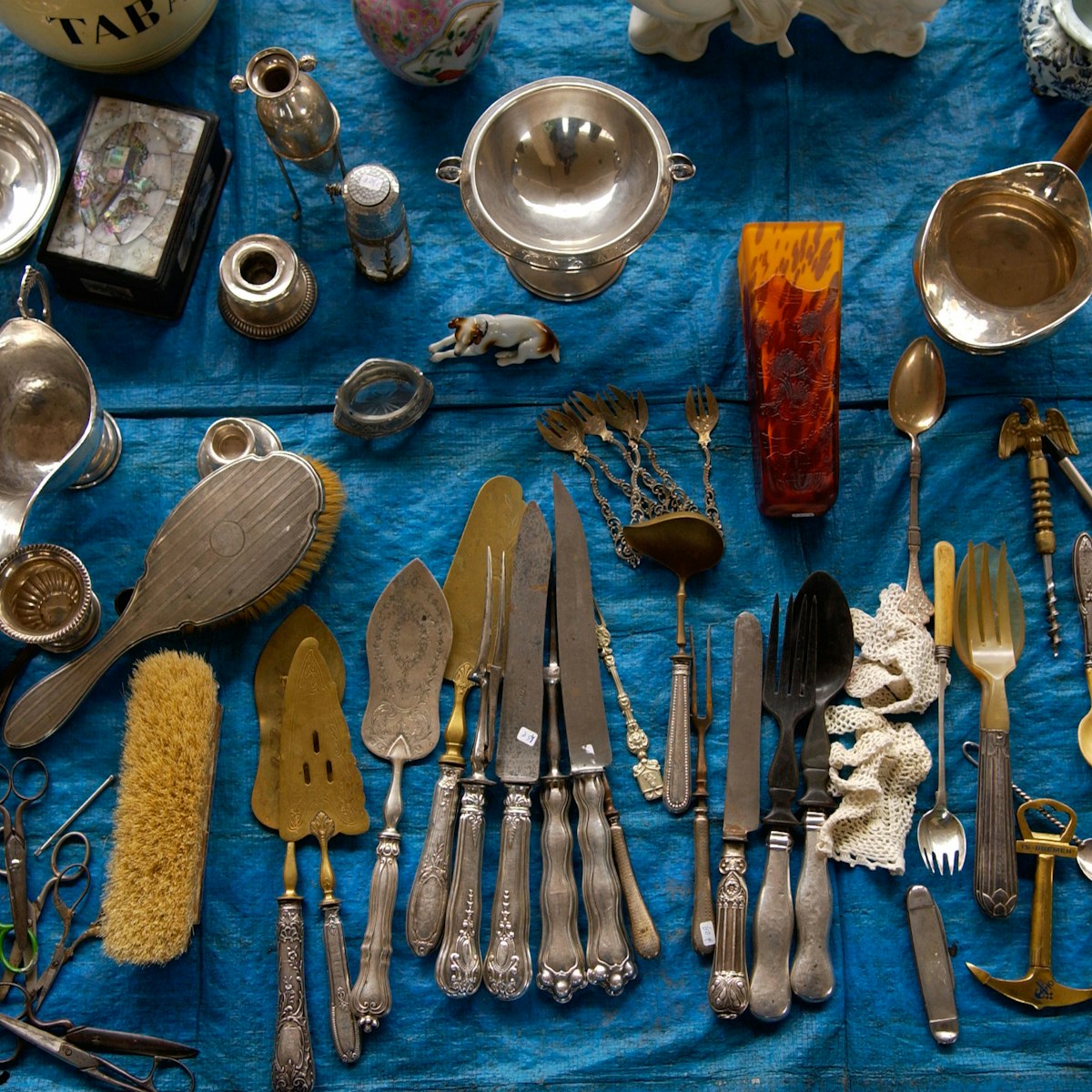
Place du Jeu-de-Balle Flea Market
The quintessential Marolles experience is haggling at this chaotic flea market, established in 1919. Weekends see it at its liveliest, but for the best…

Pierre Marcolini
Rare chocolate beans, experimental flavours (eg tea) and designer black-box packaging make Marcolini’s pralines Belgium’s hippest and most expensive.

Château de Bouillon
The Ardennes
Slouching like a great grey dragon high on Bouillon's central rocky ridge, Belgium’s finest feudal castle-ruin harks back to AD 988, but it's especially…

The heart of ancient Bruges, the old market square is lined with pavement cafes beneath step-gabled facades. The buildings aren't always quite as medieval…
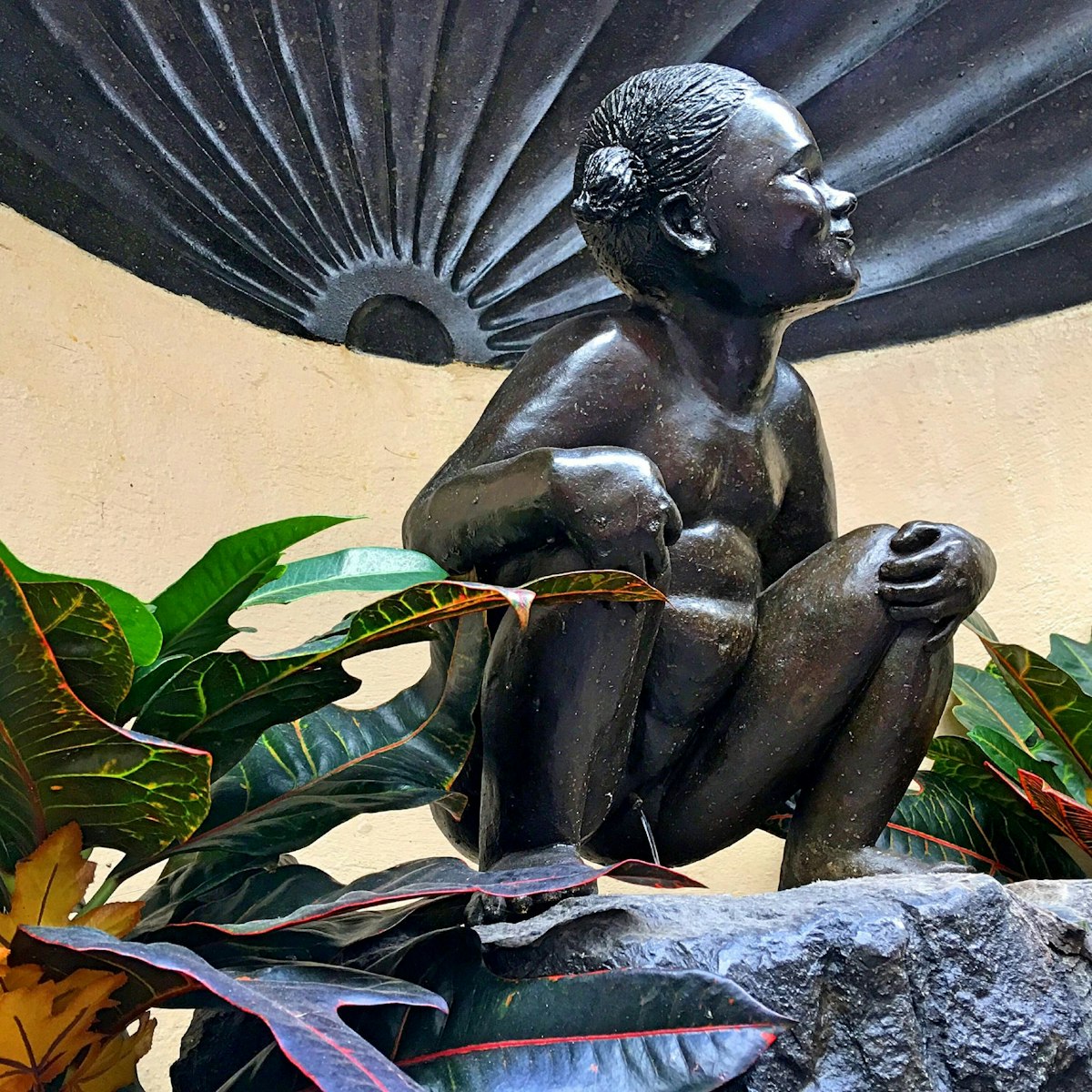
Jeanneke Pis
Squatting just off Rue des Bouchers, this pigtailed female counterpart of Manneken Pis is the work of sculptor Denis Adrien Debouvrie, who installed her…
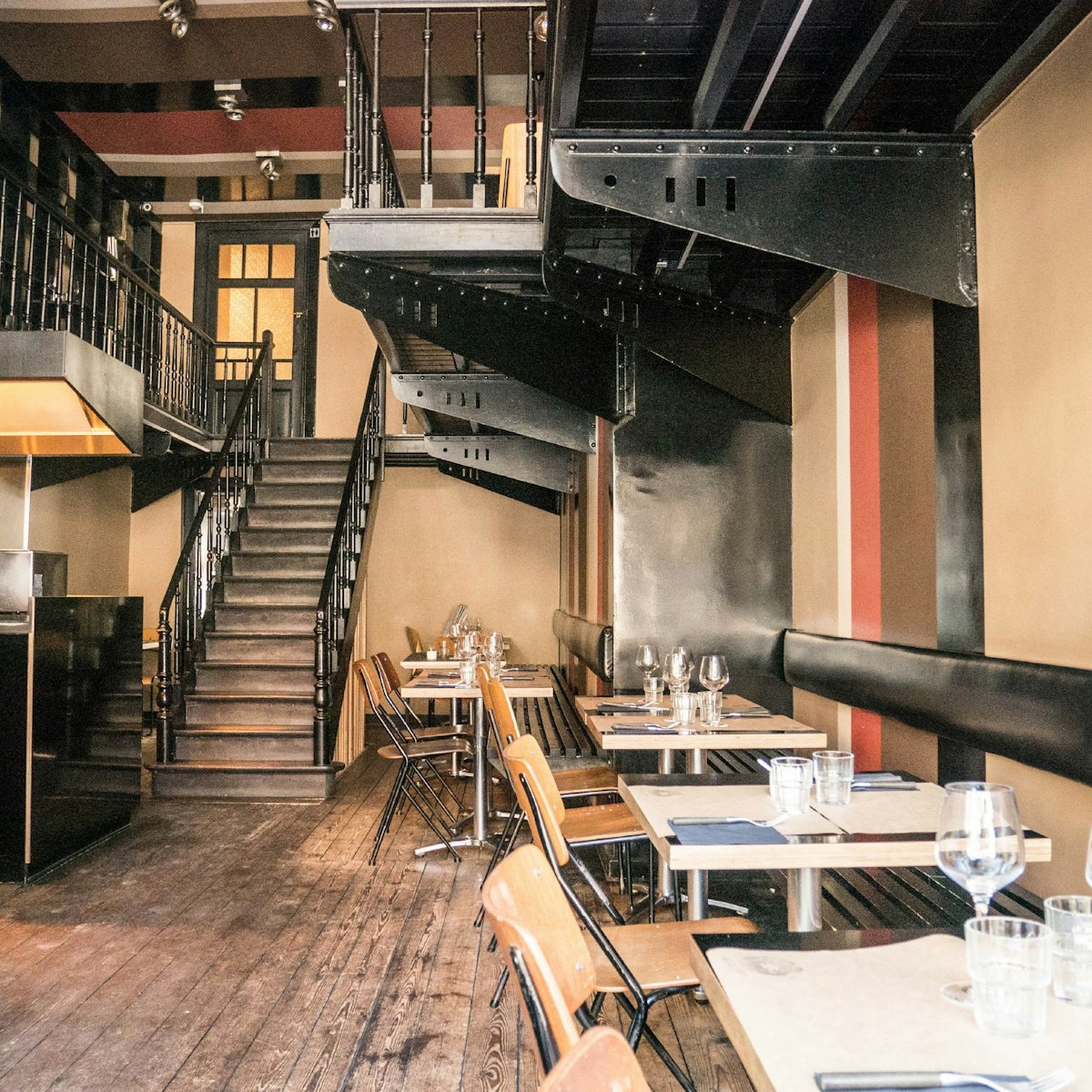
Café des Spoors
Mushroom fans will be in heaven at this homage to funghi: dine on black chanterelle, black trumpet, truffles and more. The dark-coloured decor mimics the…
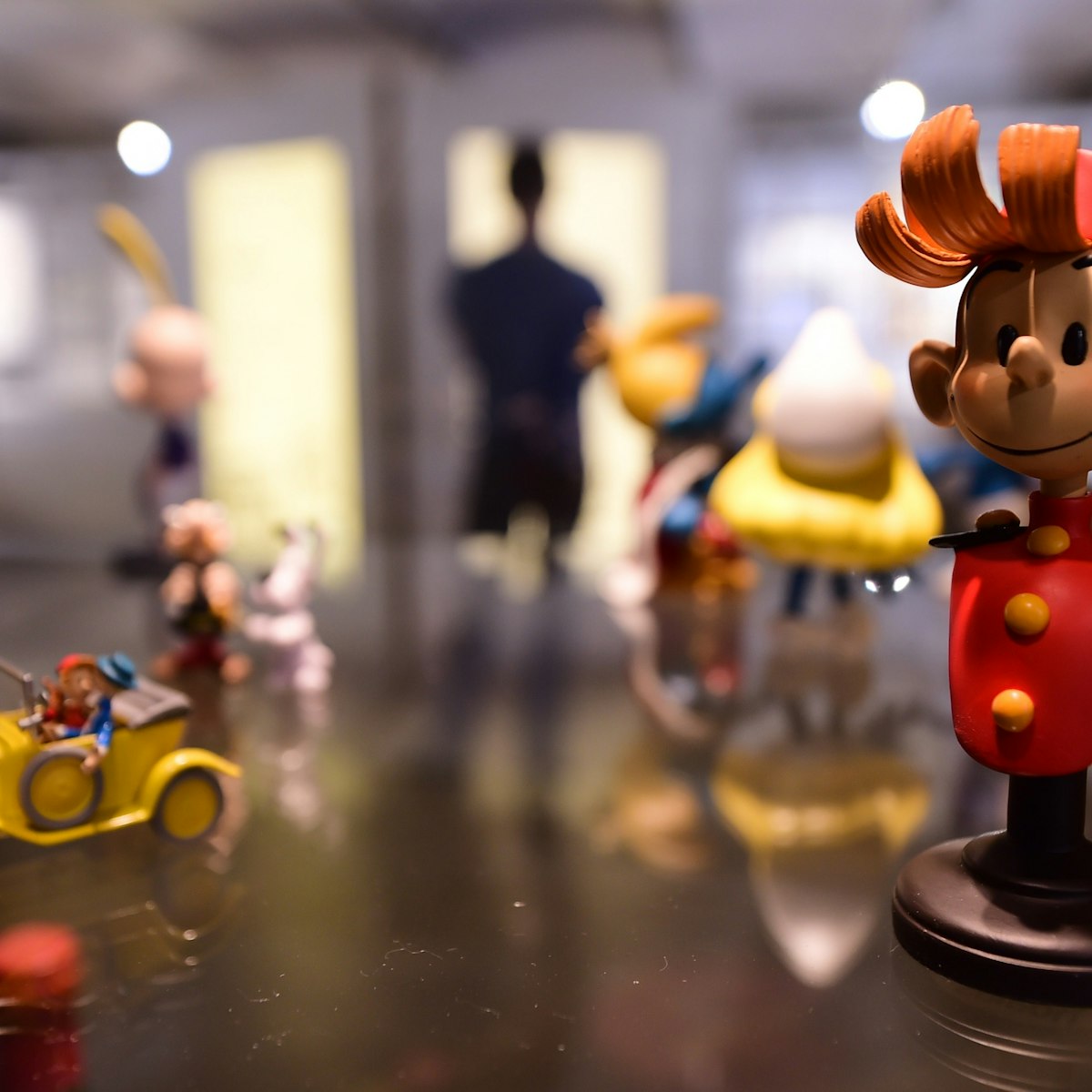
Centre Belge de la Bande Dessinée
This centre offers a definitive and enjoyable overview of the country’s vibrant comic-strip culture. Even if you’re not excited by the ‘ninth art’, do…
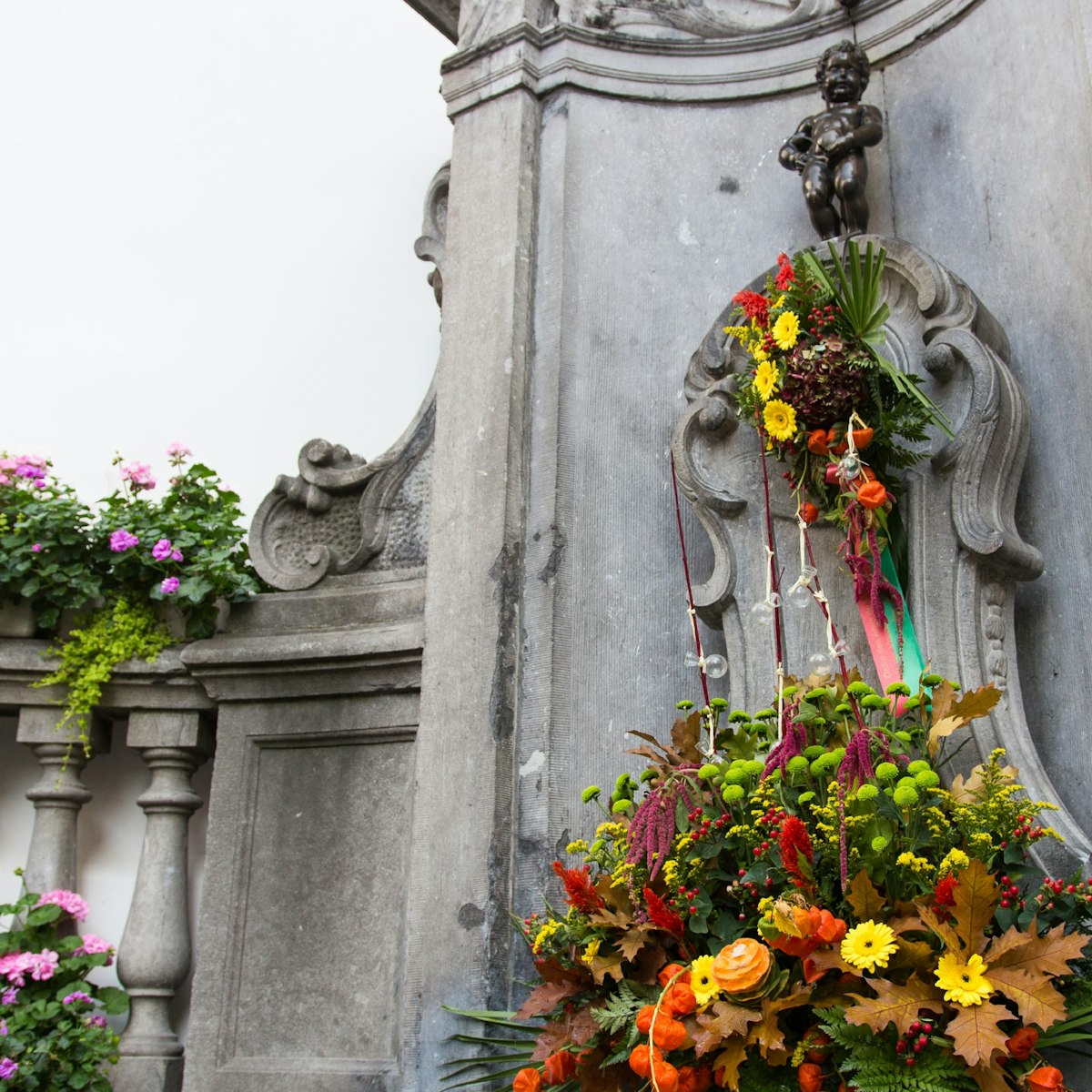
Manneken Pis
Rue Charles Buls – Brussels’ most unashamedly touristy shopping street, lined with chocolate and trinket shops – leads the hordes three blocks from the…
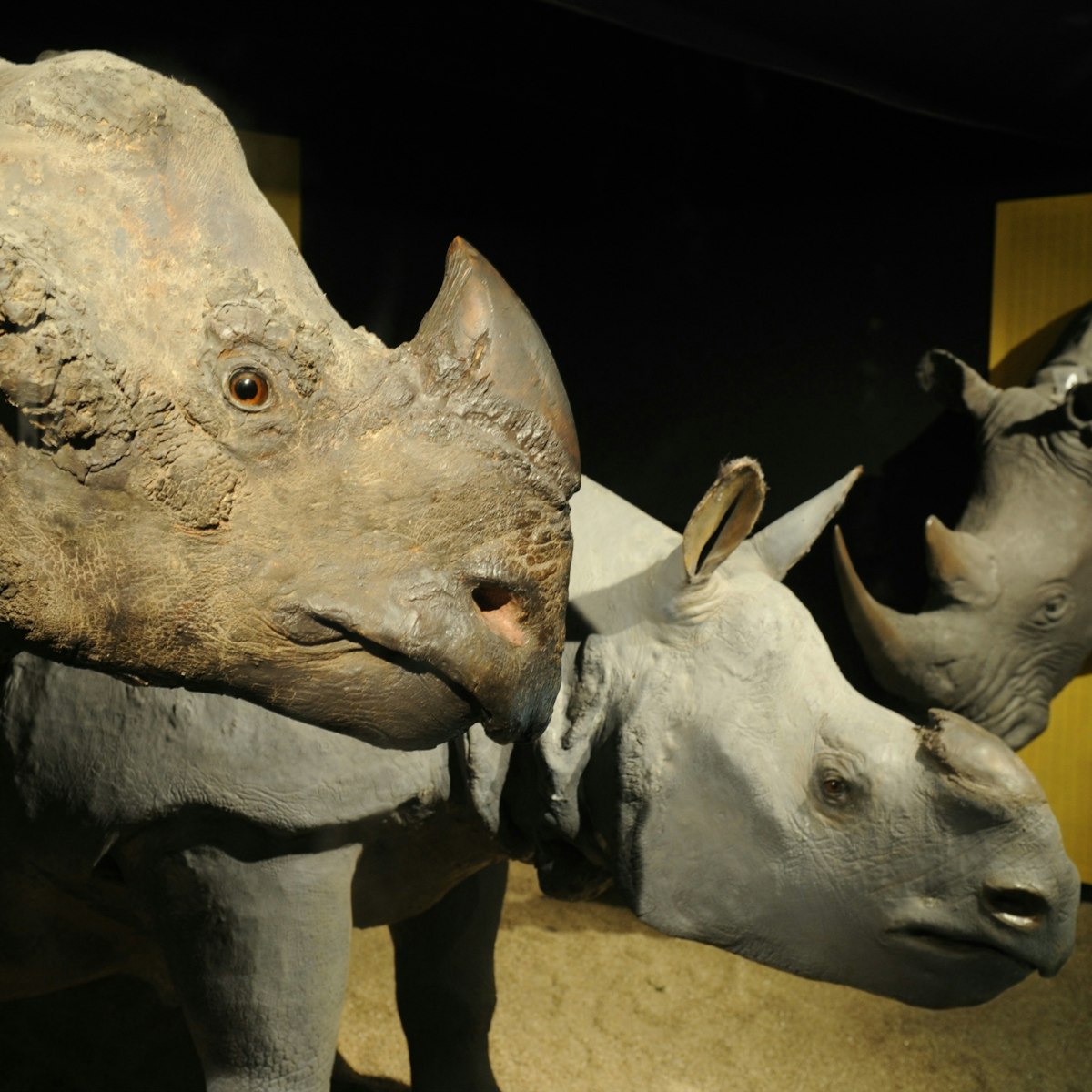
Institut des Sciences Naturelles
Thought-provoking and highly interactive, this museum has far more than the usual selection of stuffed animals. But the undoubted highlight is a unique …
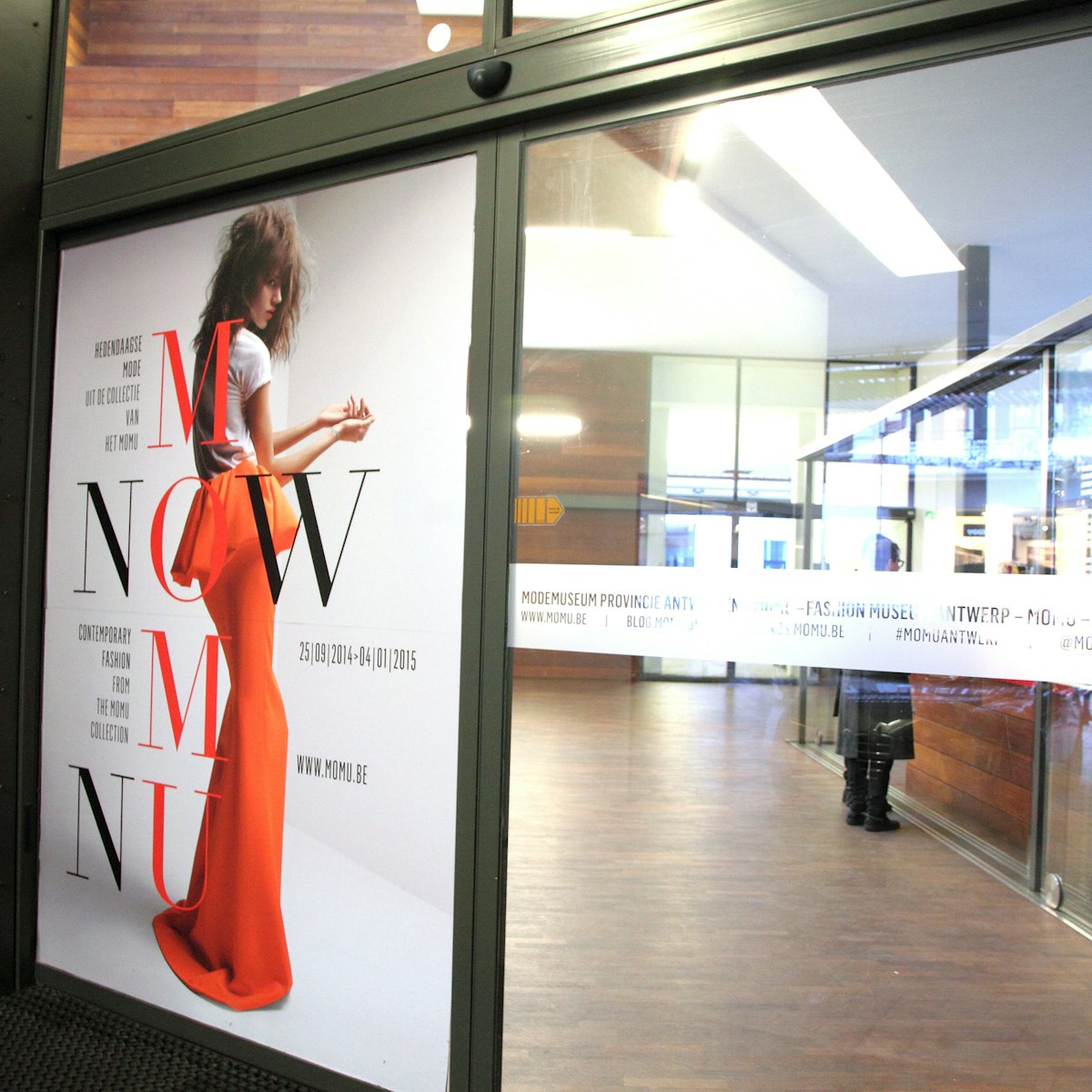
Closed for renovation until late 2020, Antwerp's fashion museum has a rich avant-garde collection and typically produces exhibitions highlighting the…

Délirium Café
This café's barrel tables, beer-tray ceilings and over 2000 world beers were already impressive. Now they’ve added a rum garden, a tap house and the…
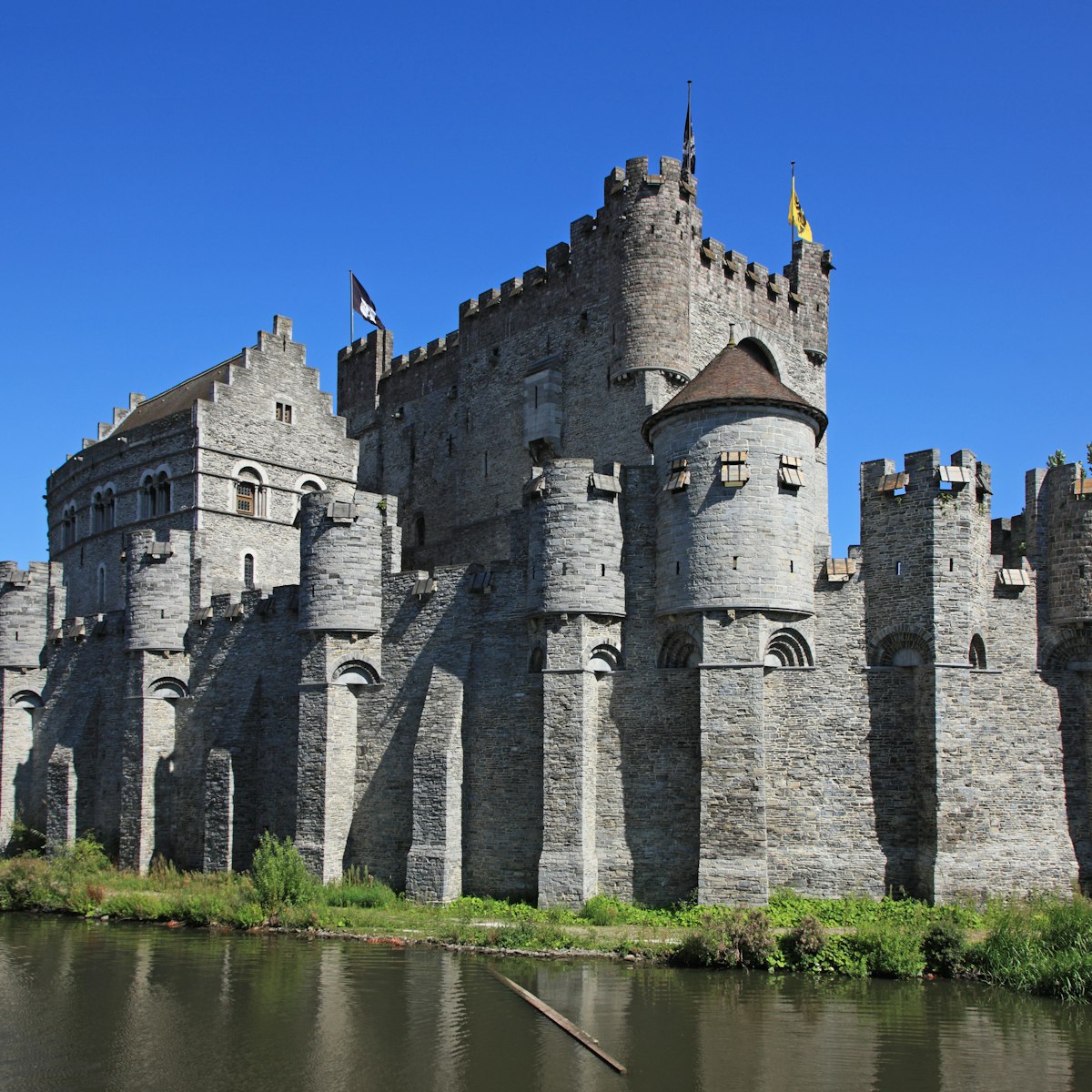
Gravensteen
Flanders’ quintessential 12th-century stone castle comes complete with moat, turrets and arrow slits. It’s all the more remarkable considering that during…
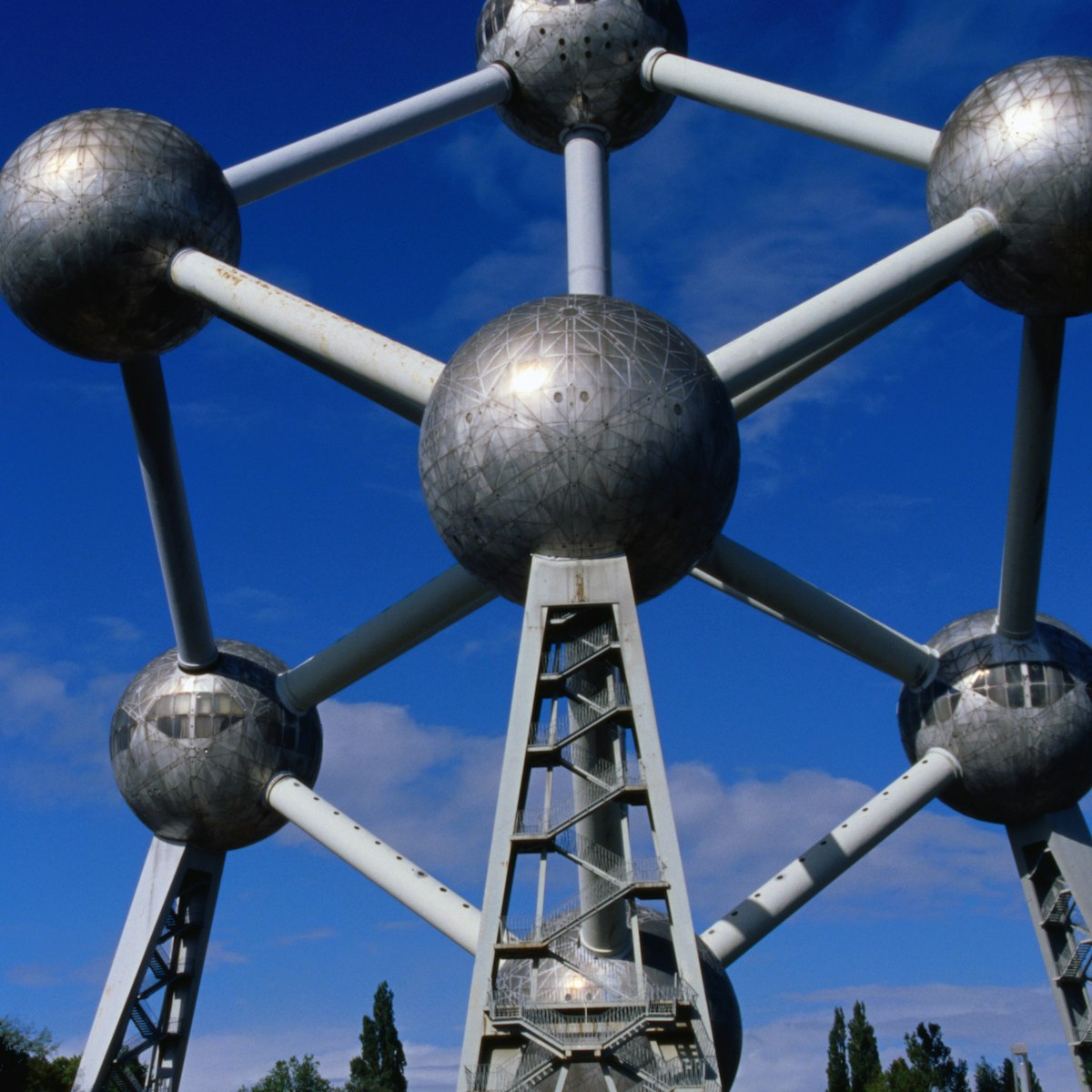
The space-age Atomium looms 102m over north Brussels’ suburbia, resembling a steel alien from a '60s Hollywood movie. It consists of nine house-sized…

Mini Europe
Want to fool your friends that you saw all of Europe? Easy. Just photograph the dozens of 1:25-scale models of the continent’s top monuments at Mini…

In Flanders Fields Museum
No museum gives a more balanced yet moving and user-friendly introduction to WWI history. It’s a multisensory experience combining soundscapes, videos,…

Belgium’s original – established in 1857. This stunning flagship shop has stained-glass windows and sumptuous displays. It is the home of the praline, a…
Planning Tools
Expert guidance to help you plan your trip.
Best Things to Do
There’s more to Belgium that its world-famous beer, chocolate and fries (though you shouldn’t miss any of those). Enjoy fine art, canal tours and more.
Things to Know
Despite being one of the smallest countries in Europe, Belgium has plenty to offer every kind of traveler. Try these tips for making the most of your trip.
Transportation
With trains, cycle paths and a panoramic tram running along the coast, getting around Belgium is a breeze. Here's all you need to know about how to do it.
Visa Requirements
Are you dreaming of eating hot frites in Brussels or wandering Ghent’s canals? The good news is visas are easy to obtain. Here's what you need to know.
Money and Costs
From mayonnaise-smothered fries to flea-market buys, here's how to make your euros stretch a bit further in Belgium.
Best Road Trips
Despite its small size, Belgium is a road tripper’s dream, with distinct itineraries for nature-lovers, spa-goers, even Bonaparte-era history buffs.
Latest stories from Belgium
Filter by interest:
- All Interests
- Adventure Travel
- Art & Culture
- Beaches, Coasts & Islands
- Food & Drink
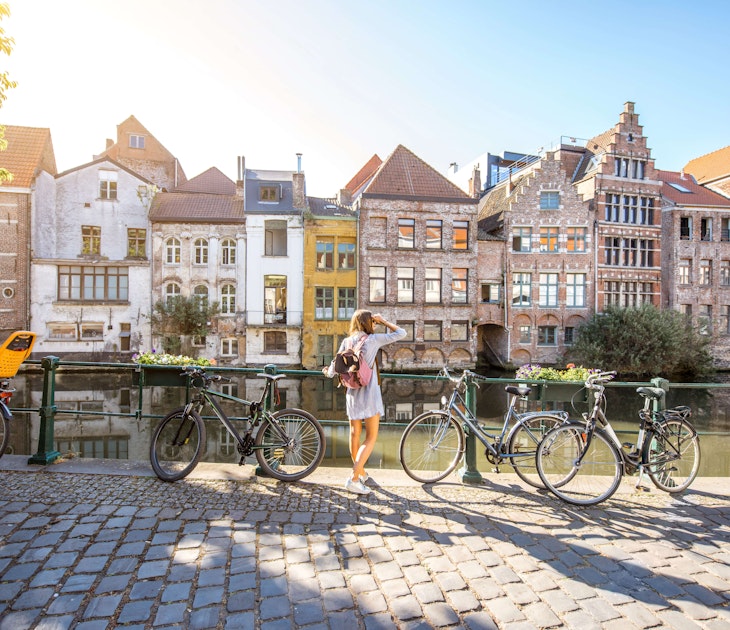
Tips & Advice
Dec 4, 2023 • 8 min read
From cultured city breaks in Brussels or Bruges to relaxing in hot springs or on the beach, here are the best places to visit in Belgium.

Jun 4, 2022 • 7 min read

Jun 2, 2022 • 8 min read
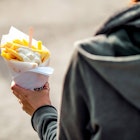
May 31, 2022 • 6 min read

May 29, 2022 • 6 min read
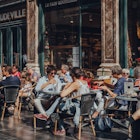
May 26, 2022 • 10 min read
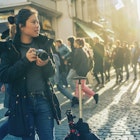
May 23, 2022 • 7 min read
May 21, 2022 • 6 min read
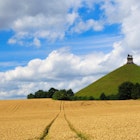
May 18, 2022 • 8 min read
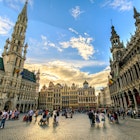
May 15, 2022 • 4 min read
in partnership with getyourguide
Book popular activities in Belgium
Purchase our award-winning guidebooks.
Get to the heart of Belgium with one of our in-depth, award-winning guidebooks, covering maps, itineraries, and expert guidance.
Belgium and beyond

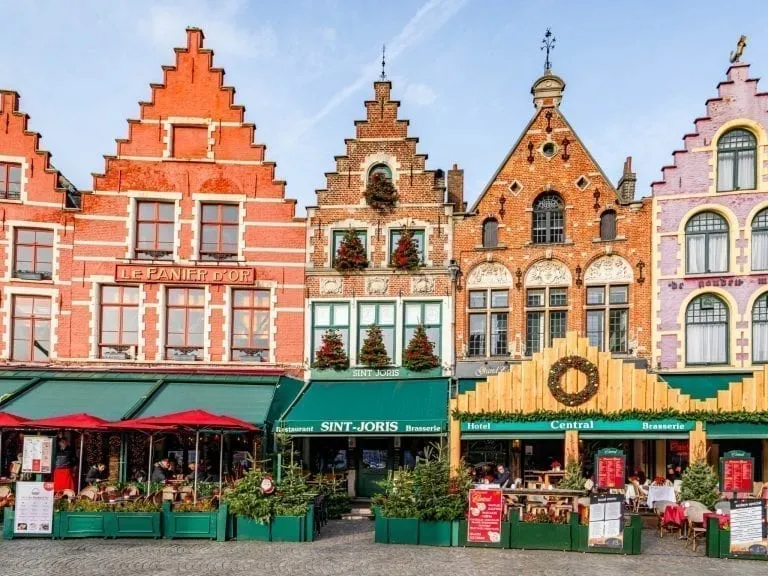
The Ultimate 3 Days in Belgium Itinerary
Nestled between the Netherlands to the north and France to the south, tiny, beautiful Belgium often gets overlooked during trip planning–but that’s too bad , because even 3 days in Belgium is an absolute delight .
Due to Belgium’s small size, it’s easy to see fairly quickly, but it packs a punch!
Belgium is home to one of the most beautiful canal cities in Europe, stunning architecture, a riveting history, and, of course, delicious Belgian food–most famously Belgian chocolate, Belgian waffles, Belgian beer, and Belgian frites (and don’t make the mistake of calling them French fries here!).
With a well-planned 3 day Belgium itinerary, you can get a delightful overview of this small but lovely country during a short trip to Belgium.
Here’s where to go and what to do with 3 days in Belgium.
Table of Contents
The Perfect 3 Day Belgium Itinerary
Where to stay for a few days in belgium, have 4 or 5 days in belgium, getting around during 3 days in belgium, what to pack for a trip to belgium, read more about visiting belgium (and beyond), your belgium itinerary map.
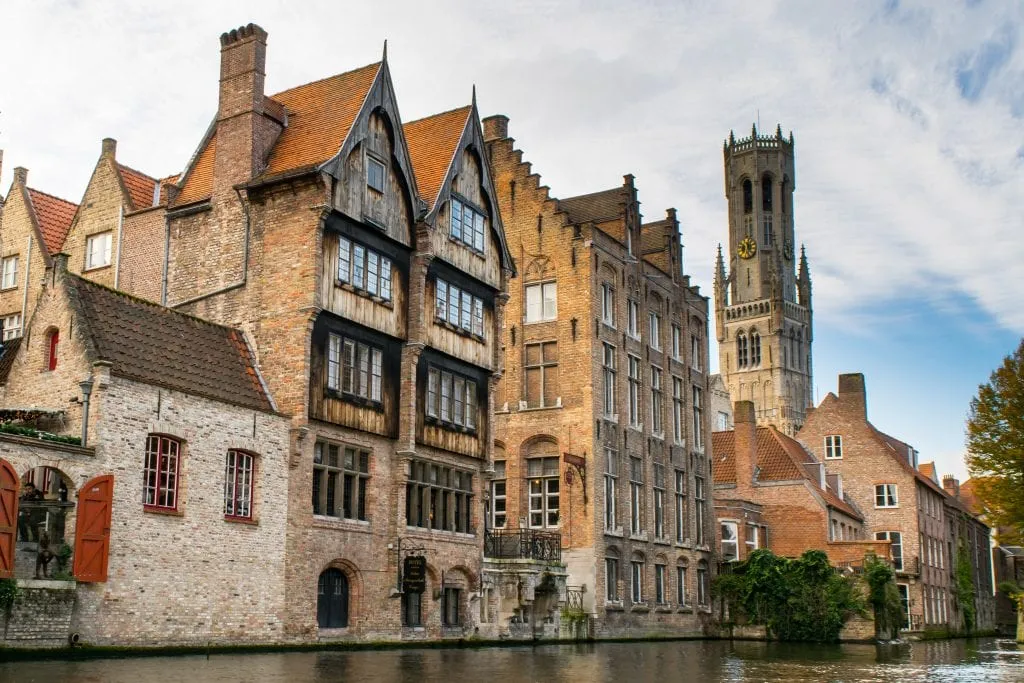
Some links in this post may be affiliate links. If you make a purchase through one of these links, we may earn a small commission at no extra cost to you. Please see our disclosure policy for more detail.
Day 1 in Belgium: Bruges
Beautiful Bruges is known as one of the loveliest small cities in Europe, and, if you ask some residents, as the “Venice of the North”.
It’s no Venice , of course, but it is a gorgeous canal city in its own right.
E ven with its touristy reputation and intense crowds during peak season, Bruges is our favorite place in the country and the perfect place to start your 3 day Belgium itinerary.
Here are some things to be sure to do in Bruges!
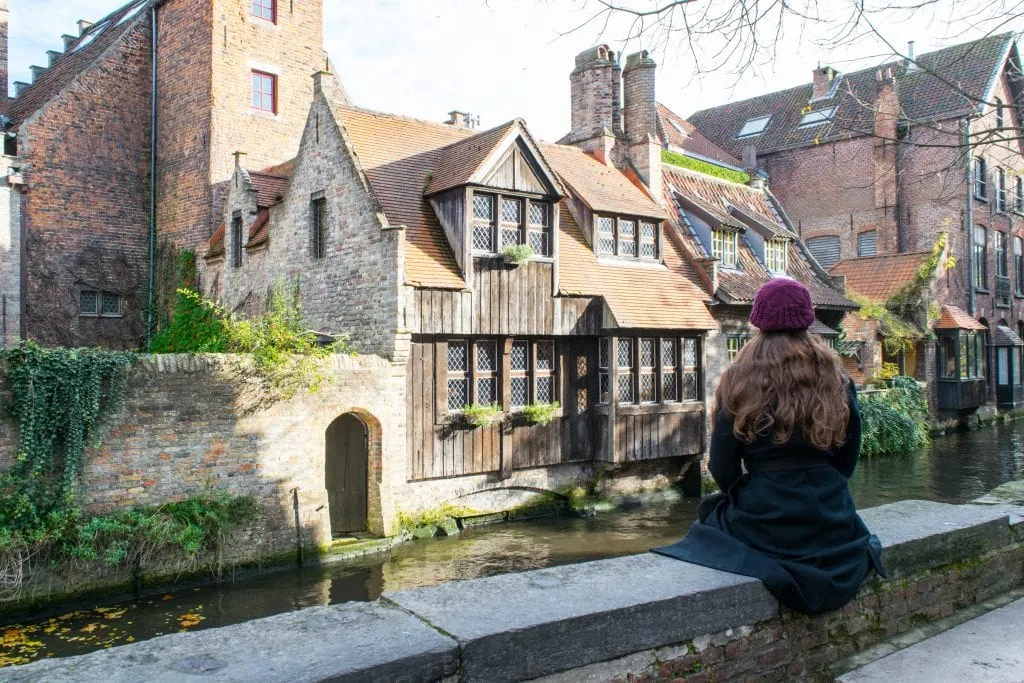
Take a canal cruise.
Bruges’ canals are absolutely gorgeous, and like most canals, they’re best experienced from the water.
Canal cruises in Bruges are affordable, and due to the small size of the canals, take place in small boats that are peaceful to ride in–nothing like the giant barge-like contraptions you’ll commonly find in Amsterdam .
We loved our canal cruise and walked away glad we had chosen to start our own first trip to Belgium with one.
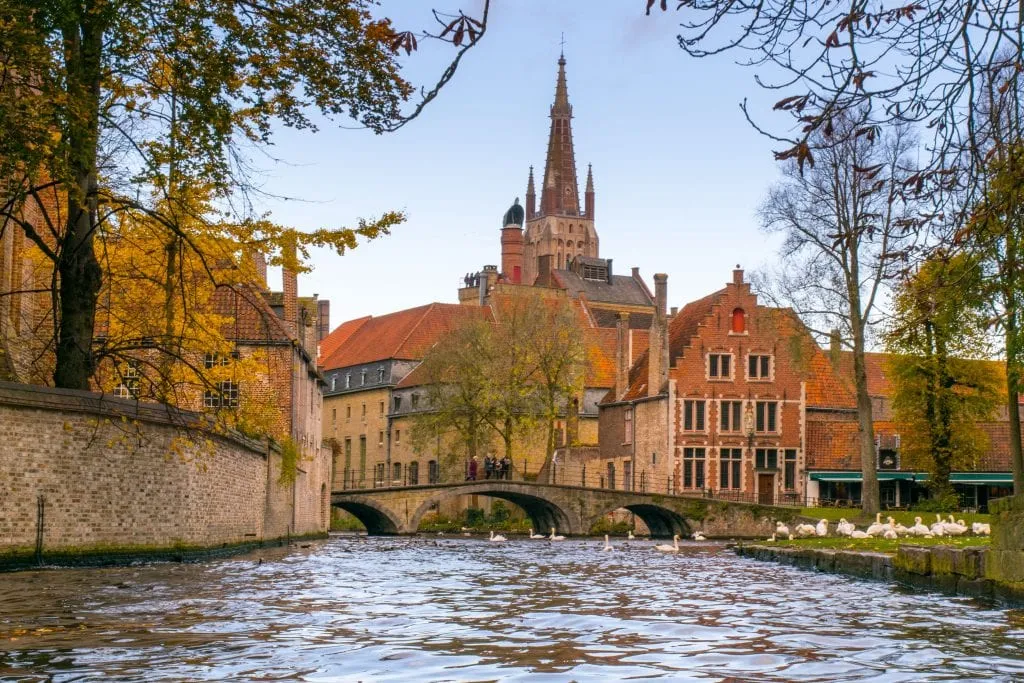
Climb the Belfry of Bruges.
Want beautiful views over the city?
For 15 Euro and a 366-step climb, you can have the best of the best at the Belfry of Bruges.
If you’re trying to snap photos of the Belfry itself from the foot of the tower, though, don’t be surprised if you can’t get the picture quite right.
T he belfry actually leans to the east!
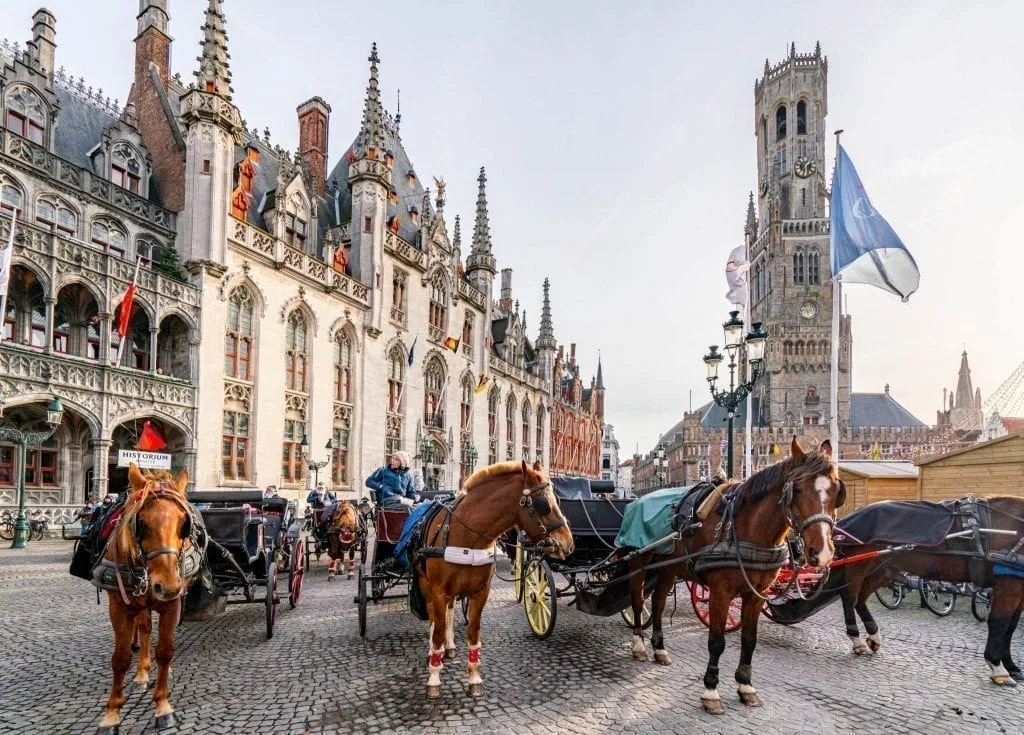
Meander through Bruges’ beautiful streets.
Bruges is ridiculously beautiful, and wandering aimlessly through it is a fantastic way to spend an afternoon.
A few things to keep an eye out for are the Basilica of Holy Blood, Bruges’ Town Hall, Bruges’ windmills, filming locations from the movie In Bruges (if you need some travel inspiration before your trip to Belgium, give it a watch!), and lovely Minnewater Lake.
Be sure not to miss the Church of Our Lady, the peaceful Bonifacius Bridge, or the photogenic Rosary Quay as you explore, either.
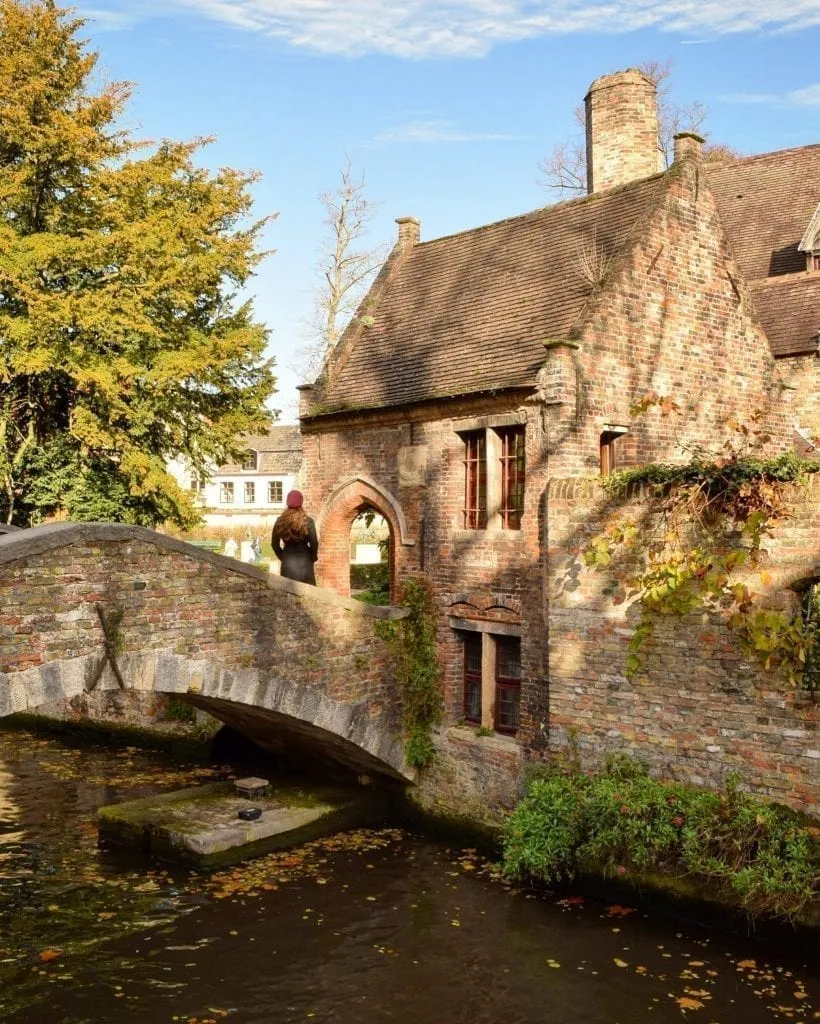
Along the way, there are so many quiet corners and lovely canal views to find, so keep your camera out as you go!
While you can absolutely enjoy the best of these sites independently with one day in Bruges, if you want to be sure not to miss a thing, this combination canal cruise and walking tour is a great way to get acquainted with the city.
Book your walking tour of Bruges today!
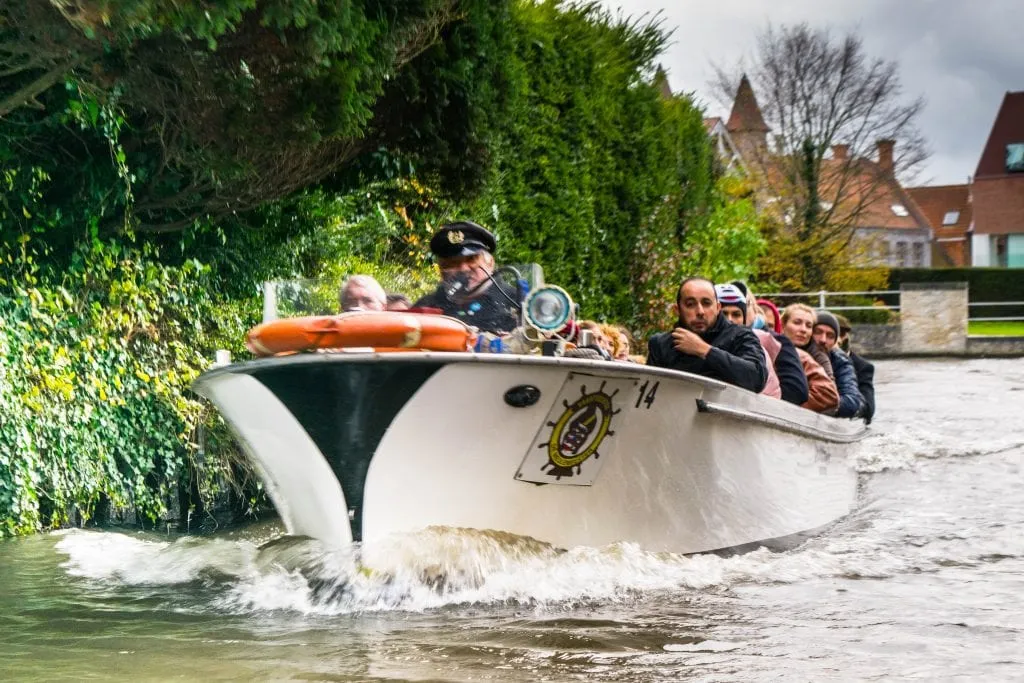
Day 2 in Belgium: Ghent
Full of canals, beautiful, quiet corners, and street art, Ghent is a student town at heart, often touted as a (slightly) more affordable and less-touristy alternative to Bruges.
The two cities are quite similar on the surface, but it’s true that Ghent has more of an offbeat vibe as compared to Bruges’ Disneyland-like picturesque beauty.
Here are the best things to do with one day in Ghent!
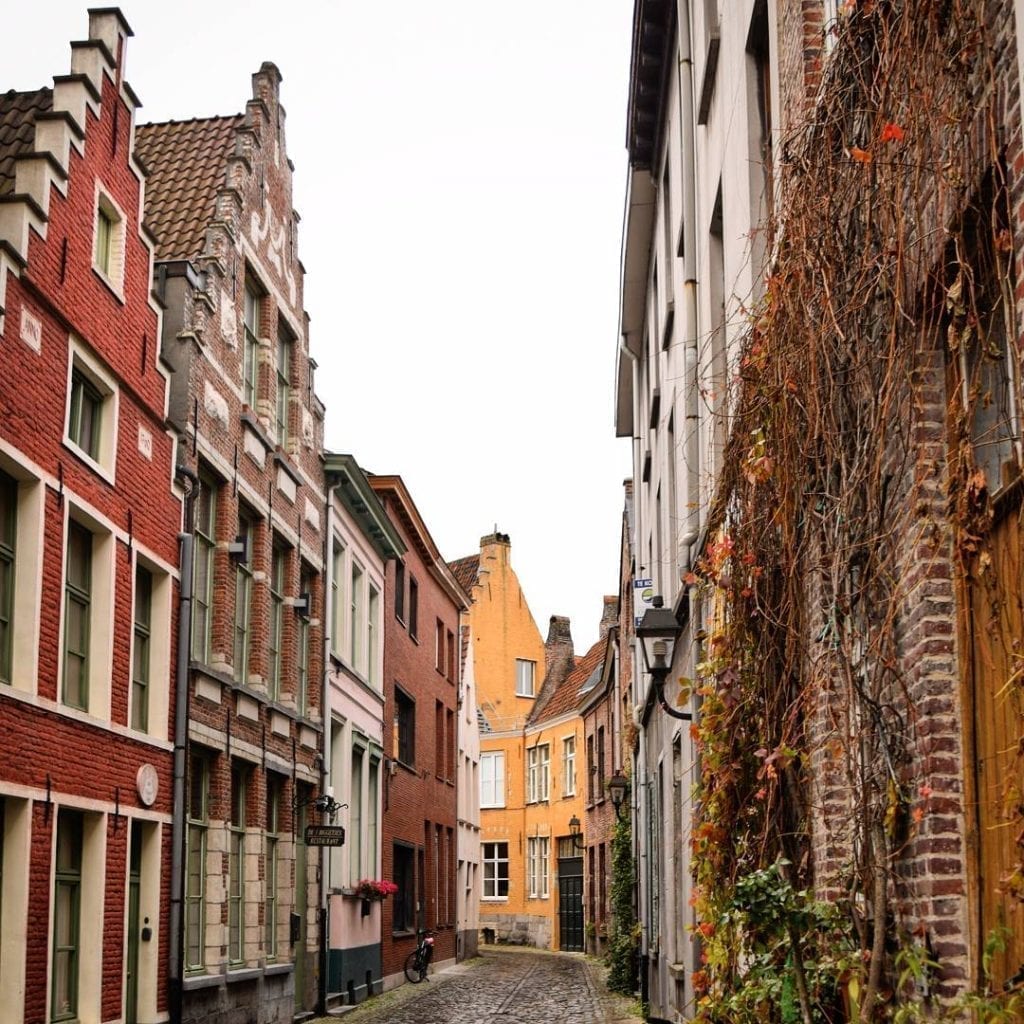
Check out Gravensteen.
If you’re looking for a castle that looks like it belongs in a fairytale, look no further than Gravensteen.
Dating back to the 10th century and set directly next to one of Ghent’s canals (it’s the only remaining castle in Flanders with a moat), Gravensteen is majestic and impressive to behold.
While it may be beautiful from the outside though, the “Castle of the Counts” boasts a gruesome history.
Depending on how early you start your day, you may or may not have time to step inside Gravensteen as opposed to simply admiring it from outside–but if you want to dive deeper into the history of Ghent during your Belgium trip, it’s worth a visit!
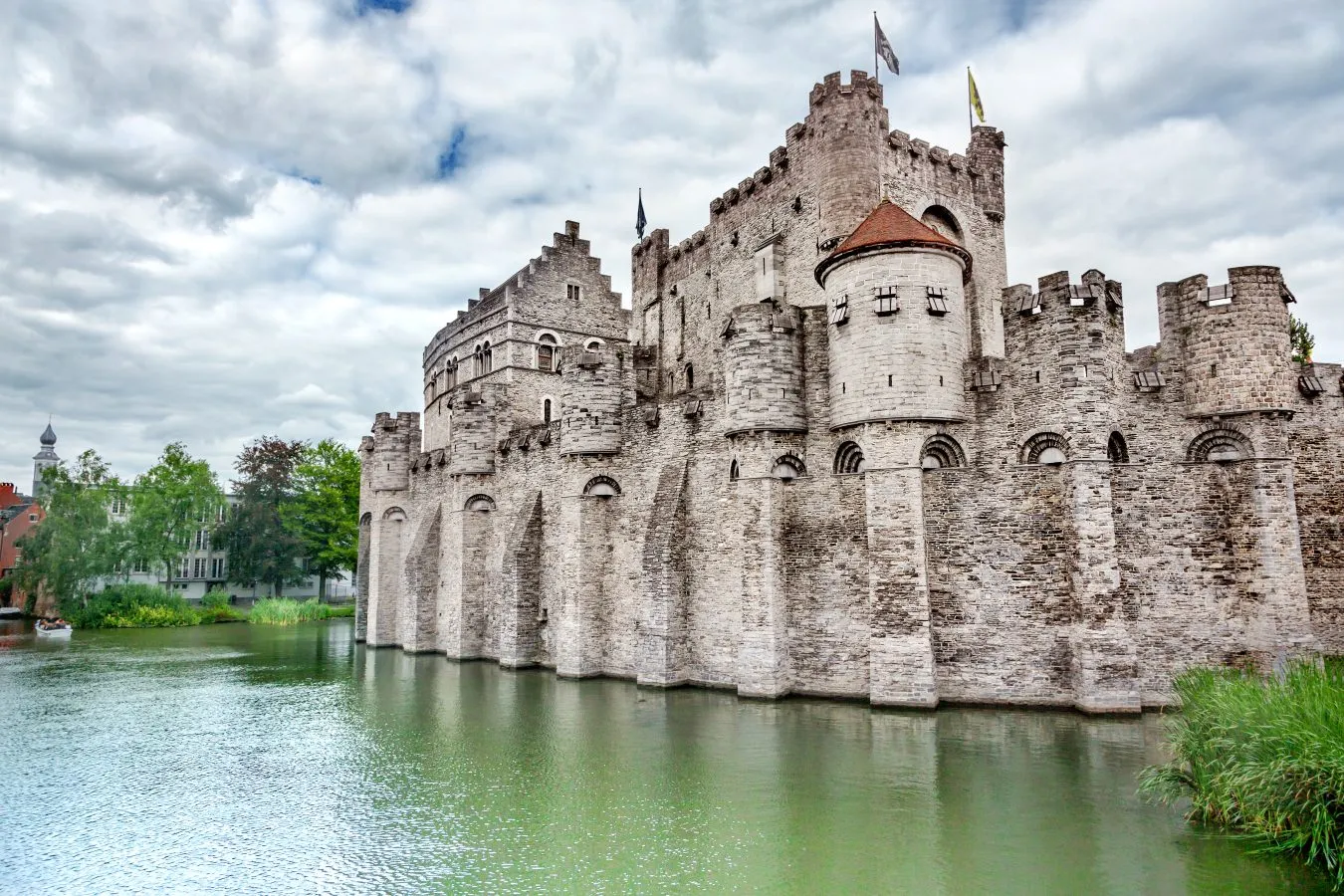
Visit St. Bavo’s Cathedral.
Dating back more than 1,000 years, St. Bavo’s Cathedral has a gorgeous interior that is definitely worth a quick look.
More than its beauty, though, St. Bavo’s Cathedral is best known for being home to the famous Flemish art piece The Adoration of the Mystic Lamb (also called the Ghent Altarpiece ).
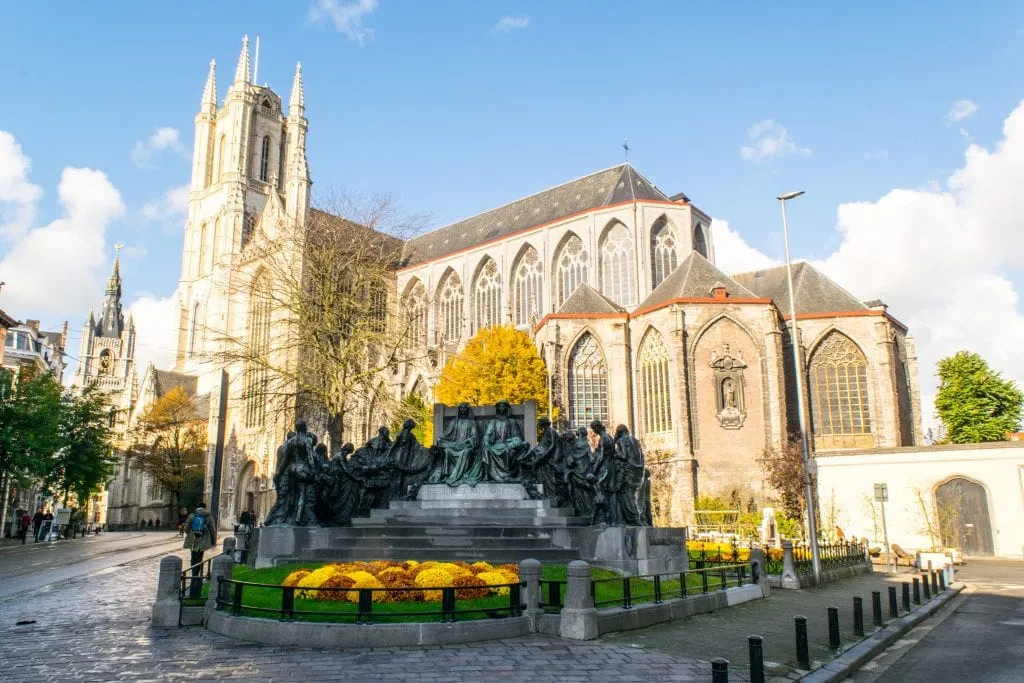
Stroll down Werregarenstraat.
What do you do if you want to encourage street art in your city, but also want to protect priceless buildings?
Dedicate an entire street to art, of course!
Werregarenstraat is a walking street home to a bright and ever-changing collection of street art, and is definitely worth a quick peek during your 3 days in Belgium.
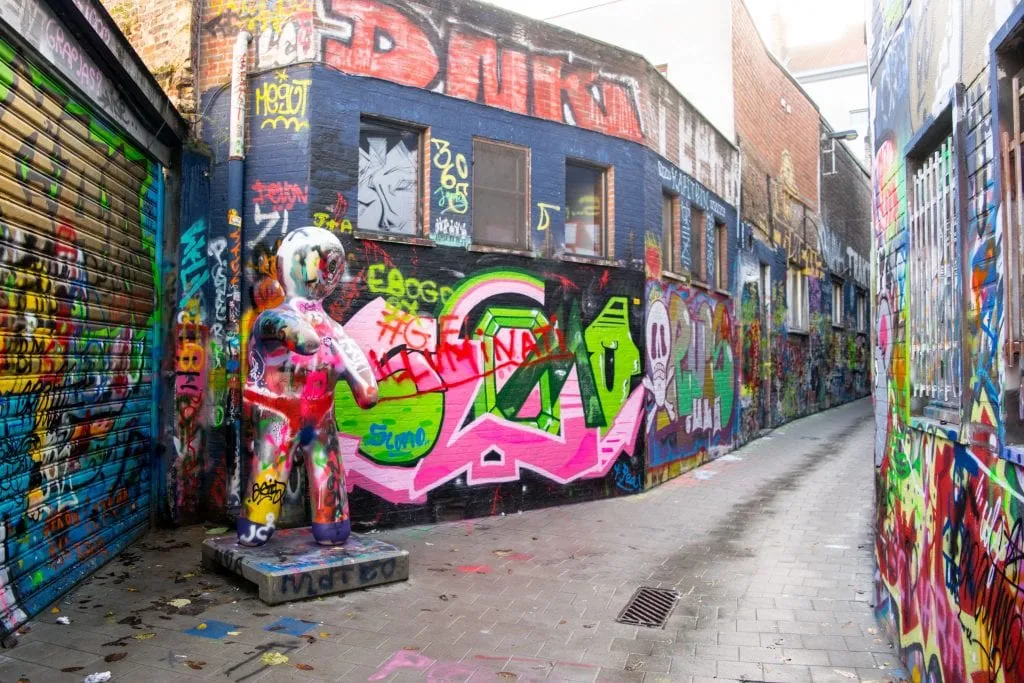
Stop by St. Nicholas’ Church and St. Michael’s Bridge.
Located right next door to each other, St. Nicholas’ Church and St. Michael’s Bridge are some of the best places to visit in Ghent.
St. Nicholas’ Church, with its soaring Gothic architecture, is often considered the most beautiful church in the city (and is easy and free to visit).
Meanwhile, the beautiful St. Michael’s Bridge offers some of the loveliest canal views in Ghent.
The Ghent Belfry is also nearby, and offers beautiful views of the city!
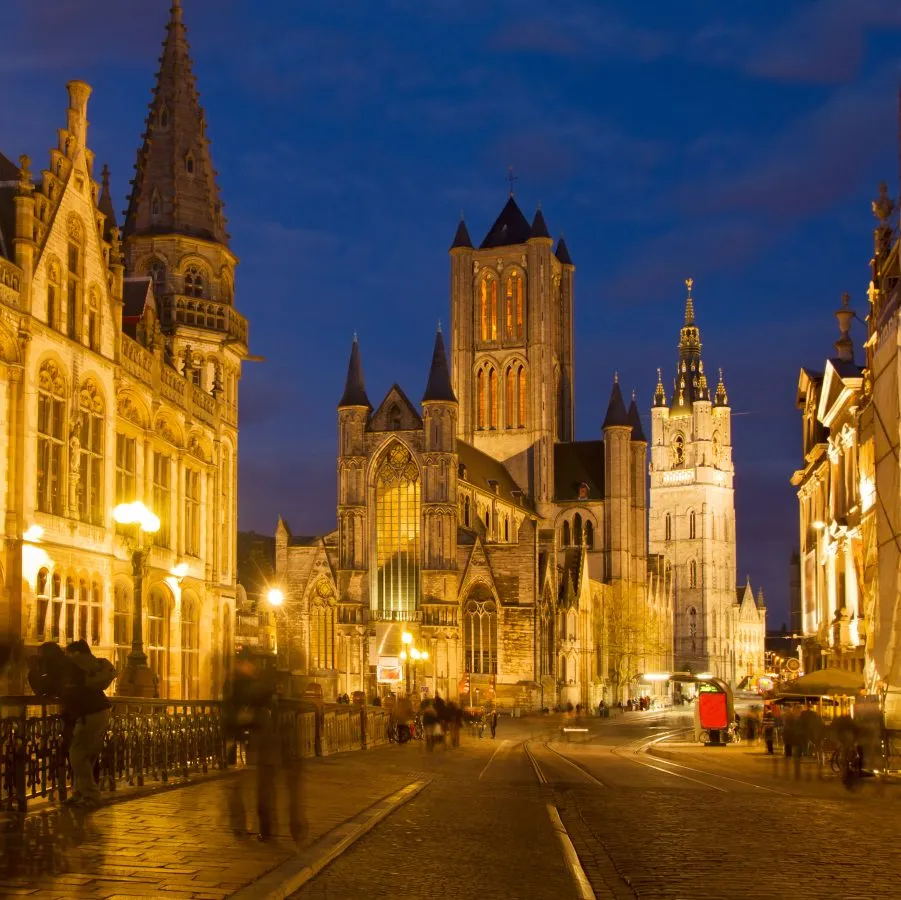
Day 3 in Belgium: Brussels + A Belgian Chocolate Workshop
As your 3 days in Belgium head toward a close, head to Brussels for a (literal) taste of the capital city.
I’ll be perfectly honest: many people find Brussels to be a boring city, and we can’t say we entirely disagree–especially when compared to Bruges and Ghent.
That being said, it is worth spending some time exploring it for yourself, and there are some interesting things to see in Brussels!
W e recommend spending half a day exploring the city’s sights and then closing out your trip to Belgium with a sweet treat–but more on that below.
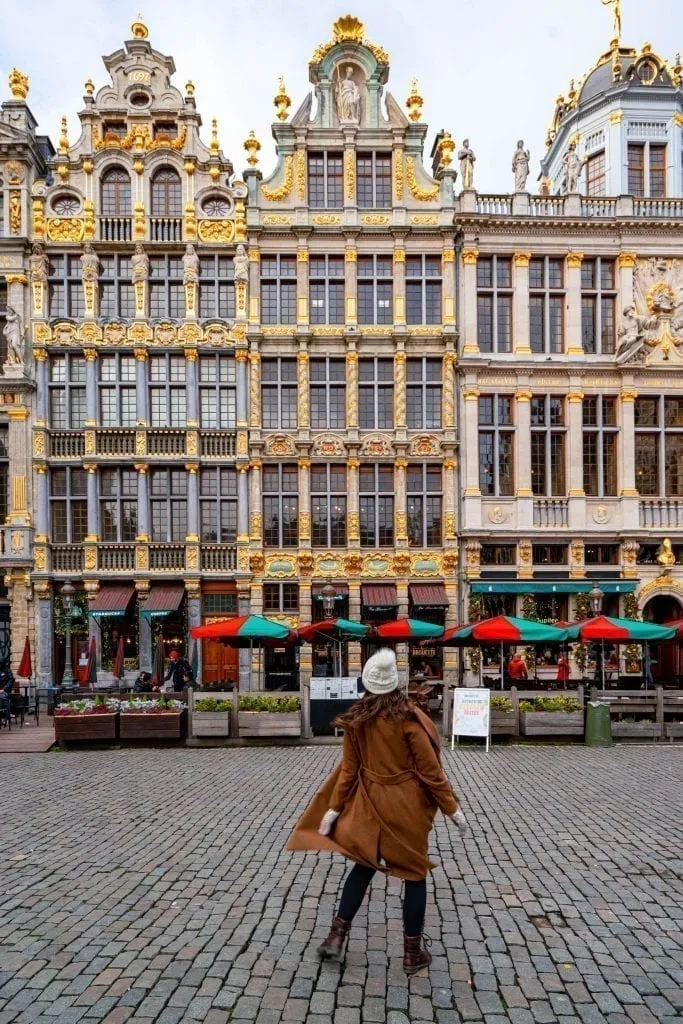
Marvel at the Grand Place (Grote Markt).
Gilded and glittering, the only word that can accurately describe Brussels’ Grand Place is opulence .
Of all the places to visit in Brussels, this one is the most iconic in the city, and a must-see during your 3 days in Belgium!
Home to Brussels’ Town Hall, several guild halls, and the King’s House (which now holds the Brussels City Museum), this square literally sparkles with the gold reflecting off the top of the buildings.
It is one of the most impressive main squares we’ve seen in Europe!
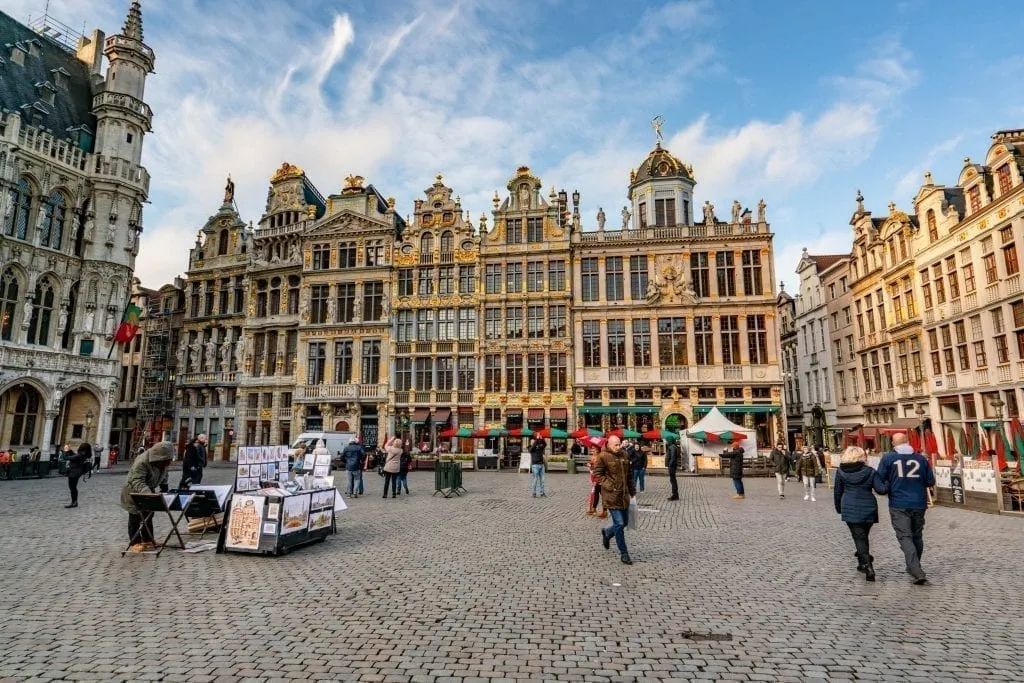
Scratch your head at Mannekin Pis.
If you look up any list of things to do in Brussels, you’ll no doubt hear about Mannekin Pis, the 400-year-old statue of a small boy peeing into the basin of a fountain.
Why is it so popular?
No idea, but it’s a 5-minute walk from the Grand Place and worth checking out for the weirdness alone… and to see if the statue is dressed up as anything at the time, because it often is.
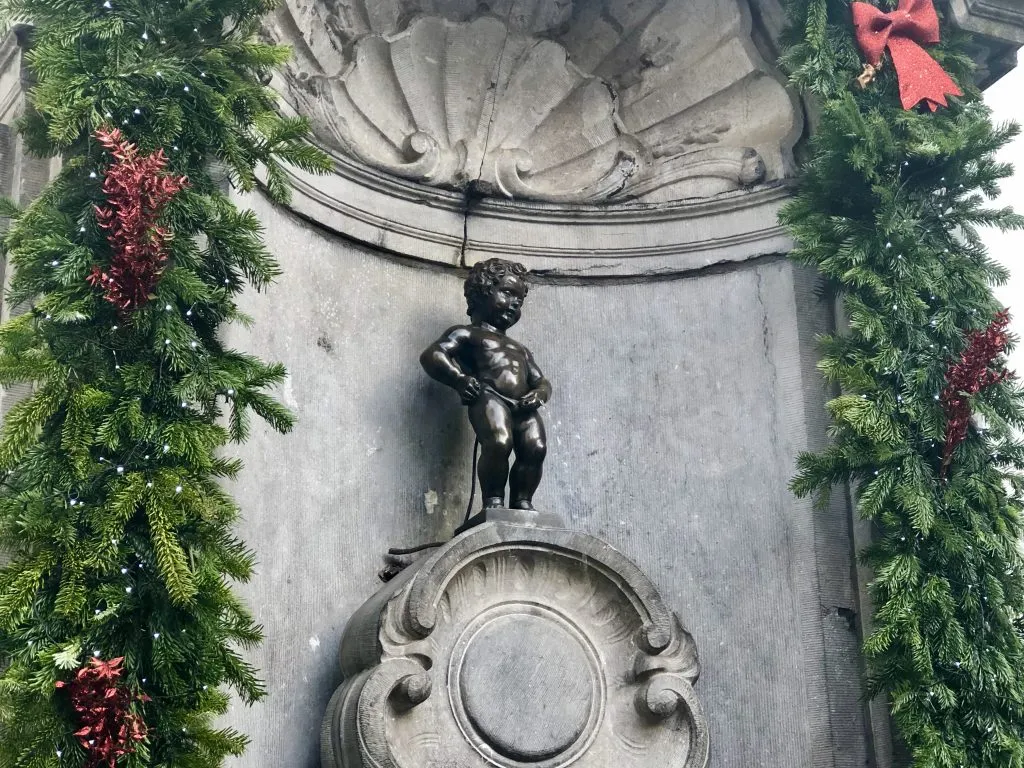
Explore the Comic Book Route.
If you’re a fan of Belgian comics–especially of The Adventures of Tintin–don’t leave Brussels without checking out the Comic Book Route !
Brussels is decorated with dozens of murals from famous comics, and finding them is quite an entertaining scavenger hunt.
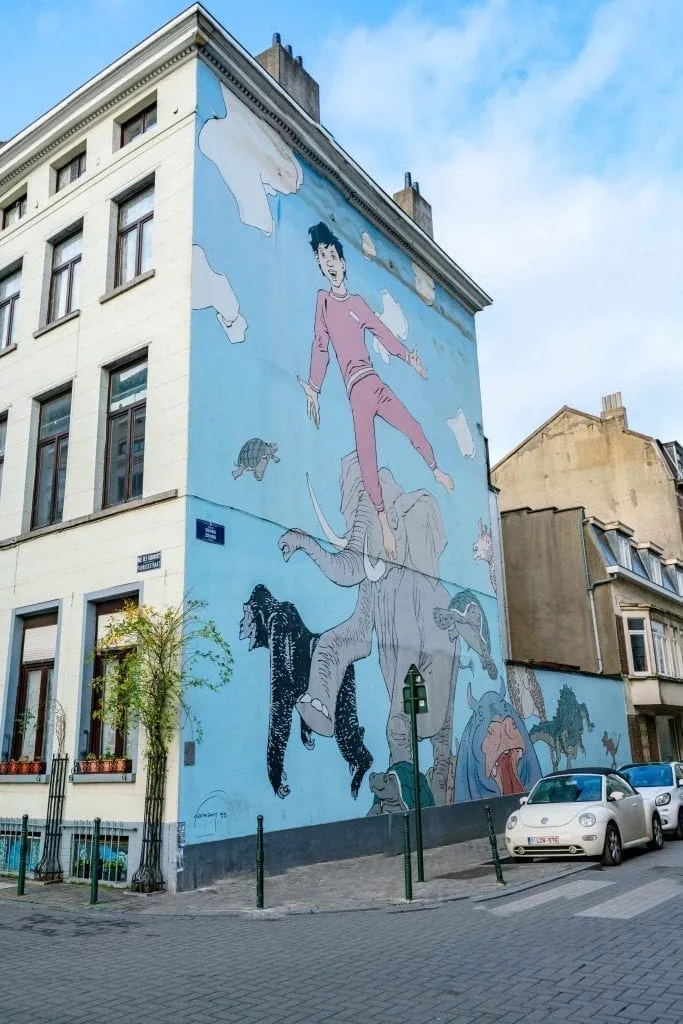
Take a Belgian Chocolate Workshop!
With only 3 days in Belgium, you may end up overdosing on sugar if you try to enjoy every last morsel of Belgian chocolate that your heart desires.
The best way to take some home, though?
Make your own!
So, what better way to close out your trip to Belgium than with a chocolate workshop–aka the perfect way to both eat lots of chocolate and find out what your favorites are… while also leaving with a homemade box of your own.
This popular chocolate workshop will help you learn to make your own delicious chocolates, while also learning a bit about the history of Belgian chocolate along the way.
Book your Belgian chocolate workshop today!
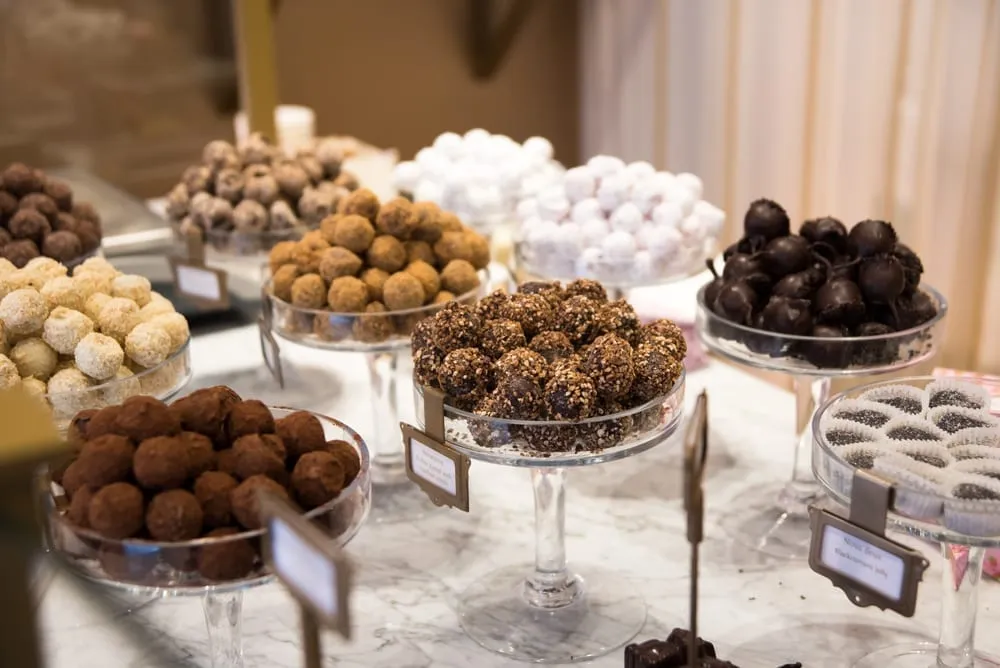
Alternative: not a chocolate fan? Try a beer tour!
Not much for chocolate?
I can’t say I understand that, but if you’d rather enjoy a different kind of classic Belgian indulgence, a beer tour is also a fantastic way to close out your 3 day trip to Belgium!
This one gets rave reviews and is a fantastic option.
Book your Belgian beer tour now!
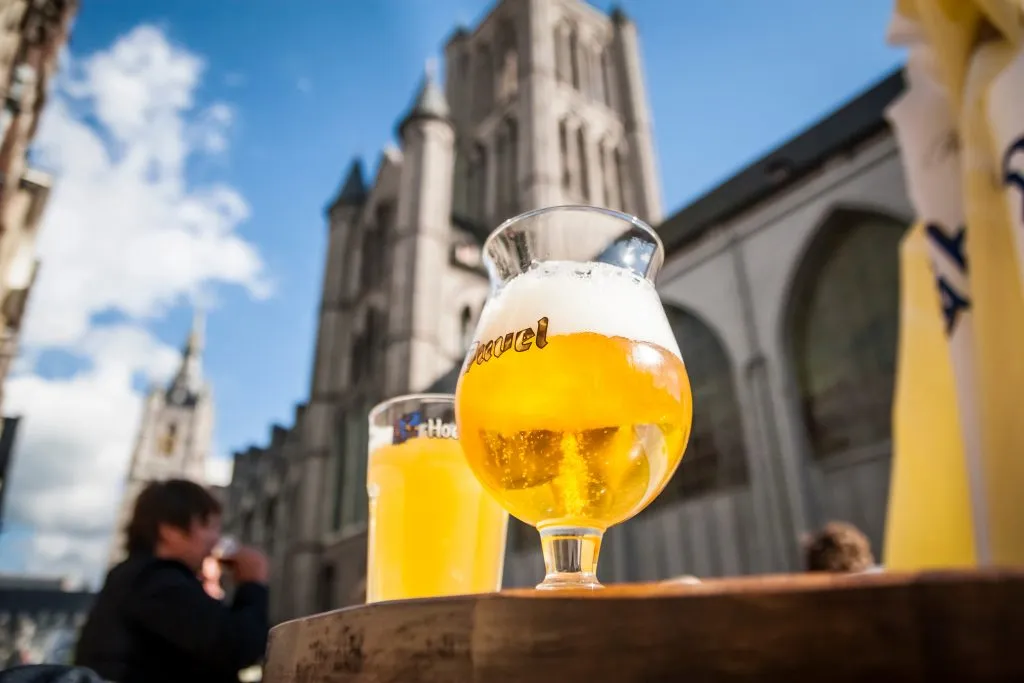
Due to Belgium’s small size and excellent train system, you have lots of flexibility when deciding where to stay during your 3 days in Belgium.
You can choose to stay in any one of these cities and take day trips to the others, move every night, or take one day trip and stay in two different cities–the choice is yours!
Personally, we’d recommend staying in Bruges.
I t’s the most beautiful city on this list (in our biased opinion), and its popularity with daytrippers means that you’ll be able to enjoy the city much more if you’re also able to experience it during the quiet(er) evenings.
From Bruges, Ghent is 20-30 minutes away by train and Brussels is about an hour away by train, so there’s no need to move around if you don’t want to!
Here are some well-reviewed and perfectly located hotels in Bruges to consider for your trip to Belgium.
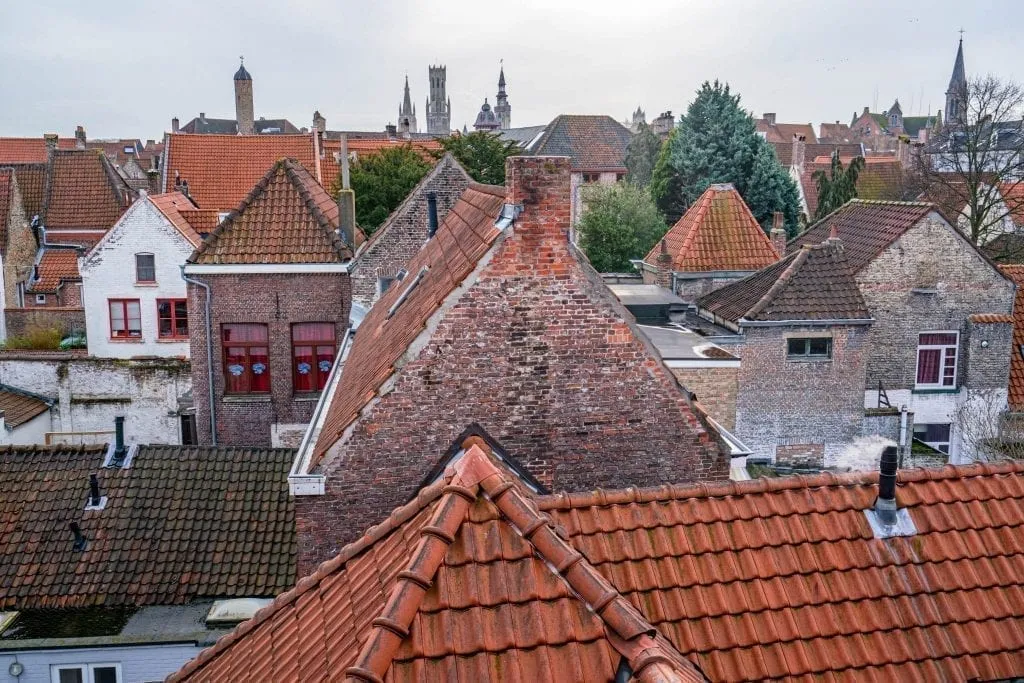
Hotel Notre Dame — Cozy Hotel Notre Dame is located within a quick walk of most of Bruges’ major sights, including a five-minute walk from Town Hall, and boasts comfortable rooms, an included continental breakfast, and excellent reviews.
Check rates & book your stay at Hotel Notre Dame!
The Black Swan Hotel — Housed in a 17th-century building just around the corner from Grote Markt, the popular Black Swan Hotel is perfect for visitors to Bruges looking to stay in a beautiful, centrally-located building without a luxury price tag.
Be sure to check out the gorgeous conservatory, where an included breakfast is served each morning!
Check rates & book your stay at The Black Swan Hotel!
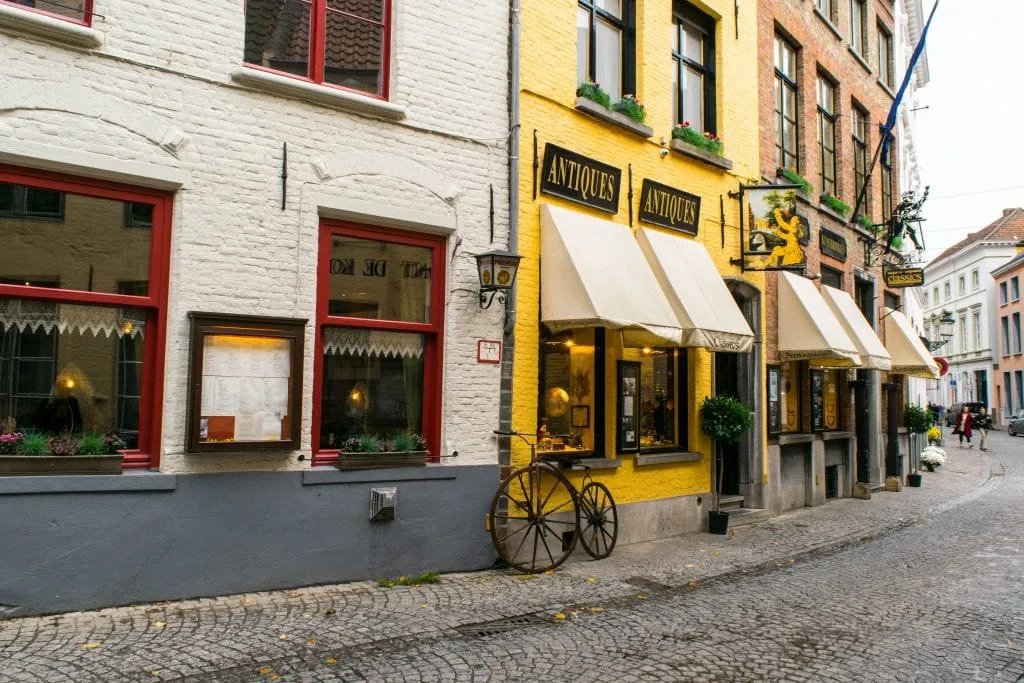
Relais Bourgondisch Cruyce — Luxurious Relais Bourgondisch Cruyce is a stunning boutique hotel located in a prime location within Bruges: not only along a canal, but at the place where two canals meet!
Featuring magnificent rooms decorated with antique decor, wonderful views, and exceptional reviews, Relais Bourgondisch Cruyce is the go-to choice for luxury seekers or those celebrating a special occasion during their trip to Belgium.
Check rates & book your stay at Relais Bourgondisch Cruyce!
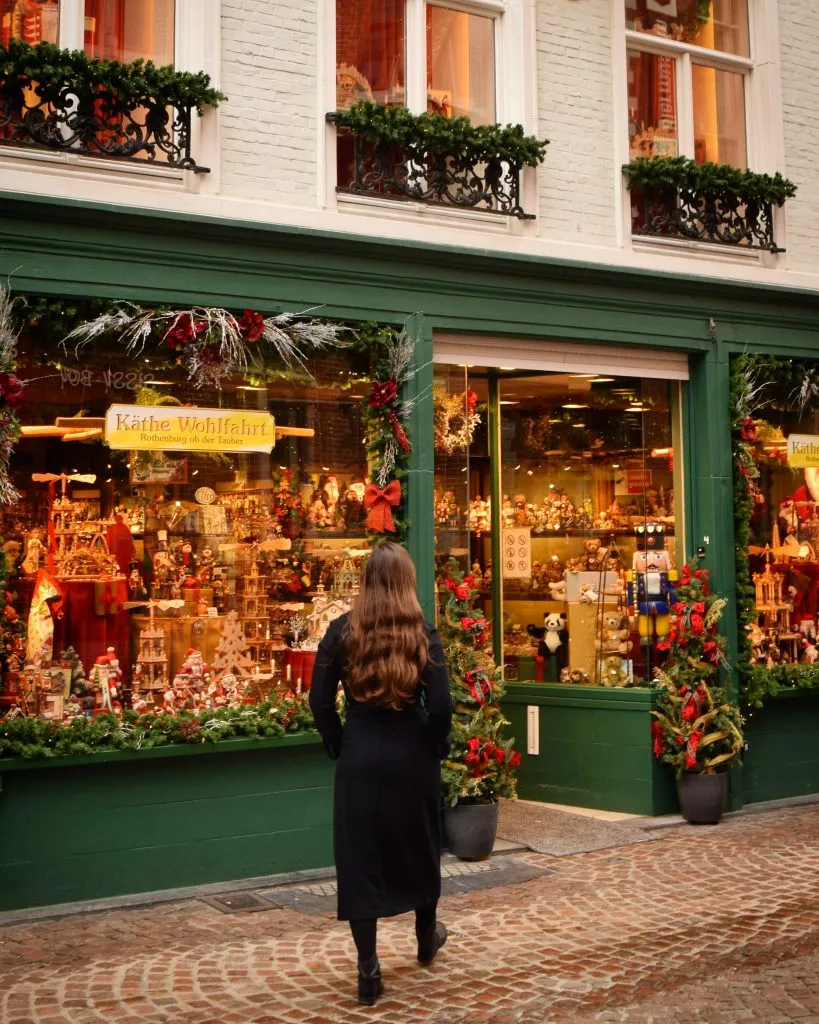
If you have 4 or 5 days in Belgium rather than 3, you can easily find more fun things to do in Belgium.
The first addition we would recommend is paying your respects at the WWI battlefields near Ypres .
You can visit independently, but a tour adds lots of valuable context here– this one leaving from Bruges gets excellent reviews.
You could also add on a day trip to Antwerp (be sure not to miss the city’s phenomenal train station, Grote Markt, and Steen Castle!).
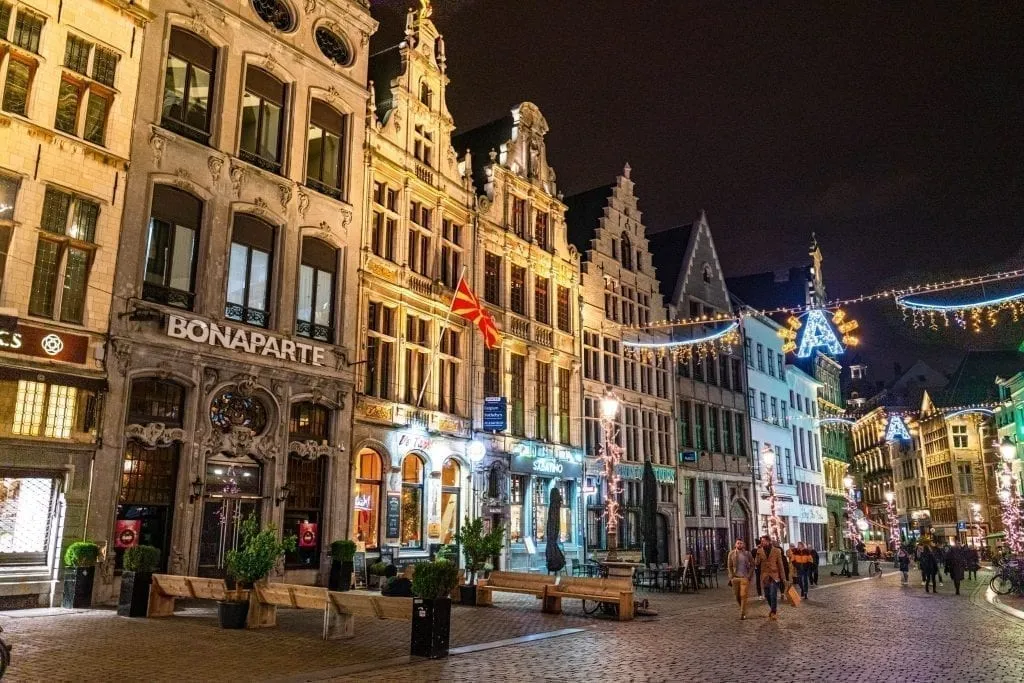
Prefer to get a taste of another country?
You can easily add a day trip abroad to your Belgium itinerary: Luxembourg, Amsterdam , Paris , and Cologne are all within easy reach , just to name a few options.
Of course, there’s no reason to stray far if you don’t want to!
Any one of the cities outlined on this 3 day Belgium itinerary could easily captivate you for much more than a day.
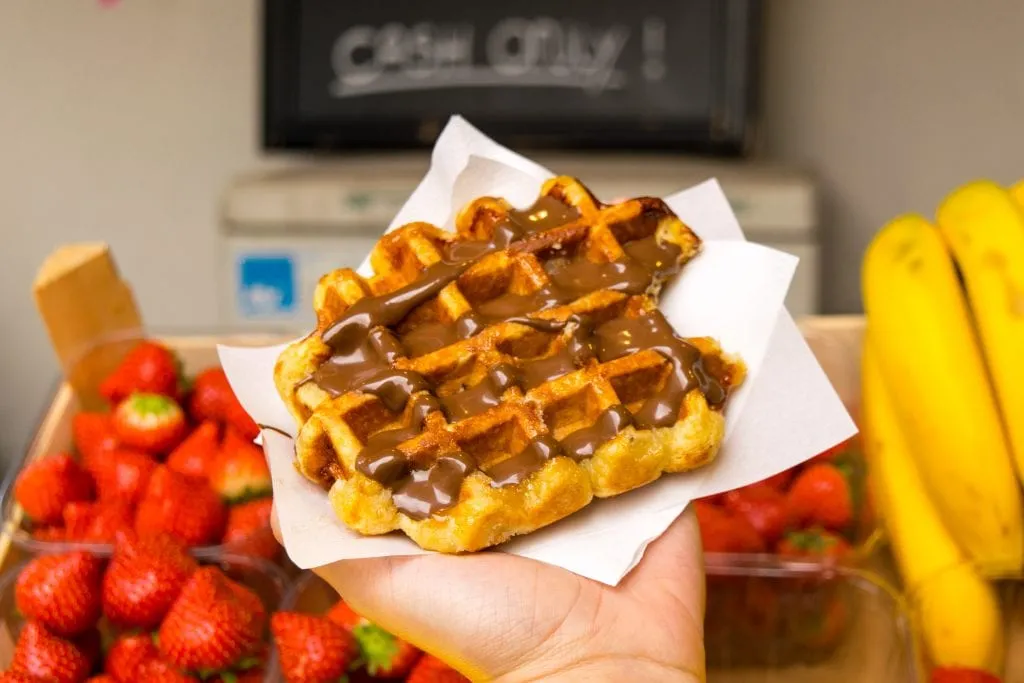
As I mentioned above, Belgium’s small size and thorough train system means that you likely won’t need anything other than the trains and your own two feet to complete this 3 day Belgium itinerary.
All of the things to do and see outlined in this Belgium itinerary are located within the walkable centers of each city, and wandering the beautiful streets is half the fun of visiting.
Uber is available and can be used to get to and from the airport and train stations depending on where exactly you are staying during your Belgium vacation.
For getting between cities by train, we recommend checking ticket schedules and prices with Omio , a popular transportation aggregate that we often use throughout Europe.
Shop train tickets around Belgium today!
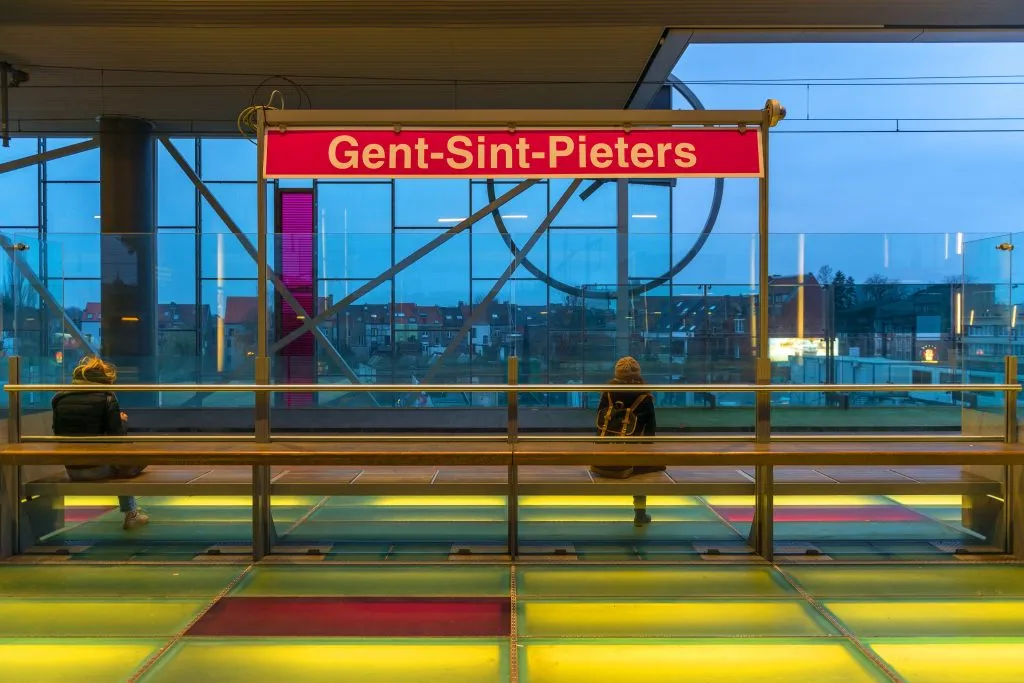
Travel Insurance — We don’t ever suggest traveling without travel insurance–anything can happen on the road, and traveling abroad is definitely a case of better safe than sorry.
In our opinion, Option B is definitely the best–we’ve been rained on more than once during our trips to Belgium!
Planning a trip to Belgium soon and want to keep reading?
You can browse all of our Belgium blog posts here , or check out these guides:
- Belgium in Winter: Fun Things to Do + Travel Guide
- Your 13-Step Guide to Traveling to Europe for the First Time
- The Perfect One Day in Bruges Itinerary
- How to Celebrate Christmas in Europe: Itinerary Ideas, Tips + FAQ!
- Ghent or Bruges: Which Flemish City is Right for You?
Take This Map With You! Click each highlight to pull up the name of the destination. To save this map to “Your Places” on Google Maps, click the star to the right of the title. You’ll then be able to find it under the Maps tab of your Google Maps account! To open the map in a new window, click the button on the top right of the map.
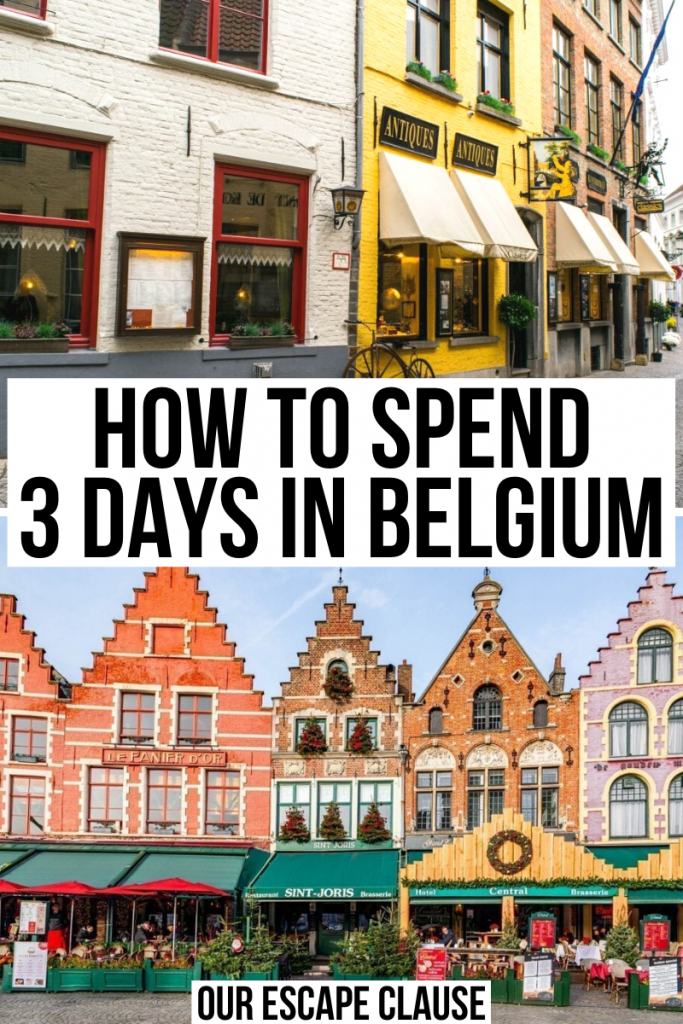
About Kate Storm

In May 2016, I left my suburban life in the USA and became a full-time traveler. Since then, I have visited 50+ countries on 5 continents and lived in Portugal, developing a special love of traveling in Europe (especially Italy) along the way. Today, along with my husband Jeremy and dog Ranger, I’m working toward my eventual goal of splitting my life between Europe and the USA.
Leave a Comment Cancel reply

Belgium Travel Guide – everything you need to know to plan your trip
Planning a trip to Belgium? Wonderful! Belgium, the land of chocolate, fries, and beer. Of Art Nouveau and the Flemish Primitives. That tiny country where the administrative center of the EU is located. My home country.
When people tell me they've been to Belgium, they've usually just been to Brussels and/or Bruges. Those are great places for sure but limiting yourself to these two cities would do the country injustice. There are castles in Belgium to be explored, trails to be walked, memorials to go silent for.
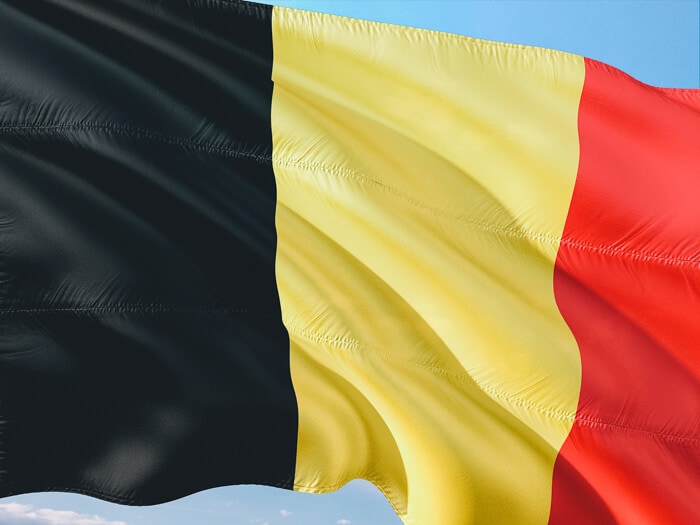
Let me show you some of the best places to visit in Belgium, some insider tips and give you all the information you need to plan your own Belgium vacation in this Belgium Travel Guide.
Belgium travel guide: quick facts
1. brussels capital-region, 3. east flanders, 6. flemish brabant, 7. brabant wallon, 10. liège province, 11.belgian luxembourg, entry requirements, fly to belgium, independent travel around belgium, what to pack for belgium in summer, what to pack for belgium in winter, what to pack for belgium in fall, what to pack for belgium in spring, the best time to visit belgium, what to eat in belgium, belgium holidays, cultural things to be aware of in belgium, where to stay in belgium, don't forget travel insurance, safety in belgium, the use of cash and cards in belgium, staying connected while you travel belgium, tipping in belgium, a brief history of belgium.
Size: it's a small country at 30.528 km² or 11,787 sq mi
People living there: more than 11 million
Capital: Brussels
Governmental structure: federal constitutional monarchy with a parliamentary system
National day: July 21
Time zone: Central European Time / UTC+1 / GMT+1
Currency: euro (EUR)
Power voltage and socket type(s): 230V, plug types E and C. If these plug types don't match your devices, make sure to bring a universal adapter to be able to charge them
Official religion(s)/Freedom of religion: Freedom of religion. 60% of the population is Roman Catholic, followed by atheist and agnostic citizens, other Christians, and Muslims.
Official language(s) and general knowledge of English: Dutch, French and German are the three official languages. English is widely spoken.
Drives on this side: right
International driver's licence accepted? yes
Phone code: +32
Vaccinations needed? none mandatory.
Can you drink the tap water? yes, so make sure to bring your refillable water bottle
Want to know more interesting facts about Belgium? I have a whole post full of them .
Belgian provinces and the capital of Brussels
Belgium consists of 10 provinces and the district capital of Brussels. Before I tell you a bit more about each of them, watch the video below to try and understand the country's complicated political and language structure.
It's a bit crazy, I know. Luckily, if you're just visiting Belgium, you don't need to worry about any of this too much. What is good to know, is what you can find in each of the provinces and Brussels.
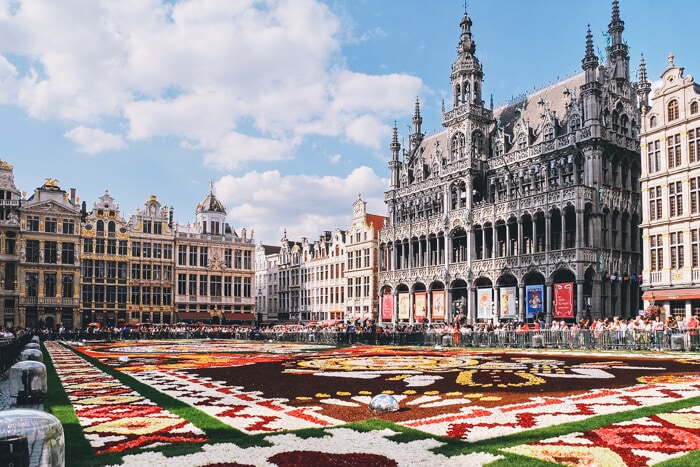
Brussels is its high art, medieval architecture, chocolate, and history, but it's just as much its many local markets, bars with live music and people meeting up in parks for a picnic when the sun comes out. Of course, at the end of the year there are the Christmas markets.
Discover more of Brussels:
- Why you should visit the Brussels Christmas market
- 15 typical Belgian dishes to try in Brussels
- Visiting the European Parliament and House of European History
- Where to stay in Brussels
- Interesting facts about Brussels that will make you want to go
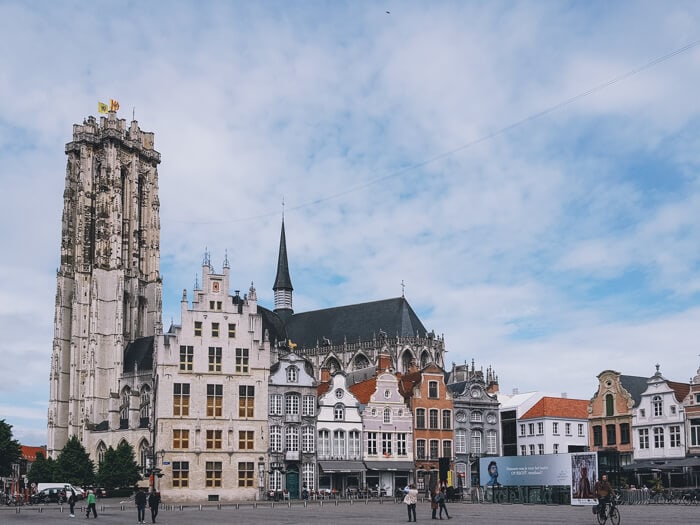
If you prefer a smaller city for a day trip, Mechelen is a good option and if you want to get moving, all you need to do is follow one of the province's many walking or cycling routes.
Discover more of Antwerp:
- Visiting former concentration camp Breendonk Fort
- Where to have coffee, breakfast, and brunch in Mechelen
- Things to do in Antwerp
- Marvelous museums in Antwerp
- Where to have coffee in Antwerp
- Visiting the Antwerp Christmas market
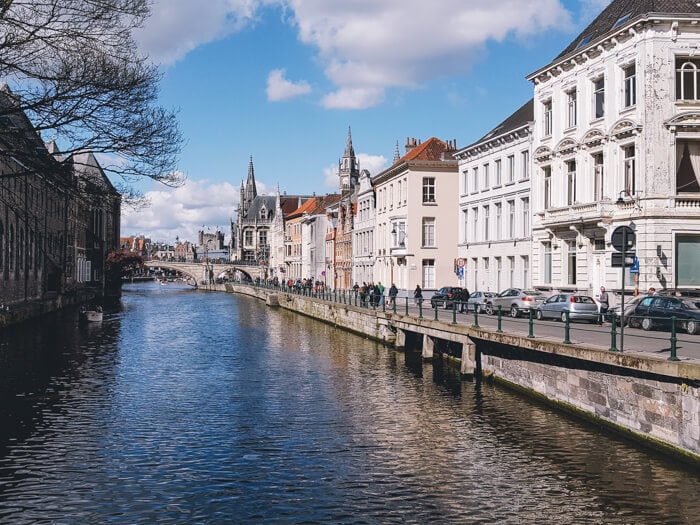
Outside of Ghent, East Flanders is great for those who like to walk and bike. There are plenty of well-signed routes of varying lengths, oftentimes put together according to a theme. If you're feeling a bit lazy, going on a riverboat tour is another option.
Discover more of East Flanders:
- Visiting the Light Festival in Ghent
- Capturing Ghent's graffiti scene
- Inside the belfry of Ghent
- Visiting the Gravensteen Castle in Ghent
- An afternoon boat trip on the river Scheldt
4. West Flanders
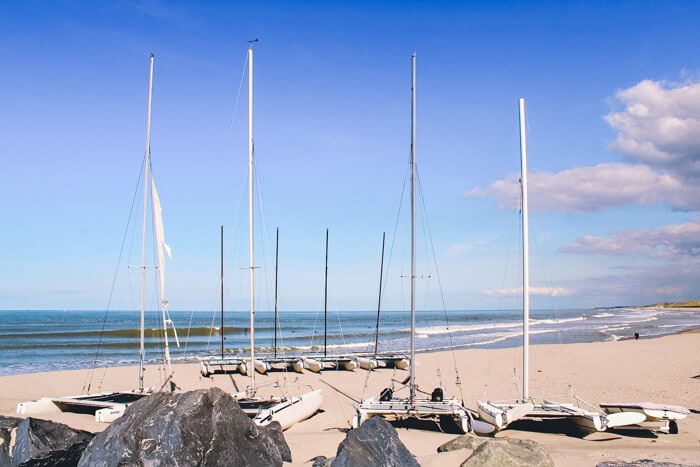
The coast isn't just popular for its beaches. There are quite a few war memorial sites, from both World Wars, and the city of Ostend is home to several art galleries and museums. Whether you want to walk, bike, eat, shop, or brush up on your history, West Flanders has something for you.
Discover more of West Flanders:
- 7 hip hotspots in historical Bruges
- “In Bruges” movie locations you can visit
- Bruge Travel Guide
- Best things to do in Ostend
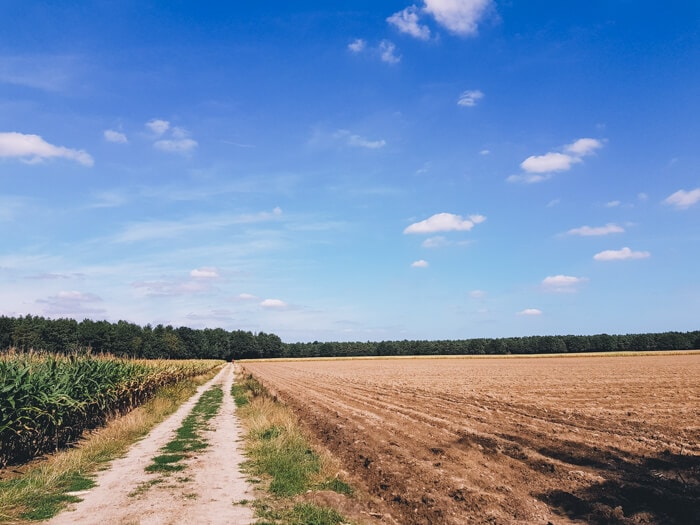
Limburg is home to the only national park of Belgium, the Hoge Kempen National Park, and counts several other natural areas that are great for hiking and walking.
It's also a great place for those interested in industrial heritage. They can visit C-mine , a former mining complex turned into a cultural, entertainment, and small business center.
Discover more of Limburg:
- A weekend in Limburg
- Outlet shopping at Maasmechelen Village
- A weekend in Beringen
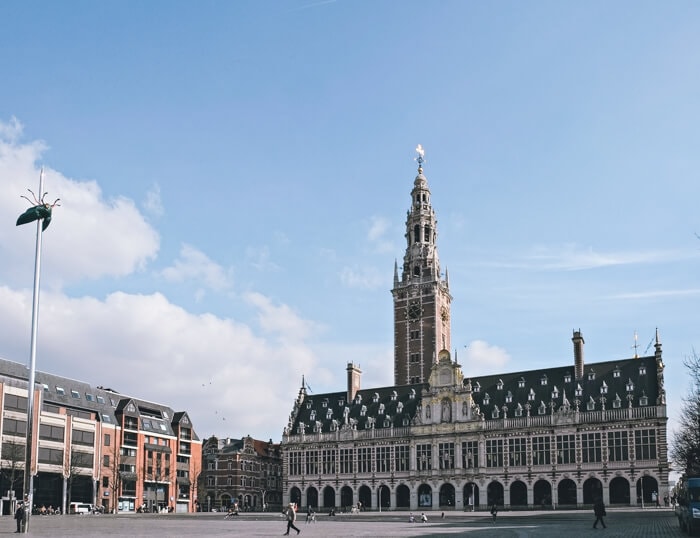
Museums for every possible interest keep you busy on a rainy day in between stops at local breweries, vineyards, and other producers.
Discover more of Flemish Brabant:
- A walk in Tervuren park
- The breathtaking bluebells of the Hallerbos
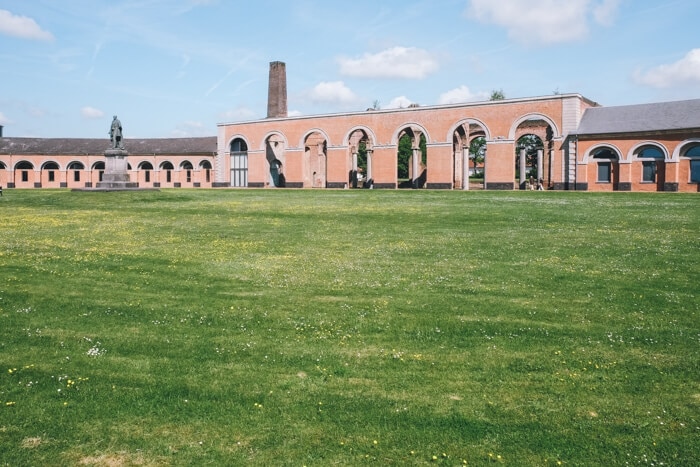
Aside from that, Brabant Wallon is also home to many parks and other outdoor recreational areas, the Hergé Museum – dedicated to the inventor of the comic character Tintin – and a collection of small museums mostly focusing on local life and history.
Discover more of Brabant Wallon:
- Visiting the Abbey of Villers-la-Ville
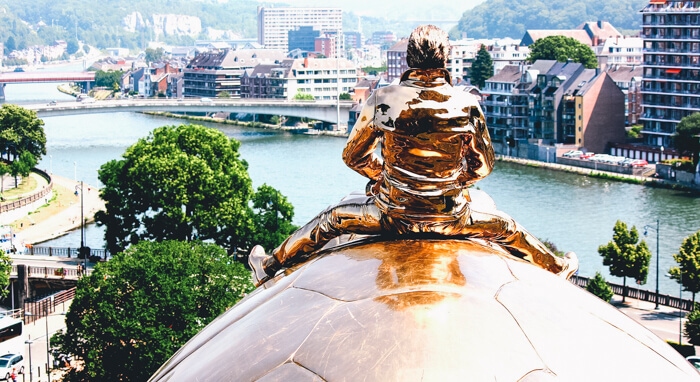
While the province is named after its capital city, Dinant is much better known. Small in size, its dominated by its citadel perched high upon a cliff overlooking the river Meuse.
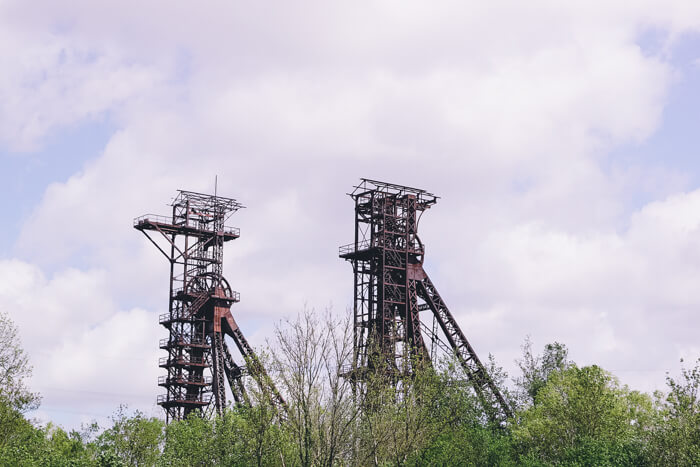
The provincial capital of Mons was European Capital of Culture in 2015 and perfect for a day trip or a weekend away while Pairi Daiza is one of the most popular animal parks in Belgium.
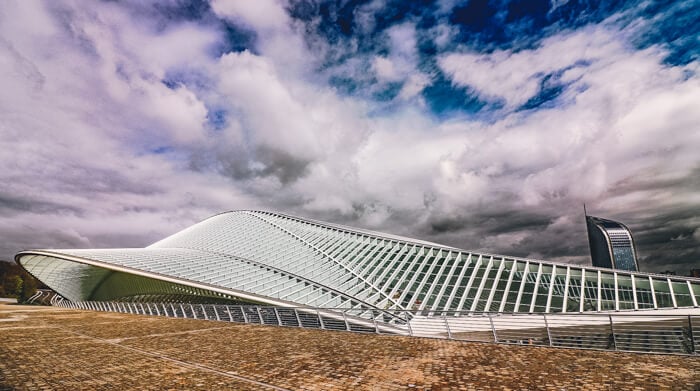
The capital city of Liège puts up the biggest Christmas market of the country and will easily keep you busy for a weekend while the town of Spa gave its name to spa centers around the world and is the perfect place to unwind.
Discover more of Liège province:
- How to spend 3 unique days in Liège province
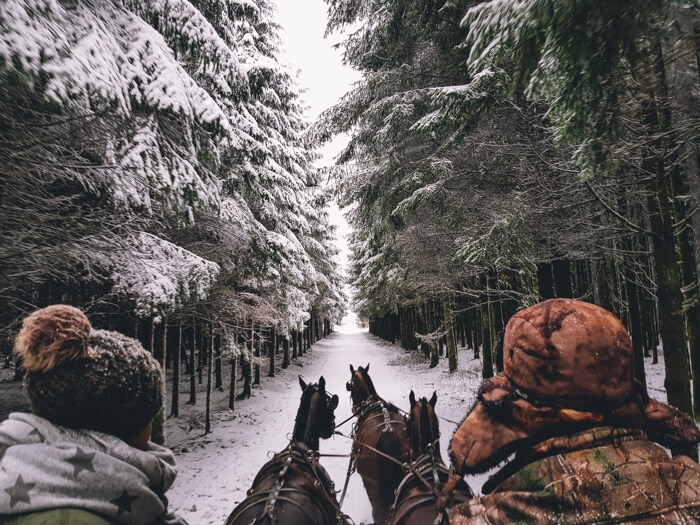
Make sure to check out the abbey of Orval, the castle of Bouillon, the smallest city in the world Durbuy, and the historically important Bastogne.
Want even more inspiration? Check out these fun things to do in Belgium .
How to travel to Belgium
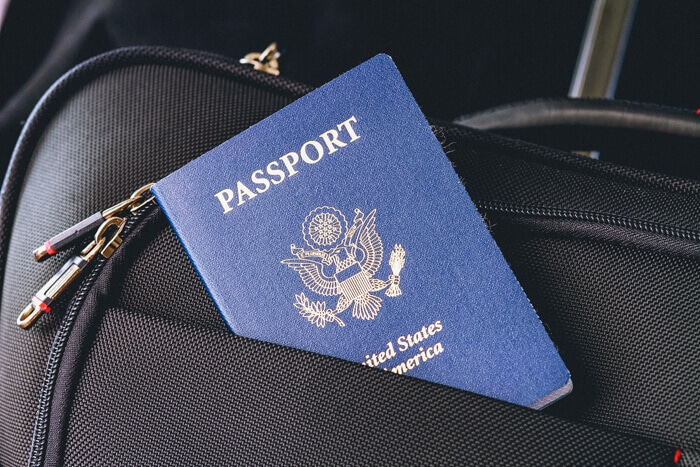
Travelers from the United States and the rest of the world can generally visit Belgium for three months without a visa on the condition that their passports are valid up until six months after their stay.
How to get to Belgium
The most budget-friendly way to travel to Belgium is by bus from one of the other European countries. Flixbus is known for its great long-distance bus service and equally pleasant prices.
For more options, have a look at Omio . This platform automatically gives you the best route between two places and allows you to immediately book a ticket as well.
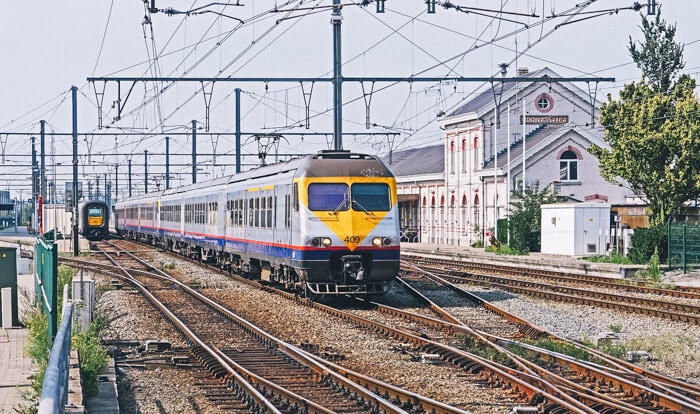
If you're coming from the UK, you can also travel on the Eurostar from London to Brussels. It's usually a bit faster than flying as you don't need to be at the train station as early as you need to be at the airport and the Eurostar drops you off right in the center of Brussels. Check Omio for timetables and prices
If you're coming from France, Germany, or the Netherlands, the highspeed train Thalys is another fast way of getting to Belgium. It's a bit pricier than a regular train but does offer more comfort and is faster too. Look here for Thalys tickets
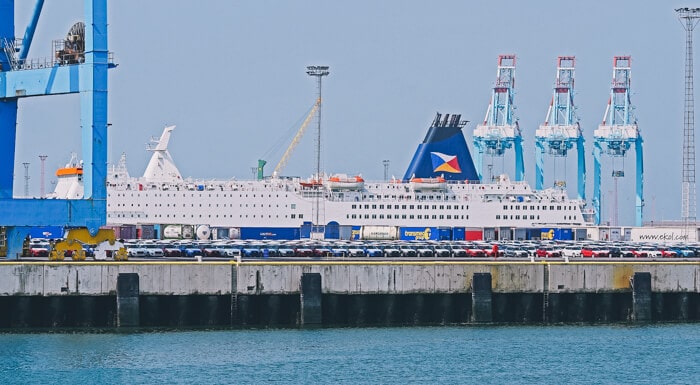
Brussels Charleroi is the airport they optimistically call Brussels South but it's at least an hour's drive from the capital. This is where mostly cheaper airlines arrive.
Antwerp and Ostend airport are two smaller airports which also welcome international flights but you'll be most likely to fly to one of the other two.
For flights to Belgium, check Skyscanner . It gives a good overview of your options and their prices and also allows you to set flight alerts so you can track when those prices go up or down.
How to travel around Belgium
The NMBS/SNCB trains provide the best option to move between cities and buses from De Lijn (in Flanders), the MIVB (in Brussels) and TEC (in Wallonia) will easily take you to smaller destinations.
Belgium is a small country and the highways are often congested. Renting a car isn’t recommended unless you plan on staying in a small village with hard access to public transport or unless you're planning to road trip and then especially in the south of the country where there's still more nature. If you're interested in getting a rental car for your trip to Belgium, check out AutoEurope .
Taxis are an option, but not really if you don’t want to spend a lot of money. A 15-minute drive can easily cost you €30.
What to pack for Belgium
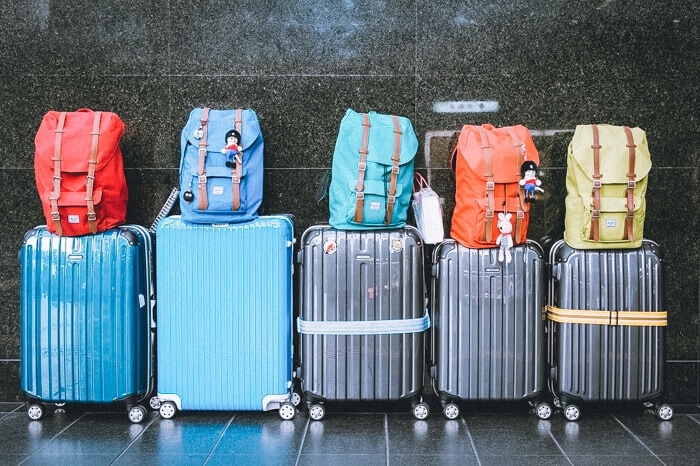
Winters can get a bit chilly, but it doesn’t often freeze during the day and it usually doesn’t snow for more than a week or two a year in total.
Just make sure to always pack an umbrella, whatever time of the year you decide to come.
- a reusable water bottle
- good walking sandals
- light clothing
- a rain jacket
- a warm wind and waterproof coat
- comfortable and warm shoes
- a merino woolen baselayer
- merino woolen socks
- a warm scarf
I created an extensive packing list for Belgium in fall which you can find here .
Both for fall and spring in Belgium, it's important to pack layers. Some days can still/already be sunny and warm while others will be grey, wet, and cold. You probably won't need a super warm winter coat but it is best to bring something warm and waterproof that you can easily stow away, like this jacket .
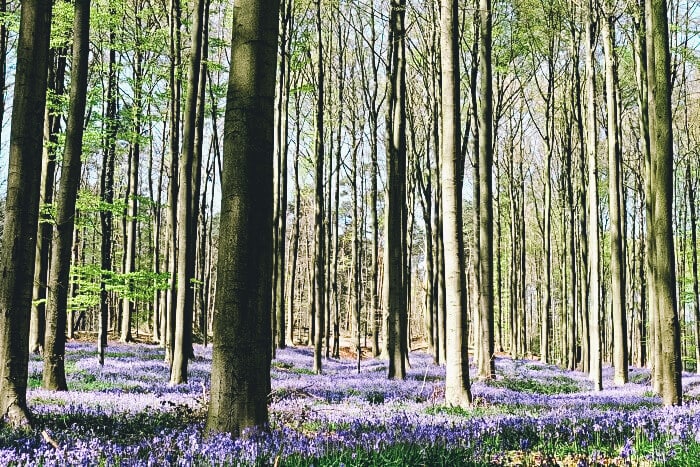
Summer is also festival time in Belgium with multiple festivals big and small taking place just about every weekend. Read more about summer trips to Belgium and some of the best Belgian music festivals .
Winter is the time of the Christmas markets and while not as known for them as Germany, for example, Belgium does have quite a few good ones. I've written more about Christmas markets in Belgium here.
Autumn is a bit of a more quiet time around the country but in spring, everyone is getting excited about the upcoming summer and there are several spring-related things to do, like visiting the purple flower forest , the flower show Floralia , or the rose garden Coloma.
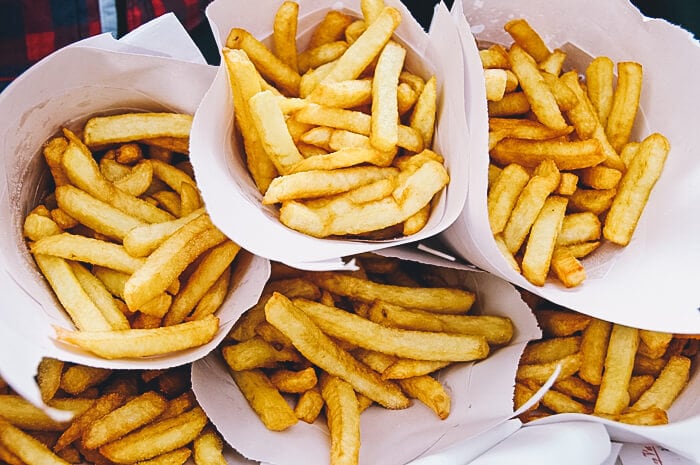
If you'd like to learn how to make some of these dishes yourself, check out this post with Belgian recipes .
When traveling somewhere, it's always good to know whether there will be a special holiday during your stay. That's why I've compiled a detailed list of holidays in Belgium which I update annually. It includes not only public holidays but also school holidays and other dates to take into account when planning your trip.
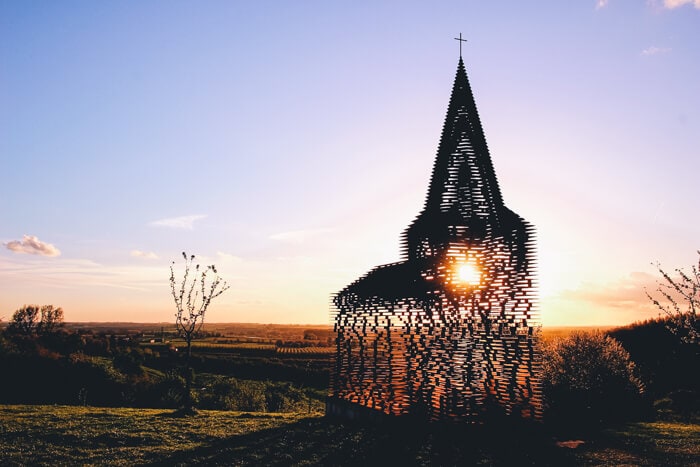
If you speak French but not English and you're visiting the Flemish side of Belgium, you can always ask whomever you're talking to if it's okay to speak French because you're visiting and don't speak Dutch or English, if you want to be absolutely sure not to offend anyone.
When it comes to socializing, there’s quite the difference between the northern and the southern part of the country. When I worked at the Belga Press Agency, my French speaking colleagues would give each other a kiss when arriving at the office, while my Flemish colleagues would shake hands. That about says it all.
Of course, this is a generalization, but I think you could say that the people from the south are a bit warmer and more open than the people from the northern part of Belgium. We all have cliques and groups we belong to and for an outsider, it’s not always easy to become part of such a group.
If you want to meet Belgians, I’d say the best approach is to just walk up to them because the chances of us walking up to a stranger are rather slim (again, generalizing here).
Whenever I need to book a hotel somewhere, I always check Booking. com. I love that the site has so many filters you can use to easily get a list of just the places that fit your criteria. So if you're looking for the best places to stay in Belgium, I highly recommend you do it there .
No matter how well you plan your trip to Belgium, there's always something that can happen that's beyond your control. Your luggage can get lost, you can get sick or you can drop and break that new camera. In all of these cases, good travel insurance has you covered.
I've had ongoing travel insurance ever since I started traveling by myself to make sure I'm covered for every trip I go on but if you travel just a few times a year, you can get insurance for each trip separately.
Don't have travel insurance yet? Check out SafetyWing. They offer super flexible plans that you can even sign up for while you're already on your trip. On top of that, they were the first travel insurance to cover COVID, and when I got COVID, they reimbursed all of my expenses without making a fuss. Their customer support team is great and I can personally recommend them.
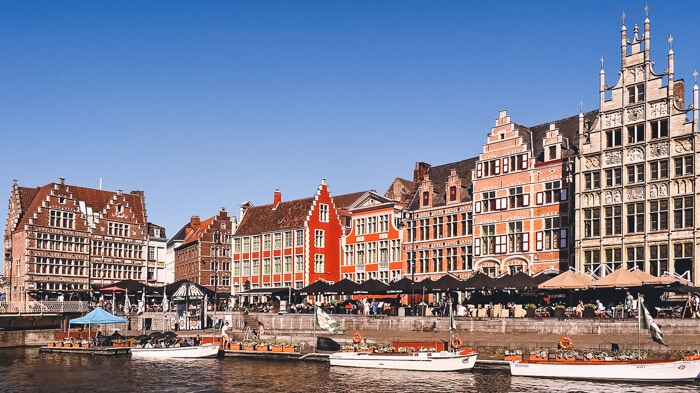
As for the rest of Belgium, you just need to mind your belongings in busy areas but the risks of getting pickpocketed are rather low outside of the big cities. The only other thing that could be dangerous over here is getting into a car. We're not the calmest drivers in the world and traffic can get a bit tense.
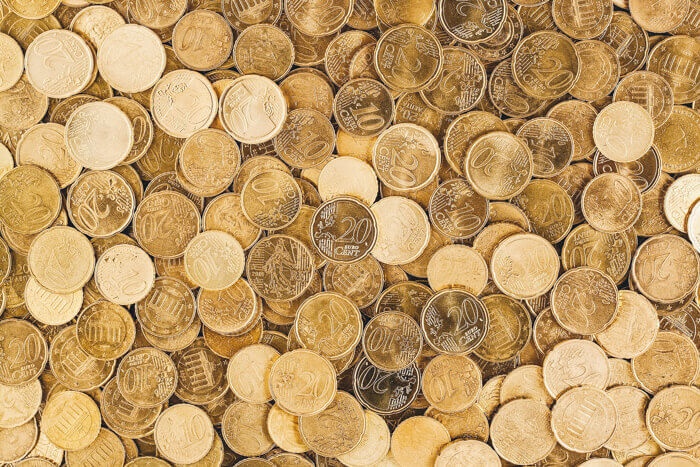
There are ATMs, usually from multiple banks, in every town and city. Just make sure to check the fees your bank charges for withdrawing money abroad beforehand so you know whether it's better to take out a big amount at once or not.
Traveling to Belgium from outside the EU and want to stay connected so you can share photos, call loved ones over WiFi and easily use apps like Google Maps? Then check out Solis Wifi mobile WiFi .
Skyroam offers both day passes and monthly subscriptions providing you with 4G throughout your trips. I've been using their daily passes not just when I travel outside the EU (no roaming charges for me in the EU) but also as a backup for when I think I'll go over my phone's data plan.
Tipping isn't mandatory in Belgium but as in many places, it is appreciated. All taxes and service are included in the bill and people working in the service industry make a living wage so it's common to just round up the bill at places like cafes or small eateries and to add whatever you think is suitable at restaurants.
For more specific guidelines, check out this section on tipping on your Belgium trip .
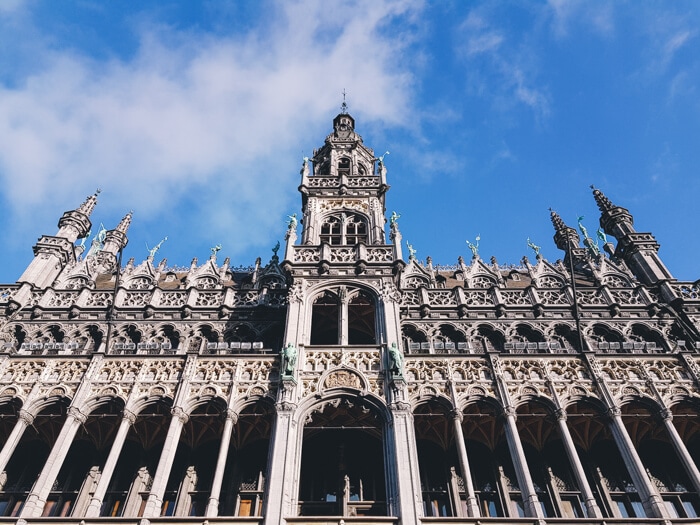
In the Middle Ages, Belgium was divided into smaller semi-independent regions such as counties and principalities which were under foreign rule, first by the French, then the Austrians, and then the Spanish. It knew a very brief period of independence in the 14th century after it defeated the French army following a rebellion.
After big European turmoils in the 17th century, Belgium became Austrian again at the beginning of the 18th century until the French annexed the country in 1795. Belgium stayed French until Napoleon was defeated at Waterloo in 1815 and it was merged together with the Netherlands.
The differences between the two were too big, though, and in 1830 a Belgian rebellion broke out that would lead to the official independence of the country in January 1831.
During the reign of the first king, Leopold I, Belgium continued the industrialization process that had started in the 19th century. The country knew a dark period with the rule of Leopold II, who made part of Africa, later known as Belgian Congo, his personal property and committed atrocities against the natives who he exploited mostly for harvesting rubber.
The Belgian Congo became state property in 1908, a year before Leopold II died and would remain a colony until 1960.
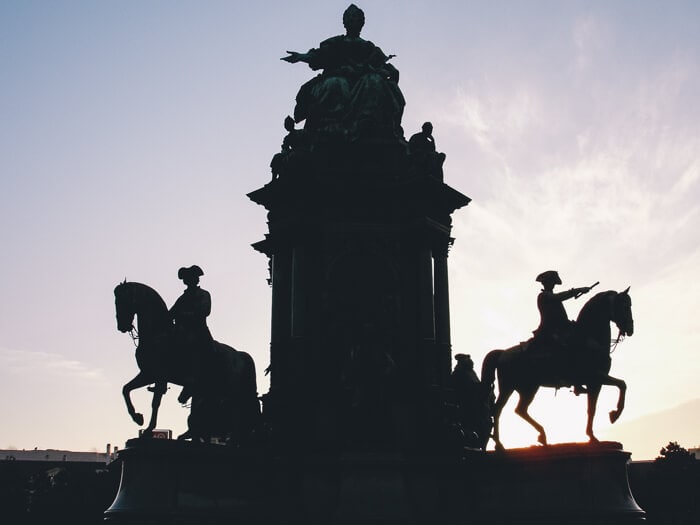
Later in the 20th century, Belgium suffered a great deal both during World War I and World War II when it was occupied by the Germans twice. It managed to recover quite well and became one of the founding members of the European Union and of NATO.
And that's it! I hope this guide to Belgium has given you an idea of what to do in Belgium and will help you plan your own trip here.
Find below the important posts about Belgium.

Dates of Holidays in Belgium 2024 [Annually updated]

Namur Travel Guide: 15 Best Attractions to visit in Namur!

Mons Travel Guide: 15 Best things to do in Mons, History, Attractions

Dinant Travel Guide: 17 Attractions to visit in Dinant, History, Hotels & Restaurants

15 Fun things to do in Ypres: A Visitor's Travel Guide

16 Best things to do in Ninove: Travel Guide, History, Attractions, Transportation & Markets

15 Amazing Things to do in Kortrijk: Travel Guide: History, Attractions, Transportation & Markets

15 Top Things to do in Tournai: Travel Guide, History, Attractions, Facts and Transportation

Ghent Christmas Market 2023-2024:🎅 Dates, Location, Attractions

15 Best restaurants in Brussels: Where to eat in Brussels?

19 Best Hotels to stay in Brussels – Neighbourhoods, Luxury, Hostels, Family and Airport Hotels

20 Fun Christmas Markets in Belgium to visit in 2023 – 2024

Mechelen Christmas Market 2023-2024:🎅 Dates, Location, Attractions

Charleroi Christmas Market 2023-2024: 🎅 Dates, Location, Attractions

Mons Christmas Market 2023-2024:🎅 Dates, Location, Attractions

Namur Christmas Market 2023-2024: 🎅 Dates, Location, Attractions

Ostend Christmas Market 2023-2024: 🎅 Dates, Location, Attractions

17 Best Bars in Brussels and their signature Drinks

Dinant Christmas Market 2023-2024:🎅 Dates, Location, Attractions

Louvain-la-Neuve Christmas Market 2023-2024: 🎅 Dates, Location, Attractions

Liege Christmas Market 2023-2024:🎅 Dates, Location, Attractions

10 Best Brussels Museums, Art Galleries and Exhibitions

20 Best things to do in Ardennes: My 4 day itinerary

29 Interesting Facts about Brussels
Brussels Travel Guide: 18 Best Things to Do, History, Facts and Hotels

Brussels Christmas Markets 2023-2024: 🎅 Dates, Location, Attractions

Visiting Hallerbos: The Blue Forest of Belgium

Visiting the Villers Abbey: Location, History and Guide!

C-mine Genk: Mining site turned to Cultural center

Fort Breendonk: Concentration camp turned National Memorial
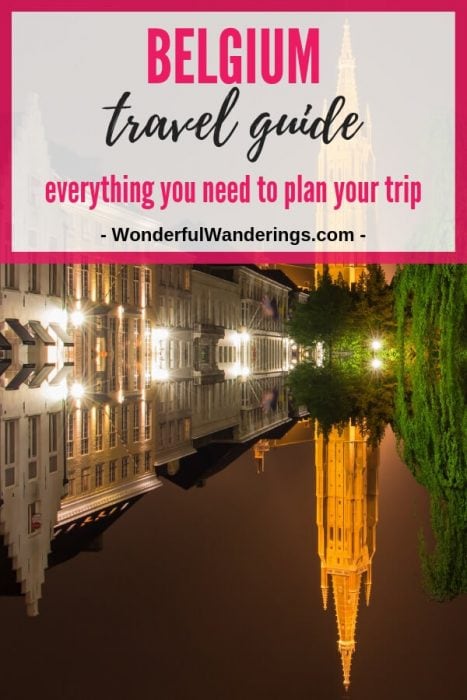
My Belgium travel guide contains affiliate links. If you book or buy something through these links, I earn a small commission at no extra cost to you.
Join 58,000+ other Wonderful Wanderers!
As an Amazon Associate I earn from qualifying purchases.

Best of Belgium in One Week: The Ultimate 7 Day Itinerary
As a neighboring country to Germany, where I now live , Belgium is super accessible to me. I take full advantage of this proximity, because I absolutely adore Belgium. I think it is one of my favorite countries in all of Europe. Why you might ask? Because it is charming, delicious, and full of the best things – all in humble, underrated, and relatively unvisited packaging. From its bustling cities to its quaint towns, Belgium has a rich and proud cultural heritage just waiting for you to explore!
I really believe that Belgium has something to offer everyone. I was so confident in this belief that I took my in-laws to Belgium on their first ever trip to Europe in 2022.
I’ve visited Belgium several times since moving to Germany in 2019, discovering new and wonderful things each time. Whether you're a history buff, a foodie, a beer snob, or simply someone looking for a laid-back getaway, Belgium is the perfect destination.
In this blog post, I'll be showcasing my favorite Belgian cities and places to help you visit the best of Belgium in just one week. From sampling the country's famous chocolate to visiting its world-class museums, this itinerary is packed full of exciting experiences.
What You'll Find In This Post
How to Spend 7 Perfect Days in Belgium

Overview of this Itinerary
I have designed the itinerary for first-time travelers to visit the highlights of Belgium in just one week. Belgium is a relatively small country, so one week is a comfortable amount of time to see most of the highlights. You won’t be too rushed, but you can still maximize your stay.
This seven-day itinerary will take you on a journey through some of the country's most iconic cities, including Antwerp, Ghent, and Bruges. I’ll also share a few hidden gems and off-the-beaten path places to help you fall in love with Belgium. You can see a map of the various locations below. You can prettily easily traverse all of Belgium in a few hours, so moving around is quick and easy.
I have set up this itinerary to be train-friendly. There is an extensive and reliable rail network connecting the whole country, which is run by the National Railway Company of Belgium (NMBS or SNCB for short). On my first trip to Belgium, we only used the trains and it was really simple. I definitely recommend this means of transportation, especially because of my goals to reduce carbon-emissions while traveling . You can buy individual tickets for the different legs, or a multi-route pass which includes a fixed number of rides.
Alternatively, you can rent a car and explore Belgium on a road trip. This itinerary will also work with a car, and I have used this approach before. It gives you lots more freedom to be spontaneous and see smaller towns. But, it is much more expensive (gas is really pricey) and parking can be a challenge, especially in the old cities and city centers. The road conditions are excellent though and weather isn’t a super big concern, so you can feel confident doing a roadtrip in Belgium.
Day 1: Brussels
Because Brussels is both the capital of Belgium and the European Union, most 1 week trips to Belgium will begin in Brussels. Thankfully, Brussels is a vibrant and multicultural city, and just the perfect introduction to Belgium. You’ll get a sample of beautiful architecture, delicious food, fascinating attractions and of course wonderful beer.
Pop into one of the amazing chocolatiers around Brussels to try some of the best truffles and pralines you’ve ever had in your life. There are lots of nice places to grab a Belgian waffle or frites around this area too.
One of the must-see attractions in Brussels is the Grand Place, a UNESCO World Heritage Site that is considered one of the most beautiful squares in Europe. On my first trip to Brussels, it happened to be on a national holiday, so the Grand Place was completely illuminated in a lights and visual show – such a cool first experience! Regardless of when you go, the square is surrounded by impressive guildhalls and the Gothic town hall.
Around the corner from the Grand Palace you can see one of the iconic attractions of Brussels – Manneken Pis . This small bronze statue of a boy urinating into a fountain has become a symbol of the city. Brussels is also home to several museums, including the Magritte Museum , which houses the largest collection of works by the famous Belgian surrealist artist, René Magritte. In addition, Brussels is a great city for art lovers, with many galleries and street art throughout the city.
Brussels is also famous for its beer, so doing a DIY bar crawl in the evening is a great idea. Start with À la Bécasse , a hole-in-the-wall spot covered in wood paneling and specializing in Lambics and other varieties of Belgian beer. Head next to Au Bon Vieux Temps , which is one of the oldest bars in Brussels. Dating back to 1695, this bar is tucked away in an alley so you might miss it on your first pass by. End at my personal favorite, Moeder Lambic Fontainas . With a large patio out front and an exceptional Lambic selection, this bar is usually full of cool locals.

Day 2: Antwerp
For an excellent contrast to Brussels, head next to Antwerp, Belgium’s historic port city. Antwerp remains relatively unvisited by the tourist masses and I was really surprised by how much I enjoyed my time in Antwerp .
For more detailed suggestions about what to see and do in Antwerp, check out my separate post highlighting the best that the city has to offer.
Easily accessible on a one hour train ride, you’ll be dropped off in what might be Europe’s most beautiful train station. Antwerp Central Station is a masterpiece of Art Nouveau architecture, with a towering glass roofed atrium, gilded details, multi-colored marble and massive clock. It feels like walking onto a set from a 1920s romantic movie.
From the train station, meander your way through the old city and to the redeveloped harbor area. The best part of the Old City is definitely the charming streets. Narrow alleys and picturesque squares are lined with quaint shops and cafes. My favorite narrow street is Vlaeykensgang Alley which has secret restaurants, perfect for lunch! Looking out over the waters of Willemdok, the hallmark of the harbor area is the Museum aan de Stroom (also shortened to MAS). With 7 floors of different exhibitions and galleries, MAS is another architectural marvel with red brick and glass sides. Plus it has a free panoramic view all the way at the top!
Day 3 & 4: Bruges
Bruges is known throughout the world for its medieval buildings, romantic vibes, and winding canals. In fact, the entire historic city center is a UNESCO World Heritage Site! While many tourists simply breeze through Bruges on a day trip from Brussels or Ghent, I believe it is worth at least an overnight if not two.
Because Bruges has so many cool things to see, I can’t include it all in this blog post. If you are looking for the perfect two day itinerary in Bruges, check out my separate post which includes all of my recommendations for an epic 48 hour visit in this gorgeous city.
One of the most charming and picturesque parts of Bruges is its canals. It is easy to enjoy the canals from land, especially on foot or by bike. They wrap around the whole city, and each one seems more picturesque than the last. You can also get out on the ware with a canal boat tour on one of the various companies offering chartered canal rides. Personally, my favorite way to get around in Bruges is by bike. It is safe and easy, and the compact city center means you’ll never be biking far before hitting your next cool attraction.
As the sun starts to go down, you’ll notice that the vibe in Bruges changes. It is a cool feeling to experience, although I find myself struggling to describe it. Just trust me, it’s worth experiencing. I would recommend making your way towards Rosary Quay around sunset time. Sitting at a bend in the canals, Rosary has a beautiful view over central Bruges. It is really nicely lit at night for epic night photography shots.

Day 5: Ghent
I was convinced to go to Ghent by a friend (who is dating a Belgian) because she said it was even more beautiful than Bruges. After visiting Ghent a couple of times, I totally agree and 100% recommend it. This Flemish-speaking city is often neglected in favor of more touristy places. As such, I am convinced Ghent is the most underrated city in Belgium! I would recommend at least 24 hours in Ghent to really soak in all the history, culture, and relaxed vibes of this gothic city.
Ghent is a perfect combination of storybook streets, romantic canals, bohemian flair and cosmopolitan amenities. A few of the important highlights to appreciate in the old town are the three medieval towers of Ghent. Clustered together in the center of town, you’ll want to have a look at Saint Bavo’s Cathedral , Saint Nicholas’ Church and the Belfry Tower . The best viewpoint to see all three towers at once is from the Sint-Michielsbrug arched stone bridge. It is especially nice around sunset when the lively student population clusters around the river.
Located in the heart of the Flanders, Ghent is also a surprisingly foodie city in Belgium . Ranging from casual pubs to high-end fine dining, you can really feel the pride Ghent residents take in their restaurant scene. You will find comforting Flemish specialties like rich fish stews and cured meats. Additionally, foodies can discover exciting global cuisine, veggie forward menus, and the freshest seafood you could want in Ghent.
Day 6: Dinant & Durbuy
So far, this 1 week Belgium itinerary has been mostly large cities. Why not get off-the-beaten-path and explore some of the charming small towns in Belgium? I recommend Dinant and Durbuy, two charming towns located in the Ardennes region in southern Belgium. One day in Dinant and Durbuy is the perfect amount of time to experience the charming atmosphere and rich history of these towns, and to enjoy the beautiful landscapes of the Belgian Ardennes.
Starting with Dinant, this small town is located on the banks of the Meuse River. Dinant has a strong musical culture with a famous musical instrument museum, and it hosts musical events throughout the year. One of the must-see sights in Dinant is the citadel, a fortified castle that sits high on a cliff overlooking the town. Visitors can take a cable car to the top to enjoy the panoramic views. Another popular attraction in Dinant is the Notre-Dame de Dinant cathedral, which is a beautiful gothic church that dates back to the 13th century.
After exploring Dinant, take a short drive or train ride to Durbuy. Dubuy is known as "the smallest city in the world" and it is well-worth a visit. It's a medieval village that will transport you back in time. More popular than Dinant, you are likely to run into at least a few tourists here. Thankfully, travelers don’t take away from Durbuy’s charm. From the cobblestone streets and old houses, to small shops and the castle in the middle of town, it is a very picturesque place. You can take a walk around and enjoy the atmosphere, or have a good meal in one of the local restaurants.
Of the destinations in this itinerary, these are the hardest to reach via train. The ride takes about 1 hour, but there are only regional (ie, slow) trains available. Although it is still possible to arrive by rail, driving is a more simple and efficient solution to visiting these small towns. The drive will take about 1 hour as well. With a little extra consideration, I promise these small towns will be worth it. The combination of cultural sights and natural beauty makes Dinant and Durbuy an ideal destination for visitors of all ages, with something for everyone to enjoy.

Day 7: Return to Brussels
As your wonderful week in Belgium comes to an end, it is time to return to Brussels to catch your flight back home. If you have a little extra time to spare, a notable attraction to visit in Brussels is the Atomium. It is located on the north side of the city, and it is a little bit out of the way. But, this unique structure was built for the 1958 World's Fair and has gained popularity recently thanks to Instagram. There is a park surrounding the structure, and you can also go inside for incredible panoramic views of the city.
What to Eat & Drink in Belgium
Sitting at the crossroads of many different European influences, such as France and Germany, Belgium’s cuisine pulls some of the best techniques and ingredients from its neighbors, synthesizing it into something entirely unique. Ranging from hearty stews to delicate pastries, Belgium is renowned for its delicious cuisine. Some of the must-try dishes include moules-frites (mussels and fries), carbonade flamande (beef stew), and waffles. I found Ghent was an especially foodie city , but I think you’ll find great things all over.
Make sure that you leave room for chocolate, because wow – Belgium has some of the best chocolate in the world .
Belgium is also famous for its diverse range of beer. The country is home to over 200 types of beer, with brands like Leffe, Chimay, and Duvel among the most popular. For the ultimate beer experience, my former bar-tender (and proud beer snob) husband Sam helped write the ultimate guide to Belgian beer . It breaks down everything you need to know about the different styles and where to find the best beer bars and breweries in Belgium.
Where to Stay in Belgium
I would recommend changing hotels once or twice in this itinerary. You could use a central city like Brussels as a home base for a few days, exploring nearby spots as day trips. Then, you could switch to another city, such as Ghent or Bruges, for the remaining few nights.
Lots of the cities in Belgium have a love for design, so you can expect some stylish boutique hotels. This is my favorite form of accommodation, and that is reflected in my hotel recommendations. My favorite place to stay in Bruges is the thoughtfully restored Hotel de’Orangerie . The hotel is built inside a 15th-century convent and has a very opulent and antique aesthetic. They have an afternoon tea on the canal which is simply delightful.
With an unparalleled location on Ghent’s main square and newly renovated interior, 1898 The Post is an obvious choice for accommodation in Ghent. This 19th-century, neo-Gothic post office building has been converted to a 38-room hotel with plush accommodations and unique design. We loved our comfortable stay in a lofted room with a private balcony overlooking Saint Nicholas' Church!
Finally, I can recommend the August in the southern part of Antwerp. It absolutely nails the chic modernist vibe inside of refurbished Augustinian convent. With 44 individually styled rooms, the details at August are impeccable. The bar and restaurant inside are absolute showstoppers from a design perspective, and the food is pretty darn good too!
What did you think about this post? Do you have any questions? Comment below and I can help!
Share this story
FIND SIMILAR POSTS

Everything You Need to Know About Belgian Beer & Where to Drink in Belgium

How to See the Best of Finnish Lapland in 7 Days

How to Plan the Perfect 1 Week Trip in Ireland
What is the best way to travel around belgium
Trains! The major cities in Belgium are all connected by a robust train system. Because Belgium is small, the distances and travel times aren’t super long either.
Thank you for the info. Do you have a hotel rec for Bussels? Greqt info. Heading there in may and f 2024.
I like the itinerary, but am confused about where to spend the nights? Can you clarify please?
Sure! I think there are a couple of ways you could do it. If you were really ambitious, you could change hotels in each city, following the order in the post. Or if you prefer to have more of a “home base” I think you could reorganize this a bit, and have a few nights in Brussels & a few nights in Bruges (visiting the other cities as day trips from there). I hope that helps!
Hi! Great post, thanks! I am going 1 week with a 6 and an 8 YO. Was thinking on staying in the same hotel as it is hard to pack and change everything with kids. Would it be easy to visit Bruges, Ghent and Antwerp one day each? Is any of the cities cheaper than brussels to stay? would a car be useful or is it too hard to park in the cities? Thanks!
Sounds like an awesome trip! Yes, you could definitely do each of those cities as a day trip, especially if you chose a central jumping off point. Ghent actually might be perfect, since it is in between Bruges and Antwerp, and you can easily get there from Brussels via train. While a car would be useful with kids, parking is definitely a challenge. Plus a big expense. I think you could do the majority of this itinerary via trains.
it’s an amazing blog. You have explained very well about these places. Very helpful for travellers and tourists. keep sharing. We Driveller offer limousine services Belgium to anywhere in Europe.
Cancel reply
Your email address will not be published. Required fields are marked *
Save my name, email, and website in this browser for the next time I comment.
By using this form you agree with the storage and handling of your data by this website. *
Belgium Itinerary: The Best Places in 3, 4 or 5 Days (2024)
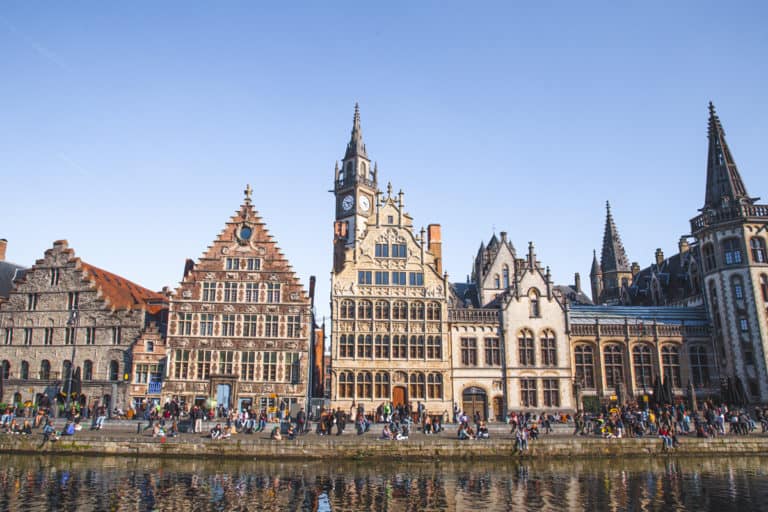
Belgium might not be the first place you would think of travelling to, but in fact, there are many good reasons to visit this country . With its medieval cities, enchanting castles and local delicacies, Belgium has a lot to offer. This Belgium itinerary is ideal for first-timers who want to see the country’s highlights .
As I am from Belgium and lived here for most of my life, I have come to know this little country quite well.
To see the best of what it has to offer, you will need a minimum of 3 days in Belgium . To get to know it better and get a real taste of what this country is all about, 4 to 5 days would be perfect.
So, depending on how much time you have in the country, here’s the perfect Belgium itinerary for 3, 4 or 5 days.
Belgium Itinerary for 3, 4 or 5 Days
The first 3 days of this itinerary will bring you to some of Belgium’s most beautiful places . However, if you have 4 or 5 days in this country, the next days will take you to some of the country’s most famous castles too.
Of course, you can easily switch things up according to your interests if you don’t have 5 days in Belgium.
Let’s dive into this itinerary!
Day 1: Brussels
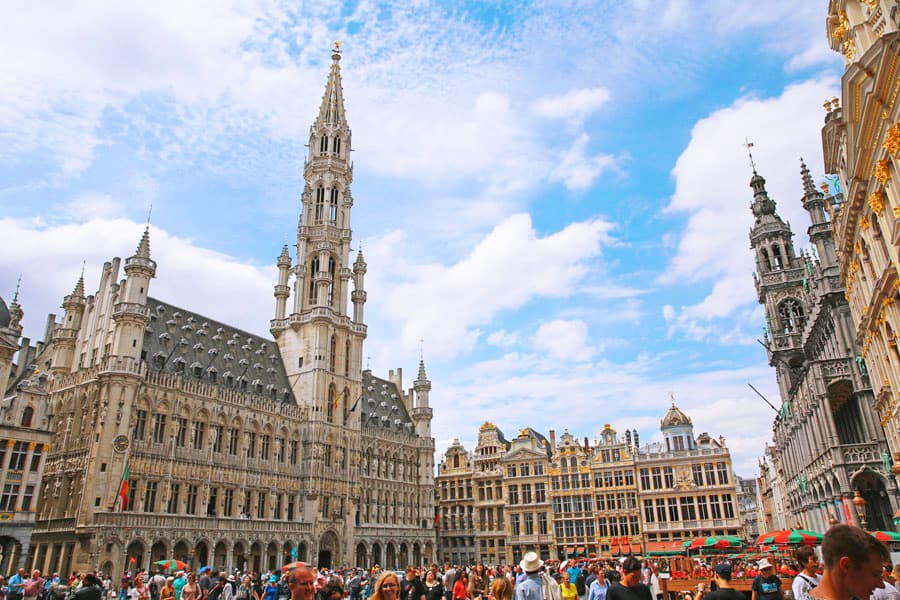
This itinerary for Belgium starts in Brussels, the bustling capital. Brussels is a lively city that is worth visiting and one that cannot miss on your trip to the country.
This city is famous for being the unofficial capital of the EU and the self-proclaimed “comic book capital of the world” and there are quite some things to see here.
To see the city’s highlights, one day in Brussels will be enough. However, you will need more than one day if you want to visit some of Brussels’ museums and areas outside of the city centre too.
Tip: Brussels is a good place to base yourself when you’re visiting Belgium . It is located in the middle of the country, which makes it easy to access any region from here (Brussels is super small, so nothing is far away).
Brussels’ highlights

- Grand Place: The Grand Place is a UNESCO World Heritage site with some pretty amazing architecture. This is Brussels’ main square and it is often featured on lists featuring the most beautiful squares in Europe .
- Manneken Pis: This famous statue of a peeing little boy is one of Brussels’ most famous landmarks . It is not far from the Grand Place and if you’re lucky, Manneken Pis will be wearing one of his 900 costumes.
- Galleries Royales Saint-Hubert: Built in 1847, this is Europe’s oldest shopping arcade. Apart from beautiful architecture, you will find plenty of luxury shops here.
- Mont des Arts: If you like beautiful views, you will love the Mont des Arts (“Mount of the Arts” in French), which is home to one of the most famous parks in Brussels. If you climb up this mount’s stairs, you will be rewarded with a beautiful view of the city.
- Saint Michael and Gudula Cathedral: It is in this cathedral that royal weddings, funerals and coronations take place. The Brussels Cathedral’s interior is quite sober and it has beautiful stained glass windows.
- Saint Catherine Church & La Tour Noire: French for the black tower, la Tour Noire is located right next to the beautiful Saint Catherine Church. This tower is part of the 13th-century city walls.
- Atomium: This giant molecule is a pretty unique landmark. It was built for the Brussels World’s Fair in 1958. As it is not located in the centre of the city, you will need to take the metro to get there.
- Beer tour: If you would like to taste some delicious Belgian beer, it is good to know that there are plenty of b eer tours in Brussels . You will learn more about this brew too if you decide to join one of these tours.
Fun fact: It rains for an average of 200 days in Brussels. Although it rarely rains all day, you will find the best indoor activities in Brussels in this post just in case.
Day 2: Bruges

Today, we’re heading to Bruges, one of the most charming medieval towns in Europe . Beautiful Bruges is located in the North of the country and visiting this city is one of the best things to do in Belgium , which is why it can’t miss from any itinerary for this country!
Note that if you’re using public transportation, it’s good to know that the train station in Bruges isn’t in the city centre. So you will need to take the bus to get there unless, of course, you want to walk.
Tip: If you would like to see Ghent too, it’s good to know that it’s possible to visit Ghent and Bruges in one day as these cities are just a 25-minute train ride apart. It will give you less time in Bruges, though.
Bruges’ highlights
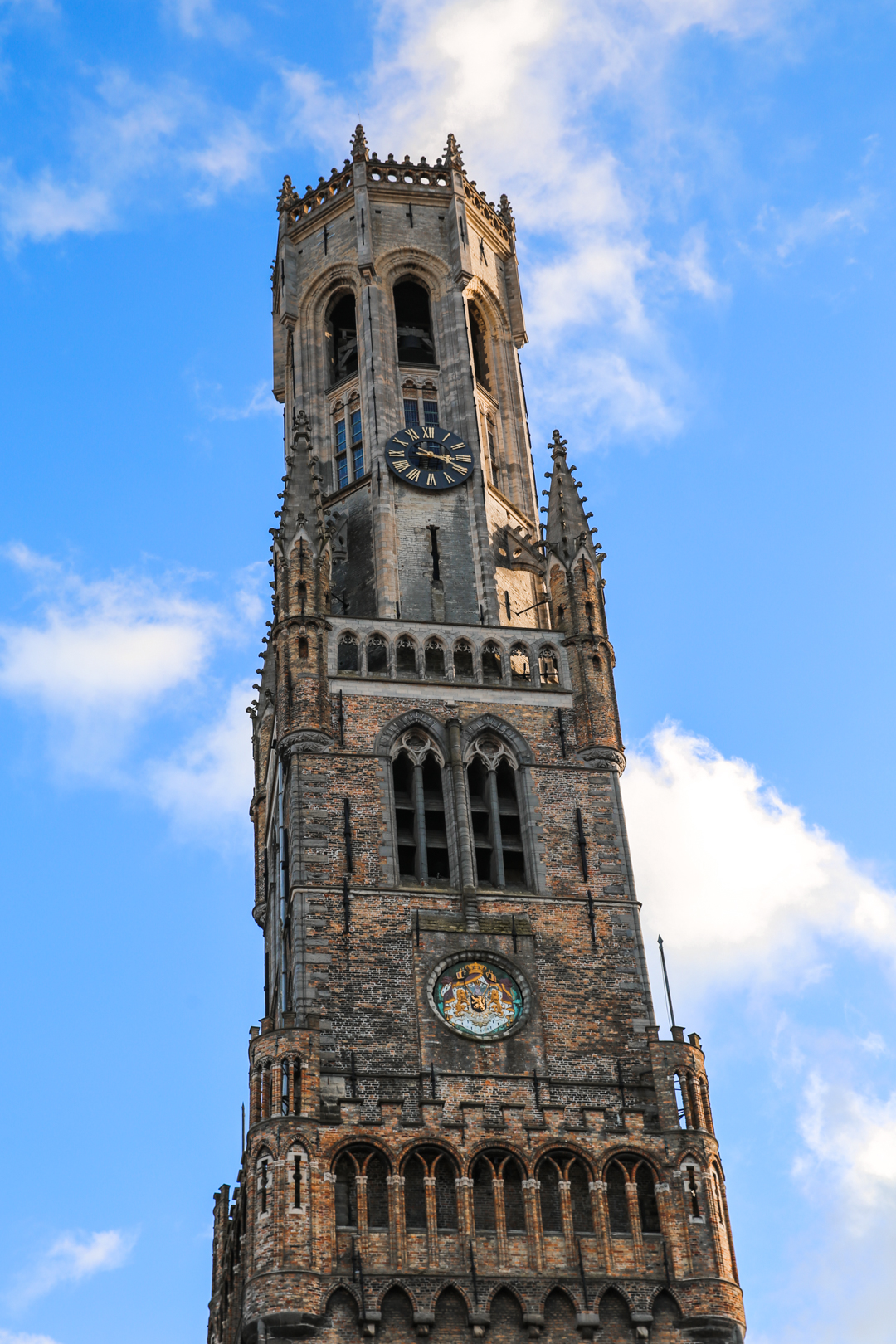
Bruges’ cobblestoned streets, medieval buildings and picturesque canals make it one of the prettiest and most romantic destinations in the country .
You will find the best places to visit in Bruges in one day below:
- Grote Markt: This square has been used as a market square since the 10th century. It is surrounded by beautiful guild houses, and this is the perfect place to start exploring Bruges.
- Belfry of Bruges: This medieval bell tower is located on Market Square, and it can be visited. If you decide to climb its 366 steps, you will be rewarded with a stunning view over Bruges.
- Basilica of the Holy Blood: The interior of this Roman Catholic basilica, located on Burg Square, is truly stunning! It was originally built in the 12th century and houses the relic of the Holy Blood .
- Rosary Quay: Head to the “Rozenhoedkaai” for a beautiful view of the canals with Bruges’ historical buildings as a backdrop. This is one of the most photographed sites in Bruges!
- Bonifacius Bridge and Church of Our Lady: The Bonifacius Bridge, with the Church of Our Lady right next to it, is a truly enchanting area and also one of my favourites in Bruges. It is said that you will experience eternal love if you kiss your loved one on this bridge. If you decide to enter the Church of Our Lady, you will be able to admire the famous Madonna and Child sculpture by Michelangelo .
- Beguinage: This former beguinage is one of the most peaceful parts of the city. It was once home to the beguines but the Nuns of the Order of St. Benedict now inhabit the place.
All in all, there are plenty of good reasons to visit Bruges , this is definitely one of Belgium’s most beautiful cities!
>> Check out my post featuring the best canal view hotels in Bruges if you would like to stay here for a night.
Day 3: Dinant and castles

On day 3 of this itinerary for Belgium, it is time to head to Wallonia , the French-speaking part of Belgium. Here, Dinant, the city of the saxophone, Walzin Castle and the Castle of Vêves are well worth visiting.
You can reach the city of Dinant by train from both Bruges and Brussels. However, if you’re coming from Bruges, the train ride will take approximately 3 hours whereas the ride takes a little less than 2 hours from Brussels.
Note that you can’t reach the castles surrounding Dinant by public transportation . The easiest option would be to rent a car for a day. If this is not an option, it is possible to take a taxi (a 15-minute ride) from Dinant.
Dinant’s highlights
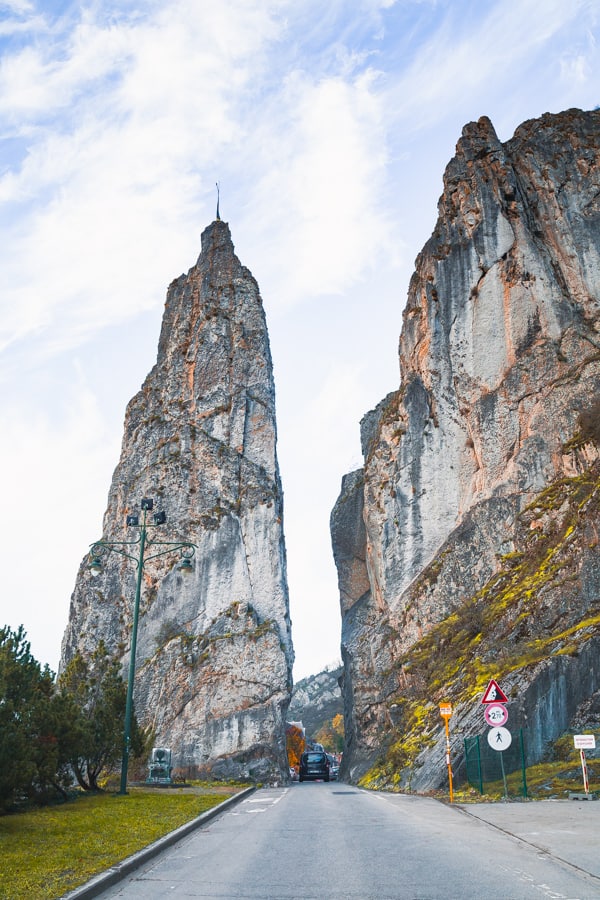
Dinant is most famous for being the place where Adolphe Sax, the inventor of the saxophone, was born. This is a charming city with some interesting things to see and do.
This city is quite small, so half a day here should be just enough. Here are some of the best places to visit in Dinant :
- Citadelle de Dinant: Standing high on the Dinant rock, the Citadel of Dinant is the place to go for a beautiful view of the city. There is a history and weapon museum inside that will teach you more about the history of Dinant.
- Notre Dame de Dinant: Notre Dame de Dinant is an eye-catching 13th-century cathedral with beautiful stained glass windows. Make sure not to miss it during a visit to this town.
- Saxophone Bridge: This bridge crosses the River Meuse. It is decorated with 28 colourful saxophones, each representing one of the countries of the European Union.
- Rocher Bayard: If you’re entering Dinant by car, Rocher Bayard is this city’s first famous landmark that you will encounter. This 35 m (114.8 ft) high rock formation is split in two, and the road goes right through both parts.
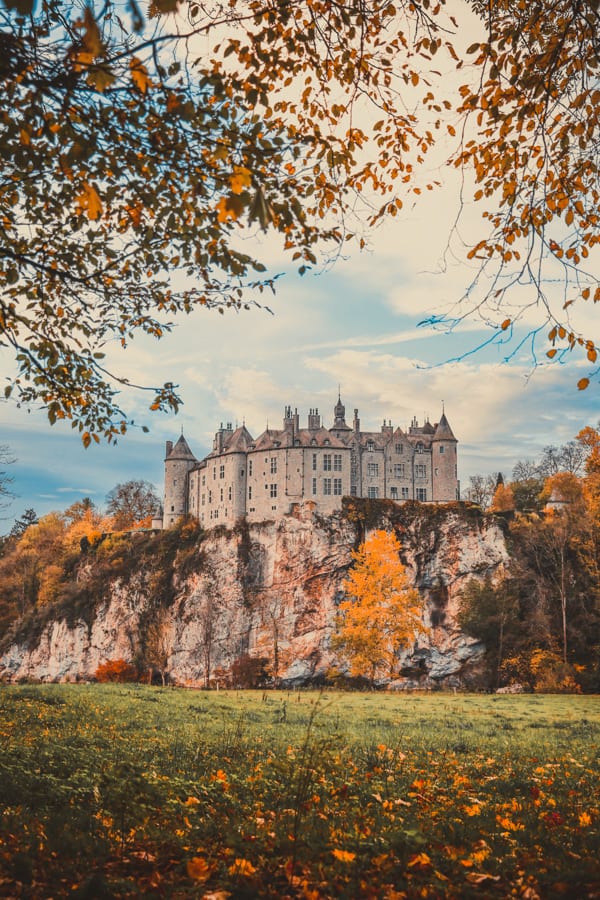
Vêves Castle
The medieval Vêves Castle looks as if it is coming straight out of a fairytale, which is probably the reason why it is often called Sleeping Beauty’s Castle . It towers above the village of Celles, and both its interior and exterior are stunning.
The ground on which Vêves Castle was built has a rich history that dates back to the time of Pépin de Herstal (685), a Frankish statesman and military leader. The current castle, however, was built in the 15th century.
If you would like to stay the night in an enchanting castle, it’s good to know that there are plenty of castle hotels in Belgium . Some of them are near Dinant.
Walzin Castle
Contrary to Vêves Castle, Walzin Castle can’t be visited on the inside because it is privately owned. Its stunning location, however, perched high on top of a rock, makes it one of the most beautiful castles in Belgium .
Vêves Castle was built during the 11th century and later destroyed. The castle has undergone multiple restorations since, and today, only the original watchtowers remain.
Tip: As Vêves Castle and Walzin Castle are pretty close to each other, it is possible to hike from one castle to another. This hike is 15 km (9,3 mi) long, and it will take you through the beautiful Nature Park of Furfooz. In my opinion, this is one of the best hikes in Belgium .
Day 4: Antwerp

If you have 4 days or more on your Belgium itinerary, it is time to head to Antwerp today. This Flemish city is a 40-minute train ride from Brussels or a 2.5-hour ride from Dinant.
Antwerp is the diamond capital of the world . This is a beautiful city with many interesting sights and it has an interesting legend too.
The Legend of Antwerp According to the legend, the name Antwerp comes from “hand werpen”, which means “to throw a hand” in Dutch. The story goes that a long time ago, the mythical Roman soldier Brabo killed a giant that demanded a toll on people who wanted to enter the city. If people refused to pay, the giant would cut off their hands and throw them in the River Scheldt. Brabo then decided to fight the giant by cutting off his hand and throwing it into the river.
You will find a statue of Brabo throwing away the hand of the giant on the Grote Markt.
Antwerp’s highlights

- Central Train Station: This station is often featured in lists of the most beautiful train stations in the world and it’s one of Belgium’s most famous landmarks . This is the first place that you will see if you’re visiting Antwerp by train. If not, make sure to head there and check out the station’s impressive main hall. You won’t be disappointed!
- Diamond District: Antwerp’s famous diamond district is located right next to the train station. This is the part of the city where diamonds are traded and where you will find plenty of jewellery shops.
- Grote Markt: The Grote Markt is the main square of Antwerp, and it is stunning! Beautiful guild houses surround this square, and you will also find a fountain of Brabo here.
- Cathedral of Our Lady: The 123-m (402.5 ft) high Cathedral of Our Lady is the tallest Gothic building in the low countries. It houses an impressive art collection that includes works of Flemish artist Peter Paul Rubens .
- Vlaeykensgang: This picturesque alleyway dates back to the 16th century and this used to be a very poor area. Today, however, antique shops and art galleries dominate this area.
- MAS Museum: The MAS Museum houses many interesting exhibitions, and even if you don’t feel like visiting a museum, this is a must-see location. The modern red building in which the museum is housed has a rooftop terrace that is free to access. You will have some of the best views of Antwerp from here.
- Rubenshuis: This museum is located in the building where the famous painter Rubens’ home and workshop were. You will find a collection of his work inside and you will get to see where he painted many of his paintings.
Read m y one day in Antwerp itinerary to find out how to spend a perfect day in this city.
❗The Rubenshuis is currently closed due to renovation works. It will reopen in 2026.
>> Check out my post featuring the best hotels in Antwerp if you would like to stay here for a night.
Day 5: Bouillon

On the last day of the 5-day itinerary for Belgium, it is time to head to Bouillon. This is a beautiful destination in the Walloon Semois Valley of Belgian Luxembourg
If renting a car is not an option, you will have to take the train to Libramont and TEC bus number 8 to get there.
Libramont is a 2-hour train ride from Brussels and a 3-hour ride from Antwerp. The bus ride from Libramont to Bouillon takes another hour.
Castle of Bouillon
The Castle of Bouillon towers high above the city. Its history dates back almost a thousand years, and it was once owned by Godfrey of Bouillon – one of the leaders of the First Crusade.
You can visit the castle’s chambers and dungeons while learning about its history. While you’re there, you will also get to enjoy the wonderful view over Bouillon and its surroundings.
Hiking in the Semois Valley

After visiting the Castle of Bouillon, one of the best activities in the neighbourhood is to go for a hike. The Semois Valley is a stunning region that includes the Tombeau du Geant , which is argued to be the most beautiful view in Belgium.
It is good to know that there are many hikes around Bouillon . Some start from the city itself but to get to the starting point of some others, you will need a car.
Whichever hike you choose, you will be rewarded with some amazing landscapes!
Belgium Itinerary Map and Schedule
- Day 1: Arrive in Brussels and visit Belgium’s capital
- Day 2: Take a day trip to the medieval city of Bruges (and Ghent if you want to make an extra stop)
- Day 3: Visit Dinant, Vêves Castle and Walzin Castle in the Walloon Region of Belgium
- Day 4 (optional): Spend a day in Antwerp, the diamond capital of the world
- Day 5 (optional): Go to Bouillon, visit the castle and hike in the Semois Valley
It is good to know that Belgium is a small country and that the distances are short . Therefore, you can easily base yourself in Brussels and take day trips from here during your visit to Belgium.

How to Get to Brussels
Brussels is most likely the place where you will start your Belgian trip. The country’s capital is a well-connected city that can easily be reached by air , train or bus .
Zaventem Airport is 15 km (9.5 mi) from Brussels’ city centre and, from here, you can take a taxi, train or bus to get to the centre.
It’s also possible to head straight from Brussels Airport to Bruges and switch things up a little.
How to Get Around Belgium
Most parts of this itinerary can be done using public transportation , and all the cities that are mentioned are easily accessible by train.
Keep in mind, though, that you will have to walk a bit (or take the tram or bus) to get to the centre of the city from the station of Bruges (and Ghent if you decide to visit this city too).
If you want to visit the Castles of Vêves , the Castle of Walzin and the Semois Valley , however, you will either have to take a taxi or rent a car, which brings me to my next point.
The most flexible way to follow this Belgium itinerary is by renting a car . However, finding a parking spot in cities can be quite challenging and expensive unless you park your car further away from the city centre.
My recommendation: Visit Brussels, Bruges and Antwerp by train. Then, rent a car to visit Bouillon and Dinant. This way, you won’t need to stress about finding a cheap parking spot in the bigger cities, and you will be able to easily visit the castles and go for hikes.
If you want to rent a car in Belgium , I recommend using Discover Cars . This website checks various companies to make sure you get the best rates.
Best Time to Visit Belgium
The best time to visit Belgium is during April , May , June , September and October . At this time of the year, the weather will be pleasant and it is not peak season (this is in July and August).
If you don’t mind the peak season, July and August are good months to visit Belgium too, but hotels might be more expensive at this time of the year. July and August are school holidays in Belgium, and it tends to be more crowded during these months.
This being said, Belgium can be visited all year round. It will be colder and there will be more rain during the winter months ( December to March ), though.

Tips for Visiting Belgium
- If you’re getting around with public transport , use Omnio to check train schedules and book your tickets online.
- Belgium is a small country and the distances between places are short. So, you could easily base yourself in Brussels , which is in the middle of the country, and take day trips from here.
- Make sure to try some delicious Belgian chocolates , fries and beer while you’re in Belgium – they’re the best!
- There are many other beautiful places in Belgium, it all depends on your interests. I have a lot of content about this country so check out some of my other posts about Belgium to make sure that you won’t miss something you might like!
Belgium Itinerary FAQs
How many days are needed in belgium.
Belgium is a small country but there are some nice places to see. I recommend staying here for a minimum of 3 to 4 full days. This way, you will be able to see the country’s highlights and get an idea of what this country is all about.
Are 3 days enough in Belgium?
Three days are enough to see Belgium’s highlights. You can visit Brussels, Ghent, Bruges and Dinant in 3 days. If you have more time, however, you can head to Antwerp and the Semois Valley as well.
What should you not miss in Belgium?
Some of the places that you cannot miss on a visit to Belgium are Brussels, Bruges and Ghent. If you have more time, however, there are many other great things to do in Belgium.

Belgium Itinerary: Final Thoughts
And voila – this was my recommended itinerary for 3, 4 or 5 days in Belgium. I hope that you found exactly what you were looking for and that you will enjoy your trip to my home country! Belgium might indeed be small, but it does have a lot to offer.
If you have more time to spare in this country, I would recommend checking out my post with the best day trips from Brussels too. I spent a lot of time exploring Belgium during the pandemic and discovered some interesting places here!
Read more about Belgium:
- Backpacking Belgium: A Local’s Guide
- Benelux Itinerary: The Highlights in 10 Days (+ Map)
- The Best Hikes in Belgium
- The Most Beautiful Places in Belgium
- Reasons to Visit Belgium: Why it’s Worth Visiting
- Best Theme Parks in Belgium
- Souvenirs From Belgium That Don’t Suck
- Best Day Trips from Brussels: Ultimate Guide
- What is Belgium Famous For? The Most Surprising Facts
Belgium Travel Planning Guide
🛫 Find the cheapest flights to Belgium on Skyscanner . 🏨 Find the best accommodation via Booking or Hostelworld . 🚃 Use Omnio to book public transportation in Belgium. 🚗 Rent a car with Discover Cars to get the best rates. 💰 Get travel insurance via Visitors Coverage , one of the best-reviewed travel insurance companies. 📋 Don’t forget to check if you need a visa to visit Belgium
Pin it for later: Did you find this post helpful? Save it on Pinterest and follow me on Instagram and Facebook for more travel tips and inspiration.

Laura Meyers
Laura Meyers is the founder of Laure Wanders. She was born in Belgium and has travelled to over 40 countries, many of them solo. She currently spends most of her time between Belgium and South Asia and loves helping other travellers plan their adventures abroad.
You may also like
Radhadesh: a hare krishna temple in belgium (2024..., 8 best heritage hotels in ghent (2024), 12 epic hikes in belgium (castles, viewpoints &..., 11 epic things to do in dinant, belgium..., 48 hours in scheldeland: scenic walks and alpacas, a local’s complete guide to brussels, belgium (2024), 12 reasons to visit belgium in 2024, 18 monuments in brussels you cannot miss [local’s..., paris to bruges day trip: 3 ways to..., 52 best quotes about belgium to inspire your....
Waffles is also good choice. BTW I’m really happy to say it was an interesting post to read. I learned new information from your article, you are doing a great job. Continue
Waffles are delicious! And so is chocolate :p Thank you for your lovely message, I appreciate it! 🙂
Do you offer private tours? We will have 4-5 days and want to do Brussels, Ghent snd Bruges by private car. We were thinking 2 days Brussels, one day Ghent and two days Bruges.
Hi Shanea, nice to hear you’re planning a trip to Belgium! 🙂 I don’t offer private tours, so I can’t help you with that, unfortunately. Best of luck!
Get back to me as soon as possible we need an itinerary for visitors coming over her soon .
Came across your blog whilst planning my upcoming trip next month. This is going to sound like a silly question but if im staying in brussles and using public transport such as trains if i was to go to bruges and ghent. If i got a return ticket from brussels to bruges can i stop off on the way and walk round ghent or do i have to get tickets from station to station. Thanks in advance.
Hi Melisa, it’s not a silly question, it’s a good one actually! As long as you’re using your ticket on the same day, you can get off the train in Ghent and then continue to Bruges with a ticket from Brussels to Bruges. 🙂
Leave a Comment Cancel Reply
Save my name, email, and website in this browser for the next time I comment.

20+ Belgium Travel Tips for First Timers & Must Knows Before You Go
Last Updated: July 6, 2023
*FYI - this post may contain affiliate links, which means we earn a commission at no extra cost to you if you purchase from them. Also, as an Amazon Associate I earn from qualifying purchases. Check out our Privacy Policy and Disclosure. for more info.
With a reputation upheld by the wonders of excellent beer, fine chocolates, world-class waffles, and most importantly: the invention of fries, Belgium is one of those countries that you (and your taste buds) can adore easily from afar.
But for the lucky ones who have a chance to see Belgium for real – there’s are many, many things you need to know.
While it’s easy to imagine Belgium as a whimsical comic strip of treats and delights, the reality can catch first time visitors off-guard, with many cultural quirks and easy tourist mistakes that can jade even the most optimistic of travellers.
Truthfully, it took me a while to fall for Belgium. With Brussels as my only point of reference on my first ever backpacking trip, I found myself caught in enough common traps that I wasn’t sure I’d ever visit again.
But now, a decade (and six visits later), I can safely say Belgium is an amazing country to visit…. you just need to be prepared.
So, in this post I’ll be sharing all THE must-know Belgium travel tips to ensure you love it on your first try. And first fry. I hope you find these Belgium tips useful!

Save this list of Belgium Travel Tips for later!
You’ll be very glad you did.
1. Understand Belgium’s two main regions
First thing’s first, it’s important that you understand one of the more unique features of Belgium: the clear divide between its two main areas: Flanders in the North and Wallonia in the South – each with their own language.
Flanders is the Flemish speaking part of Belgium, so this is where they speak Flemish, or the local variation of Dutch… and Wallonia is the French-speaking part of Belgium, with the exception of a tiny part which speaks German.
So, while the official languages of Belgium are Flemish, French, and German, you’ll find that it’s more that different regions have different predominant languages, and not that everybody speaks all three all the time.
Brussels, the capital, is kind of the exception to this – it is officially considered bilingual so French and Flemish are both spoken, although from personal experience people definitely speak more French there.
Why is this important to know as a traveller? Well, you’ll encounter each of these official languages depending on where in Belgium you visit, so be sure to research for your destination so you know which language to say hello and thank you in… although English is also very widely spoken.
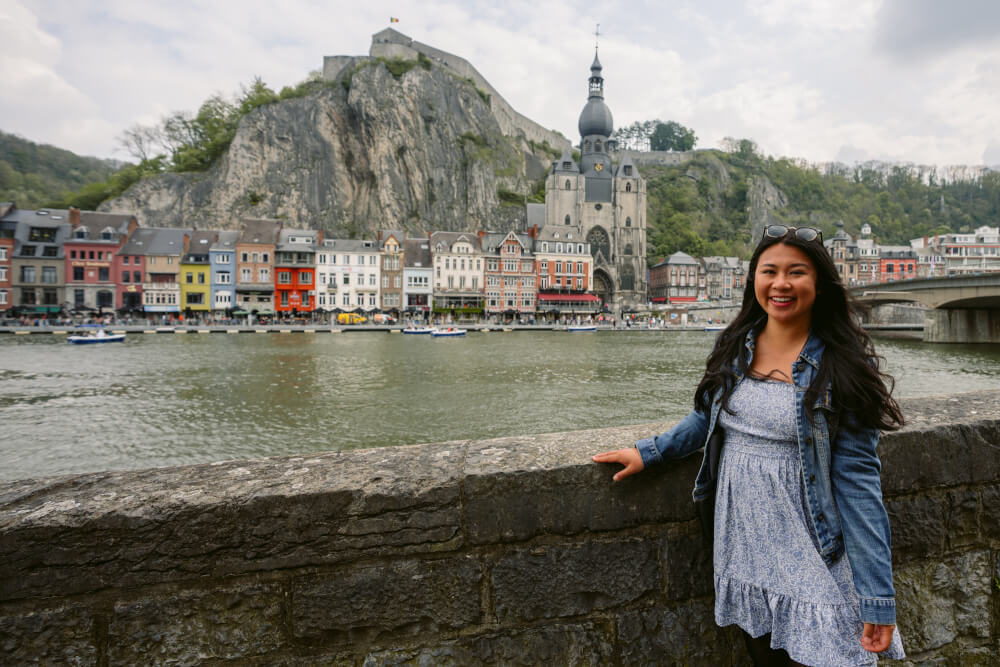
2. Beware that most places have a different name in French and in Flemish
Given these different languages, one of the most important things you need to know as a visitor is that destinations in Belgium will have different names in French and Flemish.
This can get especially confusing when you’re at train or bus stations, because both names be used, plus the names themselves are sometimes different to the English names that we know.
Take Antwerp for instance – we know it as Antwerp in English, but in Flemish it’s Antwerpen, and in French it’s Anvers.
Similarly, Leuven in French is Louvain, Ypres in Flemish is Ieper, and my personal favourite, de Haan is Le Coq.
Now most of the time the names are similar enough that you can logic your way through the situation, but in stressful scenarios like breathlessly running for a train, this additional hurdle can mean the difference of catching your train, or missing it as you stress and cry.
So, remember to learn the names of all your destinations in both Flemish and French. Here is a helpful table for some of Belgium’s more visited cities:
NOTE: This Belgium language tip also applies to train stations, so for example Bruxelles-Midi is actually the same station as Brussel-Zuid.
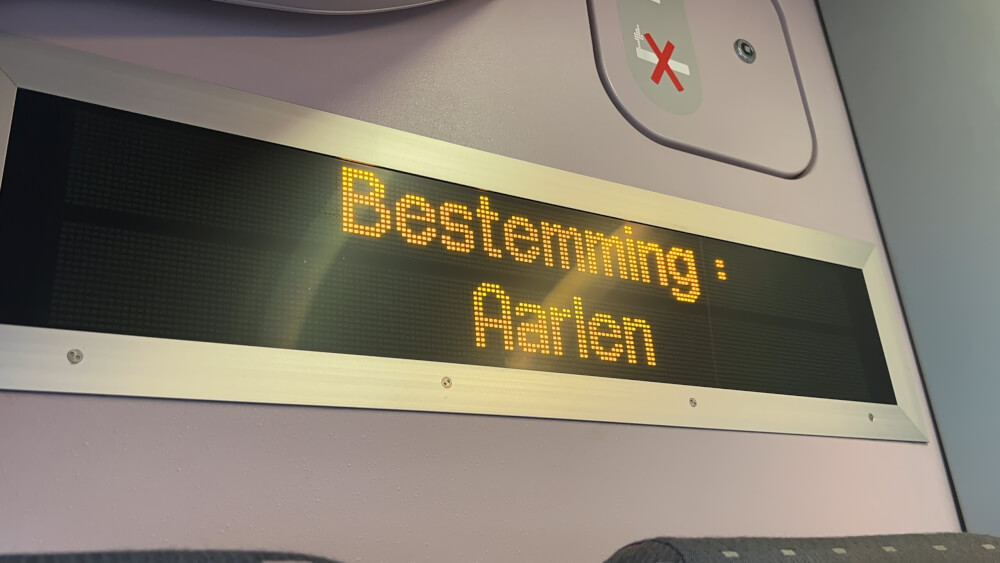
3. Don’t spend all your time in Brussels
One of the most fatal mistakes that first time visitors make in Belgium is they only visit Brussels.
Allow me to indulge in some aggressive through-the-screen shoulder shaking. Do not. I repeat… do not. Limit your Belgium trip to just Brussels.
Brussels is a big city with common ‘big city’ issues to match, from pickpockets and crowds to not-so-desirable areas. While it has a lot of unique museums and attractions to offer those who dig deeper, many first timers (myself included) will find it pretty boring to visit for more than a day or two.
So, I’d recommend adding smaller Belgian cities to your itinerary so that you’re better able appreciate the country’s charm: Bruges , Ghent and Antwerp are all great picks for 2-3 days, while Dinant and Leuven are great one day wonders.
Of course, there’s also plenty of natural beauty in Belgium like around the Ardennes that flies under most tourist radars.
All that to say, if there’s one single Belgium tip that stays with you from this post, let it be that there is MUCH more to see in Belgium than Brussels!
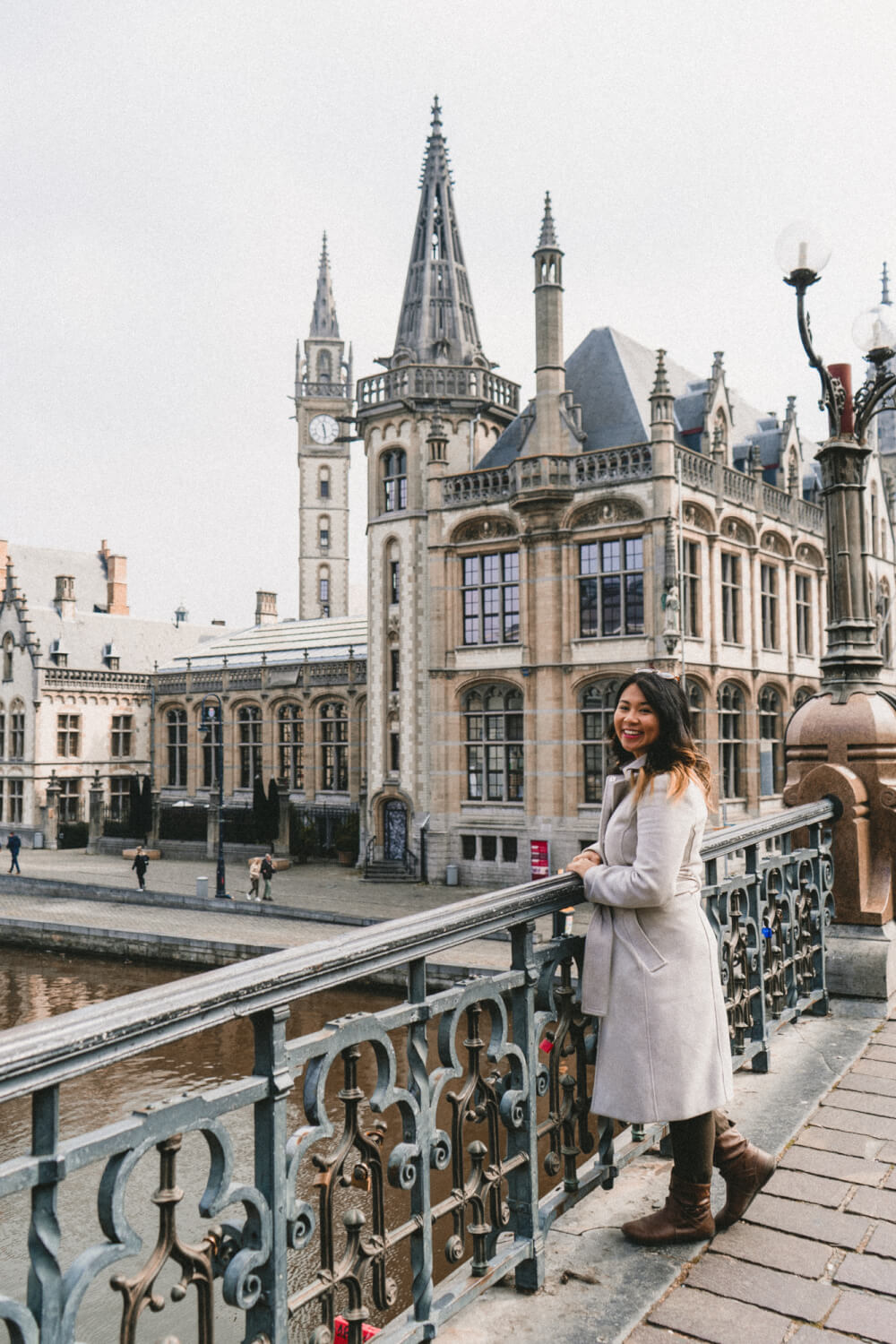
4. That said, if you do go to Brussels, do it properly
Brussels is often named among the most disappointing cities in Europe, and while I did agree with this claim once upon a time, I now find it kind of unfair.
The issue with Brussels (in my opinion) is that most visitors flock to the wrong places. Manneken Pis for instance is often billed as THE must-see attraction of the city, but in reality it’s a tiny little statue that takes less than 5 minutes to see.
Instead, where Brussels shines is the many, many unique museums and quieter neighbourhoods more removed from the tourist centre.
I do have a full article with Brussels tips if you want more pointers, so be sure to give that a read and see other mistakes to avoid.
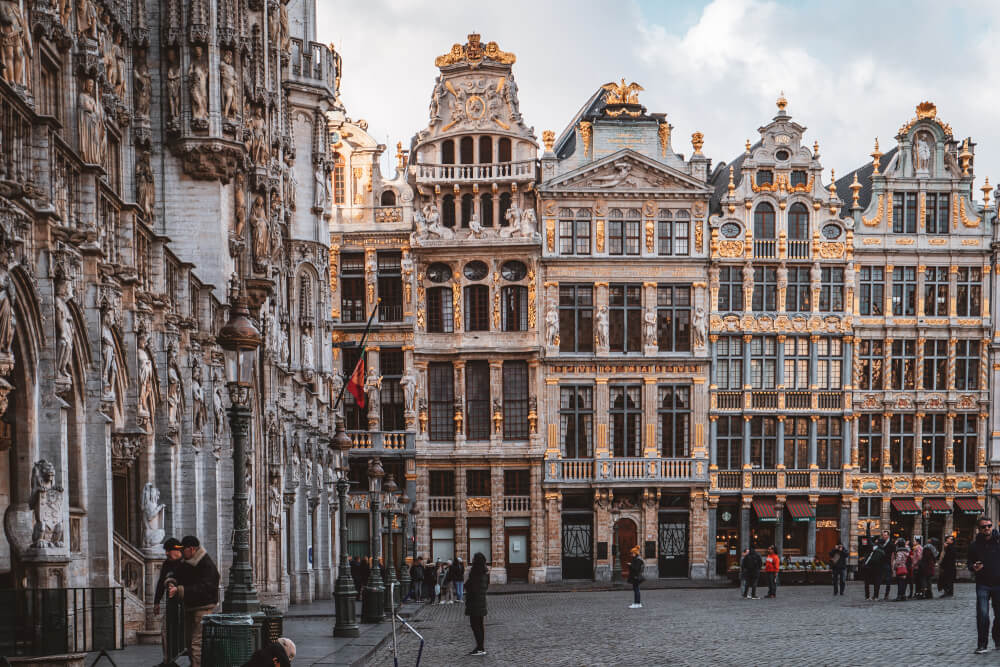
5. Plan your trip for shoulder or off-season
Now in terms of when to visit Belgium, I would recommend going in shoulder season or even off-season, just because a lot of the best places to visit are cities, which are usually enjoyable no matter the weather.
Summer season can get really busy with both international and domestic travellers, so for the least crowded experience, I would avoid the peak summer months from July to August.
Plus, your chocolate won’t melt as quickly, so there’s that too.
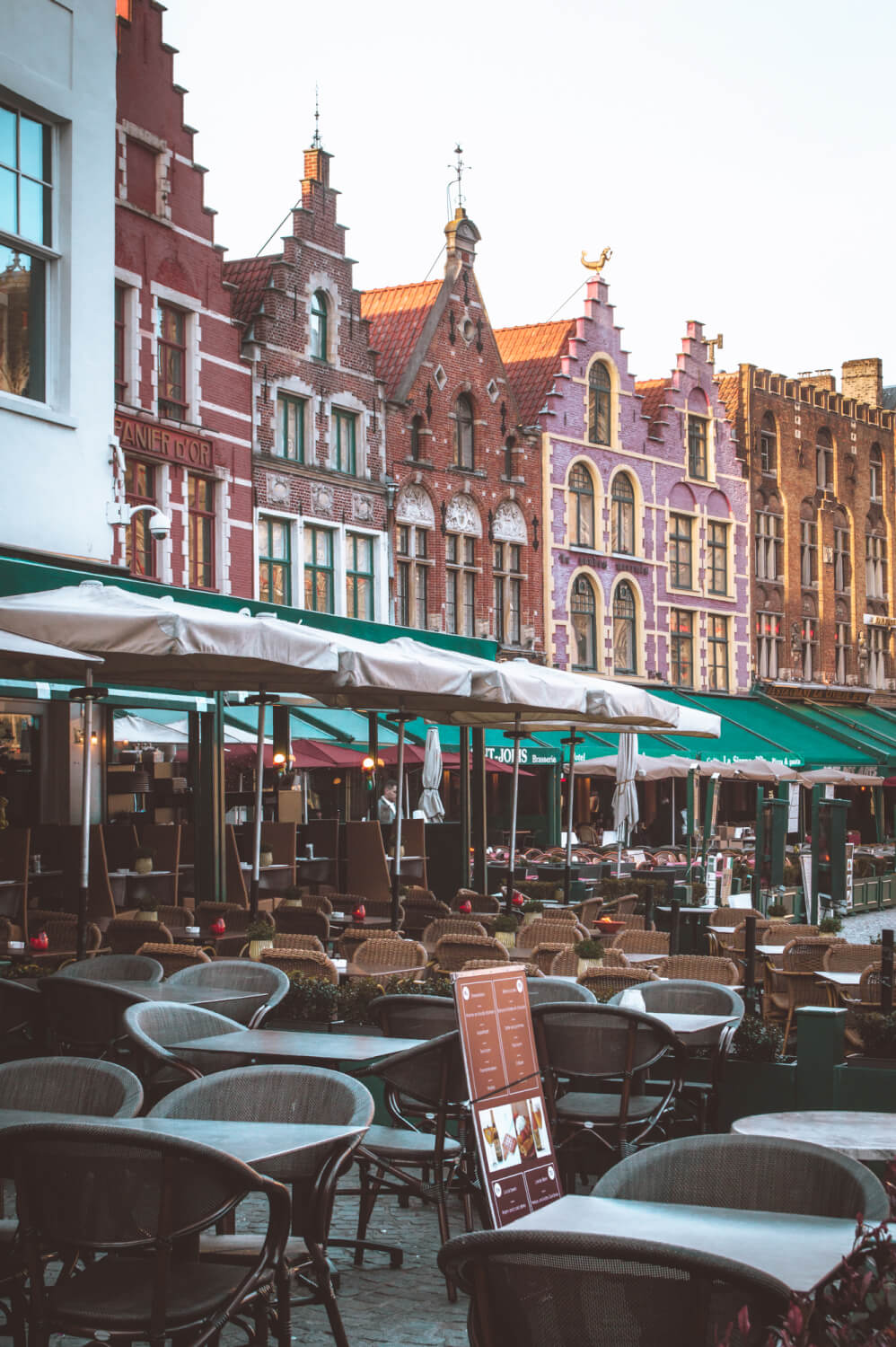
6. Plan your trip for quirky Belgian Festivals
If you’re really struggling to decide when to visit Belgium, I’d recommend looking into festivals and folk events to attend.
One of the most amazing things about Belgium is that it has a ton of unique cultural folk celebrations you won’t find anywhere else in the world.
There’s this one TikTok account I’m obsessed with called @LunaDiscoversBelgium with tons of videos showcasing these, but some of my favourites include:
- Giant omelette day in Malmedy : Every year on August 15, they literally make a giant omelette out of 10,000 eggs and dish it up for the public so everyone can have a piece.
- St Niklaas Peace Festival: Every year in the first weekend of September, they release hot air balloons in all sorts of unique shapes from the city centre.
- Aalst Carnival : An annual three day event in February where they go all out with crazy floats and costumes.
Lastly, it’s worth mentioning the Brussels Flower Carpet which takes place every 2 years and covers the main square in a giant carpet made out of flowers. How magical.
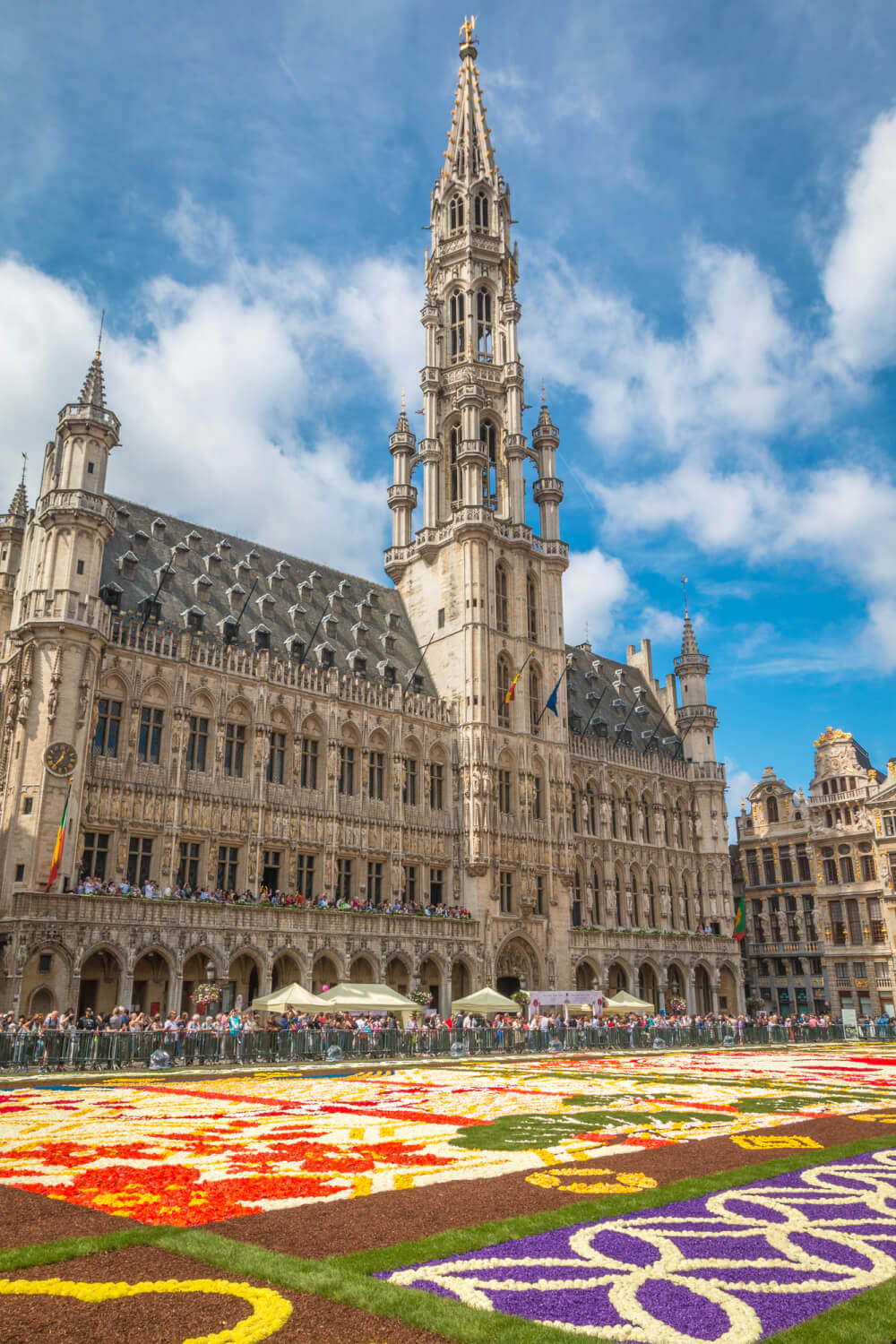
7. Take advantage of Belgium’s many train discounts
I’m a huge advocate for travelling around Belgium by train over renting a car for a few different reasons – first off, Belgium is incredibly well connected by train, and second, train travel here is astoundingly affordable, largely thanks to a number of enticing discounts.
Here are some to look out for:
Youth Ticket (Formerly Go Pass 1) : A ticket for those under the age of 26 that allows you to buy a single train ticket for €7.10 to any destination in the country. This is way cheaper than paying full-price!
Standard Multi (Rail Pass): Gives you 10 trips to use over the course of a year for €96, and these trips can be transferred to other people in your party, so this can be an easy way to save money if you’re travelling in a group. Also available as the Youth Multi (for those under 26) which is even cheaper.
Weekend Ticket: If you plan your day trips or side trips for a weekend, you can actually save 50% off your fare with a weekend ticket, which is valid for return trips that leave after 7pm on Fridays and return before Sunday.
Discovery Tickets: Give you 50% off your return train ticket, so long as you’re using it to visit an attraction that’s on their list. Similarly, you can use Bravo Tickets which give you 50% off if you’re going to one of the concerts or festivals on their list.
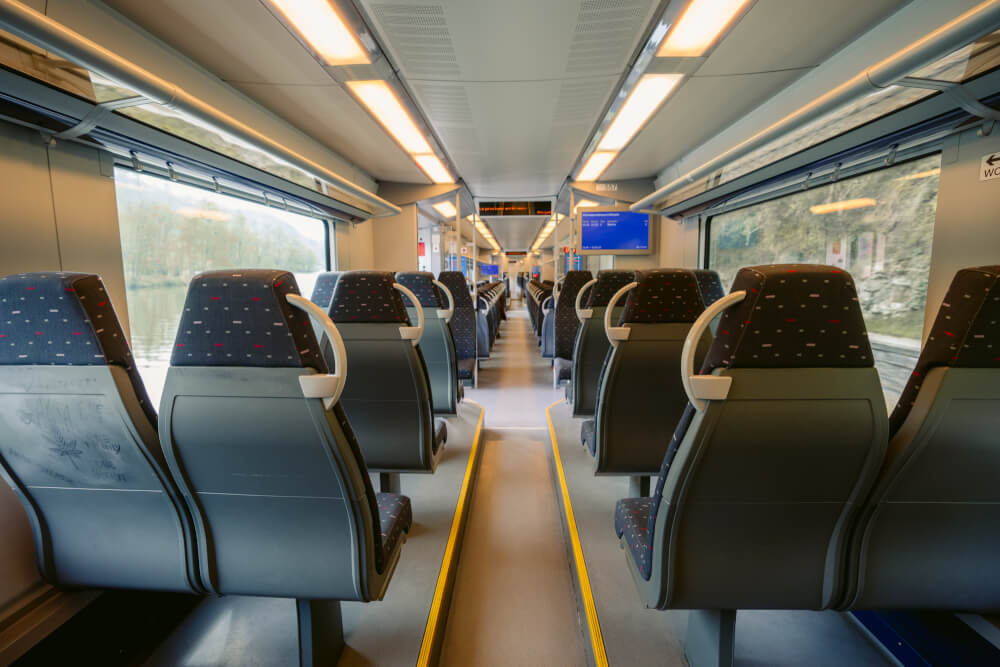
8. Take note of Belgium’s most beautiful train stations
Besides the amazing deals, another reason to take the train is simply that some train stations in Belgium are obscenely good looking.
Antwerp station for instance is considered one of the most stunning train stations in the world (can confirm), and Liège also has a cool station that was featured as Xandar in the first Guardians of the Galaxy movie.
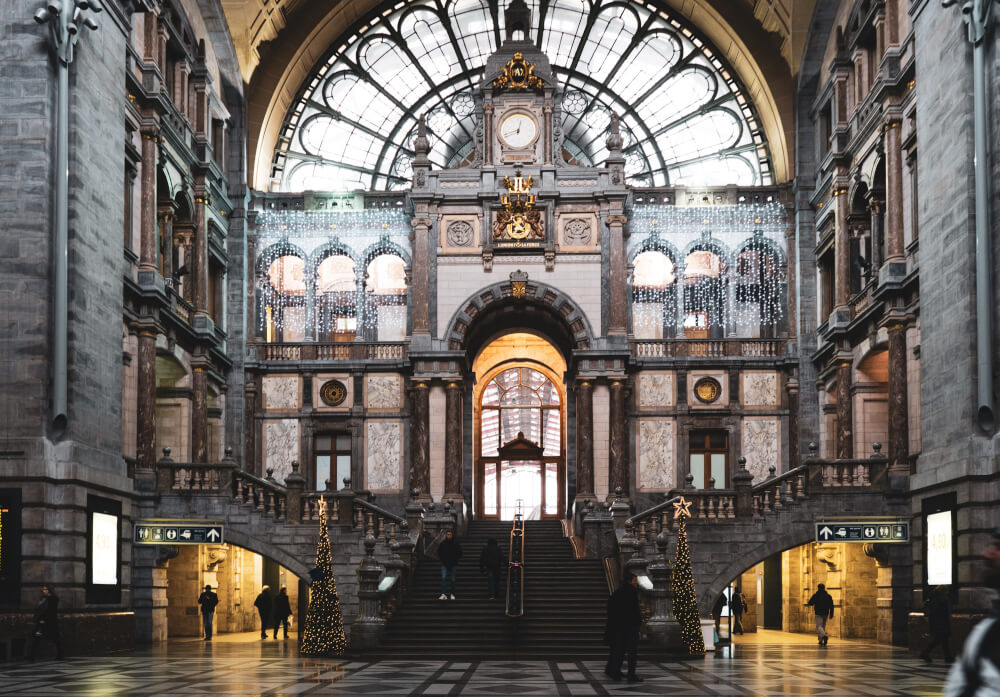
9. Beware that cities have multiple train stations
Of course, don’t be fooled by the great deals and beautiful aesthetics – the Belgian train system can have its confusing moments too.
For instance, big cities often have multiple train stations, and if you’re not careful, you might get them mixed up (like I sadly have!) and miss your train.
Brussels for instance has three stations: Nord/Noord, Centrale/Centraal and Midi/Zuid, all of which are alternatively known by their French and Flemish names.
Similarly, Antwerp has a Central Station and a South station.
So remember, there’s often multiple stations, and you should research which ones are actually the closest to where you need to go.
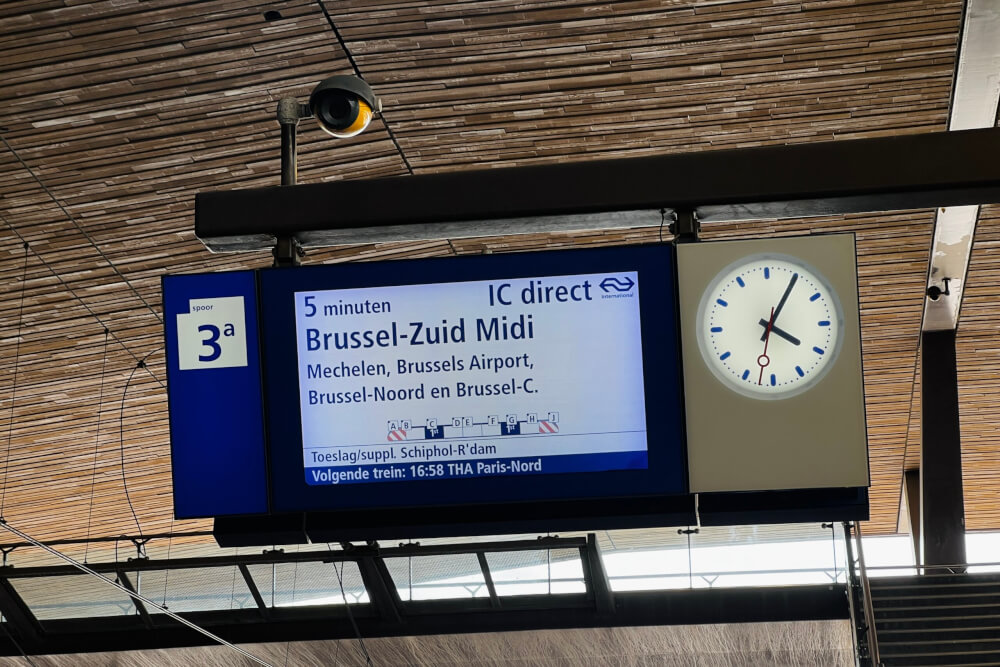
10. Remember: They’re Belgian Fries, Not French Fries
Alright, now let’s move onto some very important Belgium food and drink tips.
We’ll start with one that may save your life, because Belgians take this one seriously. So repeat after me: always always remember that when it comes to fries (AKA Frites), never call them French fries because they are, in fact…… *dramatic pause* Belgian.
The legend goes that it was actually American soldiers during WWI that mistakenly named them French fries, because they didn’t realize they were in Belgium and not France. We’ve gotten a lot more geographically savvy since then, so don’t make that mistake!
PS: The defining characteristic of these Belgian fries is they’re deep fried twice in animal fat. As such, vegans and vegetarians should know that traditional Belgian fries are not actually vegetarian, although there will almost always be a place where you can find a veggie-friendly option, so be sure to look that up in advance.
PPS: Getting sauce with your fries is non-negotiable. Mayonnaise is a common sauce but most places will have more adventurous options as well, although I’d advise against just getting ketchup because that’s boring.

11. DIY your own chocolate tour around Belgium
Now another important Belgium tip? Shovel as much chocolate into your mouth as you possibly can.
Belgian chocolate has a tasty reputation worldwide, and when you’re lucky enough to be this close to choco-magic, you have to take advantage.
Now, the cool thing about Belgian chocolate shops is you don’t necessarily need to buy a whole box of chocolates – you can literally just get one or two pieces so this is a super fun way to sample chocolate from a bunch of chocolatiers without committing to a box.
NOTE: While going to different cities, be sure to also look for unique chocolate products in each place. Often chocolatiers will do fun chocolates that pay homage to their city in some way, like in Antwerp where there’s chocolate diamonds because of their diamond industry, along with severed chocolate hands based on a popular local legend.

12. Know the difference between waffle types
Next up – waffles! Of course I would dedicate a whole section of Belgium travel tips to waffles. I’m only human.
Now, while I know that waffles seem like an impossible thing to mess up, there are a few important must-knows to ensure you have the BEST possible waffles of your life during your Belgium trip.
So, here’s what you need to know: in Belgium, there are two main kinds of waffles:
- Brussels style waffle: Rectangular, fluffier waffles usually served with toppings like whipped cream and fruit
- Liège style waffle: Round, denser waffles studded with caramelized sugar, best consumed on their own
This is an important distinction because often you’ll come across touristy places that entice you with colourful displays of waffles, including Liège waffles topped with tons of fruit, which is a big waste in my opinion because they’re so good on their own.
So, if you see a place that sells them like that (usually to attract tourist eyeballs), you can deduce it’s probably not the most authentic.
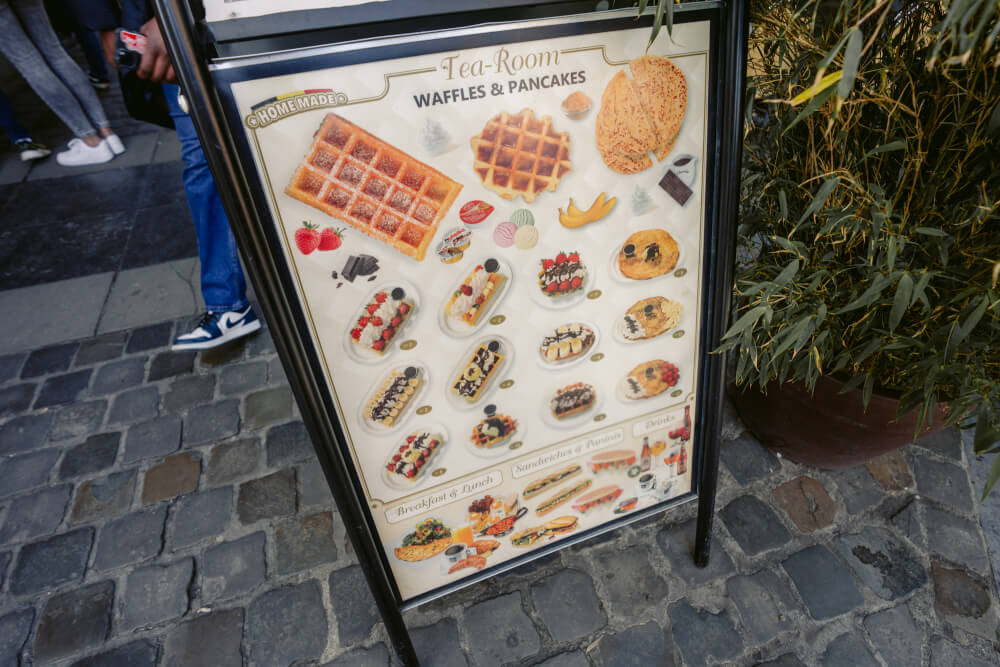
Another red flag is when they have signs like this:
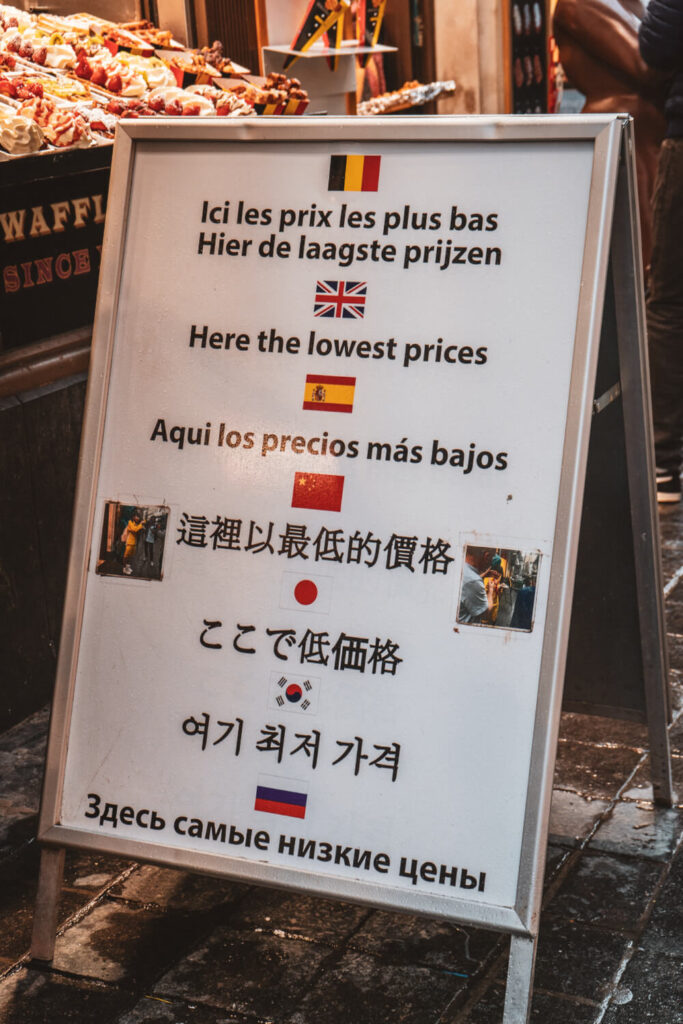
13. Learn the basics of Belgian beer
True story: I used to hate beer until I tried it in Belgium. Beers in this country are unreal, but there’s a few things you should know to enjoy them properly.
First – beware that some Belgian beers can be really strong. Stronger than you’re used to. Indulge accordingly.
Second, know they take their beers so seriously, they’re often served in their own special glass, which I love.
Next, know that Belgian beers are diverse and complex. Unlike Germany where they have a purity law that restricts what ingredients can go in beer, Belgians are always down to experiment, so there’s truly a type of beer for everyone, which is what makes beer tasting in Belgium so much fun. That said, if you haven’t found one you like yet, don’t give up!
Lastly, I would advise prioritizing beers you’ve never heard of. While it’s tempting to go for the big name Belgian beers you already know (e.g. Stella Artois or Leffe) during your trip, the most exciting thing about being in Belgium is you have access to all these unique beers you don’t have back home… so be sure to experiment a bit!

14. Give regional Belgian dishes a try
And of course, while Belgium is well known around the world for its signature snack foods and beer, we need to give a shoutout to other Belgian dishes as well.
Belgian food done right is comforting, hearty, and irritatingly delicious.
Here are a few of my favourites dishes:
- Vol au vent: A creamy meat stew served in a crispy pastry
- Carbonnade Flamande: A rich beef stew made with beer
- Moules-frites: Mussels with fries, another popular (and self-explanatory) treat consisting of shell-on mussels served in a tasty broth, alongside crispy fries. Plus if you play your cards right you can say you had mussels in Brussels!
- Boulets à la Liégeoise: Juicy meatballs in a sweet/savoury sauce, served with a hearty helping of Belgian fries.
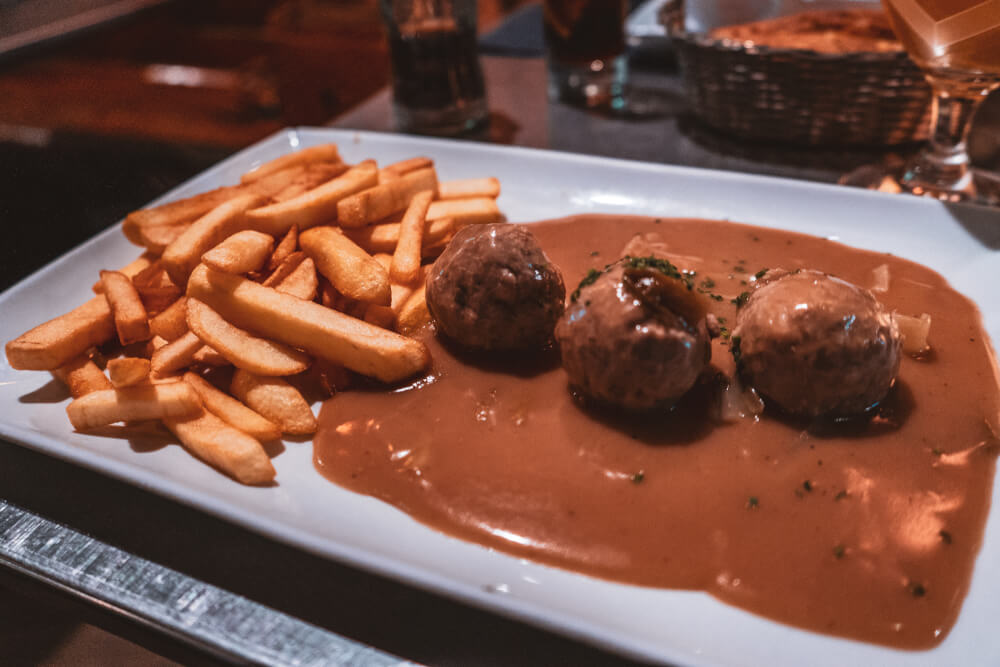
15. Carry coins for the bathroom
Another important Belgium travel tip involves public toilets.
Public bathrooms in Belgium are quite rare to be honest, and they usually require a small payment of 50 cents to a euro.
According to this one very angry Reddit thread , you sometimes even need to pay for the toilets at movie theatres (?!??!)
… So, all that said, be sure to have some coins on you so you don’t get caught out.
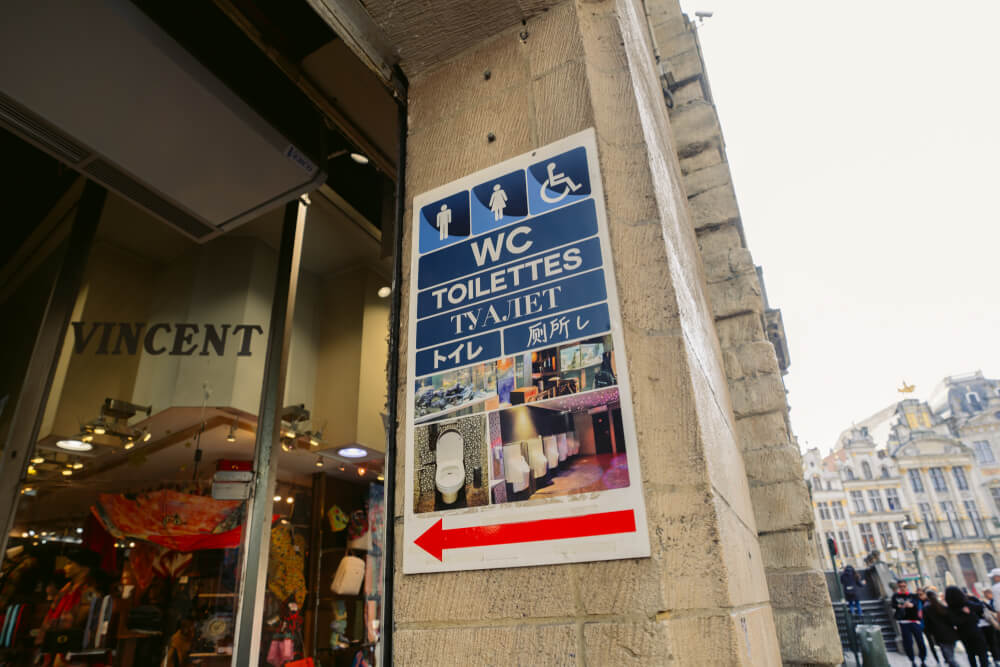
16. Be sure to also have at least a 1 euro coin too for museum lockers
I noticed in Brussels especially, a lot of the museums there were really strict about me bringing a regular school-sized backpack in, and said I had to leave it in a locker.
Most of these lockers require a one euro deposit that you get back, so just make sure you have that coin on you.
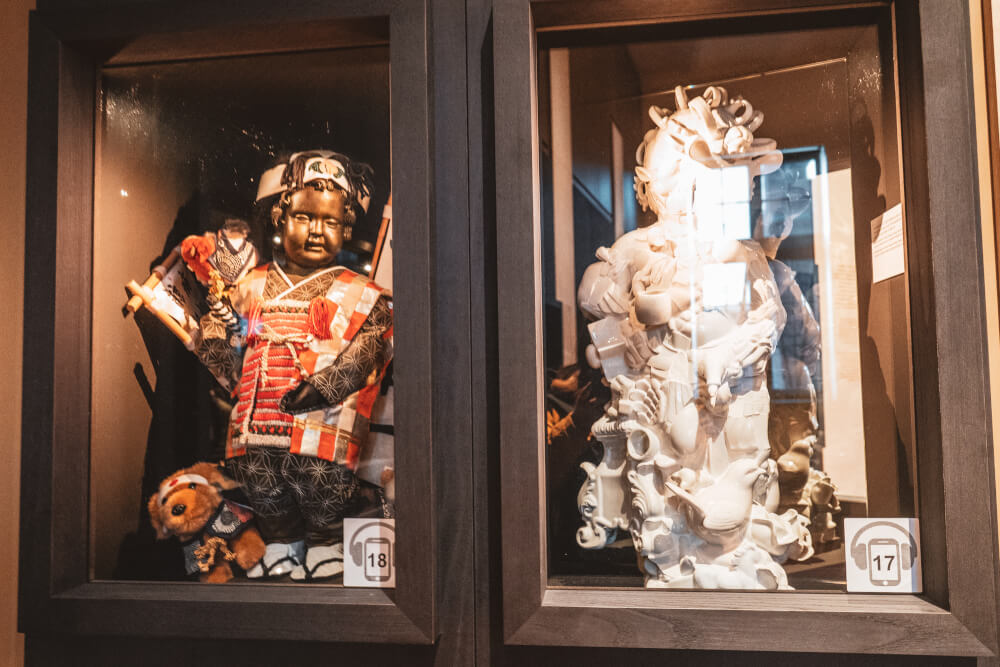
17. Look out for museum free days
One of the best ways to save money in Belgium is by scoping out free days in advance for major museums.
In Brussels for example there’s a lot museums free on the first Wednesday and first Sunday each month.
Antwerp has a similar thing for the last Wednesday of the month.
Liège also has some free museums on the first Sunday.
So if you’re looking to save some money, be sure to look into whether your destinations have these deals.
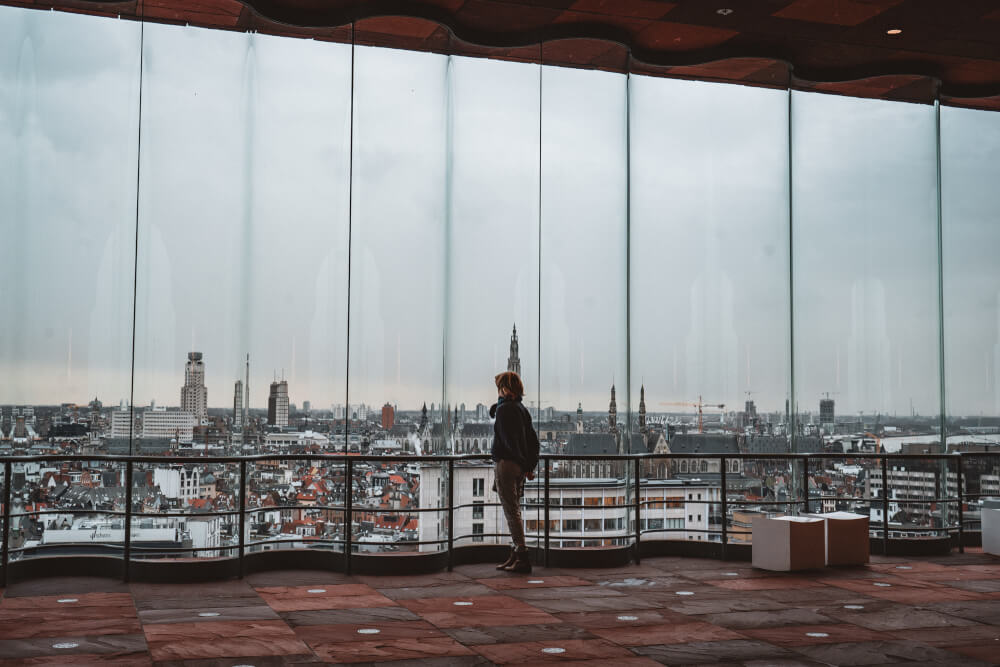
18. Save money on attractions by purchasing attraction cards or city passes
And if you can’t time your visit to coincide with free museum days, another great way to save big on attractions in Belgium is by purchasing attraction cards that give you access to multiple attractions for one set price.
Now, these are usually only worth it if you plan to visit a LOT of paid attractions, but I do think in museum-heavy cities like Brussels, it’s almost always worth it if you plan to see a lot.
I’ve personally used the Brussels card before and found it to be excellent value. If you’re big into museums like I am, then definitely look into it.

19. Be wary of Google Maps opening hours
Now ahh, for one of the more frustrating quirks from my Belgium travels.
It may just be bad luck, but on most of my trips in Belgium, I’ve encountered inaccurate hours listed on Google Maps and pretty much once a trip I would show up somewhere just to find it unexpectedly closed.
So, be sure to check on official websites whenever possible rather than just relying on Google Maps for hours.
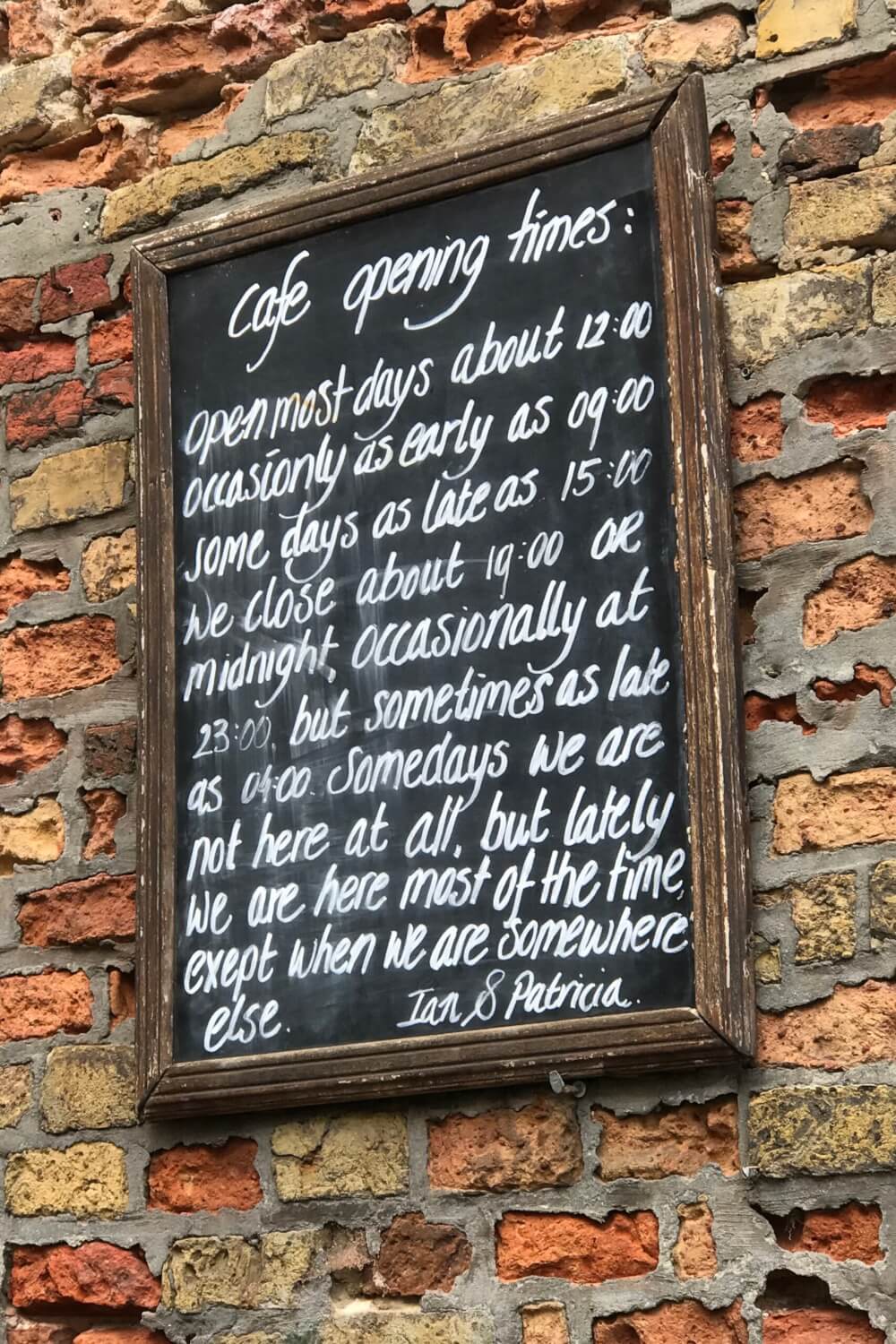
20. Beware of bikes & bike lanes
Much like in the neighbouring Netherlands, Belgians travel a lot by bike.
This therefore means many bike lanes, and (if you’re a clumsy, inattentive tourist like me) many opportunities to get run over by an angry Belgian on a bike.
So, while you’re walking, just take note of your surroundings and make sure you’re not accidentally walking in a bike lane. It happens way more often than you think.
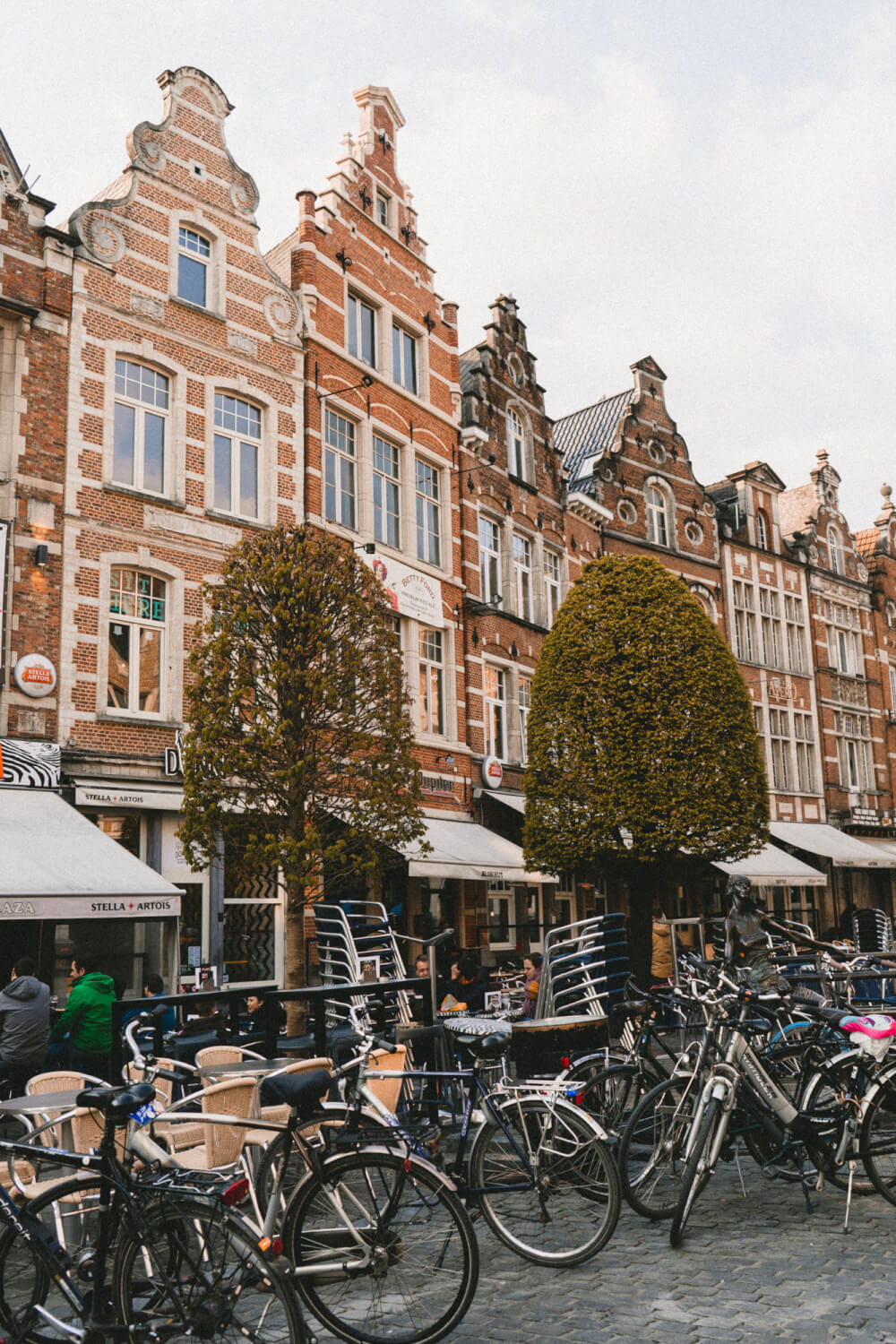
21. Pack a rain/windproof jacket
Belgian weather is notoriously moody, so no matter when you visit, I would advise packing a light rain jacket with a hood, just to ensure you have something in case the weather unexpectedly turns (which it often does).
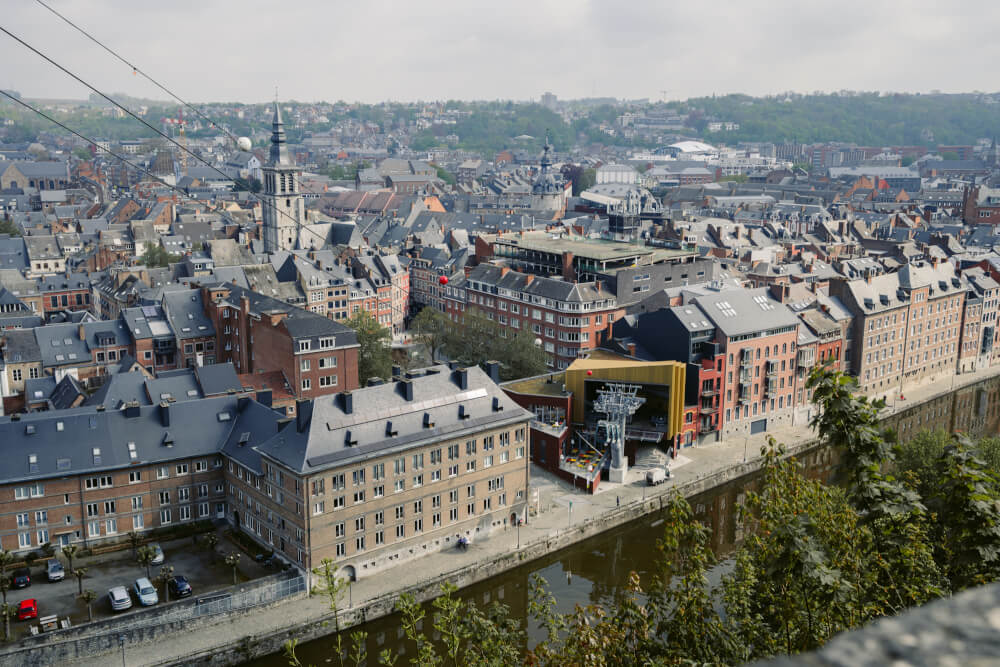
22. Prepare for Belgian humour
Lastly, I have to say that Belgians have a quirky and unique sense of humour. The fact that a tiny statue of a peeing child is their #1 tourist attraction is a testament to that. As are the accompanying statues of a peeing dog and girl, as well as the country’s giant intestine shaped hotel.
All that to say, come to Belgium for the beer, the waffles and the fries, but stay for the weird quirky stories and jokes.
The amount of times I’ve come across obscure lore while researching Belgian attractions is numerous, and it always makes visiting places a lot more fun.
Here are a few of my favourites:
- This infamous turf war involving nose-shaped candies in Ghent
- The many, many times that the Mannekin Pis in Brussels has been kidnapped then returned
- This brutal tale behind Antwerp’s name (which in Dutch, originates from the phrase ‘Throwing hands’)
- This Ghent bar that takes one of your shoes as a deposit for their most coveted glasses because they kept getting stolen

I hope this list of Belgium Travel Tips was helpful!
Quite frankly, if you made it this far, you deserve some kind of medal! This was a VERY long list of tips for Belgium, but if you have any more questions, let me know in the comments.
My Go-To Travel Favourites:
🧳 Eagle Creek: My favourite packing cubes
💳 Wise: For FREE travel friendly credit cards
🍯 Airalo: My go-to eSIM
🏨 Booking.com: For searching hotels
📷 Sony A7IV: My (amazing) camera
✈️ Google Flights : For finding flight deals
🌎 WorldNomads: For travel insurance
🎉 GetYourGuide: For booking activities
2 thoughts on “20+ Belgium Travel Tips for First Timers & Must Knows Before You Go”
Your review and tips about Belgium were written too late for me. I travelled there June 16 to 21 this year(2023). I enjoyed reading what you wrote.
Interesting insights into Belgium! I never knew that two different languages are used in this country. I am surprised to know that we have to pay to use public toilets in theatres.
Leave a Comment Cancel reply
By using this form you agree with the storage and handling of your data by this website. *
The 12 Best Places to Visit in Belgium
If you thought Belgium is a boring country with nothing to see, think again! Belgium captivates visitors with the best museums I’ve ever been to, the most beautiful squares that I’ve ever seen, and the best beer that I’ve ever had.
As far as the best places to see, Belgium has very few natural highlights to speak of, so all but one of the places on this list are man-made destinations. Which isn’t a bad thing if “the man” making them did a great job!
You might also be interested in reading:
- Belgium Itinerary: 7 Days in the Heart of Europe!
- Belgium Travel Tips: 19 Things That Will Make Your Trip Easier
- The Top 15 Museums in Belgium: From Comics to Beer
- Our 9 Top Restaurants in Belgium
- 7 Best Day Trips from Brussels (Includes Train Details)
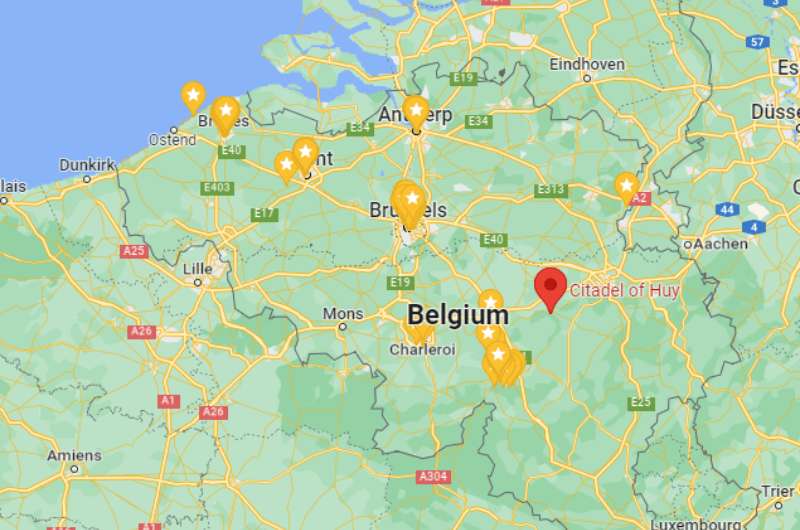
Most of Belgium’s highlights are in the northern half of the country in the region called Flanders
Our top tips for the best places in Belgium:
- The vast majority of the best places in Belgium are in Flanders, the northern half of Belgium.
- Don’t underestimate Brussels . The place is packed with museums and tourist sites that you’ll have trouble fitting into even 3 full days.
- Most other top places, like Ghent and Bruges , can easily be done as a day trip from Brussels .
- Some popular places require advance bookings: Gravensteen in Brussels is one, the Belfry in Bruges is another.
- No matter where in Belgium you go, you won’t have trouble communicating in English. We talk about language and a ton more fun facts and observations in our Top Tips for Traveling in Brussels article .
1. Meuse Valley
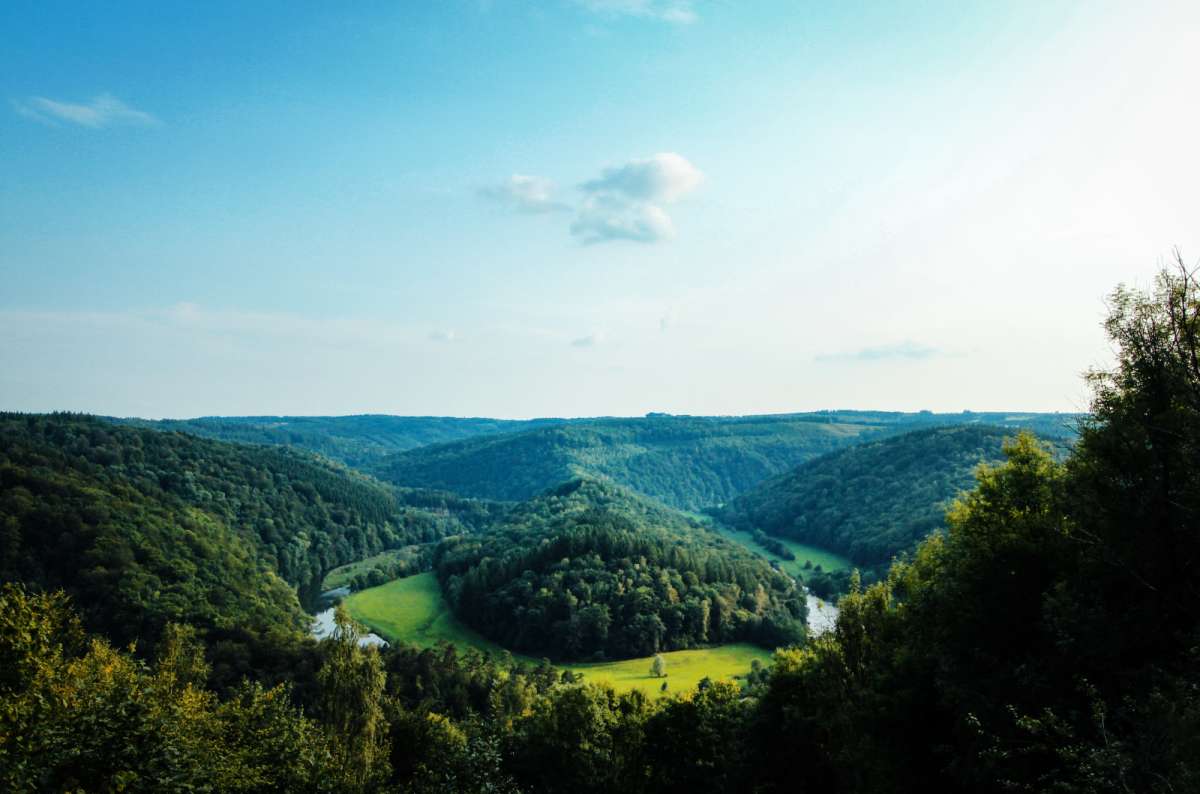
Does Belgium have any nature worth seeing? Not really. Meuse Valley is an exception
That one lone ranger is the Valley of the Meuse River. The water cuts deeply into the landscape , creating great scenery along its banks, though most of what you’d actually be stopping to see are, again, man-made places like towns and castles picturesquely built next to or on the limestone cliffs along the river.
The Meuse flows into southern Belgium from northern France before continuing to the Netherlands and, eventually, the North Sea. The valley used to be an industrial hub, which had an unfortunate consequence in 1930 when a thick, pollutant-filled smog covered the valley for several days, killing dozens of people .
Nowadays, there’s no more of that, if you turn a blind eye to the deteriorating factories and smokestacks that’ll ruin the otherwise lovely views here and there.
Take a trip down to the south of Belgium with the ultimate goal being the town of Dinant , who had its own place on this list (see no. 7).
You can visit the Citadel of Namur , with its underground tunnels, views of Namur and Meuse Valley, and a great museum to boot.
Driving further south, make a stop at Les Jardins d’Annevoie, the 18 th century gardens filled with waterfalls and fountains. I mean it’s just a garden, and if you don’t like gardens, you’ll find it boring, but nobody is forcing you to visit it, ok?
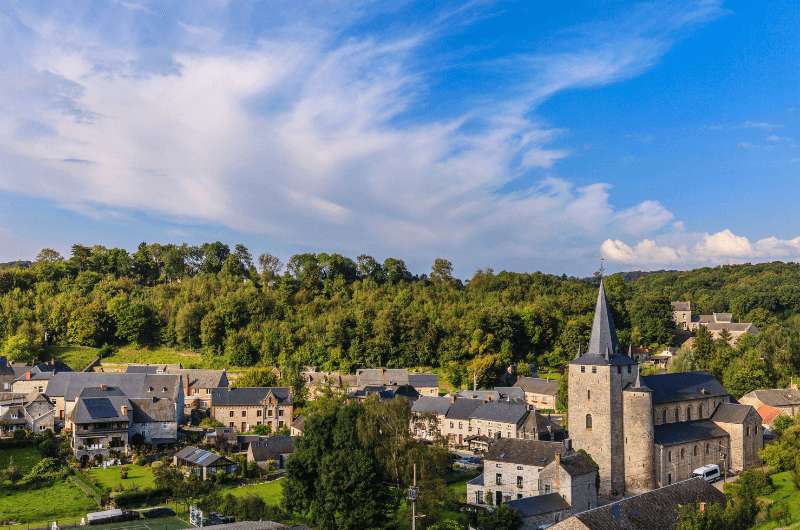
One of Belgium’s cutest villages, Celles, is just a stone’s throw away from Meuse River
In Yvoir , you can take a little ferry to an island on the Meuse.
Around Dinant, there are many castles . Too many to care about them all, unless you’re visiting from a castle-less country, in which case you’ll be more excited about them than I am.
Past Dinant, there is the Renaissance Castle of Freÿr , which sits right on the Meuse River bank and has a manicured garden. The best way to see it, though, is probably from the rocks on the opposite side of the river. Any rock climbers out there should take the chance to see the castle from the top of the Rochers de Freyr.
If you stray from the Meuse and go a bit east, you can wander around one of Belgium’s cutest villages, Celles . Then, take a peek at the Disney-esque Vêves Castle stopping to see what some consider Belgium’s most beautiful limestone rock mass —Aiguilles de Chaleux.
2. Flanders villages
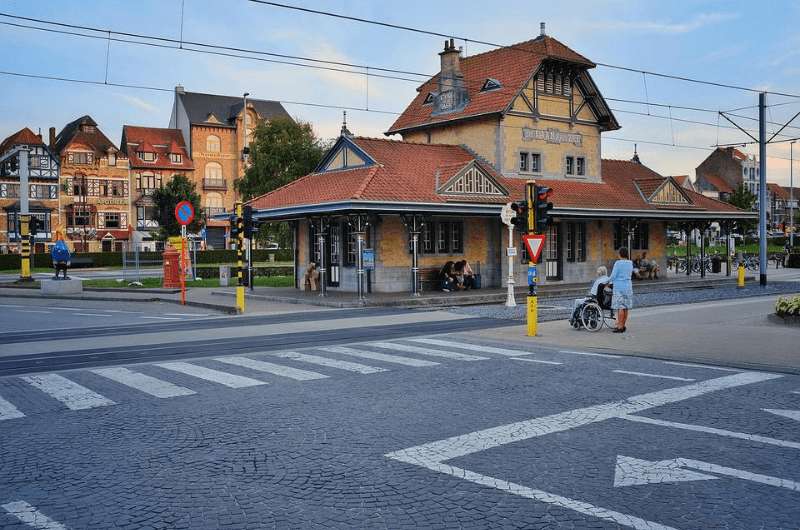
Small town vibes in De Haan
Flanders is a region in northern Belgium , the part where they speak Flemish, which is closely related to Dutch, as opposed to the southern region of Wallonia, where French is prevalent.
The region used to be (and still is!) one of the richest parts of Europe , and because of that, the culture that developed there was very sophisticated. Many artists live or have lived in this part of Belgium.
The villages that are sprinkled throughout Flanders are particularly enticing, with cute houses and a charming atmosphere. If you’re after some real small-town Belgian life, head over to Oud-Rekem , which was named Most Beautiful Flanders Village .
But if Oud-Rekem, located all the way on the eastern border, is too far out for you, you can take a trip to a village that is also Belgium’s best beach resort—De Haan . It’s close to Bruges .
Deurle is undeniably delightful. One look at those white or brick houses, all with wooden window shutters , nestled amongst abundant greenery, and you just want to curl up with a book, drink hot cocoa, and never go back to work. Deurle is just 15 km (9 miles) west from central Ghent .
3. Bruges and Ghent boat canal tours
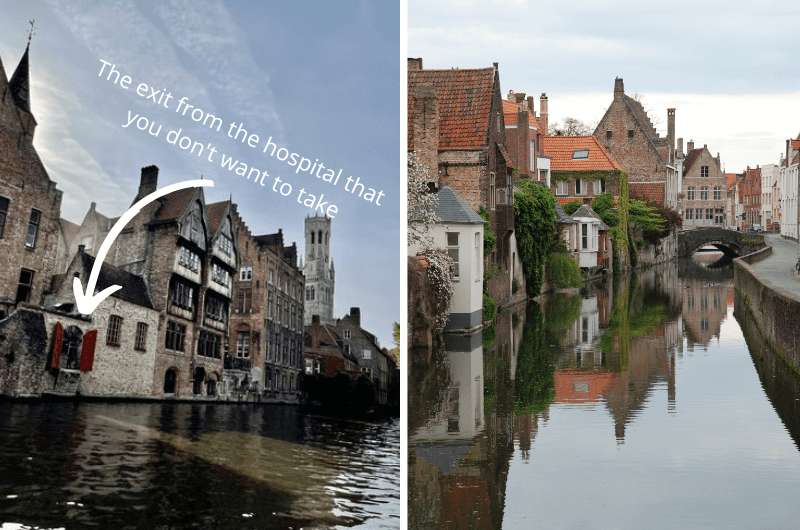
Views during the boat tour in Bruges. To find out who came out the back door and why it was stupid, read our Bruges guide .
What do you get when you add a system of canals to a town full of awesome medieval architecture? Mosquitos! Great Instragram photos ! And a lot of bridges, narrow pathways, and just sheer charm.
But most of all, you get to travel around the town in a little boat , seeing everything from a unique perspective (unless you hail from Venice, Italy…in that case, maybe you won’t be that excited about this item). Somehow not needing to walk makes everyone love a good boat ride.
We took boat tours in Ghent and Bruges and loved them both, though Ghent won over Bruges in our books. The towns are big, so the tours aren’t long, lasting about 40 minutes and costing €7.50 in Ghent and €12 in Bruges.
The guide on the boat tells you interesting bits and bobs about the history of the town and the buildings you are slowly passing by. It’s a pleasant outing that doesn’t hurt your wallet or your legs . Win win.
4. Gravensteen
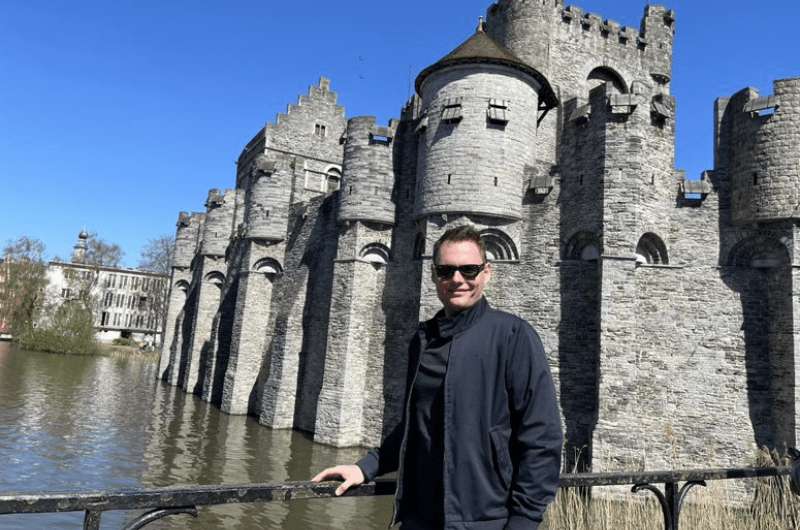
My, my, what a great-looking castle
The “ Castle of the Counts ” was our favorite place in Ghent . Gravensteen is the only surviving medieval castle in Flanders with a moat and an almost intact defense system . For me as a history geek that was cool to see.
Not only was the castle meant to protect the city, but it was also supposed to intimidate the town’s own citizens in case they wanted to challenge the count’s authority. Tell me you have a big ego without telling me you have a big ego.
If you buy a ticket in advance and actually get to go inside (unlike us—no tickets in advance meant we couldn’t go in!) you’ll even get to take the supposedly entertaining audio tour , see some torture equipment, and peek at a hidden mural which is only visible from one of the castle’s towers.
Read more about Gravensteen and more sites in the city in our Ghent guide.
- Gravensteen , Sint-Veerleplein 11, Ghent
- Open daily 10 am–6 pm, last entrance at 4:40 pm
- Tickets cost €12, buy them in advance or risk not getting in
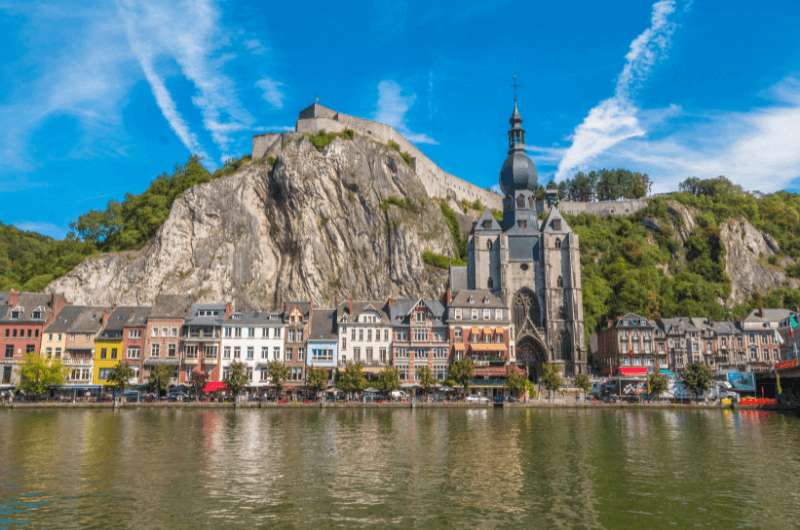
Dinant: Too kitsch or just right?
The undeniable birthplace of the saxophone (you’ll see reminders of the musical instrument everywhere), Dinant is the most popular tourist city in southern Belgium. It’s located on the Meuse River, the same one that we talked about a few items higher on this list.
So, after you explore the rest of Meuse Valley, put your anchor down in this pretty town and do some sightseeing there.
At first glance you’ll see the row of colorful houses sitting on the Meuse River bank, protected spiritually by the impressive Notre Dame de Dinant on the side and actually by the Dinant Citadel up from the top of the limestone cliffs that form a dramatic backdrop. Just this view alone is enough to be worth a trip down there.
You can climb up to the citadel on your own two feet or take a cable car. It is said that the panoramic views of the valley are cherished more by those that take the stairs! Just kidding. But it’s probably true.
For the best views of Dinant, walk along the Charles de Gaulle Bridge . Just don’t accidently bump into one of the colorful saxophone sculptures while staring into your phone while taking a photo of the Notre Dame.
As you would expect, the riverside promenade offers a wide selection of restaurants and cafes.
6. Charleroi
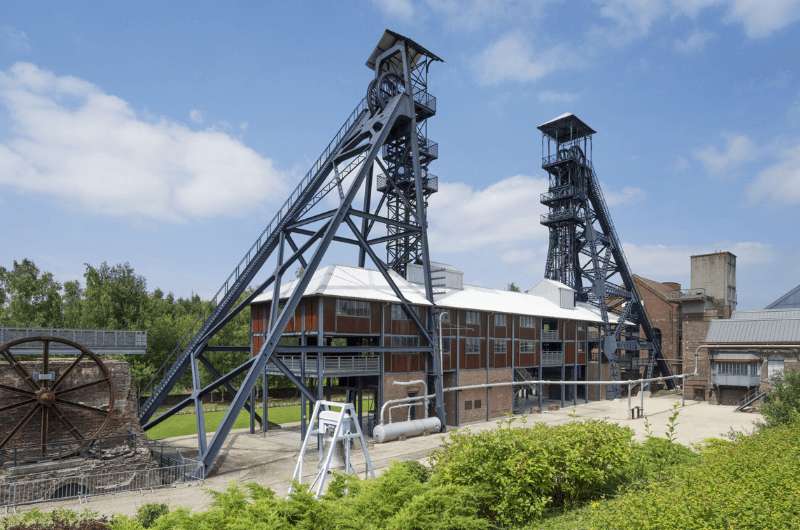
Back to Charleroi’s roots: The former coal mine turned museum @ Boiz du Cazier
Charleroi is the largest city in Wallonia, aka the French-speaking half of Belgium. If you Google it, you might find that Charleroi was voted the ugliest city in the world . It is also apparently home to some corrupt politicians and has been called the most depressing city in Belgium, too. But don’t flock to Charleroi just yet! Lol.
What it lacks in beauty, though, it makes up in character. And fantastic museums . And a cool train station. Just ignore the rusty old coal plants right next to the city center.
Charleroi wasn’t happy about the label it kept getting, so it has seen a major facelift in recent years, making the central part of the city actually pretty nice. If you have your expectations straight.
You will still notice the stark difference between the shininess of the new and the decaying gloominess of the old. Charleroi has also seen a strange kind of tourism —people coming to see for themselves if it is really as bad as the internet makes it sound.
For normal people not chasing sensations, Charleroi is home to one of the best photography museums in Europe , the Photography Museum, Contemporary Art Center of the French Community .
It’s located in a renovated convent building , with a contemporary wing added to the side of it. Even just this contrast of the architecture is worth seeing, though the exhibitions inside (and outside) are a must-see on any art literate tourist’s visit.
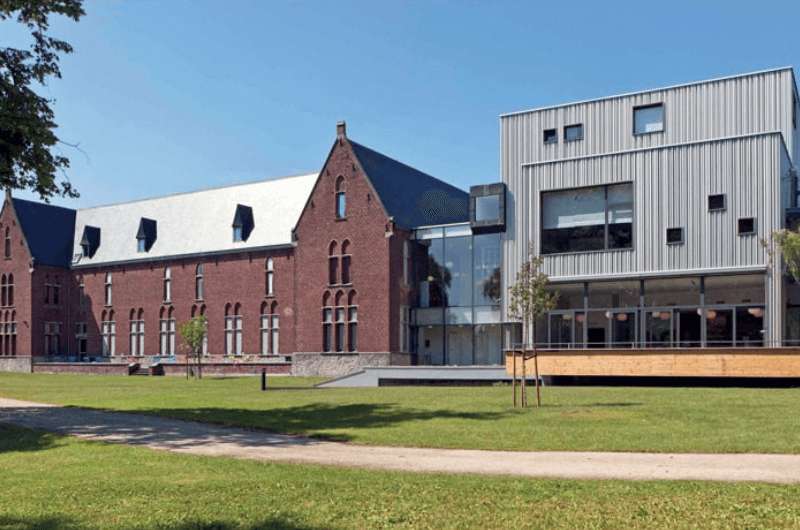
Mixing the old with the new @ Photography Museum, Contemporary Art Center of the French Community
Closer to the city center is the Charleroi South, the city’s main train station . If the sun is out, the renovated historic building even looks pretty!
Across the river from the train station is where you’ll find “new Charleroi“, the facelifted area with shopping malls and welcoming, clean squares. Some are new, and some, like the Le Passage de la Bourse, adds a welcome touch of history (and a place to hide in case it rains).
Since mining was what brought Charleroi its riches, and is also the reason why it then became the dump of a city it’s known as, we thought it best to learn about this industrial history.
Boiz du Cazier is an industrial heritage site—a former coal mine that was the site of terrible mining disaster in 1956—that is now home to two great museums . The Industry Museum focuses on the mining industry and the Glass Museum is all about glassmaking, which used to be famous in the region.
Charleroi has another claim to fame besides coal and museums—it’s the birthplace of one of the country’s oldest comics magazines : Spirou. First published in 1938, Spirou featured famous characters such as Lucky Luke and The Smurfs. You’ll find comics sculptures and murals all around Charleroi.
Surely a city full of cute characters can’t be that ugly?!
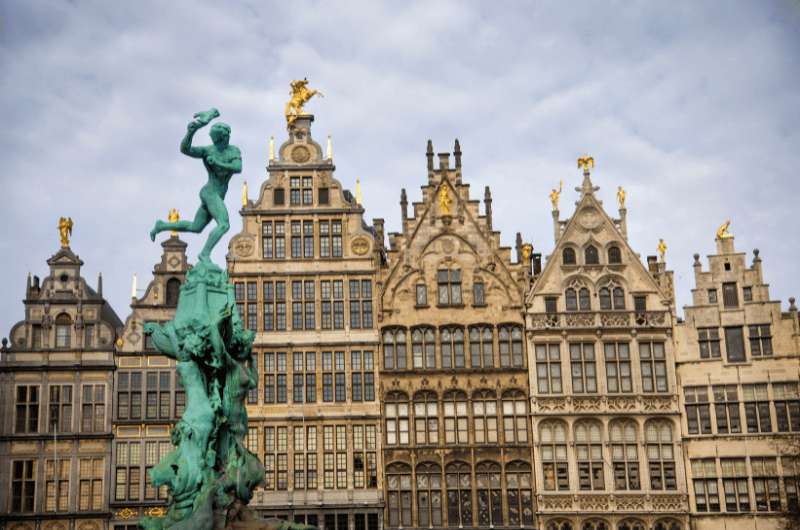
I still haven’t figured out the fountain @ Antwerp Grote Markt
Belgium’s second largest city and the second largest port in Europe is synonymous to diamonds, Rubens, and style . It combines the riches of Brussels with the history of Ghent and Bruges , but with a bit of an artsy edge. And a nightlife. Like a hipster turned CEO of a madly successful startup. That’s Antwerp.
Antwerp is the world’s diamond trading hub , with 84% or the world’s rough diamonds making their way through. If you are a diamond-loving dude, send your jeweler to Antwerp to get top pick of the uncut rock crop. In 2017, USD 46 billion worth of diamonds was traded in Antwerp. Just think, you could contribute to some of those thousands yourself.
The Diamond district is located close to the main train station if you’re up for a shopping trip. Plus, the Antwerpen-Centraal station is a sight in itself. Seriously, even if you aren’t traveling by train in Belgium (which you should be!), stop by to look at the magnificent building. It is always on the world’s most beautiful train stations lists.
What all this diamond talk means is that Antwerp is a rich city , which brings all kind of niceness into the historical mix. You’ll notice the old and the new coming together in Antwerp on every corner.
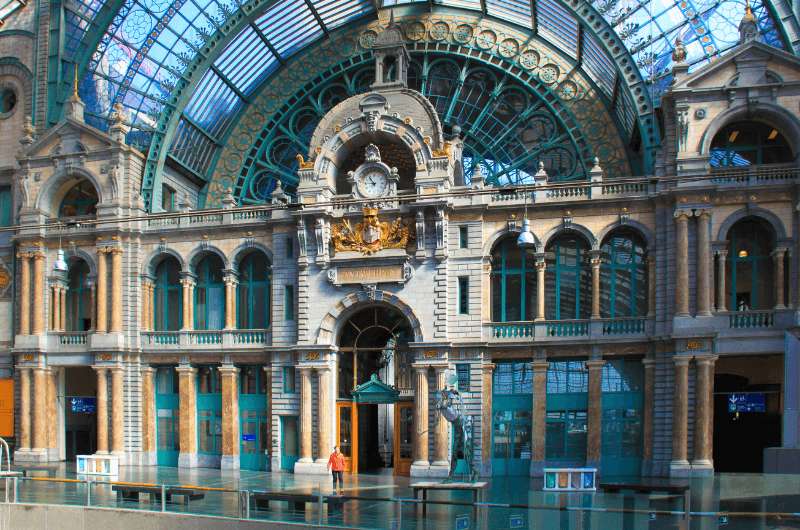
This is what awaits you @ Antwerpen-Centraal train station
Take Stadsfeestzaal Shopping Mall , for example. It’s in a restored historical building with arched high ceilings and golden everything.
When you are tired from draining your bank account, you can take a rest at the Champaign bar . Which probably won’t help with the spending, but it will provide a nice place to recharge. This being Antwerp, it’s not just luxury brand stores, but a nice mix of everything.
The main square of Antwerp, Grote Markt , is surrounded by intricately decorated historical buildings where gold has been used to a great extent, like the City Hall . It isn’t as fabulous as the main square in Brussels , but it’s still nice. And a great place to people-watch and have a beer or three, all while trying to figure out the statue/fountain in the middle .
A few steps off of Grote Markt is the Cathedral of Our Lady , a church with a spectacular white interior and Rubens’ works on display. Peculiarly, there’s also a gift shop and a café inside the church. I mean, why not, grab a beer with Jesus and hash out theories about religion. Like if that vial of his blood in Bruges is really real.
Antwerp is also where famed artist Peter Paul Rubens lived and created, and you can see his work all over the city. Or at his house: Rubens House , which he apparently built himself.
The incredibly well-preserved home is a museum where you can see not only Rubens’ paintings and sculptures , but also personal items and furniture from Rubens’ time. There is an interior garden to walk through, too. Just beware it gets crowded on weekends and the audio guide could put you to sleep if you aren’t an art aficionado.
Antwerp is also home to Europe’s second largest port (after Rotterdam). One visit to the port and you’ll wonder if aliens are taking over . Once you realize it’s just the city’s Port House .
Still want more? See Het Steen castle , and then compare it to the one in Ghent . Learn about Antwerp’s history in the cool MAS museum . Or about the history of the many immigrants that left Europe to the USA by ship through the very building that the Red Star Line Museum is housed in today.

Our hotel tip for Antwerp
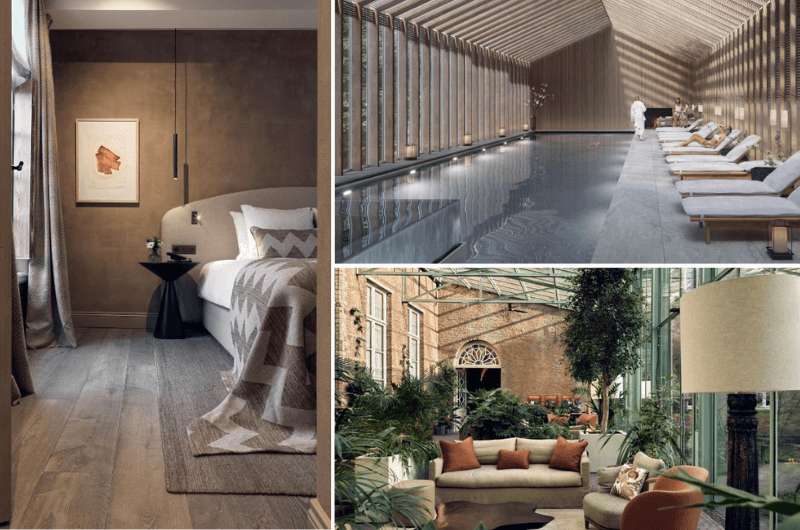
Zen vibes @ Botanic Sanctuary Antwerp
In a nutshell, Antwerp is super cool , and you don’t want to miss it! You’d probably be missing out if you only spent the day here, because unlike, say, Bruges, there is fantastic nightlife in Antwerp.
If you can stay at the 5-star Botanic Sanctuary Antwerp , you’ll be doing yourself a favor. It doesn’t have the word ‘sanctuary’ in its name for nothing! The indoor pool oozes tranquility and there is a gym and a fantastic spa with numerous treatments available. Not only that but is has not one but several Michelin-recognized facilities and chefs on site.
Prices start at €550 per night for 2 people with breakfast.
If you use any of our booking.com links to book a hotel (any hotel), we get a small commission at no extra expense to you. All you get is a great feeling for supporting our efforts. Thank you!
8. Museums of Brussels
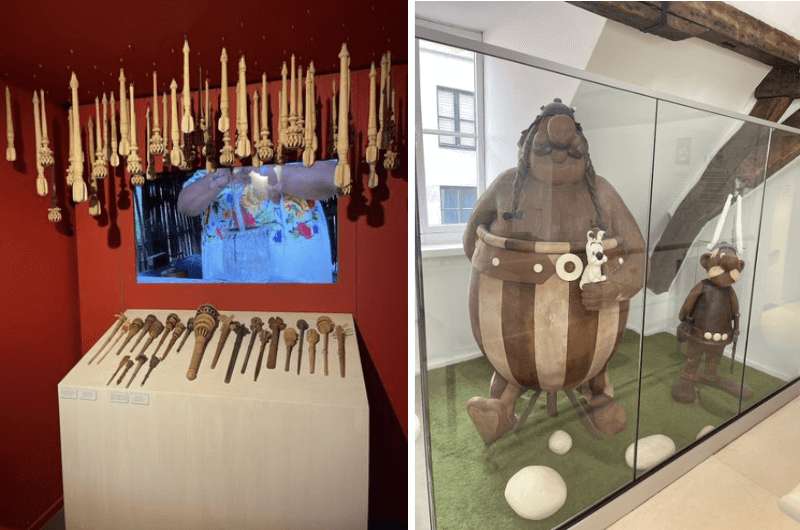
Some of the awesome and probably delicious exhibits at Brussels’ Choco Story Museum
You could spend three full days in Brussels and just go from one museum to the other and still not see the best of them. Heck, just my personal favorite, the Royal Museum of the Armed Forces and Military History , could’ve taken me all day if I wasn’t there with my wife, who was decidedly less enthusiastic about the topic. It. Is. Huge!
What about cars? Do you like cars? I do… so I loved Autoworld . Karin loved it for 1 hour, I would’ve probably loved it for at least 2. There’s also Train World if you prefer your vehicles on tracks instead of roads.
I mention repeatedly in my comprehensive article about things to do in Brussels , that the museums in Belgium are by far the best I’ve been to anywhere in the world . The standard is just so high, you can see that a lot of care (and money) goes into making the museums entertaining and educational. Everything is interactive, with most places giving you an iPad or similar device that adds another dimension to your museum-hopping experience.
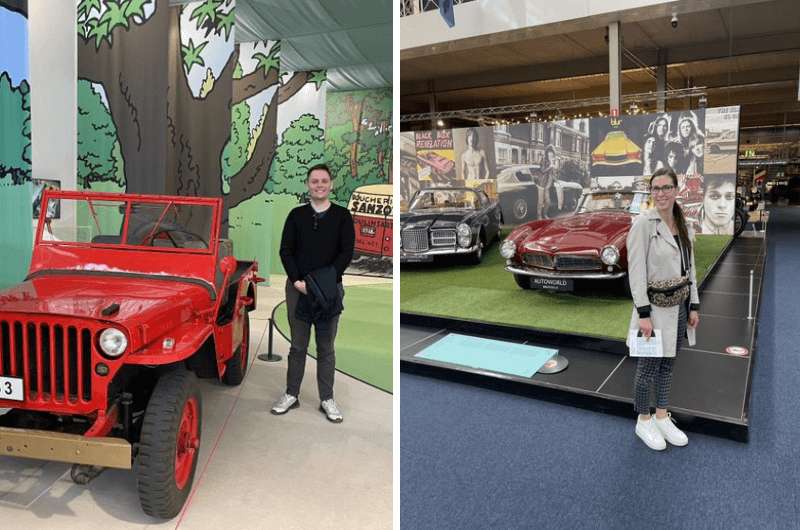
A little bit of car love @ Autoworld
So even a museum dedicated to something as simple as chocolate, Choco Story Museum , turns into a fascinating trip through history and takes you right into the present with a welcome praline tasting. And you can see a huge chocolate statue of Asterix and Obelix , among others. This was the best chocolate museum I’ve been to anywhere , including chocolate’s native Latin America (we’ve toured Chile , Peru and Mexico so far).
Speaking of comics, the The Comics Art Museum teaches you a thing or two about Belgium’s pride and joy. Though not the best museum in Brussels, it just feels like you have to go, or else risk making The Smurfs angry and send Tintin on an investigation as to how someone could miss learning about comics in Belgium.
And how could you visit Brussels, the heart and brain of the EU , and not visit the Parlamentarium —the visitors' center of the European Parliament. It’s free and we loved it.
For (many) more tips on which museums in Brussels we thought we fantastic, read our Brussels guide . And be prepared to add a day or two to what you thought would be a short city break! Many of the Brussels museums we visited made our top museums in Belgium list . Check that out too.
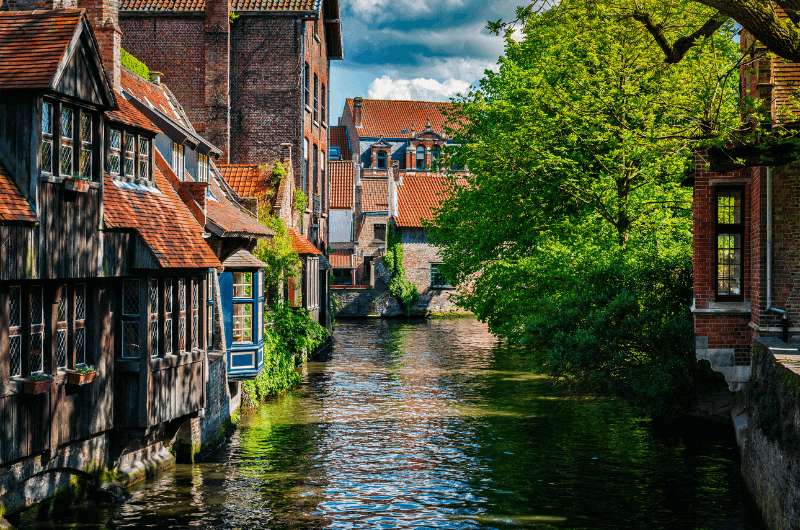
Bruges is undoubtedly charming. But we still liked Ghent a little better.
I’m going to go against the majority and say that Ghent is better that Bruges (see more on Ghent below). But like by a hair. Bruges is lovely, thoroughly Instagram-friendly and romantic , but very touristy. So much so that you’ll be hard pressed to find a local, apart from the ones that are serving you lunch in a restaurant or taking you on a canal boat tour.
Bruges city center is basically an island encircled by a river, and then cut further into bits by the numerous canals. So, besides walking, you can also take a half-hour boat canal tour . Lovely. But the one in Ghent was better. Again, just slightly.
If you’re visiting with a special someone, you can try to seal the deal at Lovers’ Bridge, or, you can try to find your special someone at Bonifacius Bridge (read all about the love-related bridges in our Bruges guide ). And if you want to stay the night, the Relais Bourgondisch Cruyce is considered one of Europe’s most romantic hotels and it’s right on the canals! See below for details.
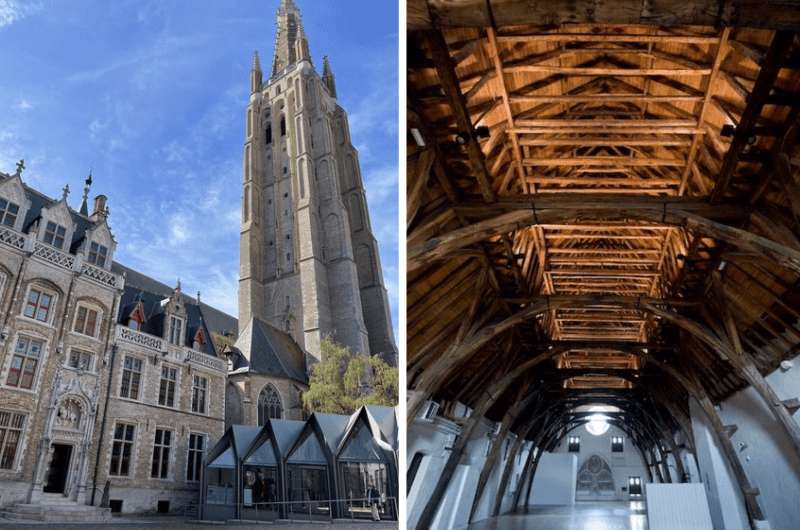
Left: Gruuthusemuseum exterior (that tall tower is not it, it’s the tower of the Church of Our Lady Bruges). Right: the oak ceiling at Sint-Janshospitaal Museum .
You can explore Bruges’ small center, which includes Market Square (Grote Markt) and Burg Square , along with its fantastic buildings—like the Basilica of the Holy Blood with a “real” bit of Jesus’ blood-stained cloth ( hop on over to Turin to compare it to the man-size Jesus print on another old and revered piece of fabric) or the Bruges City Hall with its impressive Gothic Hall.
There are several very tall towers that loom over the city, including that of the Church of Our Lady Bruges , which not only has a super tall tower, but it is also home to the only original Michelangelo statue outside of Italy. The UNESCO-acknowledged Belfry is another. Just make sure you get your tickets in advance or you’ll be stuck looking at it only from the outside , just like poor old ticket-less us.
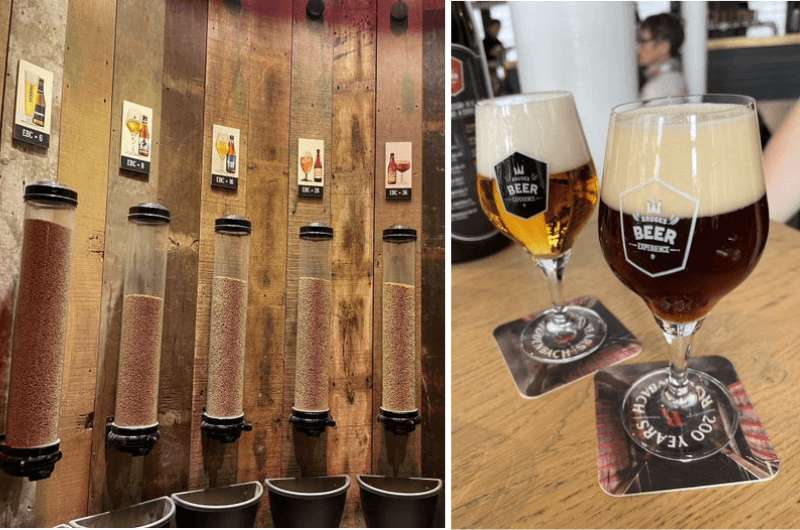
Left: Hops smelling stations. Right: Beer tasting stations @ Bruges Beer Experience
Bruges is also home to some of the best Belgian waffles we’ve come across, Otto Waffle Atelier . You can read about Otto’s and other great Belgian eateries in our Best Restaurants in Belgium article . Actually, if you want to get a better idea about what to eat in general, we have an article about the food of Belgium as well.
But the two top places that we visited in Bruges were very beer-oriented . The De Halve Maan brewery tour takes you through one of the oldest breweries in Bruges, and the only one that has kept its production within the city center. Check out that underground beer pipeline !
Last but certainly not least is the Bruges Beer Experience . This is such an educational and fascinating museum! Especially for us beer lovers, it was very interesting to learn about the different types of beer. Belgium truly is beer country and the fact that they even pair beers with dishes just like you’d expect to be done with wine says a lot.
Get a full rundown on what to do in Bruges in a separate article .
Our hotel tip for Bruges
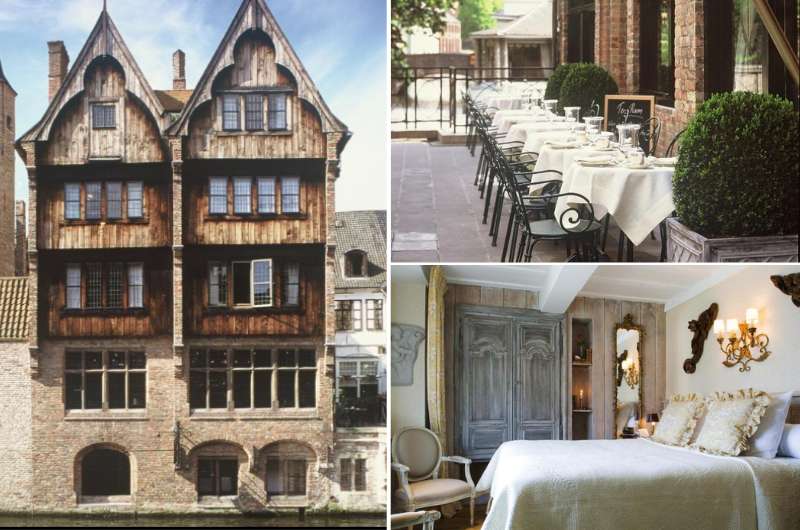
This one sits right on the canals of Bruges @ Relais Bourgondisch Cruyce
The 4-star, waterfront property of Relais Bourgondisch Cruyce is up there in romance vibes with Bonifacius Bridge. The staff at this boutique hotel get infinite accolades in reviews, which is always the thing that can make or break your stay.
Rooms are decorated with the owner’s art collection and antiques, and they can be on the cozier side (read: small), but at this hotel, it all just feels enchanting. You’ll have breakfast overlooking one of Bruges’ canals and can sit by the fireplace in the dining room with your afternoon tea (read: beer). They have an off-site restaurant not far away.
Prices start at €170 per night for two people without breakfast.
10. Atomium and Mini-Europe
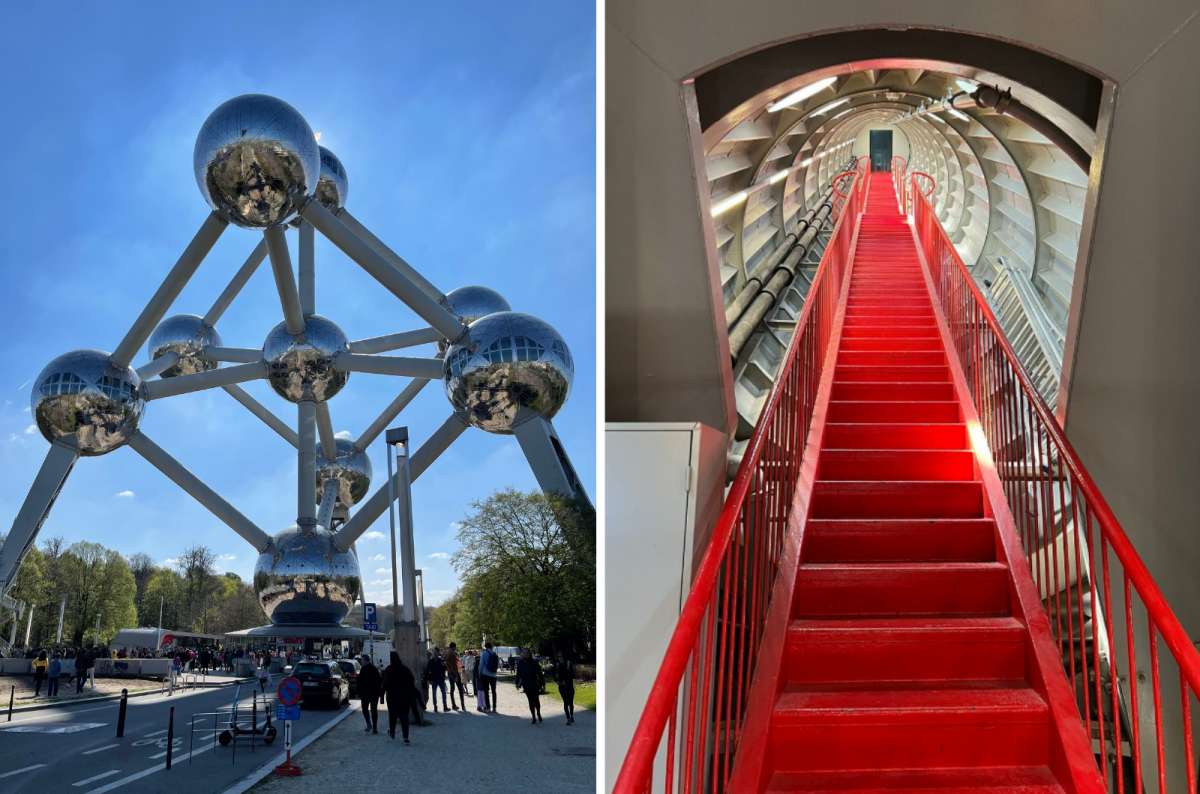
The Atomium was one of our favorite things to see in Brussels
We’ve already told you about the amazing museums in Brussels (actually, we put together a list of the most amazing museums in Belgium! ). Brussels was, for me, the biggest surprise in Belgium. I expected so little. Then I researched it and started to expect quite a lot... and even then it surpassed my expectations!
A part of that was thanks to the amazing tourist sites like the Atomium and Mini-Europe.
The Atomium is the giant steel atom that is the symbol of Brussels. It was originally constructed as the main—and temporary—pavilion for the 1958 Brussels World's Fair, but is now decidedly permanent. And prominent—the very top orb (one of 8) is 92 m (300 ft) above ground!
For us, just seeing the Atomium from the outside was probably the most interesting part, but you can go inside as well. The concrete base is a museum and you can go to the individual orbs via escalators and an elevator to visit the viewing platform, gift shop, and a restaurant. All while being flashed at with lasers and lights , feeling like you’re in a futuristic spaceship.
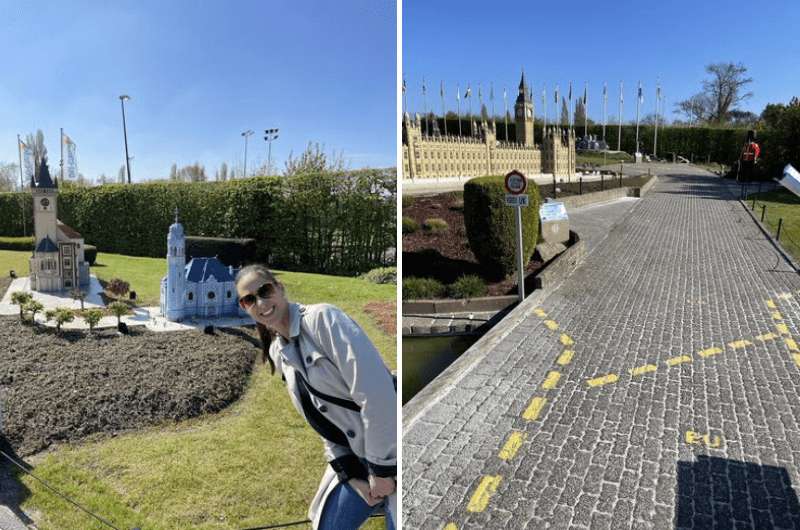
Karin enjoying some tiny castles on the left and London being outed from the Euon the right
But out of the two, Mini-Europe takes the cake. We don’t have children, but we are basically big kids ourselves, so we expected to love the miniature versions of some of Europe’s most important landmarks. We weren’t disappointed and spent half a day there and could’ve stayed longer if we had the time.
All the incredibly expensive structures are so detailed, with about 9000 little people and everything. They even brexit’d the UK! Plus, the Atomium is right next to Mini-Europe in the northern part of Brussels, meaning that you’ll have many photos from itty bitty Europe with a massive atom in the background.
You can get a combination ticket to both sites that can only be bought in person at one or the other ticket counter. If you want to get your tickets out of the way in advance, just get them online individually.
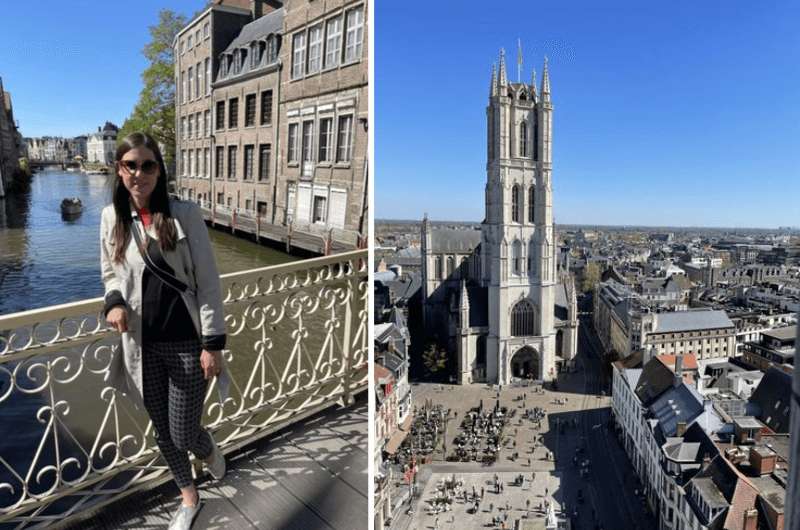
We “ghent” get enough of Ghent!
We loved Ghent. It’s not big and you’ll see it all within a day, so it makes a great day trip from Brussels , which is just half an hour away by train .
The 260k+ city of Ghent is more than twice the size of Bruges, but the central area that is of interest to visitors is very small . It does, however, have canals slicing through it, just like Bruges. If you look at the places on our list of things to see in Ghent , they’re all located within 1 km 2 (0.6 sq. mi). Not sounding so big now, huh?
The furthest out you’ll go is the STAM, Ghent city museum , which is about 2 km (1.2 miles) from central sites. You’ll learn all about Ghent’s history in this super cool museum with multimedia exhibits. Honestly even if you could care less about the city’s history, it’s worth a wander and a look at the modern glass addition to the historic building, plus the cafe serves good food. Win-win.
Tourist life in the city center is centered around Graslei , a sort of promenade by the river lined by gorgeous houses and even more gorgeous eateries. So not a particular thing to see here, but it’s the atmosphere that’ll entice you. It reminded us of Copenhagen’s Nyhavn.
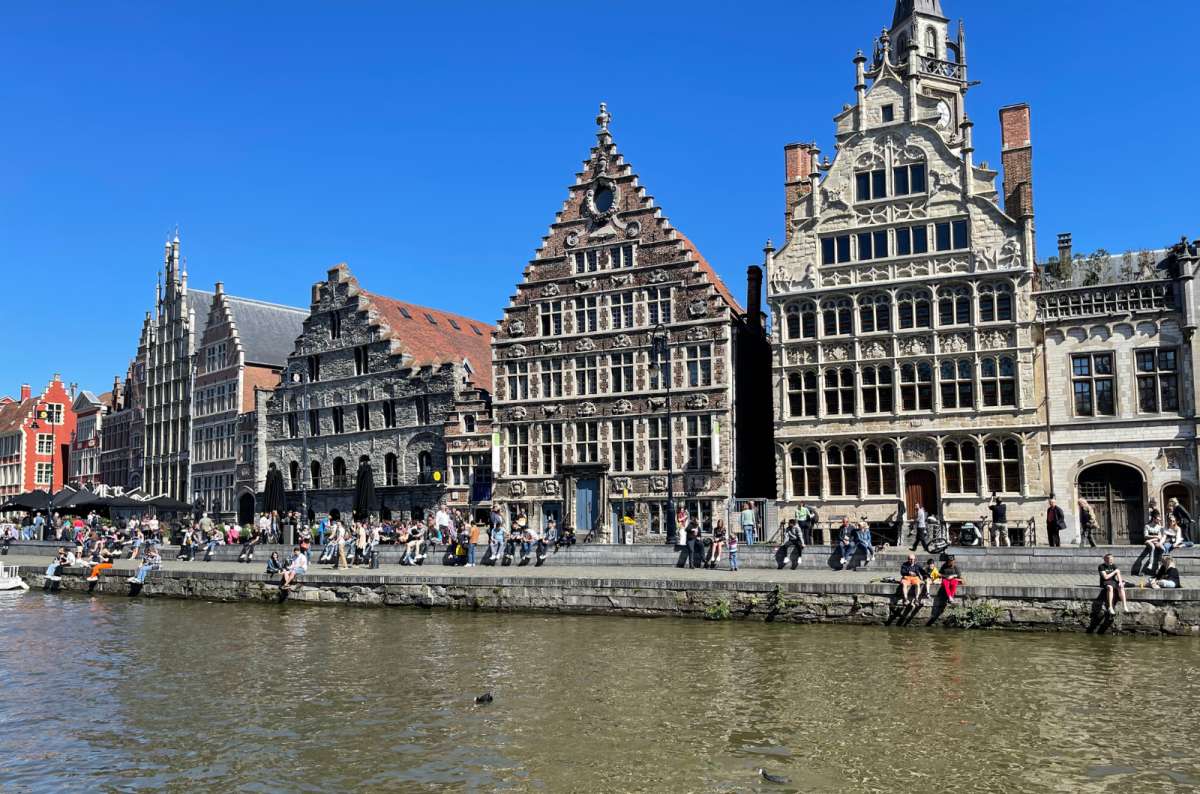
Central Ghent = lots to see
At the southern end of Graslei is the almost mandatory photo op with St. Michael’s Bridge in the background, and from there it’s just a short walk (or scooter ride?) to one of the top sites in Ghent, St. Nicholas‘ Church . Then you can see the Belfry , which actually gives you the best view of St. Nicholas’s Church, and right after that, our personal favorite, St. Bavo’s Cathedral . The interior and art in it are awesome.
Moving to the north, you’ll hit Ghent’s town hall , which is a beautiful, stately building (see it lit up at night if you can) and then, walking through Grafitti Street , you’re almost at one of Ghent’s most prominent plazas, Vrijdagmarkt .
Our favorite place in Ghent was the 10th century Gravensteen —a fantastic castle surrounded by a moat. We’ve already mentioned it in more detail further up on this list. Yes, it was so good it deserves its own spot in the country rankings!
For all of our tips and more places to see in Ghent, read up in our full Ghent guide .
Our hotel tip for Ghent
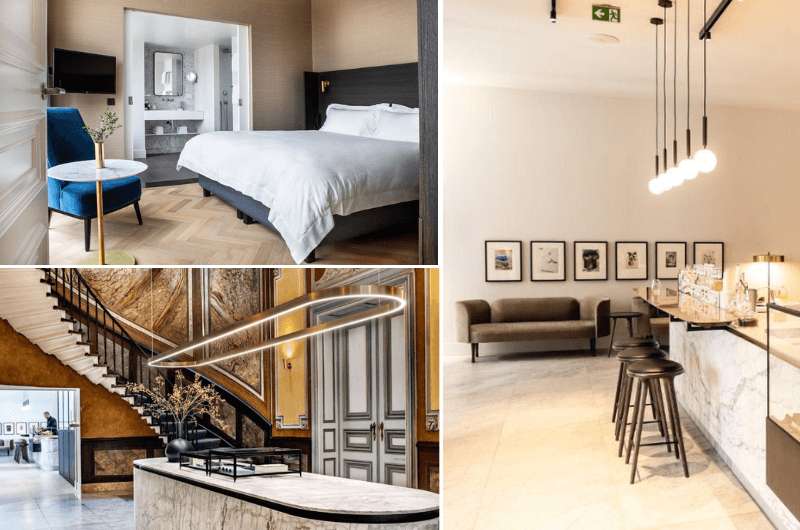
Comfy, cool and chic @ Pillows Grand Boutique Hotel Reylof
If you want to stay the night, note that most of the accommodation in Ghent are b&b’s and apartments.
For an actual hotel, see if you’d like the cozy but fab Pillows Grand Boutique Hotel Reylof . It gets you contemporary design, high ceilings and rain showers in the rooms and apparently also very comfortable pillows!
Besides that, the breakfast is supposed to be amazing and there’s a historic courtyard garden where the onsite restaurant has a terrace. You can wind down in the spa pool or in a sauna or gym.
Prices start around €250 per night for 2 people including breakfast.
12. Central Brussels
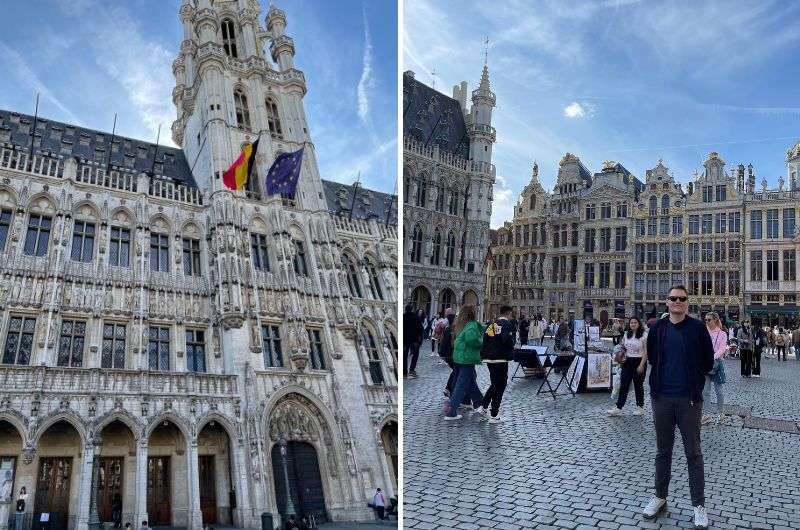
Soaking in the architecture on Grand Place
Our favorite place in Belgium was the I-thought-it-would-be-boring-but-it-so-wasn’t city of Brussels ! Yes, it has some very very good museums and the EU Parliament is sat here, but the best part of Brussels was... Brussels! The city center, to be exact.
The city’s main square, Grand Place, is overwhelmingly elegant. Everything is golden or at least intricately decorated, but most often golden and intricately decorated. It’s just a pleasure to be there, not just because it’s the country’s wealth blatantly on display . For one reason or another, Brussels’ Grand Place is beautiful.
The square is flanked by important buildings. There’s the Town Hall , which was built in the 15th century and is listed as a UNESCO World Heritage Site. It has very detailed Gothic decorations on the façade and a tower that commands attention from near and far.
Or the Brussels City Museum , which is home to the original Manneken Pis statue, one of the more boring icons of Brussels. The museum building itself is at least as interesting as the museum that it contains.
In the summer, you’ll often be witness to concerts on the Grand Place, and in the winter, things get even more magical with the Christmas market .
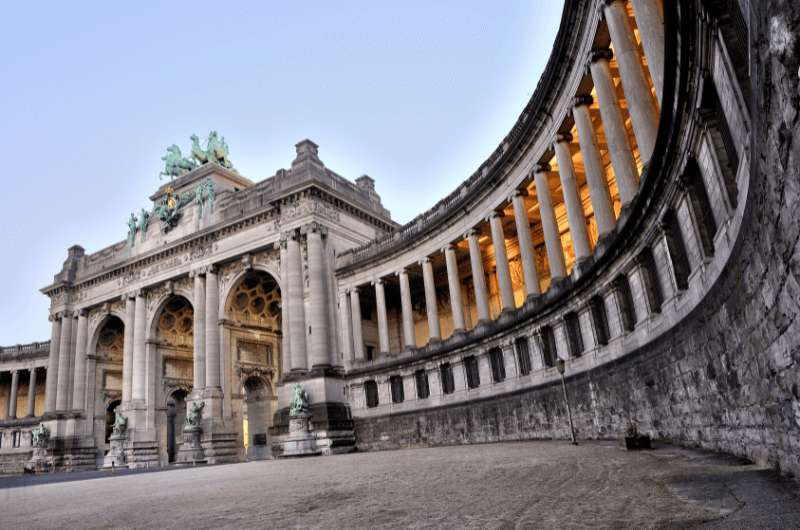
The Triumphal Arch in Brussels, the top of which you can visit when you have a ticket to the Royal Museum of the Armed Forces and Military History . Just wowzers! Details in our Brussels guide .
Brussels‘ center is wider than just these couple of squares—the Royal Palace and Brussels Park require your visit, especially if you’re there in the short time during the summer each year when it’s open to visitors inside and out.
Keep on heading east from there and you’ll pass the EU Parliament with its Parlamentarium and then Parc du Cinquantenaire , which is full of a number of museums as well as the wonderful Triumphal Arch .
We have a huge amount of information on everything that we thought was worth seeing in Brussels in our Brussels guide . Another article you might want to look at is our Brussels itinerary .
Our hotel tip for Brussels
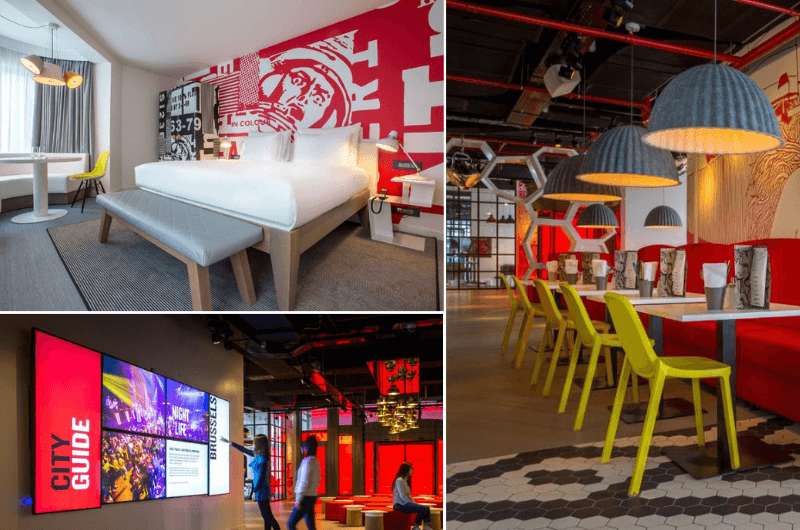
The cool and comfortable Radisson Red
Halfway between the Royal Palace and the Parc de Cinquantenaire is the hotel we stayed at while in Brussels, the Radisson Red . It’s the same hotel we stayed at in Lima, Peru , and we again thought it was really good bang for your buck .
The Radisson Red concept focuses on bringing people together through art, fashion and music . It’s all very youthful and connected, they even have an app where guests can share photos. There are huge TVs in every room, along with wall art and just art in general all over the hotel, customizable lighting in rooms and numerous social spaces where you can chill and to live DJs playing.
Prices start at €250 per night for 2 people with breakfast.
This post may contain affiliate links. We earn a small commission if you make bookings through my links, at no additional cost to you. This helps us keep this blog free, thank you!
Recommended articles
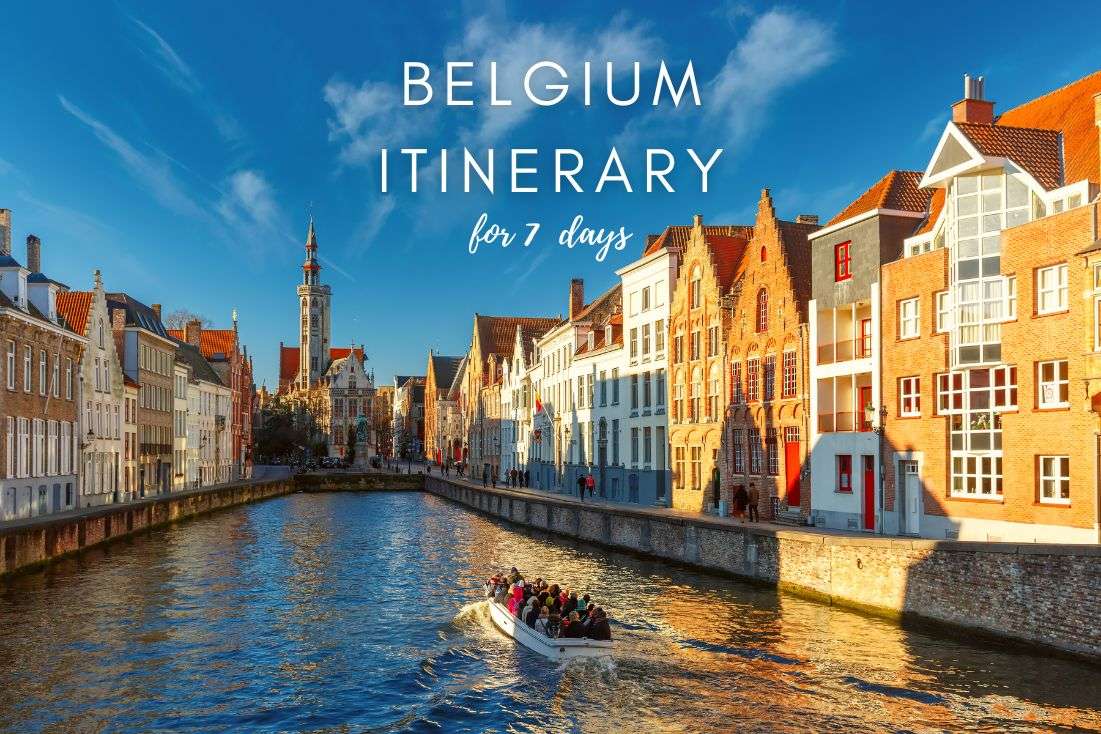
If you are about to plan a trip to Belgium, you are lucky my friend! You have just found the best Belgium itinerary there is! I’ve obviously had my humble pie this morning, so let’s get on with it.
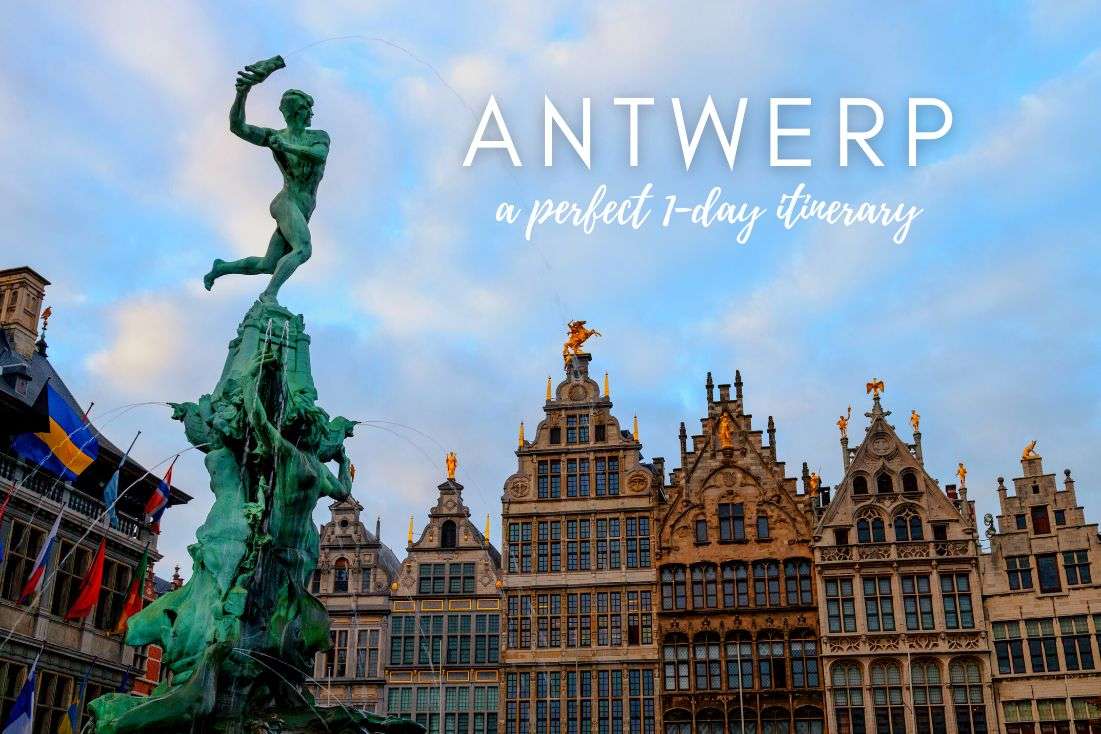
Antwerp, is a center of culture, art, history, and diamonds. The options for things to do in a day in Antwerp are almost limitless. But this is my—aka the best—take on how to spend one day in Antwerp.
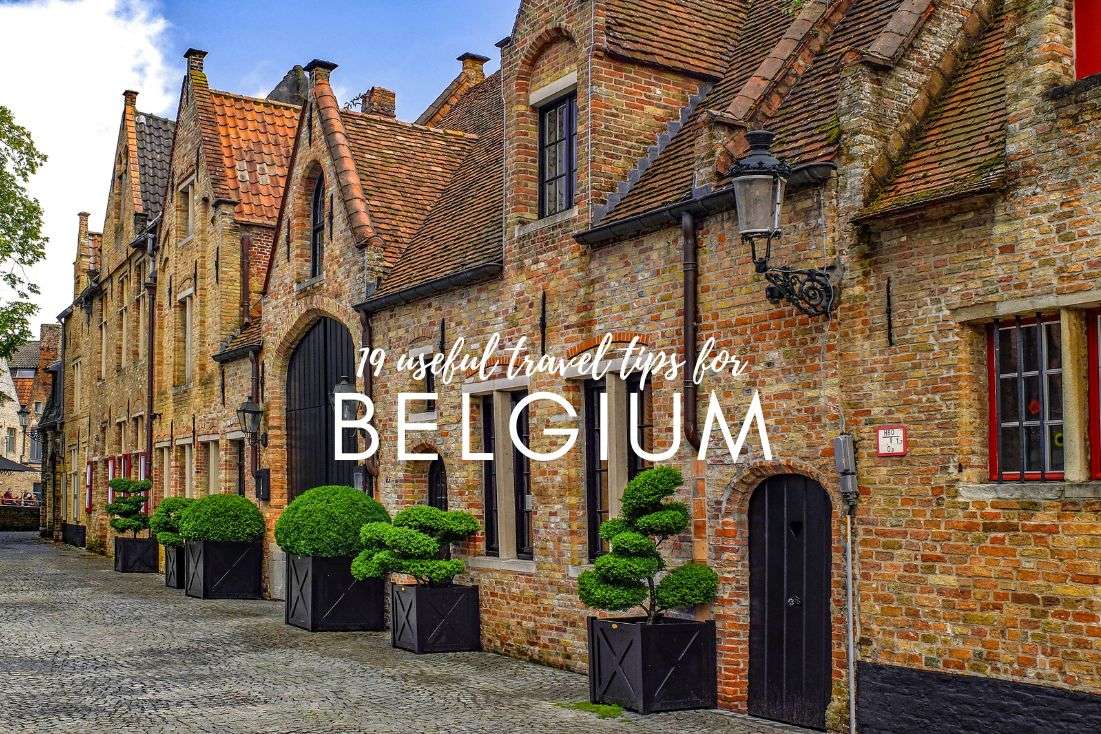
Belgium is known for all the fries, waffles, beer, chocolate, and beer. Here are a few pointers and tips that could be useful for your travel to Belgium. Bits and bobs that you’ll only learn through experience.
Thoughts? Give us a shout!

Hi! I’m Jan. I live in Prague, Czech Republic. I try to experience the best the world has to offer, and I don’t cease to be impressed. But if I’m not, I’m sure going to tell you! You can count on my full honesty and real opinions here. No bullcrap. I own and run several companies, which gives me great (but not unlimited) freedom to roam the world.
I was first inspired to start this blog by my own experience of researching for upcoming trips—I often struggle with a lack of good information, accuracy, and authenticity of resources. You wouldn’t believe how many “travel bloggers” don’t even visit the destinations they write about!
My goal with this blog is to provide you with complex and practical information so that you can plan your own vacation, complete with insights you’d only get if you visited the place. I also put together itineraries that are fully planned out trip guides.
Another aspect that drives this platform is my curiosity about the history, geography, politics, and economy of each country I visit, so I try to include this information in my articles, too. It’s always great to get the bigger picture, right?
And just to be clear, I am not trying to compete with backpacking blogs or provide hacks for an economical and affordable experience. My vacations follow the standard pattern of traveling by plane, staying in good hotels, and renting a car on the spot to get around. I’m also always up for a fantastic meal, though I don’t shy away from local delicacies and street food, either.
- Destinations
- Travel hacks
- Privacy policy
50 things you need to know before traveling to Belgium
Here in Travel drafts, we like Belgium, we like it a lot… It has good food, interesting history, and quite a few wonderful places to visit! We have been to Belgium by ourselves and together. Claudia even lived, studied, and worked in Belgium for a while, so it’s fair to say that we know a few things about Belgium! These are the 50 things you need to know before traveling to Belgium!
Page Contents
Belgium and the Locals
#1 Belgium is located in western Europe, and it’s bordered by the Netherlands , Germany , Luxembourg , France, and roughly 70km of shoreline in the North Sea. Although relatively small, Belgium has 10M inhabitants making it a highly densely populated country.
#2 The climate in Belgium is maritime temperate, with significant precipitation in all seasons, similar to the rest of Northwestern Europe. The winters are usually cool with temperatures going below 0 degrees and summers are warm with temperatures occasionally going up to 30 degrees.
#3 One could consider Belgium to be two countries with the same capital city… Sometimes it looks like the only thing keeping Belgians together is their desire not to be part of France and the Netherlands 🙂

#4 Thus, Belgium consists of three federal regions, Flanders in the North, Walloon in the South, and the Capital Region of Brussels! Flanders is the Dutch-speaking part, Wallonia is the French-speaking Region, and Brussels-Capital Region is bilingual. There’s also a small German-speaking region in the East of Wallonia.
#5 This means that Belgium has three official languages, French, Dutch, and German. However, they are not spoken by the whole population. Roughly 60% speak Dutch, 40% speak French, and less than 1% speak German!
#6 However, even if you don’t speak any of these languages, you can easily get by with English. Belgians appreciate your effort to speak their language, but almost everyone speaks fairly good English. So, no problem for us travelers here 🙂

#7 Belgium is a very very plain country… It really doesn’t have mountains. The south has some hills, but that’s it. The highest peak is Signal de Botrange , with 694 meters of altitude and 119 meters of prominence!
#8 Belgium is the heart of the European Union and if there was a capital of the EU that would be Brussels! It’s one of the most diplomatic cities in the world.

#9 Together with the Netherlands and Luxembourg, Belgium created the Benelux, a customs agreement that is considered the earliest predecessor of the EU. Later on, West Germany, France, and Italy joined together to make the European Coal and Steel Community, which would become the EEC and the European Union.
#10 King Leopold II of Belgium used to own a colony in Africa. Yes, you read it right, in the 19th century, the king of Belgium had a colony, the Free State of Congo.
The Belgian government didn’t have an interest in pursuing it, so the king created the “personal colony” with assistance from other European Powers.

#11 However, this regime is famous for being one of the most horrendous in Africa and for the violence used by the colonizers against the indigenous Congolese. Later in the 20th Century, Belgium took control of the Free State, creating the Belgian Congo, until 1960.
#12 There’s a huge comics scene in Belgium, and they are known to be an integral part of Belgian culture. Some of the most famous Belgian comics series and characters include The Adventures of Tintin, Spike, and Suzy, Spirou et Fantasio, The Adventures of Nero, The Smurfs, Gaston Lagaffe, Kid Paddle, Largo Winch, and Lucky Luke.
There’s even a Comics Museum in Brussels, which we advise you to visit! It’s an integral part of Belgian pop Culture, and it’s fun!

#13 Belgians love cycling. Like their Dutch friends, they use it daily for commuting but also love competing! The GOAT (greatest of all time) cyclist, Eddy Merckx, is Belgian, and so are many other unforgettable legends of cycling like Freddy Maertens, Roger De Vlaeminck, Johan Museeuw, and Tom Boonen.
Going to Belgium during the spring classics and watching their passion for the sport is a must! But be careful; it may be contagious!

#14 Belgium is a very safe and peaceful country ranking high in the global peace index. As a traveler, you shouldn’t find much trouble while traveling in Belgium, although there’s been reported quite a few pickpocketing in the most touristy areas. With a few simple precautions, you should be fine.
#15 In terms of safety, we need to mention that Belgium has suffered terrorist attacks in the last few years, and obviously, there’s the risk of happening again, so you should be aware of it.
In our opinion, this is not a reason for not visiting the country; however, tourism in the last few years has declined in Belgium, probably because of that.
Travel in Belgium and Tourism
#16 Belgium has 13 UNESCO heritage sites, 12 are cultural sites, and one is natural. Three of the sites are transnational. Check here the full list . Curiously, the small city of Mons has 3 UNESCO sites.
#17 Belgium’s easy accessibility and location make it a popular destination, with most tourists coming from neighboring countries. You should also note that business tourism is important in Belgium, particularly in Brussels.

#18 Brussels is packed with historical monuments, tons of chocolatiers, and cool street art. Start your visit with the Grand Place, a big square surrounded by the town hall, the bell tower, and the King’s house. Nearby is the statue of Everard’s Serclaes, who was a local hero, and the Manneken-Pis statue.
While walking through the city, indulge yourself with chocolate and Belgium fries and go shopping in the Royal Saint Hubert Galleries. We also advise you to go to the Atomium and the Belgian Comic strip Center. These are some of the most famous landmarks in Belgium , but there are so many others.
This is just the tip of the iceberg. We recommend at least two days in Brussels .

#19 You will be disappointed by the world-famous Manekken pis . It’s a very small statue located in a small street; if you aren’t looking for it, you may as well not notice it.
However, you should know that the Manekken pis is more than a statue it’s more like a national symbol that the Belgians cherish and adore!

#20 Belgium has so many picturesque cities, that it’s difficult to choose which is better. However, we believe, Bruges takes the prize.
We even take a chance and say that it is one of Europe’s cutest towns. The entire city is filled with Flemish medieval architecture with an identical style and size, making everything harmonious.
The river canals surrounding the city make it even more photogenic. One of the main attractions of Bruges is the church of Our Lady, where you will find the sculpture: Madonna and Child by Michelangelo.

#21 The second most picturesque city in Belgium is Ghent. Ghent is the capital of the Flanders region, the city is also covered in canals and Flemish architecture making. It has a fairytale castle, Gravensteen castle , with a lovely bridge.
Its main attractions also include the Saint Bravo Cathedral , where you can find the Ghent Altarpiece, and the old Graslei harbor . We believe that two days in Ghent is more than enough to enjoy this beautiful town.

#22 Antwerp is also a Flanders city and is known for its Diamond industry. It is the most important diamond city in the world. It is a good place to buy diamonds 🙂 Besides shopping for diamonds, the city has a beautiful railway station and the Cathedral of Our Lady , where you can find four works by Rubens.
The city is also home to one of the biggest Orthodox Jews communities in Europe. It’s cool to see traditional jews walking through the streets and in their traditional shops.

#23 Ostend is a coastal city in the North of Belgium. The city itself doesn’t have much to do, but it has a cool pier and a beach. It is a good place to walk by the coastline, eat fish and go boat seeing.

#24 If you are a history lover, you must visit Waterloo, near Brussels. This is the site of the battle of Waterloo, where Emperor Napoleon Bonapart was defeated by the English and the Persians.
On-site, there is a big hill, the Lion’s Mound, and a Lion Statue, constructed in 1826 by King William I. You can climb the hill and enjoy the panoramic view of the battlefield.
#25 In the south of Belgium, in the Wallon region (French side), is Liège. It’s a bustling and multiethnic city. Many Moroccan, Algerian, and Turkish immigrants live here, so you will find the influence of different cultures, especially in the variety of restaurants.
Don’t forget to try the Liège waffles in Liège and then spend all those calories climbing the “ Montagne de Bueren ,” 374 steps stairway leading you to the citadel, the city’s fortifications.

#26 For those who love cycling, the city of Huy (also in Wallonia) doesn’t need an explanation. The city of Huy hosts the iconic finale of the classic cycling race “La Flèche Wallonne.”
For those that don’t know, the race finishes at the summit of the Mur of Huy, a steep road with an inclination of almost 20%; it is a fantastic finale.
The city is only worth visiting if you love cycling and want to see the Mur; otherwise, it doesn’t have much to do.

#27 Belgium hosts the most important electronic dance music festival, Tomorrowland. It is held every year in July in the city of Boom, and it’s simply crazy. Two weekends with the most famous artists and DJs.
What to eat and drink in Belgium
#28 Food in Belgium reflects the rest of the country and its location between France and Germany. You could say that Belgian cuisine is served with French quality and German quantity. Although what you probably know is the Junk/fast/tasty food… The Belgian chocolates, the waffles, the fries, and obviously the beer!
#29 Together with Switzerland, Belgium arguably produces the best chocolates in the world! Belgium’s history with chocolate goes a long way from the 1600s, and their love for it has increased with time. Congo’s colony had a major influence by providing Belgium with large amounts of Cocoa. Both Chocolate Bars and Praline are Belgian inventions.
When in Belgium, particularly in Brussels, you will be presented with dozens of chocolatiers offering an uncountable variety of chocolates. Do yourself a favor, put your diet on a break, and try a few! They are really worth it! Some of the most famous brands are Neuhaus, Guylian, Godiva, and Leonidas.

#30 The other famous sweet/dessert are the waffles. You’ll see them everywhere, in every major square, and even street food trucks. Waffles are good everywhere, but in Belgium, they are great!
At traveldrafts, we are quite the sweet tooth, so we kind of love the idea of having chocolates and waffles available all the time! Whenever in Belgium (even in the airport), we crave some waffles with chocolate.
Note that there are several kinds of Waffles (Goffres) in Belgium, but the two more famous are the Liège Waffles and the Brussels Waffles. The Liège ones are the most famous and are richer, denser, sweeter, and chewier, while the Brussels waffles are lighter, crisper, have larger pockets, and are easy to differentiate from the Liège Waffles by their rectangular sides.

#31 Did you know French Fries are actually Belgian? And they take it seriously! Belgians love their fries which are sold at fast food stands and in dedicated fast-food restaurants called friteries , frietkot , or frituur .
In Belgium, fries are made from soft Belgian potatoes called bintjes, thick-cut and double-fried (this is very important!). Thus, if you like fries (who doesn’t ??), you must try the Belgian ones!

#32 Beer is very important in Belgium. There are hundreds (or thousands) of beer brands and varieties. The beer menu in bars and pubs is really impressive and reflects the huge beer culture of the country.
#33 Despite all these world-famous dishes and drinks, the national dish is Moules-Frites (which means mussels and fries)! You’ll see it in many, many restaurants in touristy areas and outside them.
Here at travel drafts, we can honestly say that we learned to like mussels in Belgium! It wasn’t one of our favorite things, but after trying them in Belgium, it really opened our eyes. Hence, we recommend you do the same!

Money and Costs of traveling to Belgium
#34 Besides being a founding member of the EU, Belgium is also a founding member of the Eurozone and shares the euro with 25 other countries, which is very handy to… everyone 🙂

#35 Belgium is a highly developed, rich country, meaning things tend to be pricey, particularly services. Even supermarkets are usually more expensive than in most other countries, but like almost everywhere else, it’s much cheaper to buy things at supermarkets than go to restaurants.
#36 You can use Debit cards almost everywhere in Belgium (mostly Visa and MasterCard), but credit cards aren’t as widely accepted. The smaller the retailer, the higher the probability he won’t accept credit cards and/or even charge 5% for using them.

#37 ATM network is well developed in Belgium, so you shouldn’t have major problems finding them to withdraw money, even in smaller villages. Your bank may charge you for withdrawing money if you aren’t from another Eurozone country. On the other hand, ATMs generally don’t charge you money for it; if they do, they have to advise you before the withdrawal.
#38 Accommodation prices are prohibitive, particularly in central areas of major touristic destinations. You may find a few friendly hostels at reasonable prices, and if you do, book them because it isn’t easy.
As per our experience, Booking has the most extensive variety of accommodations and prices in Belgium. You can use the box below to book your stay.
#39 Food and drinks in restaurants are also expensive, so if you are on a budget, we recommend you buy ingredients or food in supermarkets.
#40 Tipping isn’t mandatory, and you are not expected to always tip in restaurants. You should tip only if you want to reward good service. Waiters are usually reasonably paid and don’t need tips to make up the salary. If you still want to tip, 2 Euros is considered a good tip.

How to travel in Belgium
#41 One cool thing about traveling to Belgium is its ease. Being located in the center of Europe and the EU’s unofficial capital makes it very easy for anyone to travel to Belgium by plane, train, or car! Particularly in Brussels. Furthermore, you can easily find low-cost airlines that fly to Belgium, which makes it even better.
#42 The public transportation in Belgium works very well, despite being a bit expensive. There are trains to every significant Belgian city. You can barely reach any place in Belgium using only trains and buses. Note that buses are a bit cheaper than trains, particularly international ones.
When using public transport to travel in Belgium, note the design of metro stations in Brussels. Many of these stations are thematic, and some of them are very beautiful.

#43 If you prefer driving yourself, you’ll be pleased to know that Belgian highways are all free! Yes, there are no highway tolls (as in Luxembourg). Maybe this helps to balance the prices of almost everything else… On the other hand, fuel is costly, both diesel and gasoline.
#44 Driving in Belgium is particularly easy and unproblematic. The roads are good, there are many highways, and other drivers are usually peaceful. The downside is that you’ll most certainly find traffic jams closer to the bigger towns during peak hours.
#45 Belgium is quite small, so you can easily cross it in a few hours, meaning you can enjoy more of your time at the destination than traveling in between.
Or, if you prefer, you can establish a base and make fantastic day trips to all the other places of your interest. Brussels would be a great option as it’s centrally located and obviously has excellent transportation.

Other helpful information about traveling in Belgium
#46 You shouldn’t have problems finding hotels, bars, and restaurants with wifi. This is a highly developed, urban country, and the internet is everywhere, particularly in tourist areas. But if that’s not enough, you can easily buy a local data sim card! Or if you have one from another EU country, you can use data roaming freely within the EU (for short periods).
#47 One thing we didn’t like about Belgium is that some of its cities (Liege and even Brussels, for example) were dirtier than we would expect in such a developed country. It’s not that Belgium is full of trash, but when compared with their BENELUX neighbors, Belgium loses big time!
#48 You should note that almost everything is closed on Sundays in Belgium, particularly in the afternoon! So, if you need something for Sunday, make sure you buy it early on, or you may have a bad time. This is similar to most of its neighbors, like France, Germany, or Luxembourg.
On the other hand, supermarkets tend to close at 20:00 or later, not at 18:00 like the French and Luxembourgish…

#49 Are there mandatory vaccines to travel to Belgium? No, there aren’t, and you won’t need the International Certificate of Vaccination or Prophylaxis (or ICVP). However, as in any part of the world, it is advisable to have your anti-tetanus vaccination up to date if you are going to be in contact with nature and the countryside, as well as any other official vaccination program.
Again, and as we stated before, it’s better to be safe than sorrowful, so always Remember to Buy Travel Insurance Before Your Trip!
#50 What documents are needed to travel to Belgium? It really depends on where you are coming from 🙂 If you are from a Schengen country, just take your ID Card (or passport) and enjoy. If not, click here for more info on this and Schengen Visas, and here find which passports need a visa to enter Belgium.
Our Recommended Belgium Travel Guide Book

Pin for later
Planning a trip to Belgium? Have a look at some other of our favorite Belgian articles:
- 25 Famous landmarks in Belgium
- What is Belgium famous for?
- 15 Day trips from Brussels;

Sharing is caring!
Welcome to Belgium! We're delighted that you have chosen us for your next holiday.
Discover our surprising regions and let yourself be seduced by all Wallonia, Brussels & Flanders has to offer.
Select your destination and start your discovery. Have a great trip!
VISITWallonia
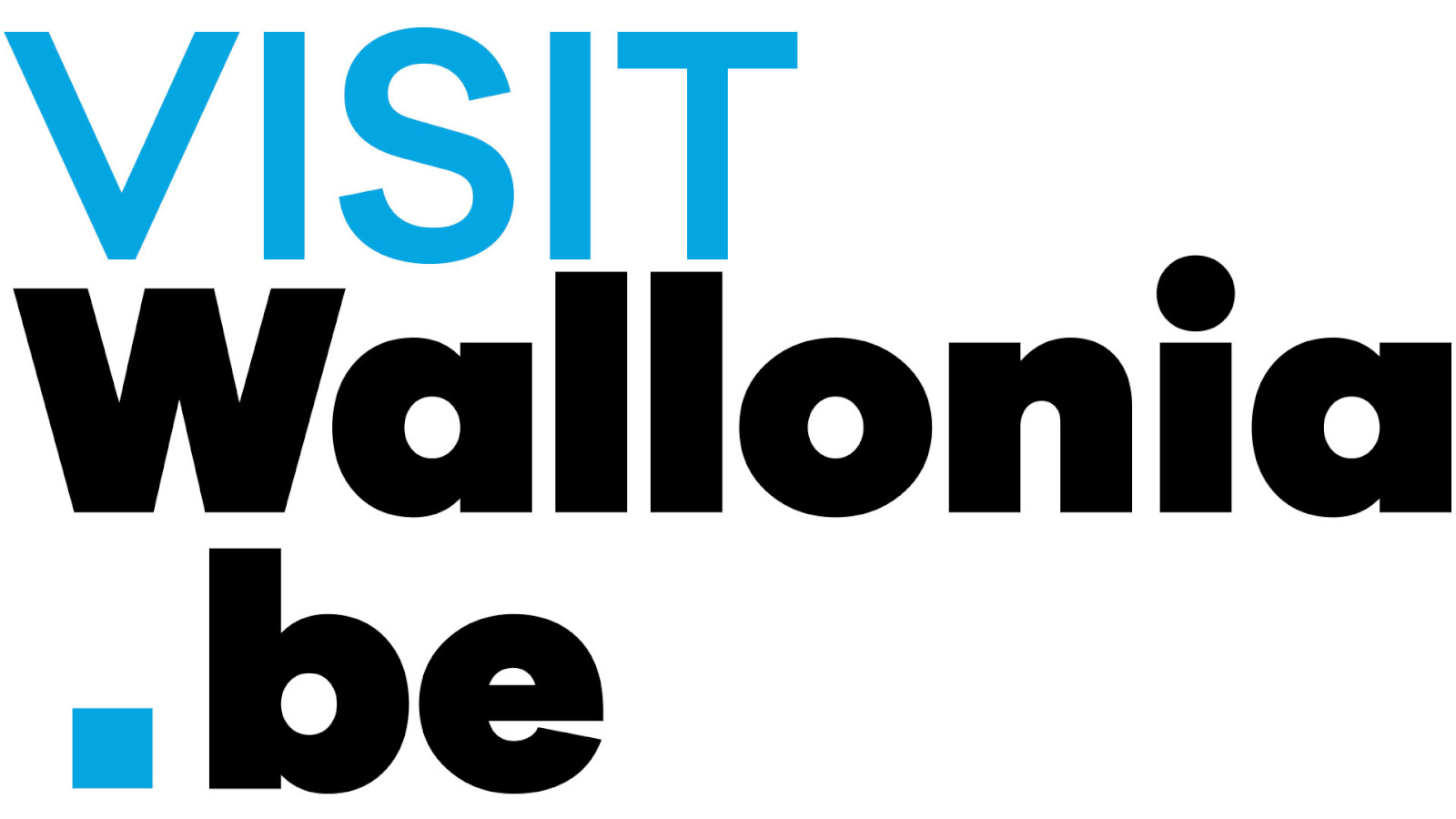
Avenue Comte de Smet de Nayer 14, 5000 Namur
+ 32 81 84 41 00
visitwallonia.be
Tourist Office for Flanders - Brussels
Grasmarkt 61, 1000 Brussel
+32 2 504 03 00
www.visitflanders.com
Brussels Tourist Agency

Rue Royale 2-4, 1000 Bruxelles
+32 2 513 89 40
visit.brussels

- February 25, 2024
Exploring Top 24 Places to Visit in Belgium That Will Captivate You
Table of contents.
Belgium is a country known for its charming cities, stunning architecture, and delicious cuisine. With so much to see and do, it can be overwhelming to decide where to visit. In this blog post, we will explore 24 must-visit places in Belgium that will make your trip truly unforgettable. From historic landmarks to picturesque towns, Belgium has something for every traveler. Join us as we uncover the beauty and charm of this irresistible country. You can access the article “ The Ultimate Guide: 50 Best Destinations to Travel to in January “.
24 Places To Visit In Belgium
Are you looking for the top tourist destinations in Belgium? We have compiled a list of famous places that you must visit while exploring Belgium. Just keep scrolling down and read on! Make sure to include these places in your itinerary to have an unforgettable trip to Belgium.
- Brussels: Iconic Landmarks and Vibrant Nightlife
- Bruges: Historic Palaces, Canals, and Artisan Culture
- Ghent: Artistic Treasures and Tranquil Serenity
- Antwerp: Culinary Delights and Cultural Marvels
- Ardennes: Adventure Amidst Picturesque Hills and Forests
- Tournai: Architectural Splendor of Magnificent Cathedrals
- Dinant: Exploring Caves and Experiencing Wildlife
- Leuven: Craft Beer Capital and Architectural Marvels
- Mons: Discovering Peaceful Retreats and Cultural Heritage
- Mechelen: Cruising Canals and Enjoying Scenic Picnics
- De Haan: Serene Beaches and Coastal Charm
- Durbuy: Blooming Gardens and Historical Heritage
- Arlon: Uncovering Stories of Battle-Scarred History
- Beguinage: Exploring the Legacy of a Unique Community
- Genk: Natural Parks and Wildlife Sanctuaries
- High Fens (Eifel Nature Park): Rare Flora and Fauna Amidst Nature
- Hoge Kempen National Park: Lakeside Tranquility and Pine Forests
- Knokke-Heist: Scenic Beauty and Coastal Elegance
- Kortrijk: Shopper’s Paradise and Architectural Splendor
- La Roche-en-Ardenne: Museums, Animal Parks, and Natural Beauty
- Liege: Vibrant Nightlife and Cultural Scenes
- Malmedy: Hiking Trails and Cycling Routes Amidst Nature
- Zwin: Birdwatching Haven and Coastal Conservation Area
- Ostend: Beachfront Relaxation and Gothic Architecture
1- Brussels: Iconic Landmarks and Vibrant Nightlife

Must try meals
Experience Belgium's culinary delights, from hearty stews to delicate chocolates, blending tradition with innovation.
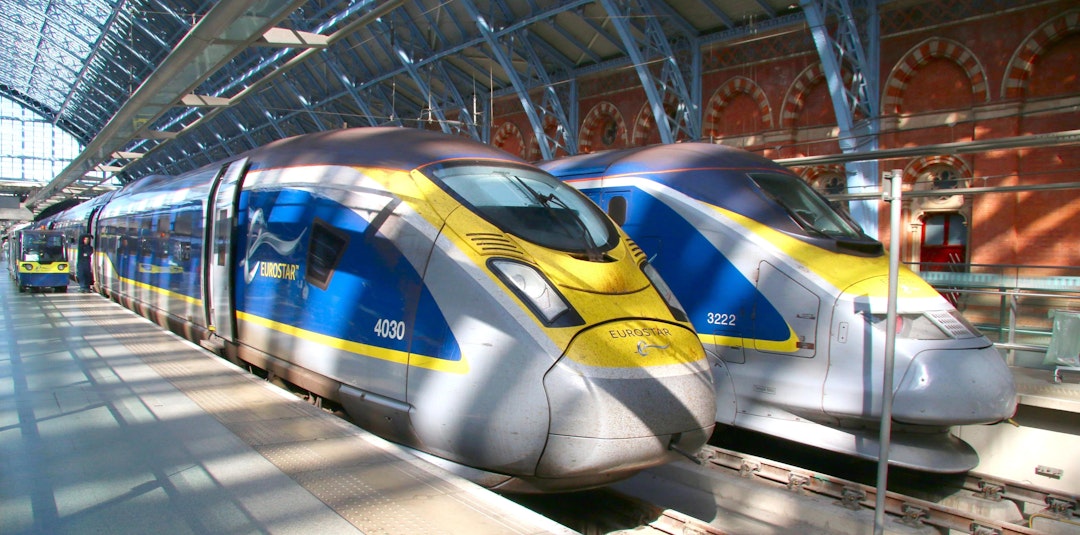
Explore by train
Efficiently explore Belgium's train network, seamlessly connecting historic cities and picturesque countryside.
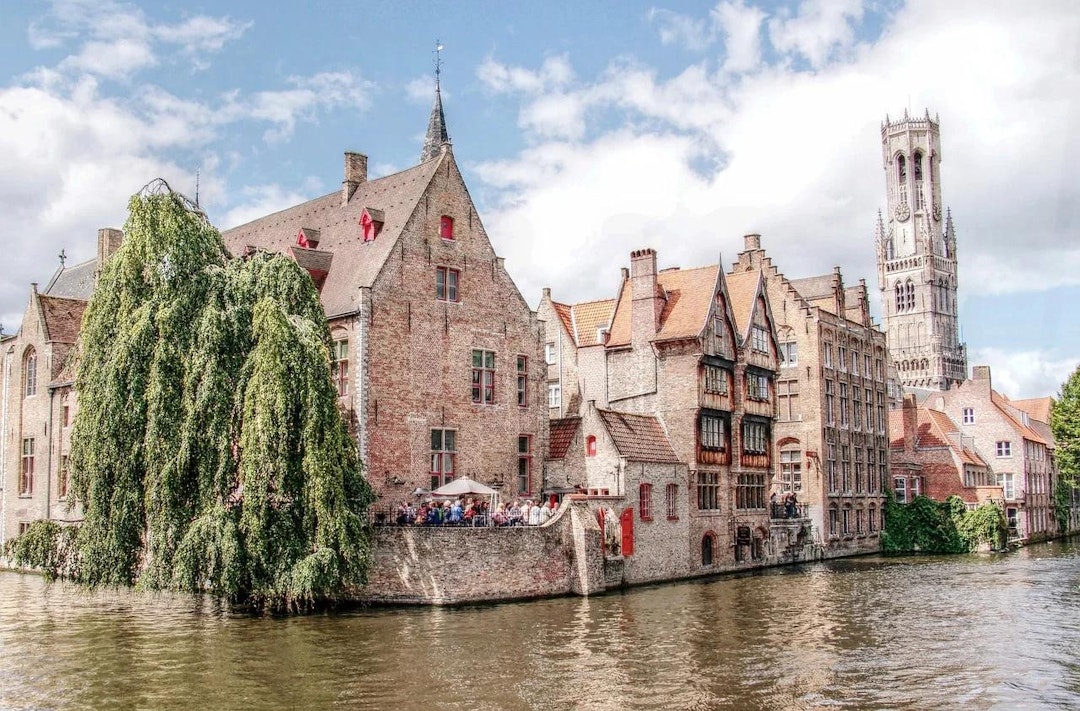
Explore the historic town center, canals, and medieval architecture.

Must try beer
Dive into Belgium's beer culture, where every sip is a journey through centuries of craftsmanship and tradition.

Discover medieval castles, cathedrals, and the Gravensteen fortress.
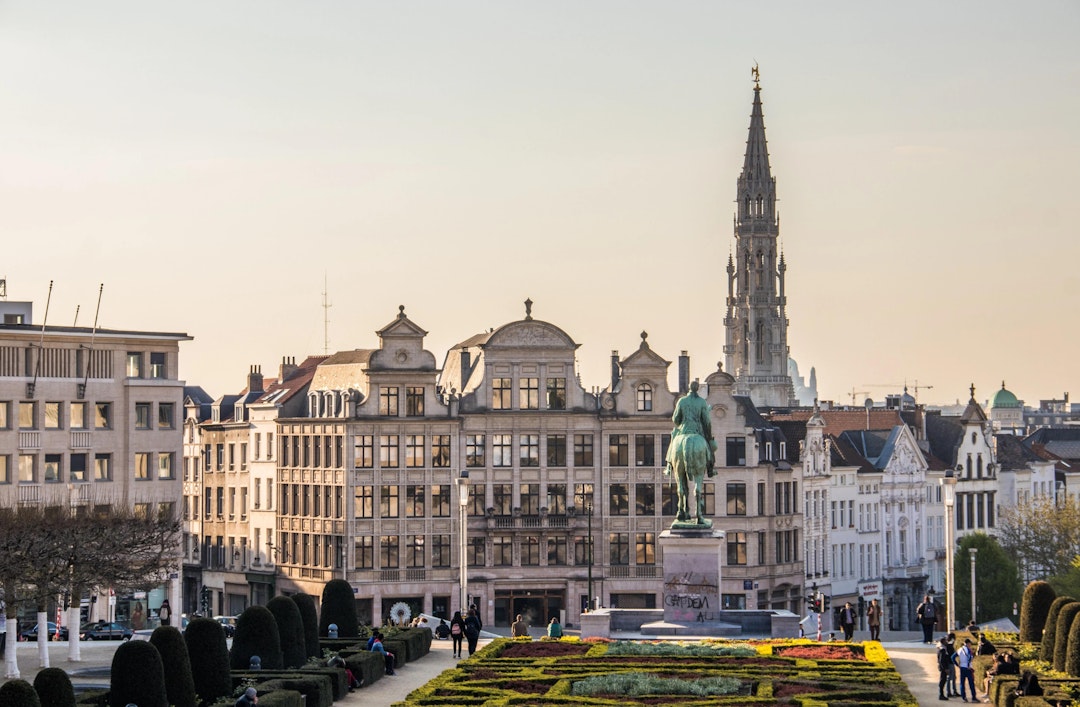
Explore the Grand Place, Manneken Pis, and delicious Belgian chocolates.
This website only uses essential cookies to ensure you get the best experience. By continuing to use the website, you consent to the use of these essential cookies. Cookie policy

First-Timer’s Guide to Belgium- Things to Do in Belgium
Belgium is a country a lot of people simply pass through or, when they do visit, they tend to stick to the two B’s: Brussels and Bruges. Here are Things to Do in Belgium that you must not miss!
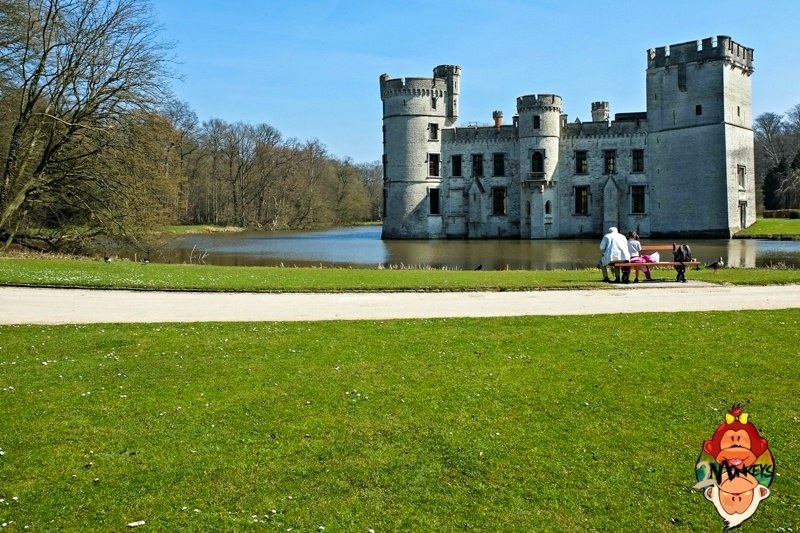
I won’t deny that these two cities are definitely worth a visit, but there’s so much more to our little country and that’s why I’ve put together this first-timer guide to Belgium. The first-timer guide to Belgium: 9 things to know, see and do
Table of Contents
1. The official languages are French, Dutch and German, but English will do
The language situation in Belgium is complicated and it is true that there are people who’s native language is French and who refuse to speak Dutch when a Dutch speaking person visits the French speaking part of the country and vice versa. However, in general we quickly adapt when we hear someone doesn’t speak our language, especially when we notice the person is visiting from abroad. I’ve even heard expats complain that they can’t learn Dutch or French because we always immediately switch to English (sorry about that).
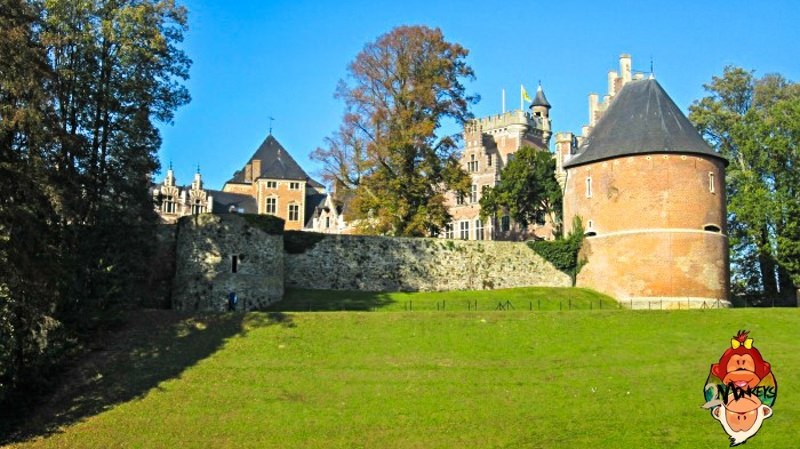
2. Not all Belgian chocolate are good

I know this might come as a shock, but not all Belgian chocolate is good. Most of it is, but just like with any product, we also have cheap mass produced chocolate bars that sell for €0,30 in the supermarket. You can pretty much be sure that those won’t be that great. If you want to properly experience Belgian chocolate it’s imperative that you go get some from a real chocolatier . Can’t find one? Bakers sometimes sell chocolate from real chocolatiers as well and in the supermarket you can’t go wrong when you buy Côte d’Or. It’s the brand with the elephant. Take the milk chocolate with nuts bar. You won’t regret it. But I digress.
3. Belgium has plenty of UNESCO World Heritage Sites
If you’re someone who likes to check off UNESCO sites, Belgium might be interesting for you. Officially we only have 11 UNESCO World Heritage Sites, but in fact we have many more. That’s because the 32 belfries of Belgium are counted as just one UNESCO site. Will you attempt to see them all?
Related Article : Looking for affordable accommodation? Check out our Agoda for great deals.
4. Ghent is better than Bruges

There, I’ve said it. I like the city of Ghent better than Bruges. Don’t get me wrong – I like Bruges as well, but Ghent is more lively, more real. The historical center of Bruges could be the scene of a fairytale, but it’s also quite touristy and when you leave the historical center there really isn’t that much to see. In Ghent, however, there’s something cool around every corner. This city is the perfect mix of historical buildings, great museums, delicious restaurants, reviving coffee shops, edgy street art and more. My recommendation? Spend two nights in Ghent and make a day trip to Bruges from there, it isn’t that far by train.
Check out some of the cool and cheap tours you could do in Ghent
Check out some of the cool and cheap tours you could do in Bruges
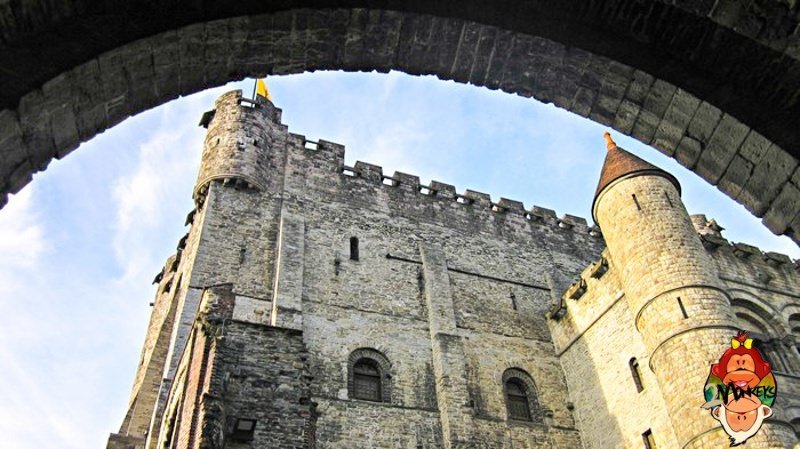
5. You might not like Brussels the first time you visit
I’d rather warn you so that you don’t get your hopes up. There are plenty of people who fall in love with Brussels, but there are just as many who despise the city after a first visit. It’s important to know that, even though there’s tons to see and do as a visitor, Brussels is first of all a city that people live and work in. It’s also a city consisting of several sometimes very distinct neighborhoods which makes it hard to love as a whole. When you come visit (and you should), make sure to do your research. There’s really something for everyone in Brussels, but it’s not always as easy to find as it might be in other cities.
Check out some of the cool and cheap tours you could do in Brussels
6. We are the country of music festivals

In a few years time, Tomorrowland has grown to be a worldwide phenomenon, but Belgium was already ruling the festival landscape way before that. It starts in spring and ends in fall, but summer is when things get really crazy. In July and August you can usually choose between at least three different festivals every weekend. Every itself respecting city or town seems to have one and a besides from the really big ones, a lot of them are free.
7. We might live next to the Germans, but our transportation system doesn’t reflect that
A lot of people seem to think that because of our proximity to Germany, their efficiency reflects on us. It doesn’t and that clearly shows when you make use of public transportation here. There’s plenty of it – you can take buses, trains and trams everywhere – but it often runs late and the national railroad company NMBS is notorious for its strikes. I don’t want to scare you off and you probably won’t even have to deal with it if you’re only visiting for a short time. It’s just something to take into account.
8. It can be any kind of weather all year through
I’m sure you’re not expecting tropical temperatures when you book a trip to Belgium, but it’s still good to know that the weather here is never predictable. It can be 12°C in January, freezing in March, 25°C in May and 17°C and raining in July. You just never know. Best is to pack some layers and always bring a rain jacket or umbrella. You’ll see: if you bring it, you won’t need it, but if you don’t…
9. Leuven is not the same city as Louvain-la-Neuve
I couldn’t leave my hometown out of this list, now could I? Over the years I’ve welcomed several travelers to my hometown Leuven and more than once have they told me that they’d almost taken the wrong train or that they couldn’t find information on the sights and activities in Leuven because they’d thought it to be the same city as Louvain-la-Neuve. So let me briefly explain: The University of Leuven used to consist of a Dutch speaking and a French speaking part. When the language barrier was determined in 1962, Leuven officially became Dutch speaking and so more and more people thought the university should be strictly Dutch speaking as well. This discussion escalated and turned into a national problem too complicated to explain here, but one of the results was that the university was split in two and the French part moved to Louvain-la-Neuve (“New Leuven”), which was founded especially for that purpose.
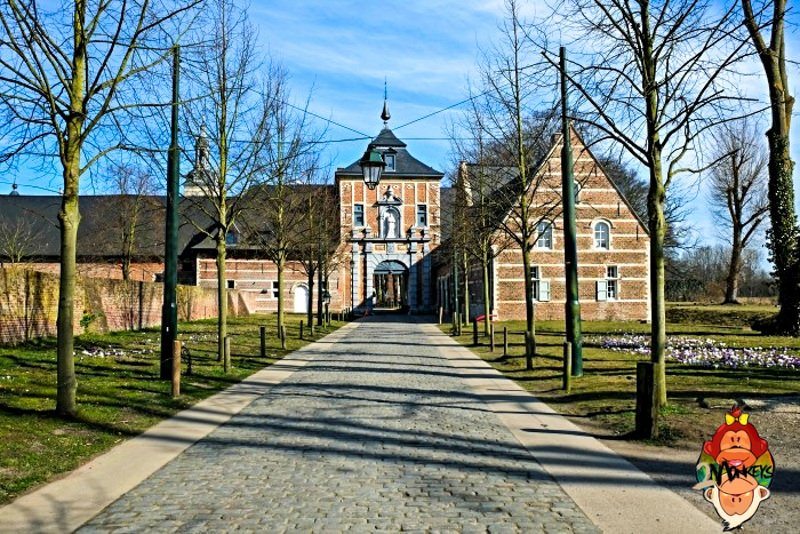
Wow, that was a serious note to end on, wasn’t it? I do hope that this first-timer guide to Belgium has given you a better idea of our country and some useful tips to plan your own trip here. There’s so much to see and do that it would be a shame not to come.

About the Writer:

Are you on Pinterest? Pin these!
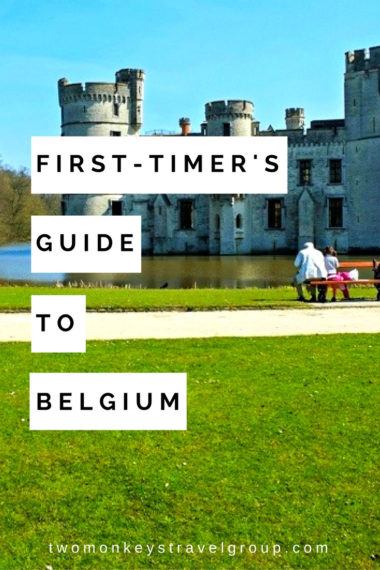
Leave a Reply Cancel reply
Your email address will not be published. Required fields are marked *
This site uses Akismet to reduce spam. Learn how your comment data is processed .
45 thoughts on “ First-Timer’s Guide to Belgium- Things to Do in Belgium ”
Very helpful! i already took some notes for our upcoming trip!
That’s great Noelia 🙂 We’re glad to help you on your upcoming visit to Belgium. Happy trip!
My english is awful so great to know to know how beligians are very diversed in english. I can survive french so I better go to french areas. Haha
Not a bad idea, Jaime. When are you planning visit Belgium? Let us know so we can give you some tips and guides for first timer.
Perfect guide. I like how detailed it l from local tips to things to do.
Glad you like it, Gerry. This is perfect for first timers in Belgium. Are you planning to go here?
I am into heritage sites so glad to know that Belgium has lots of it.
Cool, Riza. Visit Belgium and enjoy its heritage sites – one of the awesome things to do in the country.
Will be in belgium this autumn so this guide is a huge help. Love the Gaasbeek castle!
Awesome, Dianne! Gaasbeek Castle is one of the best spots in Belgium.
Luckily I’ve tasted great Belgian chocolates so far. Wanted to go back here and do these thingsy you shared
When did you visit Belgium? Glad you had great chocolates. Drop a comment here when will you go back to Belgium and do these things to do.
Three languages which are widely used in europe; makes it easier to travel there. Would love to visit Belgium soon.
Sounds great, Jim? Better go to Belgium and let us know if you have some question from our guide here.
All I want is a Belgian waffle. Haha. I am amazed how many wonderful things about Belgium. Pinning this for my future guide.
Have a lot of Belgian Waffle in Belgium, Anne. Wish you can visit Belgium too and try these things to do.
Such a great post! You are introducing Belgium very well. I am glad that I can speak English, when I visit it, because I don’t speak France, Dutch or German. My brother visited Brussels recently for work and he liked it there. But Belgium has so much more to offer. Thank you for creating this guide, It’s very helpful.
Glad your brother liked Brussels. You are welcome as English speaker in Belgium, Rodanthi. This will make it easyier for you to tour and do lots of things.
I have been to Brussels and loved it, surprised to hear that some people might not like it. Totally have the other places you have listed here on my things to do in Belgium next time. And their waffles, alright I am hung now lol xx, Kusum
Amazing, Kusum. Yes, not all can like Brussels for the first time. Waffles unlimited in Belgium and bulks of things to do.
I love belgium and when I’m in Brussels I always visit Pierre Marcolini. I love that chocolate!
Nice choice, Sabine. Hope you can come back to Belgium and see the other cities and do more things.
I have never been to Belgium but it looks like a beautiful country to visit. You statement, “Not all Belgium chocolate” actually made me giggle! I know its true, it really stands to reason, still it made me giggle! 🙂
Hehe. Try to take the best belgian chocolates. haha. Come and see Belgium, KatR. You’ll love it.
I have been to Belgium a couple of times and loved it every single time. I would mention Antwerp on your list, it’s a pretty, pretty town, similar with Brussels but more quiet and safe. And with amazingly chocolatiers, haha. 🙂
great choice, Joanna, Bet you will come back to Belgium anytime soon. Haha
i am rashed bangladeshi holder i want to visit belgium can you help me
I have always really wanted to visit Belgium. Some great tips here! 🙂 I’ll pin to remember later.
Thank you, Shana. You will visit Belgium soon. Remember, #dreamsdocometrue
I’ve visited Leuven before and really loved it! You come from such a beautiful town 🙂 The botanical gardens are so pretty!
Yay! looks like you had an awesome trip, Laura. Come and visit Belgium again.
These are really good tips. I have never been to Belgium but this is a great start if I ever get over there. I also agree that not all Belgium chocolate is delicious!
Which one did you try, Alison? Come to belgium and try other chocolates. haha.
I visited Belgium a few years ago and loved it! I did not get the opportunity to do many of these thing as I was only there a few days- will check them out next time.
Better go back to Belgium, Bella. When you decided when to go, check these things do for your guide. 🙂
Ahhh it’s always refreshing when I hear English is welcomed in a country! I suck at speaking other languages besides English and hate it when I travel places where English is a no-no….
Haha. I know how you feel, Courtney. But sometimes we really need to adapt with the coutry as we are all visitors anyway. Basic lines could help a lot and we can enjoy more these things to do in Belgium., for instance.
I was born in Hannover and I love Germany even if I live now in the UK. German people love their language but they are also very helpful when it comes to tourists. Berlin is one of the most amazing cities in Europe and for sure a must visit one!
It looks stunning! I have to admit I’m disappointed that not ALL Belgian chocolate is amazing 😉
It’s okay, Lana. There are still hundred things to do in Belgium aside from chocolate tasting. 🙂
Bruges is cute bit Ghent is better I agree. As for the chocolate, also agree 100%. I have had AWFUL Belgian chocolate. Beautiful photos, you got nice weather!
Better get some chocolates from chocolatier and taste the best belgian chocolate. Haha. When did you visit Belgium and what were the things you do?
Love this article! Belgium is one of my favourite countries in Europe because it’s compact and easy to get around, plus there is so much to see, eat and drink. Can’t wait to return for some moules and frites, chocolate and beer!
Thanks for having me guys!
Thanks Sofie!! Sharing this to our forum and social media soon! =)
COPYRIGHT DISCLAIMER: Many of the articles on Two Monkeys Travel Group are guest posts by a number of Approved Contributors and are hosted by Two Monkeys Travel Group. Approved Contributors control their own work and post freely to our site. This includes all text and images that they use within their own work. All contributors are instructed to follow internationally recognised copyright and intellectual property guidelines. Two Monkeys Travel Group takes its own responsibilities very seriously, so if you feel that any part of this work is abusive in any way, please send us an email so that we can investigate - [email protected]
DISCLOSURE: Please note that some of the links above are affiliate links. So when you make a purchase we sometimes make a small commission, at no extra cost to you. The cost to you remains the same, sometimes even cheaper if we have negotiated a special deal for our readers.We use all of the companies we have listed here and that’s why they are in this list, but of course we need to keep Two Monkeys Travel Group running as well as it can, which is exactly what you’re helping with if you do decide to buy or book something through an affiliate link! If you have any more questions about the companies we use or any other companies you’re looking at, just email us and we’ll be happy to help. Please see our full disclaimer page for more information.
Written by Two Monkeys Travel - Contributor
Two Monkeys Travel Group – Community Travel Blog is a travel blog and website. We quickly grew into a valuable source of inspiring travel stories, advice, itineraries and travel guides, with the aim of demonstrating how to live a sustainable life of travel, whilst living your own definition of success. If you'd like to contribute and write a guest post, contact us at [email protected]
48 Hours in Tokyo – Exploring Japan’s Vibrant Capital
How to find the best hotels in new york, top california destinations for families to enjoy, scuba diving and snorkeling in the philippines, what are the benefits of booking flight tickets in advance, related posts, 10 best things to do in poros, greece [with suggested tours], weekend itinerary in dinard, france: how to spend 3 days in dinard, france, our isles of scilly adventure: one week camping in england’s secret tropical paradise, why majorca is spain’s best multi-destination holiday island, previous post, best hostels in manila, philippines (the whole metro manila), motorbike trip across cambodia and thailand, subscribe to our newsletter.
Receive tips on how you can live a sustainable long-term travel lifestyle!
- First Name *
- Name This field is for validation purposes and should be left unchanged.
- Meet the Team
- Work with Us
- Czech Republic
- Netherlands
- Switzerland
- Scandinavia
- Philippines
- South Korea
- New Zealand
- South Africa
- Budget Travel
- Work & Travel
- The Broke Backpacker Manifesto
- Travel Resources
- How to Travel on $10/day
Home » Europe » Backpacking Belgium Travel Guide (2024 Edition)
Backpacking Belgium Travel Guide (2024 Edition)
Little Belgium is so often overlooked by backpackers in Europe and you don’t hear about too many people backpacking in Belgium at all. Most of the time, it’s all about France, Germany, the Netherlands or Lichtenstein…
What gives? Belgium is perfectly fine place to go backpacking in!
For one thing, the food is amazing and the beer is legendarily good. The history and architecture are also just as impressive as anywhere else in Europe. Don’t get me started on the festival scene either; in the summer the entire country is like one big party!
Granted, there are some things to know before planning a trip to Belgium. It can be pricey at times and the weather does leave a lot to be desired. Knowing where the best cities and places to visit in Belgium will be crucial as well.
This budget travel guide for Belgium is meant to be an overview. We’re going to be covering a wide array of subjects that all pertain to backpacking. That means costs, where to stay, tips, tricks, and how to have the best time possible. By the end, you’ll know exactly what it takes to go backpacking Belgium and, hopefully, be inspired to do so.
Curious to see what Belgium has to offer? Let’s find out!
Why Go Backpacking in Belgium?
Belgium, as a backpacker destination, is often overlooked. Most people tend to gravitate towards its neighbors – e.g. Netherlands, France, Germany – while backpacking Europe and may simply pass through Belgium on the way to somewhere else.
While Belgium may lack certain qualities that make places like Amsterdam or Paris alluring, Belgium is not totally lacking excitement. Quite the opposite: there are plenty of cool things to do in Belgium for backpackers , they’re just a little different than what they may be used to.
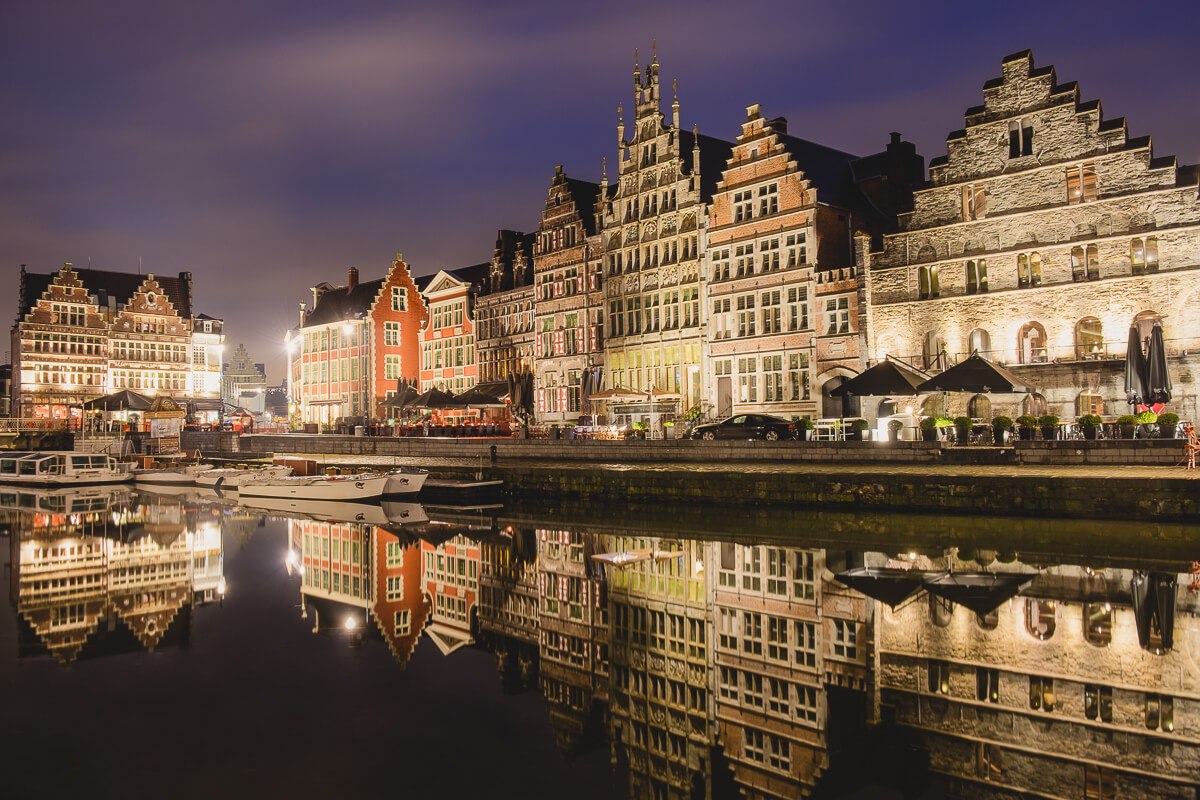
For one thing, Belgium is an awesome culinary destination. Belgium food, though notoriously fattening, is among the best on the continent. No surprise either that the beer culture is fantastic; in fact, backpackers could plan their entire Belgian itinerary or backpacking route just around visiting the myriad of breweries, or visiting one of Belgium’s beer festivals .
Culturally, Belgium could also compete with any other country in the region. The Flemish architecture – ugly brutalist urbanism of Brussels aside – is just as impressive as anything in the Netherlands or Paris. Visiting the quaint, sleepy little towns are great for those looking to get off the beaten path. If you make it all the way to the Ardennes, then you will be in one of the wildest places in Western Europe too.
The next question is: how does one plan a trip to Belgium exactly?
Best Travel Itineraries for Backpacking Belgium
Everyone visiting Belgium will have a different itinerary forsure. Each itinerary should be custom designed for each traveler so they can get the most out of it.
To get the ball rolling and give you a couple of ideas, here are some recommendations for planning an itinerary through the most beautiful places in Belgium !
Backpacking Belgium Itinerary 3 Days: A Glimpse of Belgium
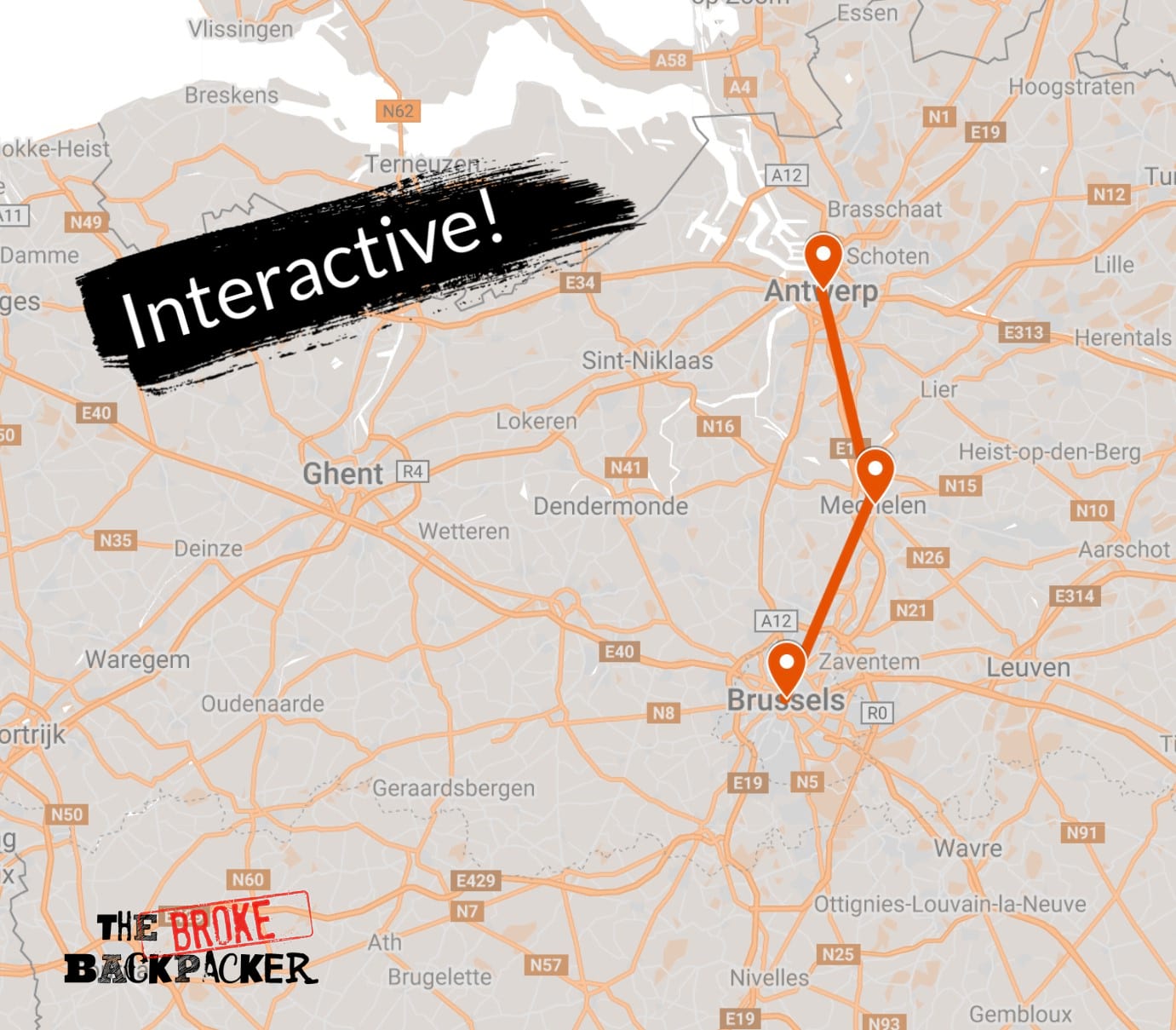
Three days isn’t a lot of time to be in Belgium; some people “passing through” may have an itinerary like this. That being said, it is still possible to appreciate the country with this limited amount of time.
With three days, backpackers are only going to be able to see two places: Antwerp and Brussels, perhaps squeezing in a detour in between if they’re feeling up to the challenge. This sort of Belgian itinerary might also be convenient for those traveling in The Netherlands or France afterward.
You’ll start this itinerary either in Antwerp or Brussels. Head immediately for your lodging and then get ready for a whirlwind tour. On day 1 you’ll be exploring the historical attractions of Brussels or the bustling shopping and dining streets of Antwerp. One could make a detour to Ghent and stay a night in the medieval masterpiece or Mechelen to stay a night in the Het Anker Brewery.
Backpacking Belgium Itinerary 7 Days: The Best of Belgium
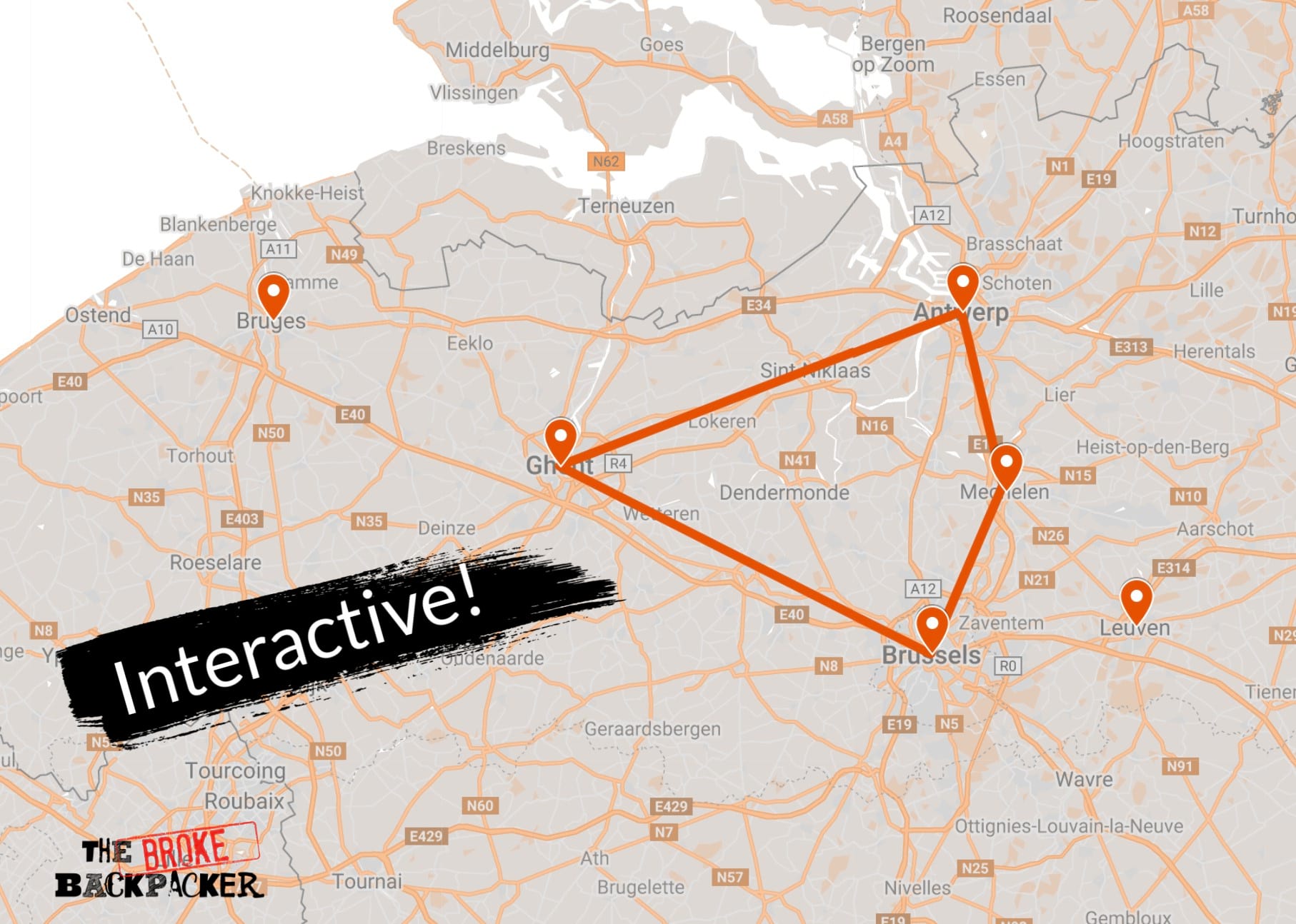
Seven days in Belgium is much more reasonable. With a full week, backpackers will not only be able to enjoy Brussels and Antwerp, but also locations like Ghent and Bruges.
The route for this Belgian itinerary will be a triangle connecting Antwerp, Brussels, and Ghent. All of these deserve at least a couple of days to explore, though it may not happen that way. I’d definitely recommend staying in Ghent and Antwerp for a few days each, at least.
From the three aforementioned cities, several side trips are possible. Bruges is a 30-minute train ride from Ghent while Leuven is less than 30 away from Brussels. Backpackers could easily base themselves in one or two large cities and then make day trips. Both Leuven and Bruges, whilst objectively beautiful, can be seen in a single day respectively.
Depending on how many day trips you intend on taking, it may be a good idea to buy a rail pass. Plan out your trip – if the cost of train tickets is more than 75 euro, buy a rail pass instead, specifically the Rail Pass Ten.
Backpacking Belgium Itinerary 2 Weeks: The Complete Belgium Tour
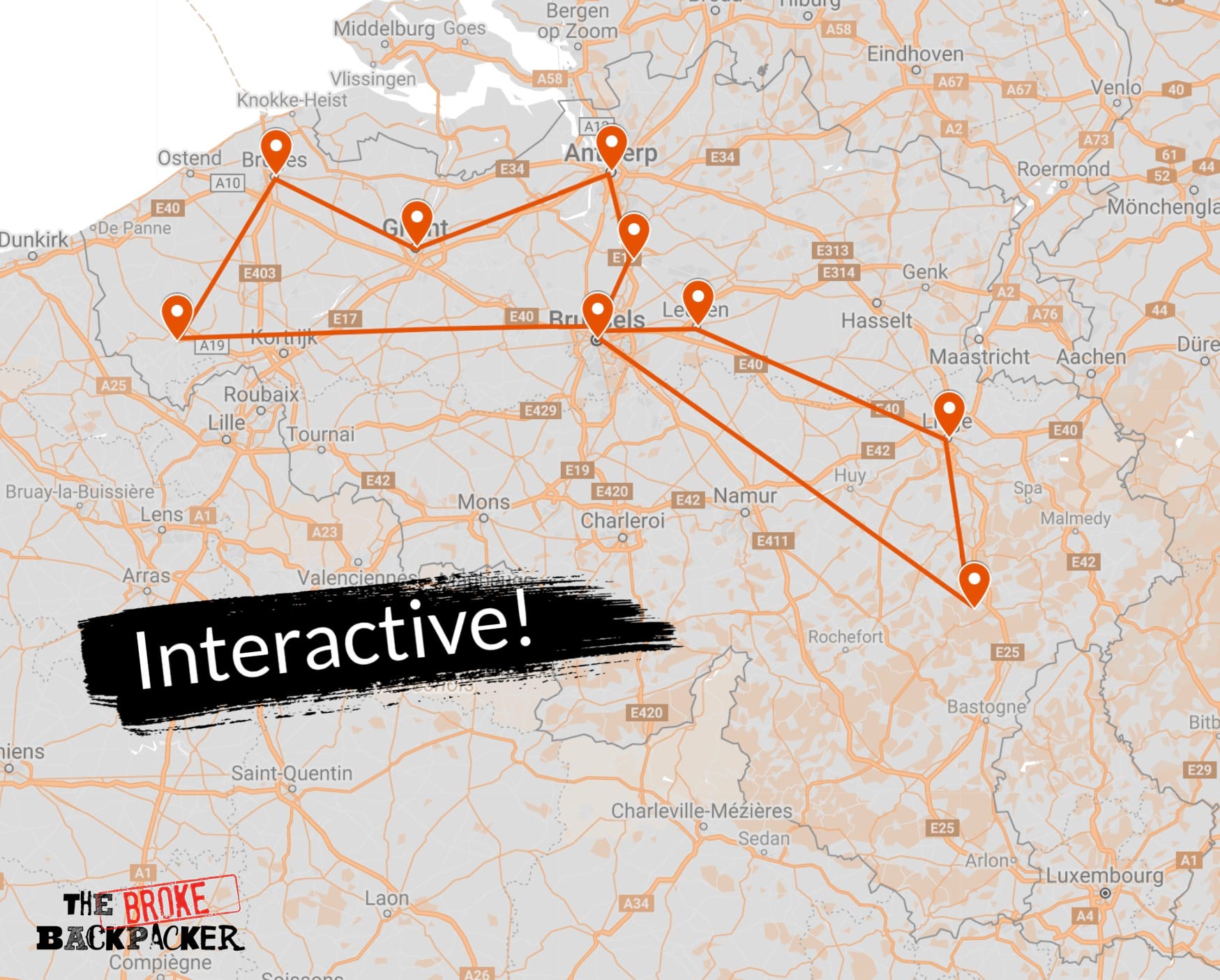
So you’ve decided to give backpacking Belgium a real go: good on ya! You won’t be disappointed.
Over the course of two weeks in Belgium, you’ll be able to see all of the previously mentioned destinations plus have the chance to really get off the beaten path. That means exploring the rugged Ardennes, experiencing the “other side” of Wallonia, and, crucially, going out of your way to finding the best breweries in Belgium. Like all the enjoyable parts of life, the best is often hard to find.
A sample itinerary might go like this: spend a few days in Brussels before heading northwest to Antwerp, Ghent, and Bruges, making sure to double back to Ypres, where you’ll get to visit Flanders Fields, before eventually ending up in Brussels again.
Once you’re back in Brussels head southeast this time to Liege, the gateway to the Wallonia region. Strikeout into the Ardennes, possibly going as far south to Arlon on the border of Luxembourg. When you’re ready, head back to Brussels, thus completing a figure-8 route, before heading back home or on to your next destination.
Places to Visit in Belgium
Backpacking brussels.
Brussels has a lukewarm reputation. Whilst it does feature some gorgeous sights and fun things to do, these are often overshadowed by the city’s sometimes brutalist architecture and grittiness. There are certainly places worth visiting, but one ought to plan their trip in Brussels beforehand.
Let’s start off in the historical center of Brussels, which is where you’ll find the city’s most notable attractions . The Grand Place, home to the Town Hall and King’s House, should be your starting point, and under no circumstances should it be skipped. This square is one of my favorites in all of Europe and features some truly impressive architecture. Also, the infamous Delirium Cafe is right up the street! They have the worlds largest collection of bottled beers as well as some seriously fine (strong) draft. Good morning, afternoon, and night.
On either side of the Grand Place, you’ll also find the Manneken Pis and Jennekin Pis statues. These are two of three famous statues in Brussels – the other being the Zinneke – that depict someone or something taking a piss (Belgians love pissing and generally do it several times each day). Seeing them all is a bit of a right of passage.
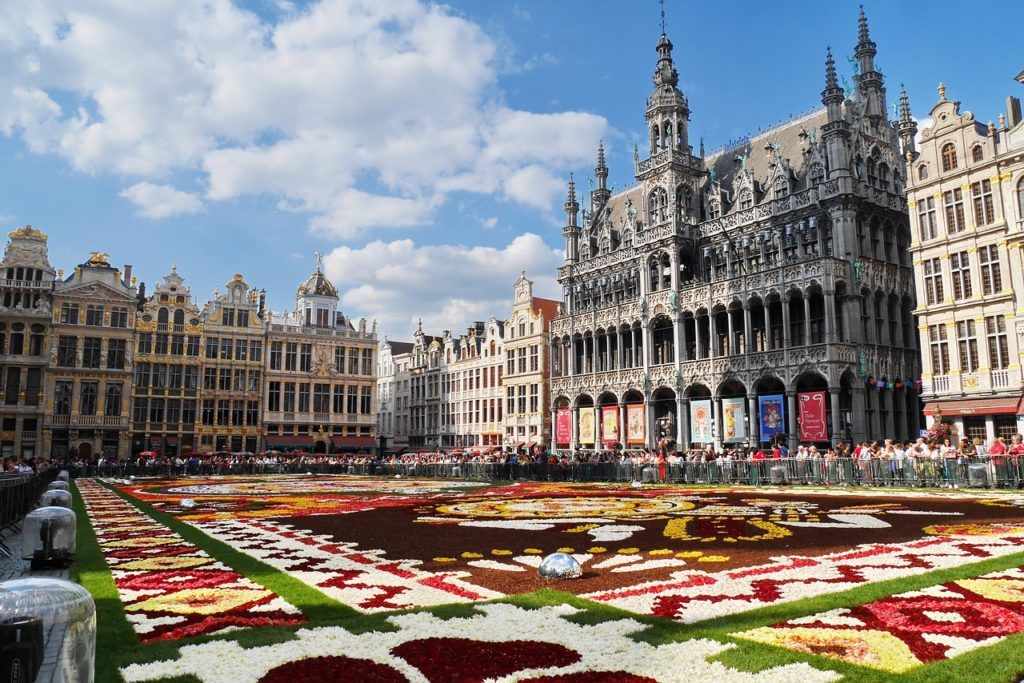
After wrapping up the center, head uphill towards the Royal Quarter and Jourdan, making sure to stop by St Michael and St Gudula Cathedral on the way. This area features lots of parks, museums, and regal buildings. Check out the Palace of Brussels, Notre-Dame des Victoires au Sablon, and Parc du Cinquantenaire.
If you’re visiting Brussels, you have to drink a sour beer, no question. Due to some very unique environmental conditions in and around Brussels, sour ales, particularly lambics and gueuzes , are very good here. Tart, bright, fruity, lip-smacking, there really is no other beer like a lambic.
The best place to grab a sour is Cantillon . This is arguably the most prolific sour brewery in the entire world and the beers are mind-blowingly good. The brewery itself is very rustic too, which only adds to the ambiance.

Backpacking Mechelen
Mechelen will be a stopover between Brussels and Antwerp. It’s definitely good for a day or two, but that’s about it.
The most noticeable sight in Mechelen is St. Rumbold’s Cathedral with its nearly 100-meter tall belltower. It’s an impressive cathedral and one of the highest in Belgium (it was originally supposed to be higher). In the nearby Grote Markt (main square), you’ll find a row of traditional, multicolored Flemish houses, which sit nicely in the foreground of the church.
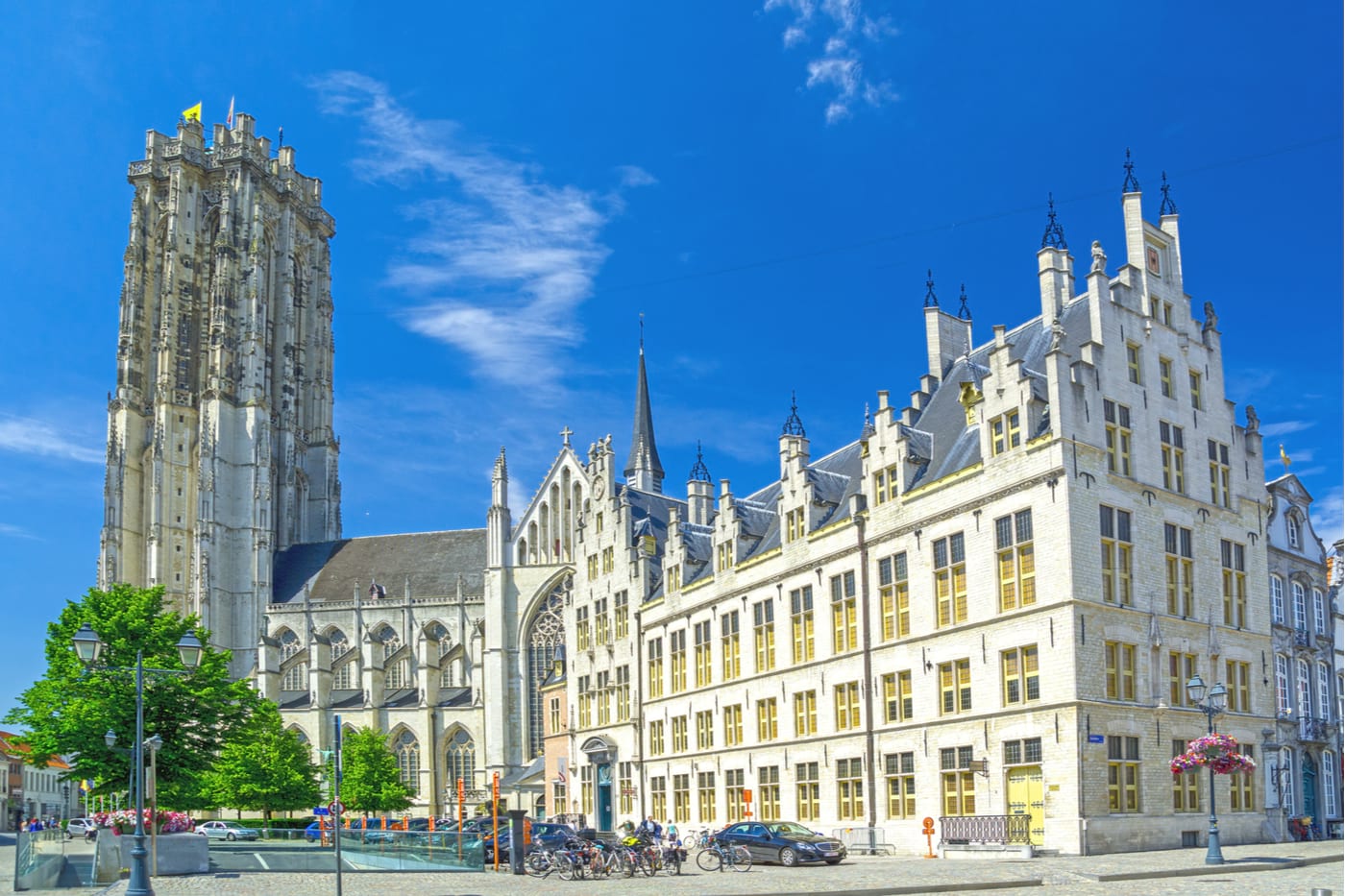
If you’re an art lover, there’s a nice hidden gem located at the St. John’s Church in Mechelen. Located near the main pulpit is a piece by Peter Paul Rubens, one of the greatest painters in European history. It’s also totally free to see!
Really though, the real reason to visit Mechelen is the Het Anker Brewery , maker of the luscious Gulden Carolus tripel and Lucifer dark. It is one of my favorite breweries in Belgium and is very active, organizing regular events, tastings, and brewery tours. There’s even a hotel attached to the brewery that you can stay at! Stay for a night, drink as much beer as you like, and dream of heavenly suds.
Backpacking Antwerp
Antwerp is the cooler version of Brussels: easier, more laidback, more blinged out in dem’ diamonds; yes, Antwerp is like the Drake of Belgium. Many travelers mistakenly skip Antwerp in favor of larger and more well-known Brussels, and many regret doing this later on.
Antwerp is often considered a shopping destination first. It’s full of streets and malls offering everything from designer clothes to hipster ware to diamonds, for which Antwerp is famous. The Meir is the main shopping street in Antwerp and is worth visiting if not for the stores than for the beautiful facades and architecture.
I don’t know about you though, but I didn’t go backpacking in Belgium just to shop; I came to have a good time!
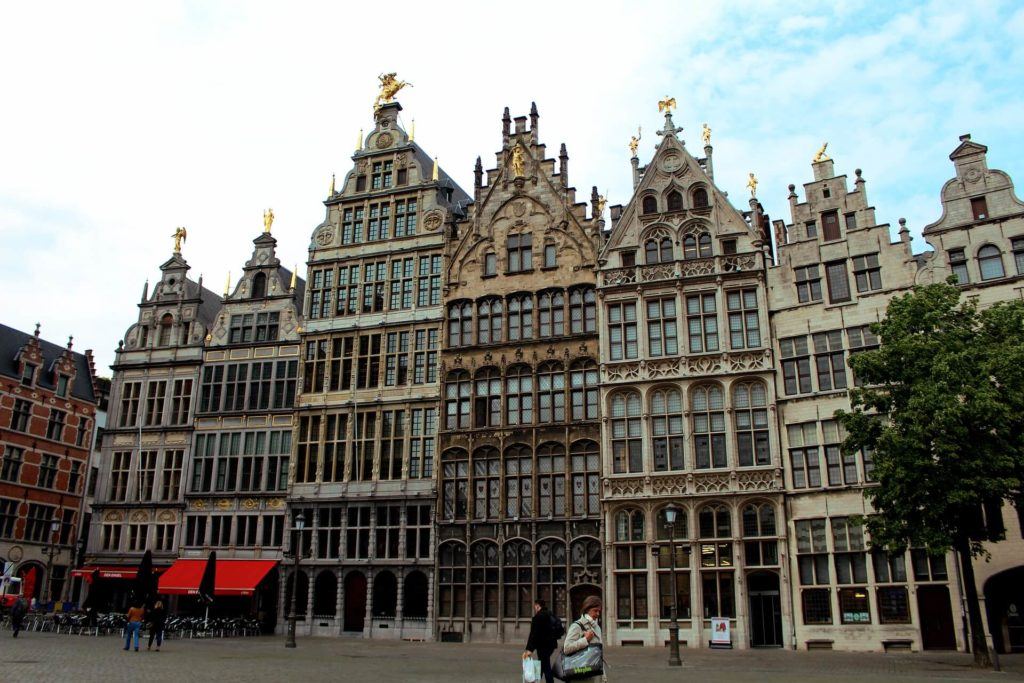
Luckily, Antwerp has a solid nightlife. In fact, it has one of the highest concentrations of pubs per capita in the world and most of them don’t have a closing time! Due to its compact size, you can easily pub crawl around. Enlist a crew at whichever hostel you’re staying at in Antwerp and hit the town!
Definitely drop by the De Koninck Brewery. Brewery tours are regularly organized and the taproom is really rad. De Koninck flagship beer is also quite good: slightly sweet, a bit bitter, with some allspice notes.
Shopping and drinking aside, there is plenty to see around Antwerp. The main square, though not as epic as Brussels’ Grand Place is still very nice. The museums in town are particularly good, especially the Rubens House and Museum Plantin-Moretus (the latter if you really like printing and books). Don’t miss out on the Cathedral of Our Lady either, which is one of the most stunning churches in all of Belgium.
Backpacking Ghent
Ghent is my favorite place to visit in Belgium! It’s a charming little town with immaculate medieval architecture and a really youthful energy. One can easily see the majority of Ghent’s top sites in the matter of a day but I recommend staying for a couple at least!
The best way to experience Ghent is by foot as the historical center, where most of the city’s main attractions are located, is quite small. Starting from St. Michael’s Bridge – adjacent to Saint Michael’s Church – head to Saint Nicholas’ Church, followed by Saint Bravos’, before looping back north to the Gravensteen. The Gravensteen is one of the most impressive castles in Belgium, so if you’re into castles definitely take a tour of it. Walking along the canals and through the hidden alleys at night is also quite magical.
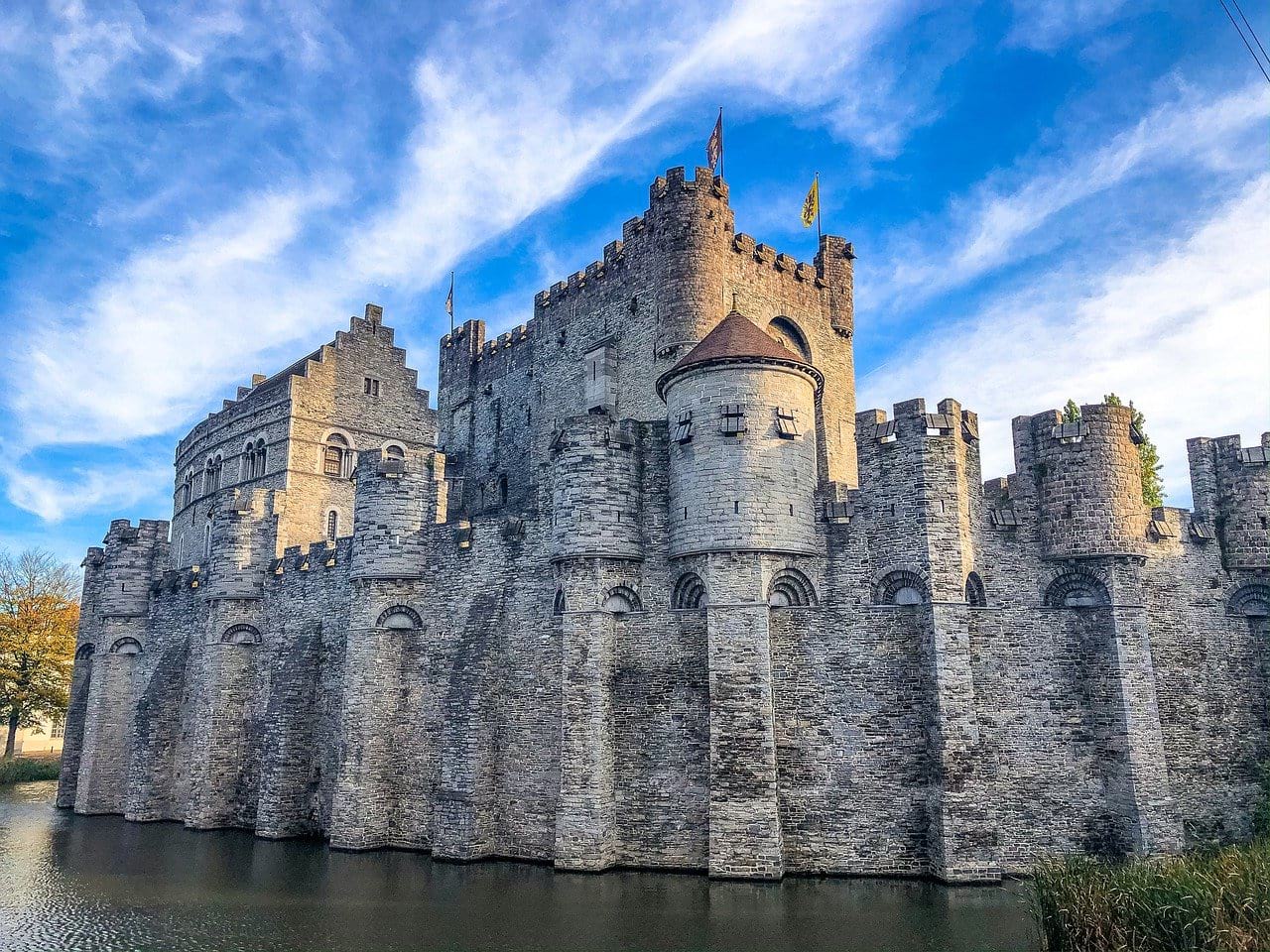
Ghent is a student city, which means from September-May it’s quite active. There are lots of bars and clubs in town and the locals are all very friendly.
If you’re looking for a good hostel in Ghent , I highly recommend Uppelink. The location is phenomenal – it’s literally overlooking the Saint Michael’s Bridge – and the staff are awesome. They organize regular events like beer tasting and overall the vibe there is really exciting.
If you’re in the mood to visit a brewery, Van Steenberge, makers of the diabolically strong Gulden Draak and Piraat, is located just outside of Ghent. If you just want to stay in town, drop by Ghent Gruut brewery, which makes gruut – a precursor to modern-day beers that is brewed with bog myrtle rather than hops.
Backpacking Bruges
Bruges seems to be everyone’s favorite place in Belgium. Lots of people are attracted here because of its romantic ambiance, medieval architecture, and slow pace. Colin Farrell famously karate chopped a dwarf here as well. Kidding of course; that’s just a scene from the film In Bruges, made in Bruges as well. (But who’s to say Colin Farrell hasn’t sparred against little people before…)
Anyway, Bruges is popular. Some might also call it “touristy” but to be honest, by many standards, it’s not. This isn’t Venice, where the streets can be jammed with tourists and despite being popular, Bruges is still able to maintain a sense of calm.
Like Venice, Bruges is full of canals. You can join a local tour of the canals by boat if you’d like but rather, walking around the canals and over the little bridges is just as lovely.
Bruges’ most notable attractions are all located relatively close to one another. The towering Belfry, Burg (Town Hall), and main square are all within short walking distance of one another. If you happen to be visiting Bruges in February, there’s an awesome beer festival held in the Town Hall as well.
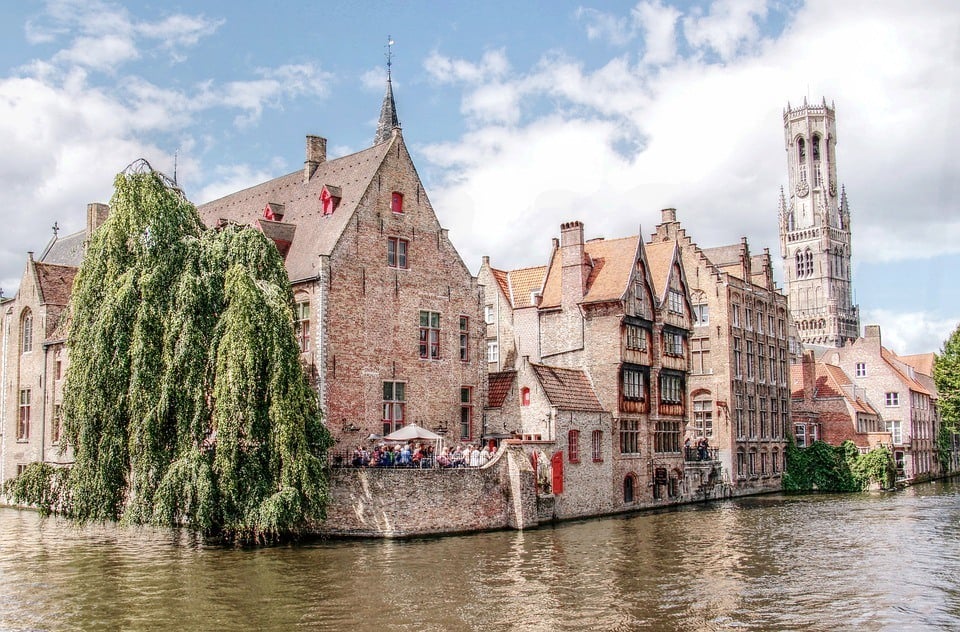
A little further south, you’ll find the impressive Church of Our Lady Bruges.
Honestly, the best way to enjoy Bruges is by getting lost. Wander around the alleys, follow the canals, and look in the little corners. I have a particularly strong memory of getting lost in Bruges after drinking quite a lot of strong beers and, whilst I probably drank one too many, the town didn’t lose any of its charm.
The most well-known brewery in Bruges is without question De Halve Maan. Brewery tours are available although visiting the bar-restaurant and grabbing some food along with a Straffe Hendrick would still be more than enough.
Backpacking Ypres
Ypres is a bit off the usual tourist trail and frankly doesn’t offer a ton of activities. It will mostly appeal to those who have a serious interest in World War I.
Due to its strategic position, Ypres was under constant attack during WWI and was bombarded by the Germans for most of the war. Suffice to say, a great portion of the city was destroyed.
Modern Ypres is mostly post-war reconstructions. The Cloth Hall – a beautiful building that barely survived – now hosts the Flanders Field Museum. Dedicated to the study and history of World War I, this museum is very powerful, thanks to the subject matter and the interactive way in which it is presented.
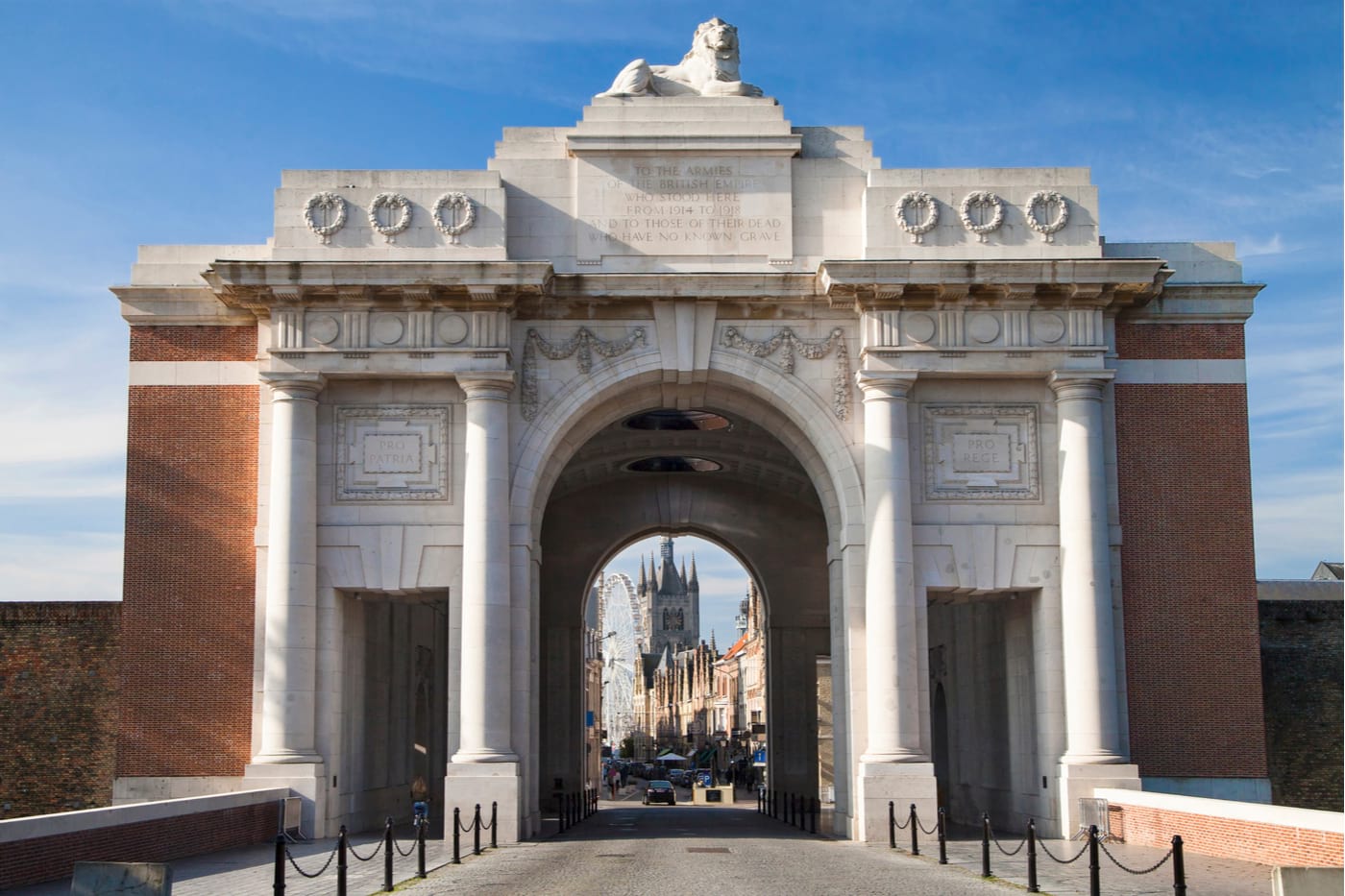
If, after being inspired by the poem “Flanders Field” , you were expecting to visit a literal field, then you’ll probably be disappointed. The term “Flanders Field” is a generalization and there is no one place to go, at least that I know of. There’s a museum at Passchendaele – one of the largest battles in the war – and dozens of memorials around as well.
Moving on to more lighthearted things, Ypres also happens to be located very close to some notable breweries, specifically the Westvleteren abbey. This hallowed Trappist brewery produces what many believe to be the absolute best beer in the world, the simply named Westvleteren 12.
Westvleteren may also be the hardest beer in the world to attain. The monks make very small batches and distribute them very sparingly. Most people walk up to the front door with a milk carton hoping to score a few bottles and most come back empty-handed. Unfortunately, the abbey does not offer brewery tours either.
Note that if you want to stay in a hostel, you might have to stay in neighboring Kortrijk.
Backpacking Leuven
Leuven is another Belgian student town, in the same vein as Ghent. It’s a small town and not very far away from Brussels. It could easily be visited either as a day trip or for a few days enroute to Wallonia.
The center of Leuven is gorgeous. The Town Hall is ridiculously ornate and could easily compete with Brussels’ Grand Place. Across the square from the Town Hall, you’ll see St. Peter’s Church.
Leuven is first-and-foremost and student town though. That means there is real dynamic energy to the place, not to mention a bar on every corner. The main university, KU Leuven, is actually the oldest catholic university in the world, although they accept students of every faith.
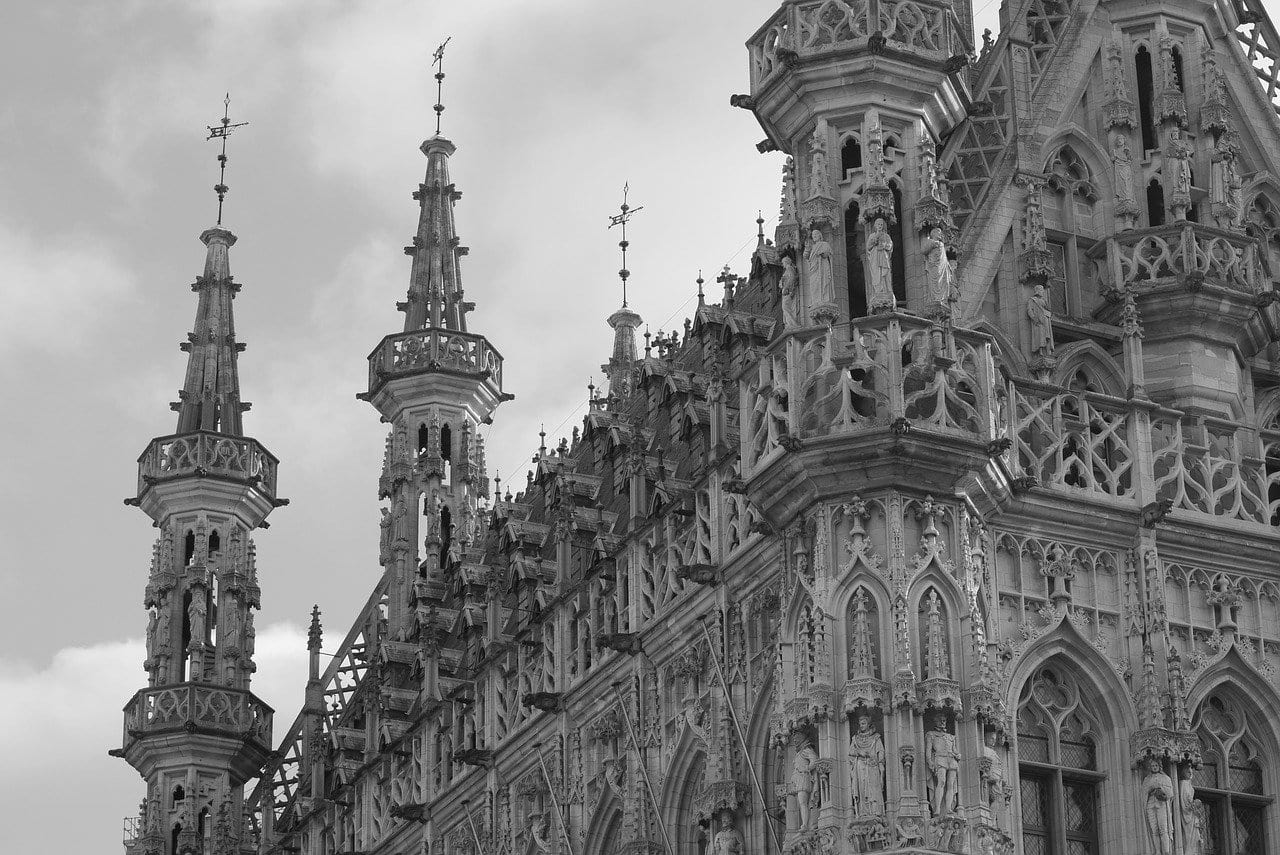
KU Leuven’s library is definitely worth visiting. It is a beautiful building, destroyed not once but twice, is probably the most elegant student library you’ll ever see.
There are also a number of castles right outside Leuven as well. Castle Van Horst and the Arenberg are both about a 15-30 minute bus ride away. Though they’re not the prettiest castles in Belgium, they’re still worth seeing if you have time.
For those who wish to continue their beer tour of Belgium, Leuven famously hosts the headquarters of InBev aka “The Evil Empire” and one of their flagship breweries: Stella Artois. You can visit the brewery on Saturdays where they’ll play the Imperial March theme music from Star Wars as you tour the facilities…probably not in fact. (I can’t talk too much shit about InBev because, let’s be honest, they own everything. I can’t live without my Tripel Karmeliet, guys.)
Backpacking Wallonia and Ardennes
Wallonia – the French-speaking part of Belgium – is rugged and green. This is where you come to escape into the wilds and discover the natural beauty of Belgium.
The cultural capital and gateway to Wallonia is Liege . The city is quite eclectic, featuring lots of different architectural styles and languages. It’s quite close to the border and makes for a natural jumping-off point for those backpacking in either Germany or The Netherlands.
The Ardennes is the real draw of Wallonia. This region is heavily forested and features some of the wildest landscapes in Northern Europe. It is a wonderful place for those hiking or bikepacking around Belgium. The Semois Valley is particularly beautiful.
Though seemingly undeveloped, there is a very good network of trails and cycling lanes crisscrossing the Ardennes. Be on the lookout for local homestays – many are a part of the Stichting Vrienden op de Fiets organization (more on that in ‘Accommodation’ section of this guide.
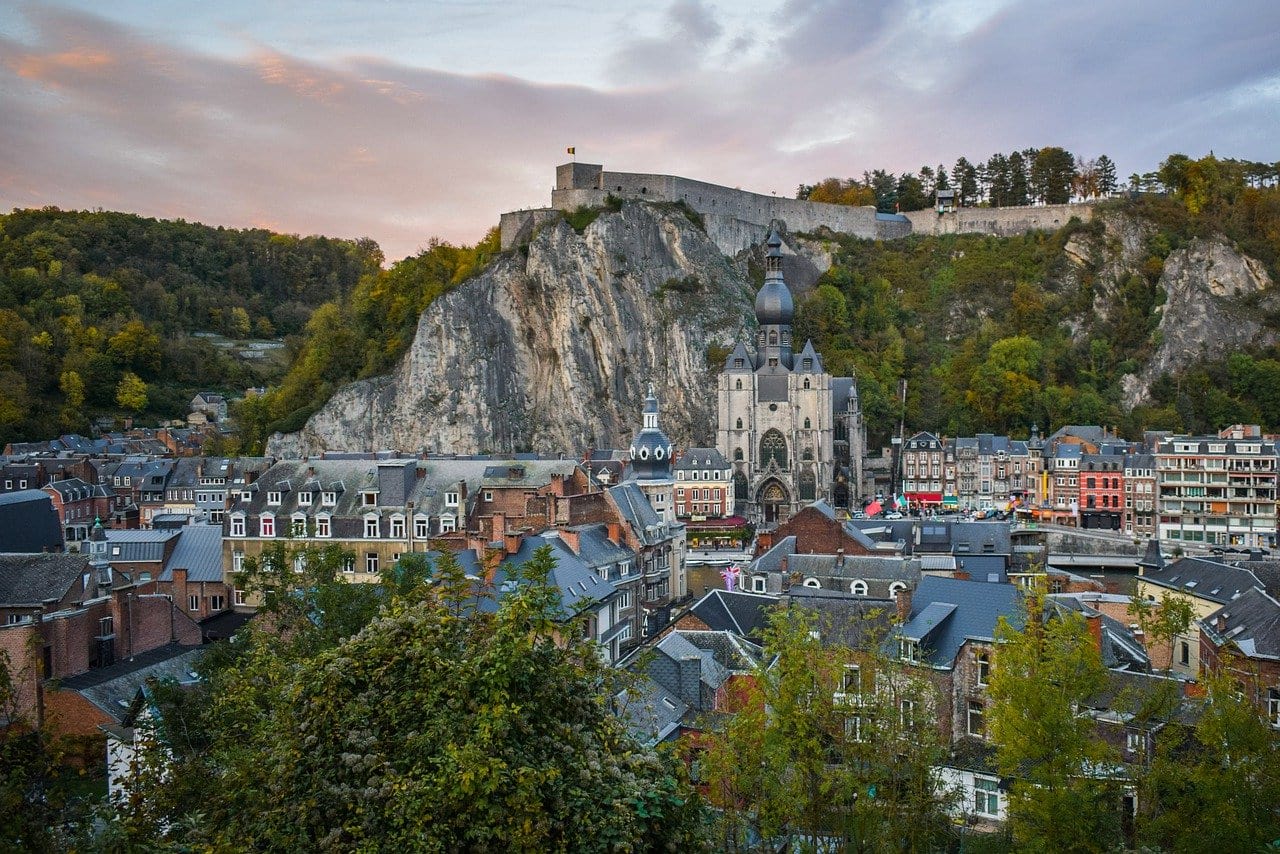
Rock climbers should head directly for Dinant , which looks almost like something out of Norway albeit much less epic. The limestone crags around the town are suitable for all climbing levels. The views from the Citadel of Dinant are also quite good.
If you happen to be around Florenville (on the border of France), definitely pay a visit to the Orval Trappist abbey. It is one of a few abbeys that offers tours of the monastic premises, which includes the gardens, ruins, and a museum.
To make a tour of Orval, you will need to book a few weeks in advance. You can do so here . Note that the brewery is not always open to the public so be sure to inquire ahead of time as well. If you don’t get to see the brewery, there is still plenty of beer (and cheese!) on site.

We’ve tested countless backpacks over the years, but there’s one that has always been the best and remains the best buy for adventurers: the broke backpacker-approved Osprey Aether and Ariel series.
Want more deetz on why these packs are so damn perfect? Then read our comprehensive review for the inside scoop!
Top Things to Do in Belgium
1. go on a brewery tour .
When you visit Belgium, you drink beer. This is the national beverage and occupies an important place in the local culture. If you want to learn more about how the beer is made, and how it connects to Belgian history, then go on a brewery tour.
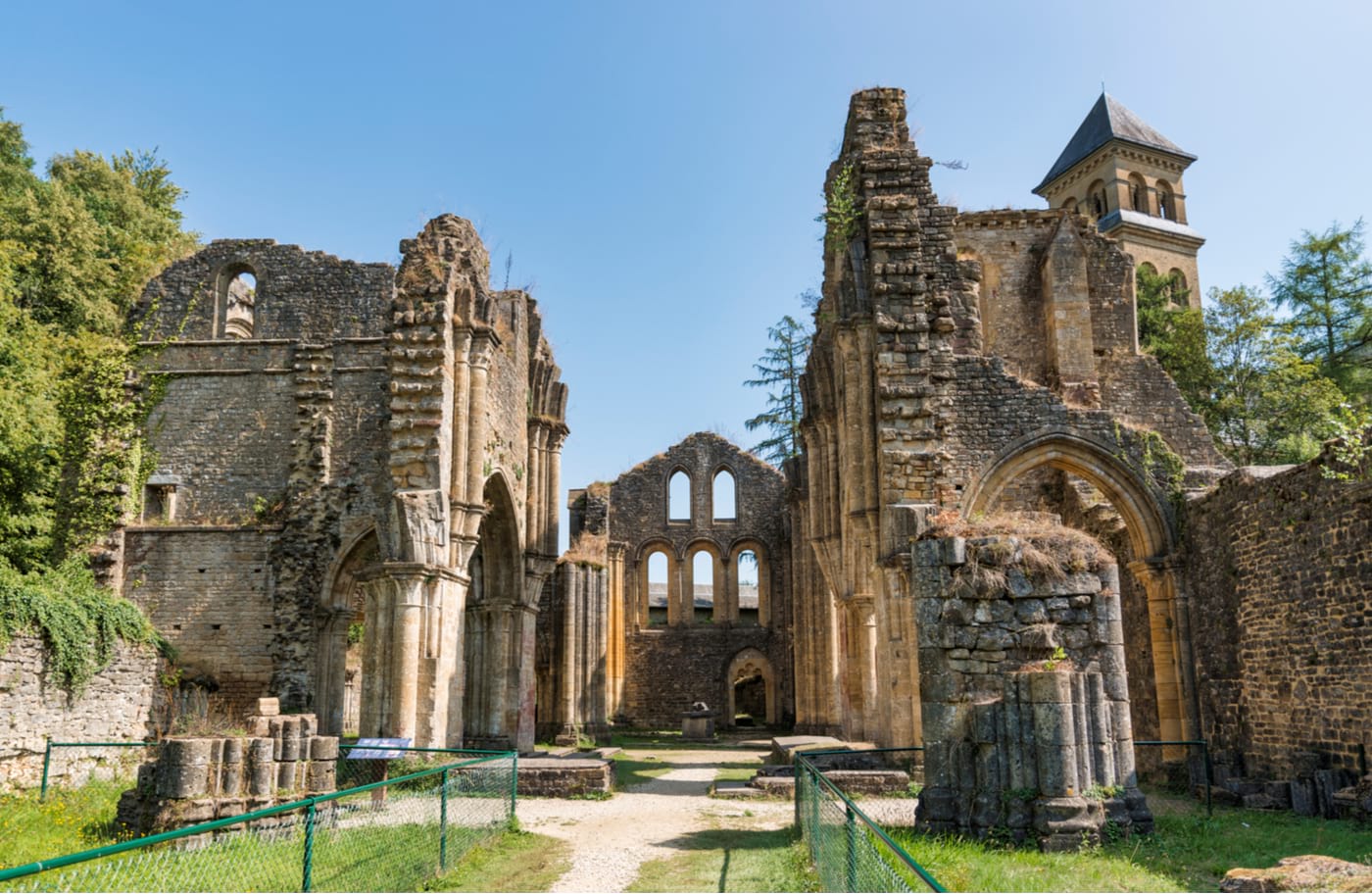
2. Discover Ghent and Leuven
Brussels, Bruges, and Antwerp get the lion’s share of the attention from those backpacking through Belgium. The smaller university towns of Leuven and Ghent, one of Europe’s hidden gems , are just as interesting though. Set aside a serious chunk of your Belgian itinerary to visit one of these; you may find yourself lingering in one for longer than expected.
3. Visit Flanders Field Museum
Belgium played a huge role in the First World War, not necessarily as a combatant but as a victim. The Western Front ran right through the country and absolutely ravaged it. Today, there are many memorials and museums chronicling the conflict, none more humbling than the Flanders Field Museum in Ypres.
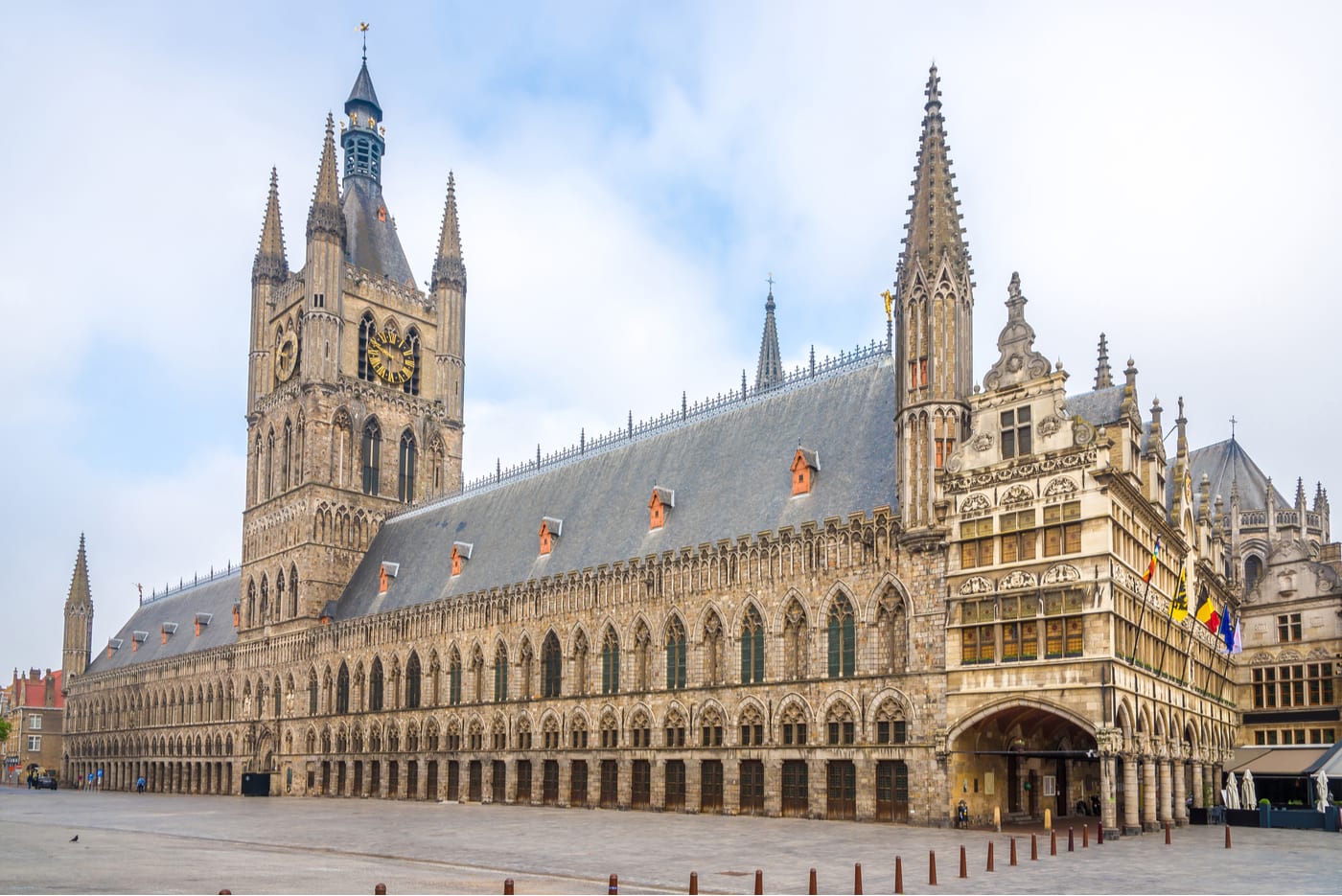
4. Spend a night in the Delirium Cafe
There is plenty to do in Brussels , yet one thing stands out from everything else: the Delirium Cafe. This bar, nay mecca , offers the largest selection of beers in the entire world! In fact, it’s composed of eight bars in total making it more like a village than a single establishment. Sample as many beers as you want and chase pink elephants all night long here.
5. Choose Antwerp
Don’t skip Antwerp! It is arguably more fun and exciting than Brussels! The shops are elegant, the people are easy, and the bars never close. Base yourself here rather than Brussels when visiting Belgium.
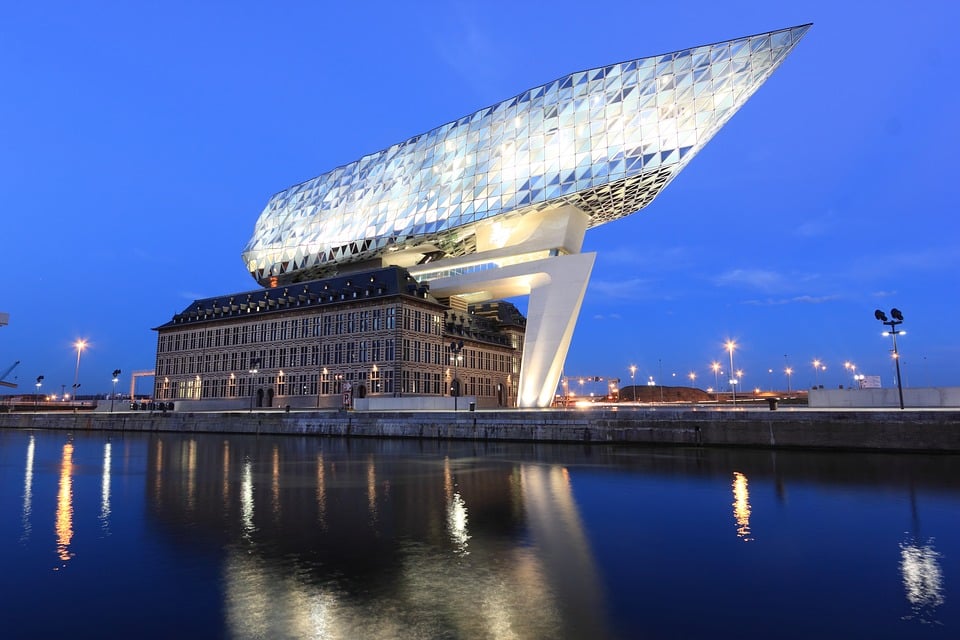
6. Attend a festival
Belgium loves music festivals. During the summer, the whole country becomes one big party! One could plan an entire backpacking trip in Belgian just around a giant festival. Choose your favorite, buy the tickets, and get your tents and fanny packs ready; it’s going to be a wild one. By the way, Belgium also has an awesome Acid Techno scene so no matter what time of year you visit, keep an eye out for gigs by Amelie Lens, Charlotte De Witte or Milo Spyker.
7. Explore the Ardennes
The Ardennes is Belgium’s rough and rugged interior. The whole region is relatively raw compared to the north, which means there are plenty of adventurous opportunities. Discover a hidden brewery, go biking in the woods, climb around the crags, whatever you’re adrenaline-pumping heart desires.
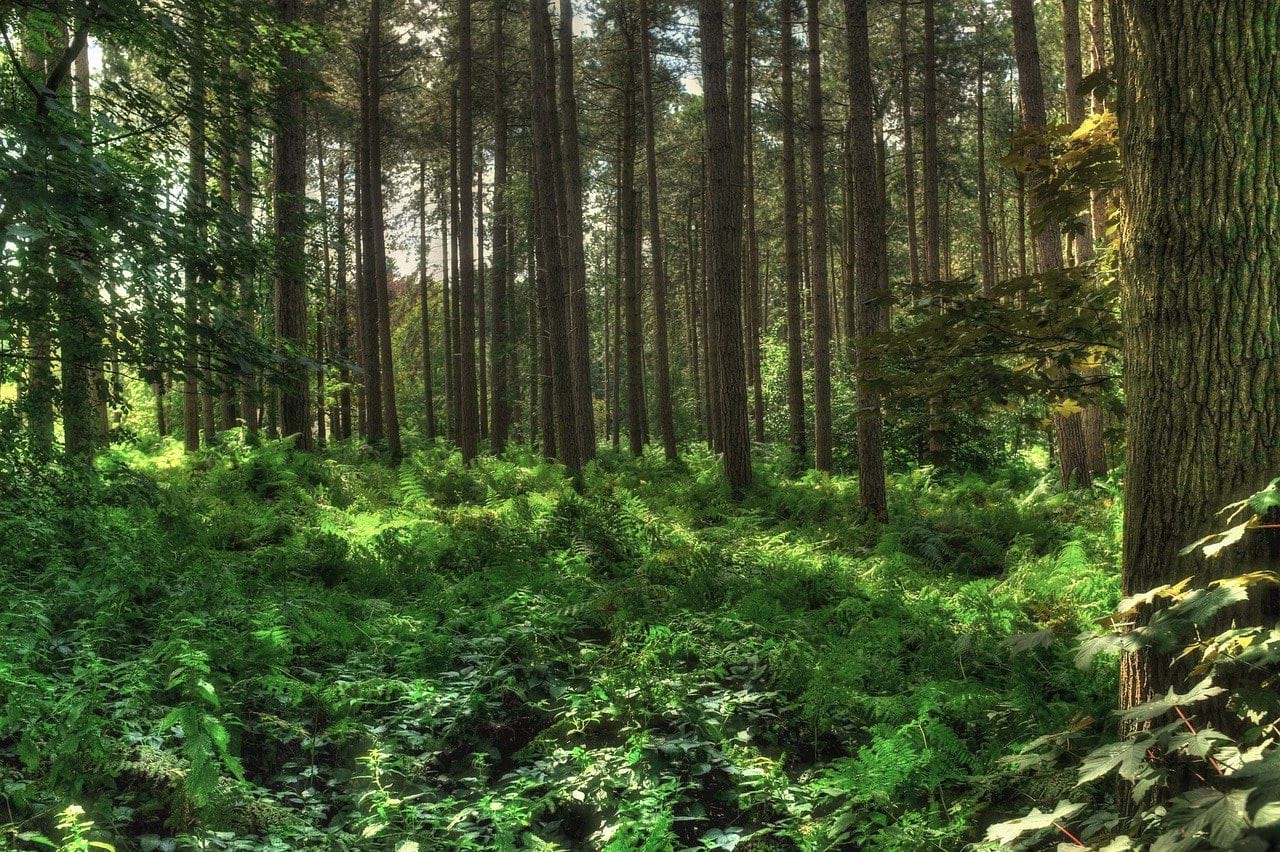
8. Forgetting about calories
Belgian food will not be kind to your waistline. Everything here is either smothered in cream, deep-fried or showered with sugar. But who cares! It’s delicious anyway! Forget about the calories for a week or two while traveling around Belgium. You’ll be very happy you did. Plus you can always do sit-ups when you return home.

Wanna know how to pack like a pro? Well for a start you need the right gear….
These are packing cubes for the globetrotters and compression sacks for the real adventurers – these babies are a traveller’s best kept secret. They organise yo’ packing and minimise volume too so you can pack MORE.
Or, y’know… you can stick to just chucking it all in your backpack…
Backpacker Accommodation in Belgium
Staying in hostels really is the most convenient and affordable choice for backpackers in Belgium. They’re usually the best deal in town and can be a lot of fun, especially if they organize pub crawls or beer tasting nights! I signed up for a beer tasting while staying in the Uppelink Hostel in Ghent and was really impressed by the selection and the knowledge of the organiser.
Although broke backpackers might be tempted to book the cheapest hostel possible, they should double-check reviews. There are some really shady hostels out there – not just in Belgium but everywhere – and staying in one can quickly put the brakes on a good time. The Louise Hostel in Brussels has to be one of the most rundown places I’ve ever seen.
Aside from hostels, there are plenty of other places to stay in Belgium for backpackers. Airbnbs are ubiquitous and are great for those who want a bit more privacy. Couchsurfing is of course the best way to travel on a budget – you just have to nail your pitch to the host.
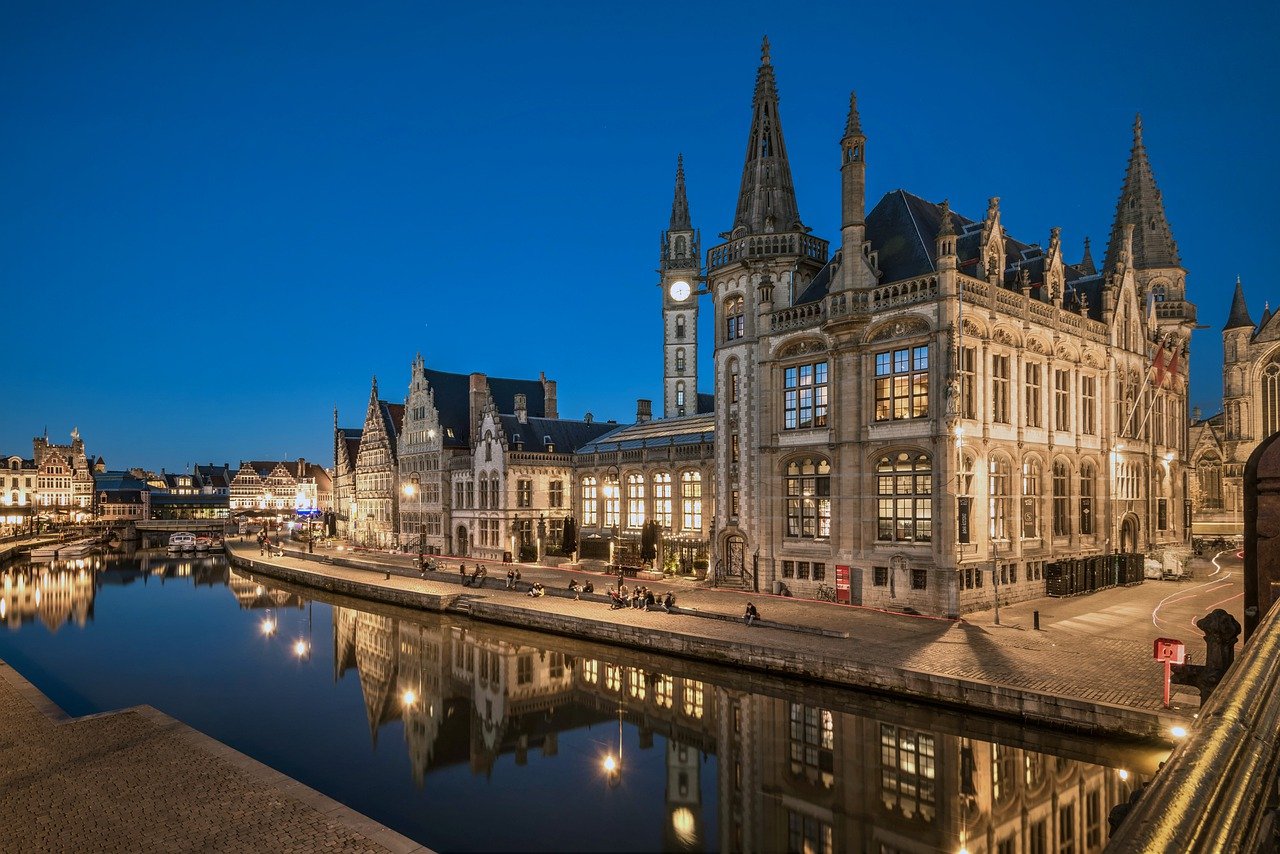
Those bikepacking in Belgium might consider taking advantage of the local Stichting Vrienden op de Fiets network as well. The Stichting Vrienden op de Fiets or “Dutch Foundation for Cycle Friends” is primarily intended for those who like to go on multi-day excursions and need a cheap place to crash. There are thousands of hosts and at around 20 euro per night, prices can be lower than hostels.
To use the network, you will need to register as a “friend” for a reasonable 8 euro per year. Find out how to do this and more by visiting the official Stichting Vrienden op de Fiets site here .
The Best Places to Stay in Belgium
Check out these awesome hostels in Belgium whilst planning your trip!
Belgium Backpacking Costs
The costs of travel in Belgium are about average compared to the rest of Europe. Larger cities, like Antwerp and Brussels, will be more expensive to visit but with the right habits, most backpacking around Belgium can get by on a reasonable budget.
A typical daily budget for a backpacker in Belgium should be around $45-$70 per day. This will get them a dorm bed, some grocery money, bus tickets, plus some extra spending cash.
Here are some expenses to consider:
- Food – Eating out may be the most enjoyable thing to do in Belgium but can also add up very quickly. A good restaurant meal will cost at least 15 euro, probably more. To save cash, take advantage of free hostel breakfasts, buy groceries, and cook your own meals. Definitely go to a restaurant but pick your meals wisely. DON’T EAT IN THE CITY CENTERS – they’re overpriced and touristy.
- Accommodation – Expect to pay at least 20 euros for a hostel bed. Airbnbs will be more like 40 euro minimum. As always, couchsurfing is the cheapest way to sleep. Don’t forget to look into Stichting Vrienden op de Fiets if you’re bikepacking.
- Transport – Really depends on how much you’ll be traveling. In the cities, you should try to bike or walk around as much as possible. The former can be rented for as little as a euro or two per day; the latter is free. Traveling cross-country by train (Liege to Courtrai or Antwerp to Arlon) should cost more than 25 euro. When available, buses will be cheaper
- Nightlife – Beer is cheap, especially when you buy them in the shop (2-3 euro each). Grab a few different bottles, have a little tasting with friends, and then to the bars when you’re properly lubricated. Note that Belgium beers are served short, mostly due to higher alcohol levels – be sensible or pay the price.
A Daily Budget in Belgium
Travel tips – belgium on a budget.
- Try couchsurfing – How’s a free bed sound? Finding a place crash isn’t always easy but when you do score one, it’s a sweet deal. Hosts are sometimes really friendly and can show you a different side of a country as well.
- Use a refillable water bottle – Is there ever a reason to buy a plastic water bottle in Belgium? Belgian tap water is perfectly fine to drink. So bring a good travel water bottle with you and go nuts.
- Try camping – A good backpacking tent is a traveler’s best buddy. Sturdy in strong winds, warm on cold nights, always ready to go at a moment’s notice. Take advantage of the many campgrounds in Belgium and save some money in the process.
- Bike as much as possible – With the exception of Wallonia, most of Belgium is flat. Rent a bike (preferably long term) and use it as much as possible.
- Find deals on train tickets – especially if you’re less than 26 years old.
- Cook your own food – It’s budget backpacking 101. Cooking at home will always be cheaper than eating out. If you are without a kitchen, invest in a portable camping stove .
- Find cheap flights – A wise man once said: “Only suckers pay full price.” Use apps like Skyscanner to find cheap plane tickets.
- Volunteer – Belgium is full of interesting volunteer opportunities. Dedicate a few hours per day to working with a local host, and you’ll not only receive room and board (usually) but the chance to see a more authentic side of the country.
Why Should You Travel to Belgium with a Water Bottle?
Plastic washes up on even the most pristine beaches… so do your part and keep the Big Blue beautiful!
You aren’t going to save the world overnight, but you might as well be part of the solution and not the problem. When you travel to some of the world’s most remote places, you come to realise the full extent of the plastic problem. And I hope you become more inspired to continue being a responsible traveller.
STOP USING SINGLE-USE PLASTIC! If you’d like some more tips on how to save the world .
Plus, now you won’t be buying overpriced bottles of water from the supermarkets either! Travel with a filtered water bottle instead and never waste a cent nor a turtle’s life again.

Drink water from ANYWHERE. The Grayl Geopress is the worlds leading filtered water bottle protecting you from all manner of waterborne nasties.
Single-use plastic bottles are a MASSIVE threat to marine life. Be a part of the solution and travel with a filter water bottle. Save money and the environment!
We’ve tested the Geopress rigorously from the icy heights of Pakistan to the tropical jungles of Bali, and can confirm: it’s the best water bottle you’ll ever buy!
Best Time to Travel to Belgium
When to travel to Belgium really depends on what you’re looking for. If you’re looking to spend a lot of time outdoors, either biking, hiking, or going to festivals, summer is great. If you like spending your days bundled up in a bar with a good beer, winter isn’t so bad actually. If you’re looking for a beautiful beach with plenty of sunshine, stop reading this article now and look elsewhere.
Summer is without question the most popular time to visit Belgium. This is festival season, which in Belgium is particularly good (more on that later), and when the weather is best. Granted, Belgium is never really “hot,” even in summer. Temperatures rarely rise above 25 degrees Celsius and rain is always possible. You will still need a jacket when visiting Belgium during the summer.
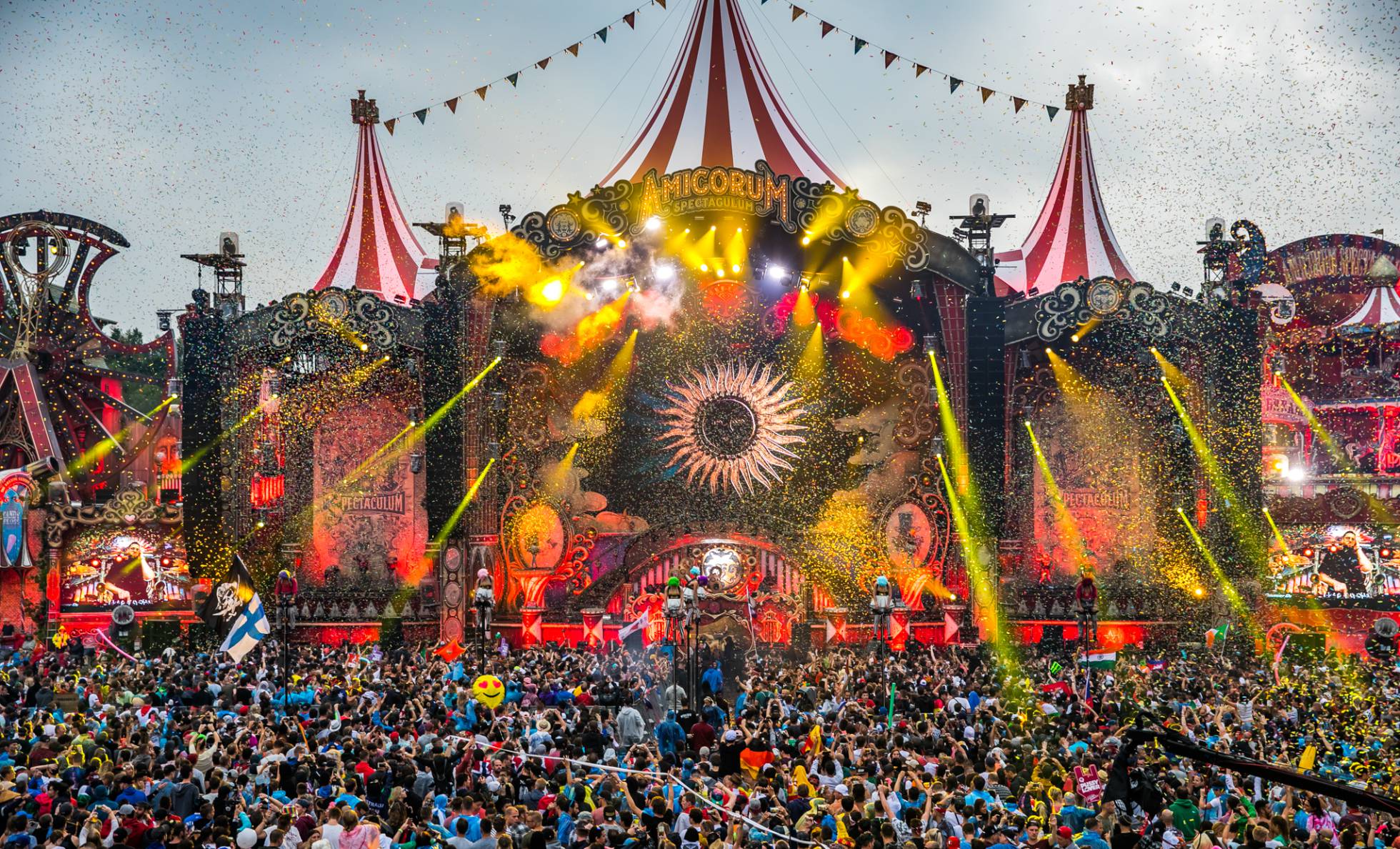
Spring and Autumn are great times to go backpacking in Belgium. Prices will be more reasonable, crowds will be thinner, and the weather will still be “comfortable.” Student towns, like Ghent and Leuven, will also be active during this time, which means there will be plenty to do at night.
Winter in Belgium is justifiably bad and the locals are quite vocal about this. The rain is seemingly constant, temperatures are in the single digits all day, and the sun never shines. But there are some fun events during this time, like Carnival, and the winters aren’t so bad if you don’t mind the melancholy or cold. Honestly, there’s nothing quite like escaping the cold and dipping into a cafe for a steaming pot of moule frites or reading a book with a Belgian beer in hand.
Festivals in Belgium
Belgians LOVE a good festival, maybe even more so than their Dutch neighbors. Some of the world’s greatest parties are held in Belgium, the most famous of which is probably the legendary Tomorrowland. If you like to go to multi-day music festivals and get down and dirty, you’d love Belgium in the summer.
That being said, Belgium isn’t just about music festivals. There are quite a few cultural events spread throughout the year as well. Here are some of the best festivals and celebrations around Belgian:
- Bruges Beer Festival (January/February) – One of the top beer festivals in Belgium. I stumbled into this event by accident when I was backpacking in Belgium and was very happy I went.
- Carnival (February/March) – Each town does it differently. Binche might host the most well-known one. Eupen, Malmédy, Aalst, and Stavelot are also notable.
- Anima (March) – Belgian’s LOVE comics (you know Tin Tin right?) This one is dedicated solely to animation, both new and old. Held in Brussels for ten days.
- Rock Werchter (July) – One of the oldest and most respected rock festivals in Europe.
- Tomorrowland (July) – The granddaddy of all EDM music festivals. I know people who would give a kidney for a ticket to Tomorrowland; they’d probably lose the other to drugs and alcohol after attending this too.
- Ommegang (July) – A giant 2-day medieval parade through Brussels.
- Gentse Feesten (July) – Described as “10 days of non-stop partying and music.” Nuff said.
- Dinant International Bathtub Regatta (August) – Teams compete to see who can make the most flamboyant watercraft, using only a bathtub and some decorations. Motors are not allowed and all propulsion must be human or natural. May the best bathtub win.
What to Pack for Belgium
On every adventure, there are six things I never go traveling without:

Travel Security Belt
This is a regular looking belt with a concealed pocket on the inside – you can hide up to twenty notes inside and wear it through airport scanners without it setting them off.

Microfiber Towel
Hostel towels are scummy and take forever to dry. Microfibre towels dry quickly, are compact, lightweight, and can be used as a blanket or yoga mat if need be.

Petzl Actik Core Headlamp
A decent head torch could save your life. If you want to explore caves, unlit temples, or simply find your way to the bathroom during a blackout, a headtorch is a must.

‘Monopoly Deal’
Forget about Poker! Monopoly Deal is the single best travel card game that we have ever played. Works with 2-5 players and guarantees happy days.
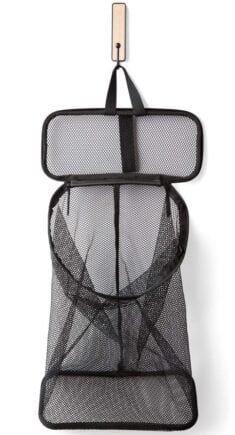
Hanging Laundry Bag
Trust us, this is an absolute game changer. Super compact, a hanging mesh laundry bag stops your dirty clothes from stinking, you don’t know how much you need one of these… so just get it, thank us later.
Staying Safe in Belgium
For the most part, Belgium is a very safe country to visit. Violent crime is rare and the locals are for the most part respectful of foreigners and each other.
The only place you ought to be concerned about is Brussels. Brussels is the dodgiest place in the country and crime is definitely more common here. Tourists being mugged here is not unheard of.
Storytime!
A good friend of mine was sitting on a park bench in Brussels with his backpack minding his own business. All of a sudden, a young man comes out of nowhere and tries to steal the bag. Luckily, my friend has the habit of keeping one leg through the backpack strap, so the thief was tripped up. A struggle ensued, punches were thrown, my friend split his knuckle open, the thief ran away with a chipped tooth, and the backpack was saved.
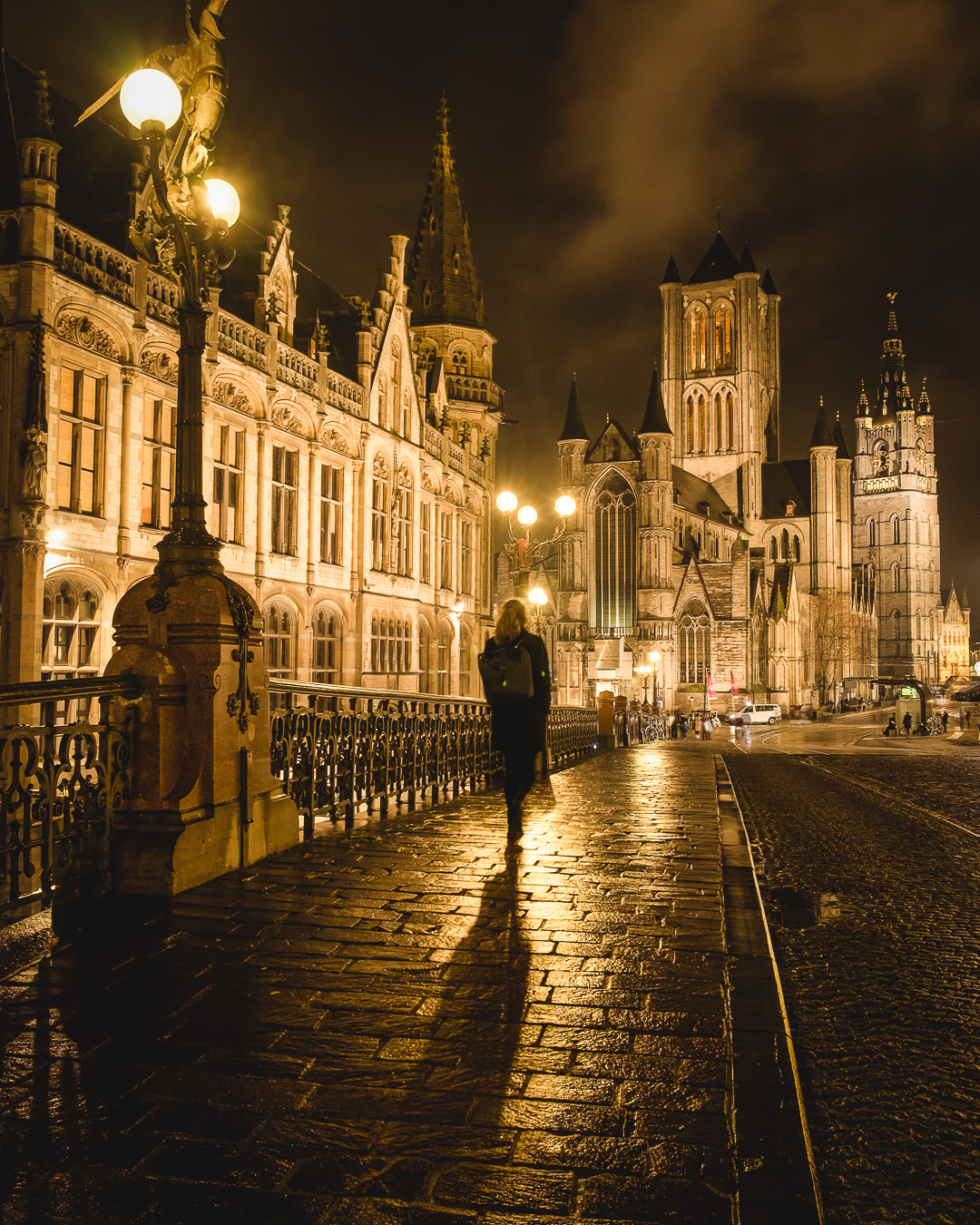
Whilst this is an isolated event (crime is still relatively low in Brussels by many international standards) there is something to be gained from the story: always be aware of your shit.
Robberies can happen anytime, usually when you aren’t expecting them. It pays to keep your head on a swivel and to be conscious of your surroundings, even if the area seems alright. Travelers should always consider the usual safety tips and use common sense.
Don’t walk around like an idiot at night, be mindful of your pockets and bags in crowded places like public transport, and don’t leave anything unattended. Yes, Brussels is still safe for travelers but it doesn’t hurt to be a little extra careful around this city.
Sex, Drugs, and Rock ‘n’ Roll in Belgium
Belgium has a pretty lax attitude about partying. People like to drink, roam the streets, partake in the occasional hard substance, and go to clubs, just like (most) everywhere else. If you plan on partying in Belgium, you shouldn’t have too much trouble.
In terms of nightlife, the bigger cities generally have more options. Brussels has plenty of bars and clubs to choose from, and spending a night getting lost in the infamous Delirium Cafe is a must. Antwerp is known for being the “cooler” city to party in though and doesn’t lack pubs at all.
Student towns like Ghent and Leuven obviously attract younger crowds. Expect a lot of drinking in the streets, crowds, and cringe-worthy EDM/Techno bars when going out in these towns.
If you’re for a real party though, the music festivals are where to go. The festivals in Belgium are probably some of the best in Europe and attract people from all over the world. These mostly happen in the summer and in addition to the local festivals, Belgium can feel like one giant party during this season.
Whist I never did any sort of drug in Belgium, I’ve been told that the police are pretty lax about them. If you’re carrying narco-level amounts on you or are acting recklessly while high, yee, the cops are going to take you aside. But if you’re just looking to smoke a spliff or dance the night away (with some chemical help), you shouldn’t have to worry too much. As always, be smart when looking for and taking drugs while traveling.
Travel Insurance for Belgium
Traveling without insurance would be risky so do consider getting good backpacker insurance sorted before you head off on an adventure.
I have been using World Nomads for some time now and made a few claims over the years. They’re easy to use, professional and relatively affordable. They may also let you buy or extend a policy once you’ve started your trip and are already abroad which is super handy.
ALWAYS sort out your backpacker insurance before your trip. There’s plenty to choose from in that department, but a good place to start is Safety Wing .
They offer month-to-month payments, no lock-in contracts, and require absolutely no itineraries: that’s the exact kind of insurance long-term travellers and digital nomads need.

SafetyWing is cheap, easy, and admin-free: just sign up lickety-split so you can get back to it!
Click the button below to learn more about SafetyWing’s setup or read our insider review for the full tasty scoop.
How to Get into Belgium
If you’re traveling to Belgium by plane from outside Europe, chances are you’ll arrive at Brussels International Airport . It’s about 20-30 minutes by train/bus from the city center.
If you’re arriving in Belgium from elsewhere in Europe, you might land at Charleroi instead. Charleroi International Airport is where most of the low-cost carriers fly in and out. Be careful when booking flights as many search engines will tell you that Charleroi is in Brussels which is not quite true. Whilst the nearest city is Brussels, it is much farther away than the international airport. Transfers to Brussel’s center will take at least an hour and can be pricy. Do take this into consideration, and do your sums, when booking cheap tickets.
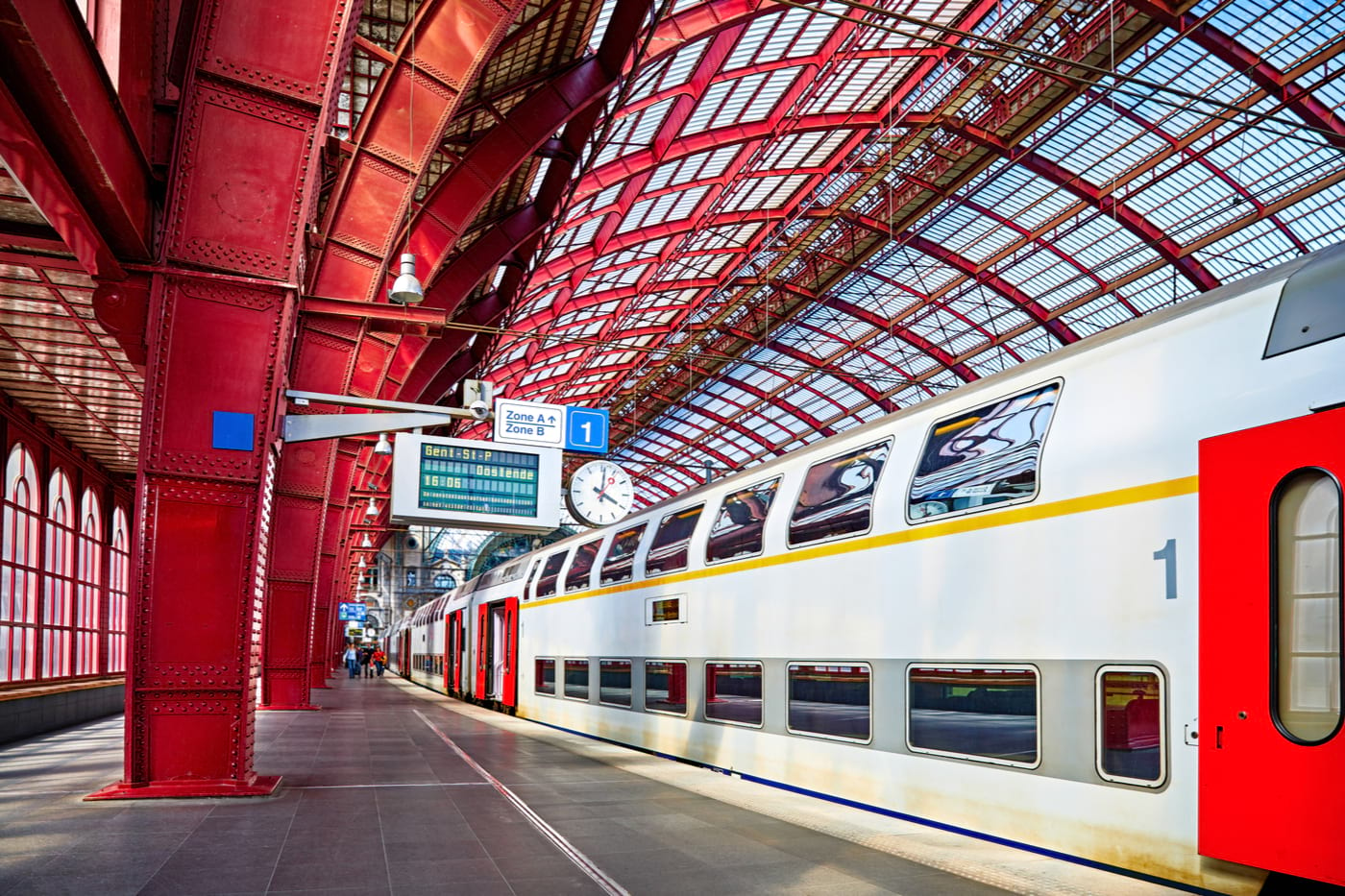
There are a couple of other airports in Belgium but 99% of air travelers will arrive via one of the two airports above. Those traveling onwards from Brussels will need to take a train either from the airport or Gare du Midi near the city center.
For those crossing into Belgium by land, there are lots of options. Regular buses and trains connect Belgium with Paris, Rotterdam, Cologne, Luxembourg, and further still. Since all of these are a part of the Schengen Zone, border control is practically invisible. Use a booking platform like Bookaway to find tickets.
Entry Requirements for Belgium
Belgium is a part of the Schengen Zone, which is a part of the greater European Union. If you’ve never been to a Schengen country e.g. Italy, Spain, France, etc then let me tell you that there is nothing to it.
Most countries can enter the Schengen Zone visa-free for up to 90 days within a period of 180 days. You don’t have to go through customs every time you cross into a new Schengen country either – you get an entry stamp from the first port you used to enter the Schengen and then an exit from the country when you leave the Schengen Zone. The system is very convenient.
Not every nationality applies for this visa-free regime with the Schengen Zone. If you use a passport from any of these countries , you will need to apply for a visa before visiting Belgium.

Get 15% OFF when you book through our link — and support the site you love so dearly 😉
Booking.com is quickly becoming our go-to for accommodation. From cheap hostels to stylish homestays and nice hotels, they’ve got it all!
How to Get Around Belgium
Belgium is a pretty small country and is very easy to get around. One could travel from one end to the other in 3-4 hours using the train and barely be hassled at all.
There are several ways of getting around Belgium while backpacking there:
In the bigger cities, like Brussels and Antwerp, you’ll find a combination of buses, trams, and subways, that can take you just about anywhere. Tickets are cheap and day passes are available. Belgian cities are pretty compact as well, which means travelers may only need to use public transit sparingly and instead rely on walking everywhere.
Traveling around Europe by train is dreamy. Smooth rides, extra legroom, a table for your things, and all the world outside. I highly recommend traveling by train at least once while backpacking in Belgium or anywhere in Europe for that matter.
Traveling by train in Belgium is very convenient. Most of the country is connected by rail and you can reach the grand majority of the top places to visit in Belgium using the train. Simply use an online booking platform to find tickets, or buy the tickets at the station.
Note that stations and stops will be written in either French, Flemish, or sometimes both. Depending on the destination, the two names can appear very different.
Also, be on the lookout for regular discounts. Train tickets are cheaper on the weekends plus there are special deals for those younger than 26 years old.
Buses take about the same amount of time as trains do, maybe a bit longer. They are cheaper though and still quite comfortable.
Blablacar is big in Europe. Download the app and keep an eye out for rides. Traveling between major cities is usually pretty easy. If you need to get somewhere more remote, you might have trouble finding a ride.
People backpack all of Belgium just by bike sometimes! Biking while backpacking, or bikepacking, is growing in popularity and given Belgium’s very strong bike culture, bikepacking is totally doable here. Check out this trip report about bikepacking in the Ardennes .
Working and Staying Connected in Belgium
Belgium is not a great place for digital nomads to base themselves. For one thing, the weather is truly shit (but we all knew that already). For another, there just aren’t a lot of opportunities for remote workers seemingly out there right now. Combine that with a high cost of living and some of the highest taxes in the world, it’s no wonder remote workers tend to skip Belgium for greener pastures.
We’re always open to hearing about new developments though, so you have some experience being a digital nomad in Belgium, we’d love to hear about it in the comment’s section!

A new country, a new contract, a new piece of plastic – booooring. Instead, buy an eSIM!
An eSIM works just like an app: you buy it, you download it, and BOOM! You’re connected the minute you land. It’s that easy.
Is your phone eSIM ready? Read about how e-Sims work or click below to see one of the top eSIM providers on the market and ditch the plastic .
Volunteering in Belgium
Volunteering abroad is an amazing way to experience a culture whilst giving something back. There are loads of different volunteer projects in Belgium ranging from teaching, to animal care, to agriculture to pretty much everything!
Belgium is a wealthy and highly established western nation, so doesn’t have the same need for volunteers as less developed countries do. That being said, it’s still possible to find ‘bread and board’ gigs in hospitality, as well as opportunities to help out with permaculture projects and animal care. You won’t need a visa to volunteer in Belgium for up to three months, but you’ll need to apply for a working holiday visa if you wish to stay longer.
Our go-to platform for finding volunteering gigs is Worldpackers who connect travellers with host projects. Have a look at the Worldpackers site and see if they have any exciting opportunities in Belgium before signing up.
Alternatively, Workaway is another excellent common platform used by travellers searching for volunteering opportunities. You can read our review of Workaway for more info on using this terrific platform.
Volunteer programs run through reputable work exchange programs like Worldpackers and platforms like Workaway are usually very well-managed and reputable. However, whenever you are volunteering do stay vigilant, especially when working with animals or children.

Worldpackers: connecting travellers with meaningful travel experiences.
What to Eat and Drink in Belgium
Belgium may not be considered a “foodie” destination by many and that’s truly unfortunate! In reality, Belgium features some of the most delicious cuisines in all of Europe and could definitely give nearby France a run for its money.
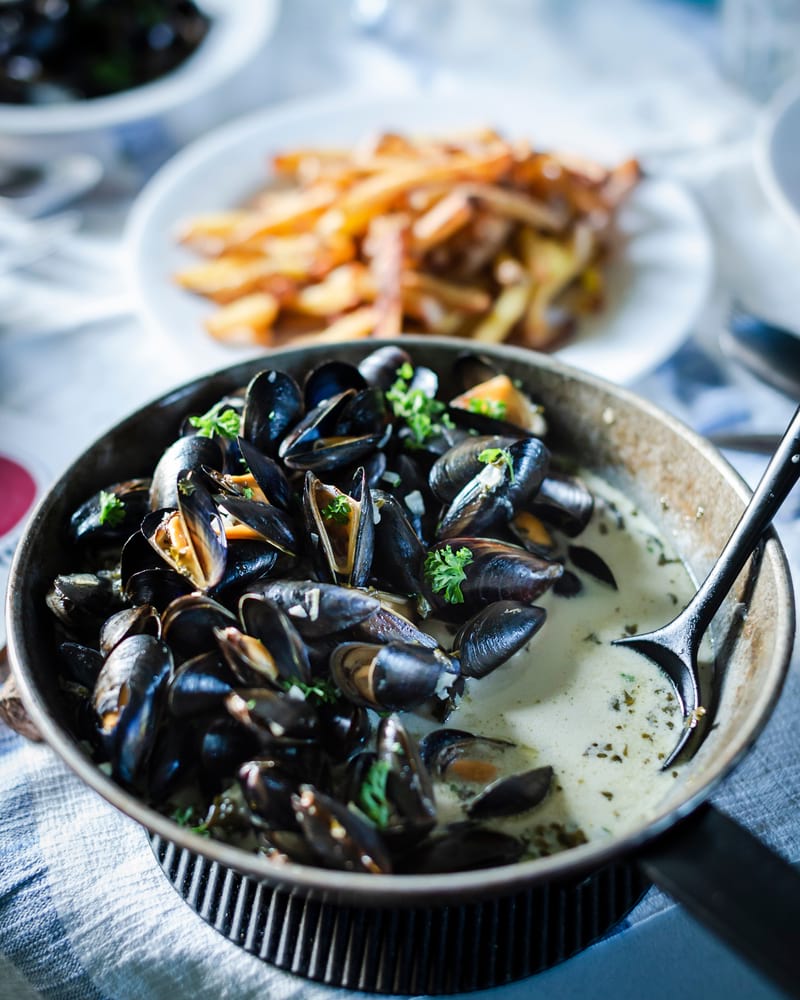
Belgian food is very rich in flavor and generally filling. Expect heavy stews and soups, fried delights, mouthwatering desserts, and lots of seafood. OHHHH THE SEAFOOD.
The national dish is moules frites or “steamed mussels served with fried potatoes.” There are hundreds of variations of this dish featuring different broths and different cuts of potato; each is worth trying. One should definitely seek out some moules frites at least once while backpacking in Belgium.
The only thing you need to accept is the fact that Belgium is not light, nor is it necessarily “healthy.” The food here is hearty and meant to stick to your bones. After all, this is a country where fried, sugar-crusted waffles are eaten on the go, where the beer runneth over in excess, where your best company on a cold, rainy night is a plate of steaming stoofvlees !
The Best Belgian Dishes
Here are some typical dishes that everyone should try while backpacking through Belgium:
- Moules frites – Steamed mussels served w/ fries. Broths vary greatly.
- Waffles/Gaufre – Liege waffles prepared crunchy and served w/ lots of sugar and confectionaries.
- Stoemp – Mashed potatoes mixed w/ vegetables and meat.
- Stoofvlees/Carbonnade flamande – Slow cooked beef w/ a rich gravy.
- Waterzooi – A mixed seafood soup served on the coast.
- Croquettes aux crevettes grises – Deep fried balls stuffed w/ shrimp.
- Chicon au gratin – endives wrapped in ham, smothered in sauce and cheese.
- Speculaas – spiced, shortbread cookies, served mostly around Christmas.
Belgian Beers
Let’s take a moment to pay tribute to one of Belgian’s greatest accomplishments: brewing . Belgian beer is extremely diverse, totally unique at times, and utterly fantastic. There are so many different kinds of beer in Belgian that it would take a lifetime to try them all. You could order a new beer every time you visit a new bar or restaurant, and I highly recommend you do just that.
Belgian beers come in all sorts of flavors and styles. They can be a little on the sweet side and tend to be more alcoholic than other varieties. Beers start at about 5-6% ABV and can go upwards of 18%. DO NOT underestimate the strength of the beer; many tourists drink 4-5 Duvels rapid-fire, only to realize too late that beer is 7.5%. Things go downhill from there, much to the amusement of the locals.
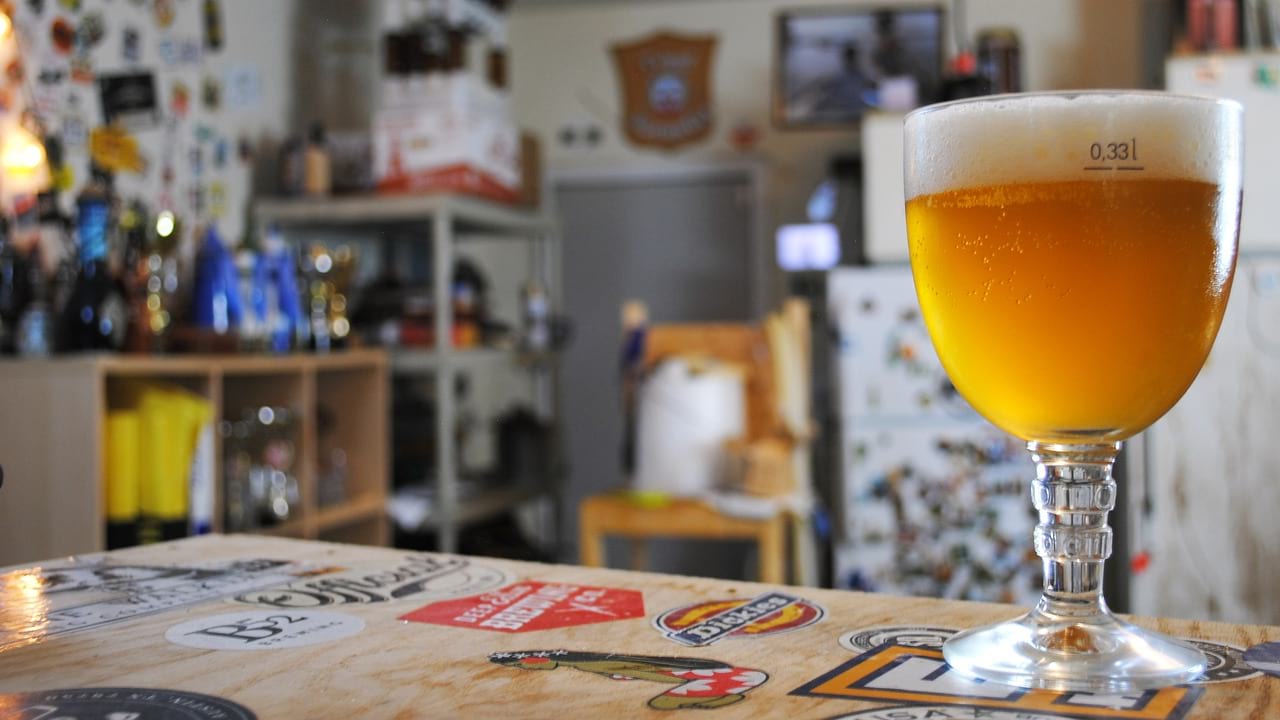
Belgian beer has a particular flavor note to it – something many people describe as “bubble-gummy.” This is due to the special type of yeast used. Not all Belgian beers necessarily feature this flavor but you’ll find it in many of the most popular brands, like Hooegarden and Delirium Tremens.
Fruit and other adjuncts are used willingly in many Belgian beers. The most famous fruit beers are the krieks , peches , and framboises . These can be pretty sweet; a real kriek is sour. Belgian sours, like lambics and guezes , are probably the most famous in the world.
The most highly regarded Belgian beers are the Trappists. These are made in a traditional monastery using traditional recipes that can be hundreds of years old.There are twelve breweries in total and the title “Trappist” is only given by official certification, much like scotch. Don’t miss out on trying one of these.
Belgian Beers You Need to Try
- Rodenbach – A Flemish red-style ale. Sweet and sour, like balsamic vinegar.
- Gouden Carolus – Made by Het Anker. The tripel is a classic but the Cuvee van de Keizer is phenomenal.
- St Bernardus 10 – For those who can’t get their hands on a Westvleteren. Arguably, just as good.
- Hoogarden – A wheat beer made w/ coriander and orange peel. Great on a hot day.
- Duvel – A Belgian’s go-to beer. Extremely easy to drink and very alcoholic.
- Delirium Tremens – Arguably, what everyone imagines Belgian beer to be like: sweet, creamy, evanescent, w/ a touch of bubblegum.
- Orval – A very unique tripel that is dry, aromatic, and very “bright” in flavor.
- Westmalle Dubbel – A lighter dark ale w/ a bit more bitterness, yet still malty.
- Cantillon Gueze – The king of all Belgian sours. This is a beer you either hate or can’t get enough of.
- Kwak – Mostly known for the very strange glass it’s served, a bit too sweet at times though.
- Bush – One of the readily available beers over 10% ABV. More like a wine than beer.
- Jupiler – The most consumed beer in Belgian (sorry Stella). A pale, easy-drinking ale.
Belgian Culture
Let me start off by saying that Belgians are genuinely very nice people, especially after you’ve gotten a few beers in them. They’re an open-minded bunch, curious at times, and generally respectful of one another, despite tensions .
The thing that usually puts people off is that most Belgians put a proverbial wall between themselves and others. This is most readily apparent by the Belgian famous sarcasm and self-deprecating humor. A Belgian might say something that seems standoffish and the uninitiated may not know how to react. In most cases, said Belgian means well and is just making an awkward joke.
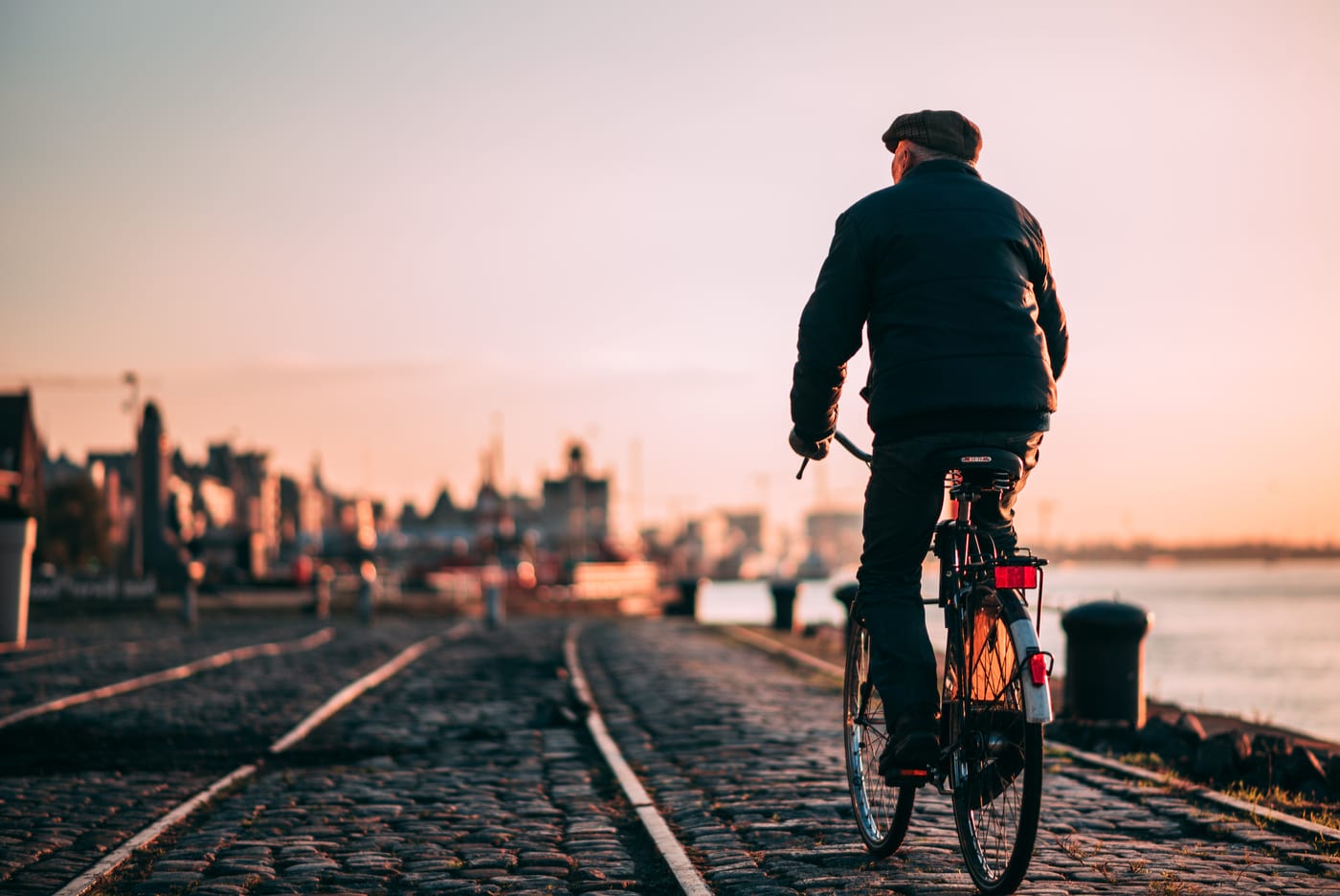
After having spent lots of time around Belgians, one of the things I like most about them is that you can talk about almost anything. There are few subjects labeled as taboo in Belgium and few conversational pitfalls. Chalk it up to a life surrounded by politics, but Belgians take most things in stride.
The one thing you definitely ought to avoid though is the Walloon-Flemish and the French-Dutch divide. There is a serious schism between those who live in Flander, who speak primarily Dutch and those who live in Wallonia, who speak mostly French. Confusingly, the Flemish don’t like to be called Dutch either, nor do the Walloons like to be called French. Avoid the subject of who’s what in Belgium and don’t ask either.
It should also be said that Belgium these days is an extremely diverse place, physically speaking. Belgians themselves look a bit like the Dutch, though with darker hair. But they aren’t the only ones living here. There are large communities of Italians, Moroccans, Turks, and Congolese residing in Belgium today, partly due to Belgium’s status as “The Capital of the EU.” It is an attractive place to emigrate to; the only problem is that individual ethnic communities tend to be segregated .
Useful Travel Phrases for Belgium
Belgium is a polyglottal nation with three official languages: Dutch , French , and German . Unfortunately, not all languages are recognized in every part of the country, which leads to some frustrating circumstances.
For one thing, information will often be displayed in just one language, whichever is the dominant of the area. If you’re in Flanders, most everything will be in Dutch. If you’re in Wallonia, everything will be in French. Only Brussels features official markings in both. German is only spoken in a couple of regions on the border of Germany.
Also frustrating is the chasm that exists between the two. Dutch-speaking Belgians don’t really appreciate being spoken to in French and the opposite goes for the francophones. Travelers might get some nasty glares if they mix the two up and it can sometimes be tricky navigating this linguistic minefield.
Luckily, English is widely spoken as well and, honestly, backpackers in Belgium should just defer to it, at least until they can get a feel for the person they’re talking to.
If you did feel comfortable speaking a bit of the local language, the people might open up more to you. To help you kick off the conversation, here are a couple of useful phrases in both Dutch and French:
Dutch Travel Phrases
- Hallo – Hello
- Alsjeblieft – Please
- Bedankt – Thank you
- Lekker – Cool/Great/Awesome
- Wat is je naam – What is your name?
- Ik kom uit… – I am from…
French Travel Phrases
- Bonjour – Hello
- S’il vous plaît – Please
- Merci! – Thanks!
- C’est beau – Beautiful
- Comment t’appelles-tu? – What is your name?
- Je viens de… – I am from…
Books to Read About Belgium
- King Leopold’s Ghost – The Belgians were one of the worst offenders during the colonization of Africa. In fact, King Leopold II was the inspiration for the term “crimes against humanity.” This is essential reading for anyone looking to explore humanism and the Age of Exploitation.
- The Lady and the Unicorn – A fictional novel about the existence of the six world-famous Unicorn Tapestries, which were made in Flanders.
- All Quiet on the Western Front – Though written by a German and from a German soldier’s perspective, it still concerns Belgium. The Western Front went right through Belgium and practically decimated the country. This is a good one to read before visiting Flanders Fields.
- The Adventures of Tintin – The character Tintin originated in Belgium is now one of its most beloved characters. It may not be adult reading, but it’s worth reading for a bit of perspective. Seriously though: don’t talk shit about Tintin in Belgium .
- War and Turpentine – One of the most well-regarded Belgian novels in recent times. Recounts the life of the narrator’s grandfather before and after WWI as he reads through the latter’s diaries.
- The Abyss – A man who shuns contemporary life and living in search of greater knowledge. Deals with religion, paradigm shifts, and alchemy.
Final Advice Before Visiting Belgium
There are a ton of good times to be had while backpacking in Belgium but everyone, myself included, can get carried away sometimes. It is important to keep in mind that you are an ambassador for your country, which is awesome.
We can make a positive impact on people when we travel and get rid of any ugly stereotypes that may be associated with your country.
Remember to treat the Flemish-Walloon situation with tact and discretion. Think hard before labeling anyone in the country, and that goes for the large immigrant population as well.
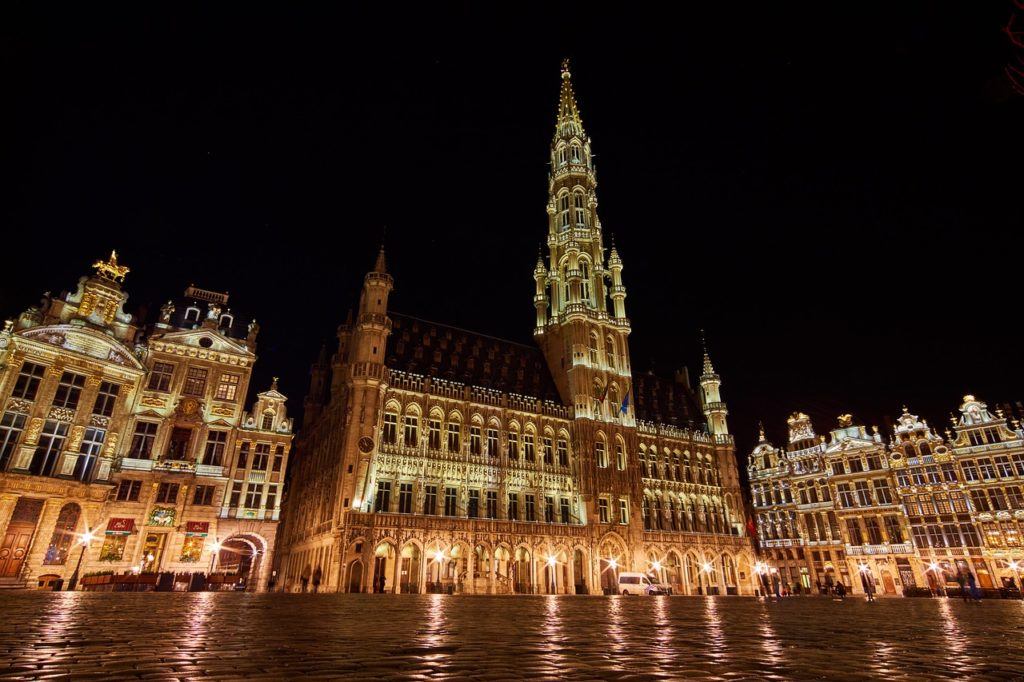
Definitely base yourself in cool cities like Ghent, Antwerp, or Leuven, but don’t abandon Brussels outright. Yes, it can be a bit more hectic and, yes, there is more to be critical about here, but it’s still worth visiting. There are things in Brussels that you can’t find anywhere else in the world, the Delirium Cafe and Cantillion Brewery to name a few.
Traveling often illuminates some of the great socio-economic inequalities of the world. Never take it for granted that you are healthy and financially able to go traveling.
Show the world around you some gratitude and help to make a positive impact on it. Most of all have the time of your life and spread the love!

And for transparency’s sake, please know that some of the links in our content are affiliate links . That means that if you book your accommodation, buy your gear, or sort your insurance through our link, we earn a small commission (at no extra cost to you). That said, we only link to the gear we trust and never recommend services we don’t believe are up to scratch. Again, thank you!

Share or save this post

Leave a Reply Cancel reply
Your email address will not be published. Required fields are marked *
Save my name, email, and website in this browser for the next time I comment.
Notify me of followup comments via e-mail.
Brussels Travel Guide
Book your individual trip , stress-free with local travel experts
- roughguides.com
- Travel guide
- Local Experts
- Travel Advice
Accommodation
Plan your tailor-made trip with a local expert
Book securely with money-back guarantee
Travel stress-free with local assistance and 24/7 support
Wherever else you go in Belgium, allow at least a little time for BRUSSELS , which is undoubtedly one of Europe’s premier cities. Certainly, don’t let its unjustified reputation as a dull, faceless centre of EU bureaucracy deter you: in postwar years, the city has become a thriving, cosmopolitan metropolis, with top-flight museums and architecture (including a well-preserved late seventeenth-century centre), a superb restaurant scene and an energetic nightlife. Moreover, most of the key attractions are crowded into a centre that is small enough to be absorbed over a few long days, its boundaries largely defined by a ring of boulevards – the “petit ring”, or less colloquially, the “petite ceinture”.
Around Brussels: Waterloo
Bilingual brussels, the brussels card, east of the centre: the eu quarter and le cinquantenaire, eating and drinking, the grand-place, guided tours, the lower town, nightlife and entertainment, north of the centre: jette, laeken and heysel, south of the centre: st-gilles, avenue louise and ixelles, train station names, the upper town.
First-time visitors to Brussels are often surprised by the raw vitality of the city centre. It isn’t neat and tidy, and many of the old tenement houses are shabby and ill-used, but there’s a buzz about the place that’s hard to resist. The city centre is divided into two main areas. The larger westerly portion comprises the Lower Town , fanning out from the marvellous Grand-Place , with its exquisite guildhouses and town hall, while up above, on a ridge to the east, lies the much smaller Upper Town , home to the finest art collection in the country in the Musées Royaux des Beaux Arts.
Since the eleventh century, the ruling elite has lived in the Upper Town, keeping a beady eye on the workers and shopkeepers down below – a state of affairs that still – in part – remains. In recent times, this fundamental class division, so obvious in the layout of the centre, has been further complicated by discord between Belgium’s two main linguistic groups, the Walloons (the French-speakers) and the Flemings (the Dutch- or Flemish-speakers), and to add to the communal stew, these two groups now share their city with many others, including EU civil servants and immigrants from North and Central Africa, Turkey and the Mediterranean. Each of these communities tends to live a very separate, distinct existence, and Brussels’ compact nature heightens the contrasts: in five minutes you can walk from a chichi shopping mall into an African bazaar, or from a depressed slum quarter to a resplendent square of antique shops and exclusive cafés. This is something that increases the city’s allure, not least by way of the sheer variety of affordable cafés and restaurants – Brussels is a wonderful place to eat, its gastronomic reputation rivalling that of Paris. It’s also a great place to drink, with bars ranging from designer chic to rough and ready with everything in between.
The city’s specialist shops are another pleasure. Everyone knows about Belgian chocolates, but here in the capital there are also huge open-air markets, contemporary art galleries and establishments devoted to anything from comic books to costume jewellery and clubland fashion. Furthermore, Belgium is such a small country, and the rail network so fast and efficient, that Brussels also makes the perfect base for a wide range of day-trips. An obvious target is the battlefield of Waterloo , one of the region’s most visited attractions.
Brief history
Brussels takes its name from Broekzele, or “village of the marsh”, the community which grew up beside the wide and shallow River Senne in the sixth century, allegedly around a chapel built here by St Géry, a French bishop turned missionary. A tiny and insignificant part of Charlemagne’s empire at the end of the eighth century, it was subsequently inherited by the dukes of Lower Lorraine (or Lotharingia – roughly Wallonia and northeast France), who constructed a fortress here in 979. Protected, the village benefited from its position on the trade route between Cologne and the burgeoning towns of Bruges and Ghent to become a significant trading centre in its own right. The surrounding marshes were drained to allow for further expansion, and in 1229 the city was granted its first charter by the dukes of Brabant , the new feudal overlords who controlled things here, on and off, for around two hundred years. In the early fifteenth century, marriage merged the interests of the Duchy of Brabant with that of Burgundy, whose territories passed to the Habsburgs in 1482 when Mary, the last of the Burgundian line, died; she was succeeded by her husband, Maximilian I, who was anointed Holy Roman Emperor in 1494.
The first Habsburg rulers had close ties with Brussels, and the Emperor Charles V (1519–55) ran his vast kingdom from the city for over a decade, making it wealthy and politically important in equal measure. By contrast, his successor Philip II (1527–98) lived in Spain and ruled through a governor (for the whole of the Low Countries) resident in Brussels. It could have been a perfectly reasonable arrangement, but Philip’s fanatical Catholicism soon unpicked the equilibrium. Horrified by the Protestant leanings of many of his Low Country subjects, the king imposed a series of anti-Protestant edicts, and when these provoked extensive rioting , he dispatched an army of ten thousand men – led by a hardline reactionary, the Duke of Albe – to crush his opponents in Brussels absolutely. Albe quickly restored order and then, with the help of the Inquisition, set about the rioters with gusto, his Commission of Civil Unrest soon nicknamed the “ Council of Blood ” after its habit of executing those it examined. Goaded into rebellion by Albe’s brutality, Brussels, along with much of the Low Countries, exploded in revolt, and in 1577, the one-time protégé of the Habsburgs, William the Silent , made a triumphant entry into the city and installed a Calvinist government. Protestant control lasted for just eight years, before Philip’s armies recaptured Brussels – and the king wasn’t a man to forgive and forget. Seeing which way the religious wind was blowing, hundreds of Protestants left the city and the economy slumped, though complete catastrophe was averted by the conspicuous consumption of the (Brussels-based) Habsburg elite, whose high spending kept hundreds of workers in employment. Brussels also benefited from the digging of the Willebroek Canal, which linked it to the sea for the first time in its history in 1561.
By the 1580s, the Habsburgs had lost control of the northern part of the Low Countries (now the Netherlands) and Brussels was confirmed as the capital of the remainder, the Spanish Netherlands (broadly modern Belgium). Brussels prospered more than the rest of the country, but it was always prey to the dynastic squabbling between France and Spain: in 1695, for example, Louis XIV bombarded Brussels for 36 hours merely to teach his rivals a lesson, though the guilds , those associations of skilled merchants and workers who were crucial to the economy of Brussels, rebuilt their devastated city in double time, and it’s this version of the Grand-Place that survives today.
In 1700 Charles II, the last of the Spanish Habsburgs, died without issue. The ensuing War of the Spanish Succession dragged on for over a decade, but eventually the Spanish Netherlands were passed to the Austrian Habsburgs, who ruled – as had their predecessors – through a governor based in Brussels. It was during this period as capital of the Austrian Netherlands (1713–94) that most of the monumental buildings of the Upper Town were constructed and its Neoclassical avenues and boulevards laid out – grand extravagance in the context of an increasingly industrialized city crammed with a desperately poor working class.
The French Revolutionary army brushed the Austrians aside at the Battle of Fleurus in 1794, and the Austrian Netherlands promptly became a département of France. This lasted until the defeat of Napoleon when, under the terms of the Congress of Vienna which ended hostilities, the great powers decided to absorb the country into the new Kingdom of the Netherlands , ruled by the Dutch King William I. Brussels took turns with The Hague as the capital, but the experiment was short-lived, and in 1830 a Brussels-led rebellion removed the Dutch and led to the creation of an independent Belgium with Brussels as capital.
The nineteenth century was a period of modernization and expansion, during which the city achieved all the attributes of a modern European capital under the guidance of Burgomaster Anspach and King Léopold II . New boulevards were built; the free university was founded; the Senne – which by then had become an open sewer – was covered over in the city centre; many slum areas were cleared; and a series of grand buildings were erected. The whole enterprise culminated in the golden jubilee exhibition celebrating the founding of the Belgium state in the newly inaugurated Parc du Cinquantenaire.
Following the German occupation of Belgium in World War II, the modernization of Brussels has proceeded inexorably, with many major development projects – not least the new métro system – refashioning the city and reflecting its elevated status as the headquarters of both NATO and the EU.
Top image © Sira Anamwong/Shutterstock
Tailor-made travel itineraries for Belgium, created by local experts

8 days / from 2782 USD
The best of the Netherlands and Belgium
This trip will bring you the best of two countries: the Netherlands and Belgium. From the quaint streets, canals and windmills of Holland to beer and Belgium chocolate tasting in three beautiful Belgium cities. This trip has it all.

9 days / from 2996 USD
Experience the Liberation Route in BeNeLux
Explore the path of the World War II Liberation Route through Belgium, Luxembourg and the Netherlands. Visit important landmarks and museums on the way with this self drive itinerary, with enough time to explore cities such as Brussels and Rotterdam on the way.

10 days / from 5564 USD
Taste of Three - Belgium, France and Switzerland
Start your journey in Belgium and explore Brussels, Ghent and Bruges. A high-speed train will then take you to Strasbourg, from where you'll discover the Alsace. Proceed to Basel as your base, from where you'll see plenty of Switzerland: Zermatt, Matterhorn, Mount Pilatus and much more.
With over seventy hotels dotted within its central ring of boulevards, Brussels has no shortage of convenient places to stay, but even so finding hotel accommodation can still prove difficult, particularly in the spring and autumn when the capital enjoys what amounts to its high seasons – July and August are much slacker as the business trade dips when the EU (pretty much) closes down for its summer recess. The same cautions apply to the city’s B&Bs , though these are thin on the ground. If you do opt for a B&B, don’t expect UK-style hospitality – in effect you get a self-contained room in a private house – but do expect to be on the peripheries of town, a good way from the action. The city has half a dozen hostels , of which we have listed the best options.
At peak times, it’s prudent to reserve a bed at least for your first night, but if you do arrive with nowhere to stay, the city’s two main tourist offices operate a free same-night hotel booking service . Hotel prices vary hugely. Many have both deluxe and more standard rooms, with charges adjusted accordingly, and regular special and weekend discounts bring prices down by about fifteen percent, with some places occasionally halving their rates.
Brussels lies at the centre of Brabant , one of Belgium’s nine provinces. The Flemings claim the lion’s share of the province with their Vlaams Brabant (Flemish Brabant) actually encircling the capital – a noticeably narrow corridor of Flemish-speaking communities runs round the southern edge of Brussels. WATERLOO is easily the most popular attraction in Brabant Wallon (French-speaking Brabant) and is best seen on a day-trip from the capital. A run-of-the-mill suburb about 18km south of the centre of Brussels, the town has a resonance far beyond its size. On June 18, 1815, at this small crossroads town on what was once the main route to Brussels from France, Wellington masterminded the battle that put an end to the imperial ambitions of Napoleon. The battle turned out to have far more significance than even its generals realized, for not only was this the last throw of the dice for the formidable army born of the French Revolution, but it also marked the end of France’s prolonged attempts to dominate Europe militarily.
Nevertheless, the historic importance of Waterloo has not saved the battlefield from interference – a motorway cuts right across it – and if you do visit you’ll need a lively imagination to picture what happened and where – unless, that is, you’re around to see the large-scale re-enactment which takes place every five years in June; the next one is scheduled for 2015. Scattered round the battlefield are several monuments and memorials, the most satisfying of which is the Butte de Lion , a huge earth mound that’s part viewpoint and part commemoration. The battlefield is 3km south of the centre of Waterloo, where the Musée Wellington is easily the pick of several Waterloo museums.
The battlefield – Le Hameau de Lion
Some 4km south of town, the Waterloo battlefield is a landscape of rolling farmland, interrupted by a couple of main roads and more pleasingly punctuated by the odd copse and farmstead. The ridge where Wellington once marshalled his army now holds a motley assortment of attractions collectively known as Le Hameau du Lion (Lion’s Hamlet). This comprises four separate sites all within a few metres of each other, with the added offering of a 45-minute battlefield tour in a four-wheel-drive. Of the four sites, the worst are the Centre du Visiteur , which features a dire audiovisual display on the battle, and the Musée de Cires (same hours), a dusty wax museum. The best is the 100m-high Butte de Lion (same hours), built by local women with soil from the battlefield. The Butte marks the spot where Holland’s Prince William of Orange – one of Wellington’s commanders and later King William II of the Netherlands – was wounded. It was only a nick, so goodness knows how high it would have been if William had been seriously injured, but even so the mound is a commanding monument, surmounted by a regal 28-tonne lion atop a stout column. From the viewing platform, there’s a panoramic view over the battlefield, and a plan identifies which army was where. Also enjoyable is the Panorama de la Bataille (same hours), where a circular, naturalistic painting of the battle, on a canvas no less than 110m in circumference, is displayed in a purpose-built, rotunda-like gallery – to a thundering soundtrack of bugles, snorting horses and cannon fire. Panorama painting is extremely difficult – controlling perspective is always a real problem – but it was very much in vogue when the Parisian artist Louis Dumoulin began this effort in 1912. Precious few panoramas have survived and this one is a bit past its best, but it does at least give a sense of the battle. You can also venture out onto the battlefield under your own steam by following the old track that cuts south across the fields from beside the Panorama.
The Battle of Waterloo
Napoleon escaped from imprisonment on the Italian island of Elba on February 26, 1815. He landed in Cannes three days later and moved swiftly north, entering Paris on March 20 just as his unpopular replacement – the slothful King Louis XVIII – high-tailed it to Ghent. Thousands of Frenchmen rallied to Napoleon’s colours and, with little delay, Napoleon marched northeast to fight the two armies that threatened his future. Both were in Belgium. One, an assortment of British, Dutch and German soldiers, was commanded by the Duke of Wellington , the other was a Prussian army led by Marshal Blücher . At the start of the campaign, Napoleon’s army was about 130,000 strong, larger than each of the opposing armies but not big enough to fight them both at the same time. Napoleon’s strategy was, therefore, quite straightforward: he had to stop Wellington and Blücher from joining together – and to this end he crossed the Belgian frontier near Charleroi to launch a quick attack. On June 16, the French hit the Prussians hard, forcing them to retreat and giving Napoleon the opportunity he was looking for. Napoleon detached a force of 30,000 soldiers to harry the retreating Prussians, while he concentrated his main army against Wellington, hoping to deliver a knockout blow. Meanwhile, Wellington had assembled his troops at Waterloo , on the main road to Brussels.
At dawn on Sunday June 18 , the two armies faced each other. Wellington had some 68,000 men, about one third of whom were British, and Napoleon around five thousand more. The armies were deployed just 1500m apart with Wellington on the ridge north of – and uphill from – the enemy. It had rained heavily during the night, so Napoleon delayed his first attack to give the ground a chance to dry. At 11.30am , the battle began when the French assaulted the fortified farm of Hougoumont, which was crucial for the defence of Wellington’s right. The assault failed and at approximately 1pm there was more bad news for Napoleon when he heard that the Prussians had eluded their pursuers and were closing fast. To gain time he sent 14,000 troops off to impede their progress and at 2pm he tried to regain the initiative by launching a large-scale infantry attack against Wellington’s left. This second French attack also proved inconclusive and so at 4pm Napoleon’s cavalry charged Wellington’s centre, where the British infantry formed into squares and just managed to keep the French at bay – a desperate engagement that cost hundreds of lives. By 5.30pm , the Prussians had begun to reach the battlefield in numbers to the right of the French lines and, at 7.30pm , with the odds getting longer and longer, Napoleon made a final bid to break Wellington’s centre, sending in his Imperial Guard. These were the best soldiers Napoleon had, but slowed down by the mud churned up by their own cavalry, the veterans proved easy targets for the British infantry, and they were beaten back with great loss of life. At 8.15pm , Wellington, who knew victory was within his grasp, rode down the ranks to encourage his soldiers before ordering the large-scale counterattack that proved decisive.
The French were vanquished and Napoleon subsequently abdicated , ending his days in exile on St Helena, where he died in 1821. Popular memory, however, refused to vilify Napoleon as the aggressor – and not just in France, but right across Europe, where the Emperor’s bust was a common feature of the nineteenth-century drawing room. In part, this was to do with Napoleon’s obvious all-round brilliance, but more crucially, he soon became a symbol of opportunity: in him the emergent middle classes of western Europe saw a common man becoming greater than the crowned heads of Europe, an almost unique event at the time.
The Musée Wellington
The Musée Wellington , chaussée de Bruxelles 147 ( w www.museewellington.com ), occupies the old inn where Wellington slept the nights before and after the battle. It’s an enjoyable affair, whose displays detail the build-up to – and the course of – the battle via plans and models, alongside an engaging hotchpotch of personal effects. Room 4 holds the bed where Alexander Gordon, Wellington’s principal aide-de-camp, was brought to die, and here also is the artificial leg of Lord Uxbridge, another British commander: “I say, I’ve lost my leg,” Uxbridge is reported to have said during the battle, to which Wellington replied, “By God, sir, so you have!” After the battle, Uxbridge’s leg was buried here in Waterloo, but it was returned to London when he died to join the rest of his body; as a consolation, his artificial leg was donated to the museum. Such insouciance was not uncommon among the British ruling class and neither were the bodies of the dead soldiers considered sacrosanct: tooth dealers roamed the battlefields of the Napoleonic Wars pulling out teeth, which were then stuck on two pieces of board with a spring at the back – primitive dentures known in England as “Waterloos”.
In Wellington’s bedroom, Room 6 , there are copies of the messages Wellington sent to his commanders during the course of the battle, curiously formal epistles laced with phrases like “Could you be so kind as to …”. Finally, an extension at the back of the museum reprises what has gone before, albeit on a slightly larger scale, with more models, plans and military paraphernalia plus a lucid outline of the immediate historical background.
As a cumbersome compromise between Belgium’s French- and Flemish-speaking communities, Brussels is the country’s only officially bilingual region . This means that every instance of the written word, from road signs and street names to the Yellow Pages , has by law to appear in both languages. Visitors soon adjust – though on arrival the names of the main train stations can be confusing – but for simplicity we’ve used the French version of street names, sights etc.
The good-value Brussels Card ( w www.brusselscard.be ) provides free access to most of the city’s key museums, unlimited travel on the STIB public transport network, and discounts of up to 25 percent at specified restaurants and bars. There are three versions – 24hr (€24), 48hr (€34), and 72hr (€40) – and each is valid from the first time it is used, rather than the day of issue. The card is on sale online via the website and at both main tourist offices; there are no concessionary rates for seniors or children. It’s issued with a booklet detailing all the concessions and discounts.
Brussels by no means ends at the petit ring . King Léopold II pushed the city limits out beyond the course of the old walls, grabbing land from the surrounding communes to create the irregular boundaries that survive today. To the east , he sequestered a rough rectangle of land across which he ploughed two wide boulevards to link the city centre with Le Cinquantenaire , a self-glorifying and markedly grandiose monument erected to celebrate the golden jubilee of Belgian independence, and one that now houses three sprawling museums, two specialists and the more general Musées Royaux d’Art et d’Histoire . There’s no disputing the grandness of Léopold’s design, but in recent decades it has been overlaid with the uncompromising office blocks of the EU. These high-rises coalesce hereabouts to form the loosely defined EU quarter , not a particularly enjoyable area to explore, though the strikingly flashy European Parliament building is of passing interest, especially as it is just footsteps from the fascinating – and fascinatingly eccentric – paintings of the Musée Antoine Wiertz . If, however, you’ve an insatiable appetite for the monuments of Léopold, then you should venture further east to Tervuren , where the king built the massive Musée Royal de L’Afrique Centrale on the edge of the woods of the Forêt de Soignes.
The EU in Brussels
The three main institutions of the European Union operate mainly, though not exclusively, from Brussels. The European Parliament carries out its committee work and the majority of its business in Brussels, heading off for Strasbourg for around twelve, three-day plenary sessions per year. It’s the only EU institution to meet and debate in public, and has been directly elected since 1979. There are currently 736 MEPs, and they sit in political blocks rather than national delegations; members are very restricted on speaking time, and debates tend to be well-mannered consensual affairs, controlled by the President , who is elected for a five-year period by Parliament itself – although this mandate is often split in two and shared by the two biggest political groups. The Conference of Presidents – the President of the Parliament and Leaders of all the political groups – meet to plan future parliamentary business. Supporting and advising this political edifice is a complex network of committees from agriculture to human rights.
The European Council consists of the heads of government of each of the member states and the President of the European Commission; they meet twice every six months in the much-publicized “European Summits”. However, in between these meetings, ministers responsible for different issues meet in the Council of the European Union , the main decision-making structure alongside the European Parliament. There are complex rules regarding decision-making: some subjects require only a simple majority, others need unanimous support, some can be decided by the Council alone, others need the agreement of Parliament. This political structure is underpinned by scores of Brussels-based committees and working parties, made up of both civil servants and political appointees.
The European Commission acts as the EU’s executive arm and board of control, managing funds and monitoring all manner of agreements. The 27 Commissioners are political appointees, nominated by their home countries, but their tenure has to be agreed by the European Parliament and they remain accountable to the MEPs. The president of the Commission is elected by the European Parliament for a five-year period of office. Over twenty thousand civil servants work for the Commission, whose headquarters are in Brussels, mainly in the Berlaymont and adjacent Charlemagne building on rue de la Loi as well as other buildings in the Schuman area.
Brussels can hold its own with any international city when it comes to eating out , and whatever your taste, price range or preferred type of cuisine there is almost always something that will suit. Look out particularly for traditional Bruxellois dishes, canny amalgamations of Walloon and Flemish ingredients and cooking styles, whether rabbit cooked in beer, steamed pigs’ feet or waterzooi (for more on Belgian specialities). As for where to eat, the distinction between the city’s cafés , café-bars and restaurants is fairly elastic, and there are great places over the city, with particular concentrations on place Ste-Catherine and rue du Flandre in the Lower Town and place Boniface and place du Châtelain in Ixelles.
Drinking in Brussels, as in the rest of the country, is a joy. The city boasts an enormous variety of café-bars and bars : sumptuous Art Nouveau establishments, traditional bars with ceilings stained brown by a century’s smoke, speciality beer bars with literally hundreds of different varieties of ale and, of course, more modern hangouts. Many of the more distinctive bars are handily located within a few minutes’ walk of the Grand-Place and also in Ixelles, but really you’ll be spoiled for choice.
There’s no smoking in any establishment that sells food, along with bars and clubs.
Restaurants
Restaurant opening times are pretty standard – a couple of hours at lunchtime, usually noon to 2pm or 2.30pm, and again in the evening from 7pm to around 10pm; precise hours are given with the reviews below. At all but the cheapest restaurants, advance reservations are recommended, especially on Friday and Saturday evenings.
Bars and cafés
Belgians make little – or no – distinction between their bars and cafés : both serve alcohol, many stay open late (until 2am or even 3am) and most sell food as well. What you won’t find (thank goodness) are lots of the coffee house chains which beleaguer so many big cities.
The obvious place to begin any tour of Brussels is the Grand-Place , one of Europe’s most beautiful squares, which sits among a labyrinth of narrow, cobbled alleys and lanes at the heart of the Lower Town. Here, the Gothic extravagance of the Hôtel de Ville (town hall) presides over the gilded facades of a full set of late seventeenth-century guildhouses , whose columns, scrolled gables and dainty sculptures encapsulate Baroque ideals of balance and harmony. Inevitably, such an outstanding attraction draws tourists and expats in their droves, but there’s no better place to get a taste of Brussels’ past and Eurocapital present.
Originally marshland, the Grand-Place was drained in the twelfth century, and by 1350 covered markets for bread, meat and cloth had been erected, born of an economic boom that was underpinned by a flourishing cloth industry. Later, the Grand-Place’s role as the commercial hub of the emergent city was cemented when the city’s guilds built their headquarters on the square and, in the fifteenth century, it also assumed a civic and political function with the construction of the Hôtel de Ville. The ruling dukes visited the square to meet the people or show off in tournaments, and it was here that official decrees and pronouncements were proclaimed.
During the religious wars of the sixteenth century, the Grand-Place became as much a place of public execution as trade, but thereafter resumed its former role as a marketplace. Of the square’s medieval buildings, however, only parts of the Hôtel de Ville and one or two guildhouses have survived, the consequence of an early example of the precepts of total war, a 36-hour French artillery bombardment which pretty much razed Brussels to the ground in 1695; the commander of the French artillery gloated, “I have never yet seen such a great fire nor so much desolation”. After the French withdrew, the city’s guildsmen dusted themselves down and speedily had their headquarters rebuilt, adopting the distinctive and flamboyant Baroque style that characterizes the square today.
The health of Charles II
Philip IV of Spain (1605–65) had no fewer than fourteen children, but only one of his sons – Charles II (1661–1700) – reached his twenties. With women banned from the succession, the hapless, sickly Charles became king aged just four and, much to everyone’s surprise, survived to adulthood. After his first marriage in 1679, there were great hopes that he would sire an heir , but none arrived, allegedly because Charles suffered from premature ejaculation. A second marriage, twenty years later, was equally fruitless and, as it became increasingly clear that Charles was unable to procreate, Europe focused on what was to happen when Charles died and the Spanish royal line died out. Every ambassador to the Spanish court wrote long missives home about the health of Charles, none more so than the English representative, Stanhope , who painted an especially gloomy picture: “He (Charles) has a ravenous stomach and swallows all he eats whole, for his nether jaw stands out so much that his two rows of teeth cannot meet…His weak stomach not being able to digest the food, he voids it in the same (whole) manner.”
In the autumn of 1700, it was clear that Charles was dying and his doctors went to work in earnest, replacing his pillows with freshly killed pigeons and covering his chest with animal entrails. Not surprisingly, this didn’t work and Charles died on November 1, an event which triggered the War of the Spanish Succession .
The Hôtel de Ville
From the south side of the Grand-Place, the scrubbed and polished Hôtel de Ville (town hall) dominates proceedings, its 96m spire soaring high above two long series of robust windows, whose straight lines are mitigated by fancy tracery and an arcaded gallery. The edifice dates from the beginning of the fifteenth century, when the town council decided to build itself a mansion that adequately reflected its wealth and power. The first part to be completed was the east wing – the original entrance is marked by the twin lions of the Lion Staircase, though the animals were only added in 1770. Work started on the west wing in 1444 and continued until 1480. Despite the gap, the wings are of very similar style, and you have to look hard to notice that the later one is slightly shorter than its neighbour, allegedly at the insistence of Charles the Bold who – for some unknown reason – refused to have the adjacent rue de la Tête d’Or narrowed. The niches were left empty and the statues seen today, which represent leading figures from the city’s past, were added as part of a nineteenth-century refurbishment.
By any standard, the tower of the Hôtel de Ville is quite extraordinary, its remarkably slender appearance the work of Jan van Ruysbroeck , the leading spire specialist of the day, who also played a leading role in the building of the cathedral. Ruysbroeck had the lower section built square to support the weight above, choosing a design that blended seamlessly with the elaborately carved facade on either side – or almost: look carefully and you’ll see that the main entrance is slightly out of kilter. Ruysbroeck used the old belfry porch as the base for the new tower, hence the misalignment, a deliberate decision rather than the miscalculation which, according to popular legend, prompted the architect’s suicide. Above the cornice protrudes an octagonal extension where the basic design of narrow windows flanked by pencil-thin columns and pinnacles is repeated up as far as the pyramid-shaped spire , a delicate affair surmounted by a gilded figure of St Michael , protector of Christians in general and of soldiers in particular. The tower is off-limits, and guided tours in English are confined to a string of lavish official rooms used for receptions and town council meetings. Tours begin at the reception desk off the interior quadrangle; be prepared for the guides’ overly reverential script.
Guided tours are big business in Brussels; everything from a quick stroll or bus ride round the city centre to themed visits is on offer, and both Brussels International tourist offices have the details of – and take bookings for – about twenty operators. As a general rule, the more predictable tours can be booked on the day, while the more exotic need to be booked ahead of time, either direct with the company concerned or with the tourist office, who normally require at least two weeks’ advance notice. Among the many more straightforward options, Brussels City Tours , rue de la Colline 8 ( w www.brussels-city-tours.com ), operates the Visit Brussels Line, a hop-on, hop-off bus service which loops round the city, visiting twelve of its principal sights.
More promising is ARAU (Atelier de Recherche et d’Action Urbaines), blvd Adolphe Max 55 ( t 02 219 33 45, w www.arau.org ), a heritage action group which provides tours exploring the city’s architectural history – with particular emphasis on Art Nouveau – from April through to December; prices vary with the length of the tour and the itinerary, but average about €10 per person for walking tours, €15 if there’s some transport involved.
Cramped and populous, the Lower Town fans out from the Grand-Place in all directions, bisected by one major north–south boulevard, variously named Adolphe Max, Anspach and Lemonnier. Setting aside the boulevard – which was ploughed through in the nineteenth century – the layout of the Lower Town remains essentially medieval, a skein of narrow, cobbled lanes and alleys in which almost every street is crimped by tall and angular town houses. There’s nothing neat and tidy about all of this, but that’s what gives it its appeal – dilapidated terraces stand next to prestigious mansions and the whole district is dotted with superb buildings, everything from beautiful Baroque churches through to Art Nouveau department stores.
The Lower Town is at its most beguiling to the northwest of the Grand-Place, where the churches of Ste-Catherine and Ste-Jean-Baptiste au Béguinage stand amid a cobweb of quaint streets and tiny squares. The streets to the north of the Grand-Place are of less immediate appeal, with particularly dreary rue Neuve, a pedestrianized main drag that’s home to the city’s mainstream shops and stores, leading up to the clumping skyscrapers that surround the place Rogier and the Gare du Nord. This is an uninviting part of the city, but relief is at hand in the precise Habsburg symmetries of the place des Martyrs and at the Belgian Comic Strip Centre, the Centre Belge de la Bande Dessinée. To the south of the Grand-Place, almost everyone makes a beeline for the city’s mascot, the Manneken Pis , but much more enjoyable is the museum dedicated to Belgium’s most celebrated chansonnier, Jacques Brel .
Éditions Jacques Brel
From the Manneken Pis, it’s a short stroll to place de la Vieille-Halle aux Blés, where the Éditions Jacques Brel ( www.jacquesbrel.be ) is a small but inventive museum celebrating the life and times of the Belgian singer Jacques Brel (1933–78), who was born and raised in Schaarbeek, a suburb of Brussels, though he lived most of his life in France. A legend in his own musical lifetime, Brel became famous in the 1960s as a gravelly voiced singer of mournful chansons about death, loss, desire and love, all of which he wrote himself. Inside the museum, a sequence of life-size tableaux give the impression that you have just missed Brel – a cigarette still burns in the replica bar – and you can watch films of the man in concert in the small and cosy theatre-cum-cinema. Brel’s performances were famous for their intensity and if you watch a show you can’t fail to be affected, though actually liking the music is another thing altogether.
Jacques Brel playlist
If you like what you hear at the Éditions Jacques Brel, you might want to check out some songs from the playlist below, which covers the very best of Brel’s work.
Brel’s deliberately repetitive, climactic tale of sailors in seedy ports is a fantastically evocative song, and was one of his most intense live numbers.
Les Bonbons
This is Brel at his wittiest and most unforgiving, poking fun at 1960s hippies.
Le chanson de Jackie
Brel in autobiographical mode, looking back in fantastically rumbustious fashion on his career and forward into his future.
One of Brel’s greatest love songs, brilliantly covered by Scott Walker.
Le Moribond
The tormented and yet curiously upbeat lament of a dying man that gave rise to the Terry Jacks hit of 1974.
Ne me quitte pas
Brel’s most anguished love song, and perhaps one of the most affecting ever written, memorably covered by Nina Simone.
Quand on n’a que l’amour
One of Brel’s earliest songs, When we have only Love was his first hit single.
The Impossible Dream has been covered by just about everyone and is quite rightly one of Brel’s best-known songs, but his version stands out.
Je suis un soir d’été
This late and very atmospheric study of summer ennui in small-town Belgium is one of Brel’s most beautiful songs.
Brel is typically satirical in this biting rant against war, militarism and middle-class bourgeois values.
Tintin was the creation of Brussels-born Georges Remi , aka Hergé (1907–83). Remi’s first efforts (pre-Tintin) were sponsored by a right-wing Catholic journal, Le XXième Siècle , and in 1929 when this same paper produced a kids’ supplement – Le Petit Vingtième – Remi was given his first major break. He was asked to produce a two-page comic strip and the result was Tintin in the Land of the Soviets , a didactic tale about the evils of Bolshevism. Tintin’s Soviet adventure lasted until May 1930, and to round it all off the director of Le XXième Siècle decided to stage a PR-stunt reception to celebrate Tintin’s return from the USSR. Remi – along with a Tintin lookalike – hopped on a train just east of Brussels and when they pulled into the capital they were mobbed by scores of excited children. Remi and Tintin never looked back. Remi decided on the famous quiff straight away, but other features – the mouth and expressive eyebrows – only came later. His popularity was – and remains – quite phenomenal: Tintin has been translated into sixty languages and over twenty million copies of the comic Le Journal de Tintin , Remi’s own independent creation first published in 1946, have been sold – and that’s not mentioning all the Tintin TV cartoon series. Remi’s life and work are also celebrated at the Musée Hergé in Louvain-la-Neuve.
As far as nightlife goes, it’s likely you’ll be happy to while away the evenings in one of the city’s bars or café-bars – there are plenty in which you can drink until sunrise. If that isn’t enough, Brussels also has a clutch of established clubs , though most of the action revolves around club nights with moveable locations. It’s a fast-moving scene, so the best bet is to check out local websites to see what’s on. Brussels is a good place to catch live bands , with a number of especially appealing smaller venues such as Ancienne Belgique and Botanique . Along with Antwerp, the city is also a regular stop on the European tours of major artists, the big venue being Forest Nationale . Jazz is well catered for too, with several bars playing host to local and international acts, as well as the internationally acclaimed Jazz Marathon held every May ( www.brusselsjazzmarathon.be ).
The classical musical scene is excellent. The Orchestre National de Belgique ( www.nob.be ) enjoys an international reputation and the city showcases a number of excellent classical music festivals. Cream of the crop are the Ars Musica festival of contemporary music held in March ( www.arsmusica.be ), and May’s prestigious Concours Musical Reine Elisabeth ( www.concours-reine-elisabeth.be ), a competition for piano, violin and voice. Opera lovers should make a beeline for the Théâtre Royal de la Monnaie, which is much praised for staging contemporary interpretations of classic operas, as well as offering a more eclectic repertoire of music and dance. Indeed, the city’s dance scene has been impressing visitors ever since Maurice Béjart brought his classical Twentieth Century Ballet here in 1959. Now the main dance venues are the Koninklijke Vlaamse Schouwberg and the Kaaitheatre, but the innovative legacy of Béjart lives on, with his old company (now called Rosas and led by Anne Theresa de Keersmaeker) regularly performing at Théâtre Royal de la Monnaie.
The big players in the Brussels theatre scene are the Francophone Théâtre National and the Flemish Koninklijke Vlaamse Schouwberg, but the city also has an abundance of small theatres providing an eclectic programme from experimental theatre to political pieces and comedy. Most productions are performed in French and Flemish, but several American, Irish and British theatre groups put on high-quality amateur productions too.
The free, trilingual Agenda has the most comprehensive listings of concerts and events. Published every Thursday, it can be picked up in all main métro stations, plus some bars and cafés.
To the north of the city centre lies Jette , a well-heeled suburb that wouldn’t merit a second glance if it weren’t for the former home of René Magritte, now turned into the engaging Musée René Magritte , which pays detailed tribute to the artist, his family and friends. East of here is leafy Laeken , where the Belgian royal family hunker down, and next door again is Heysel , with its trademark Atomium , a hand-me-down from the 1958 World’s Fair.
Brussels has a supreme selection of small, independent shops , a smashing range of open-air markets and a number of charming galeries , covered shopping “streets” dating back to the nineteenth century. The main downtown shopping street is rue Neuve , but this is dominated by chain stores; the Galeries St-Hubert , near the Grand-Place, are much more distinctive, accommodating a smattering of upmarket shops and stores, while the nearby Galerie Agora peddles bargain-basement leather jackets, incense, jewellery and ethnic goods. Behind the Bourse, rue Antoine Dansaert caters for the young and fashionable, housing the stores of upcoming designers as well as big Belgian names like Strelli, and in neighbouring St-Géry , rue des Riches Claires and rue du Marché au Charbon are good for streetwear. More than anything else, however, Brussels is famous for three things: comic strips , beer and chocolate .
Generally speaking, shops and stores are open from 10am to 6pm or 7pm Monday through Saturday. On Fridays, most department stores stay open till 8pm, and some tourist-oriented shops open on Sundays too.
Cobwebbed by tiny squares and narrow streets, home to a plethora of local bars and many of the capital’s finest Art Nouveau houses, the neighbouring areas of St-Gilles and Ixelles, just south of the petit ring, make a great escape from the razzmatazz of the city centre. St-Gilles , the smaller of the two communes , does have patches of inner-city decay, but it gets more beautiful the further east it spreads, its run-down streets soon left behind for attractive avenues interspersed with dignified squares. Ixelles , for its part, is one of the capital’s most interesting and exciting outer areas, with a diverse street-life and café scene. Historically something of a cultural crossroads, Ixelles has long drawn artists, writers and intellectuals – Karl Marx, Auguste Rodin and Alexandre Dumas all lived here – and today it retains an arty, sometimes Bohemian feel. Ixelles is cut into two by avenue Louise , a prosperous corridor that is actually part of the city – a territorial anomaly inherited from Léopold II, who laid it out and named it after his eldest daughter in the 1840s. Some of Brussels’ premier hotels, shops and boutiques flank the northern reaches of the avenue and further along is the enjoyable Musée Constantin Meunier , sited in the sculptor’s old house.
More than anything else, however, it’s the superb range of Art Nouveau buildings clustering the streets of St-Gilles and Ixelles that really grab the attention. Many of the finest examples are concentrated on and around the boundary between the two communes – in between chaussée de Charleroi and avenue Louise – and it’s here you’ll find Horta’s own house and studio, now the glorious Musée Victor Horta , one of the few Art Nouveau buildings in the country fully open to the public. Access to most of the city’s Art Nouveau buildings is restricted, so you can either settle for the view from outside, or enrol on one of ARAU’s specialist Art Nouveau tours.
Musée Victor Horta
The best place to start a visit to St-Gilles is the delightful Musée Victor Horta ( w www.hortamuseum.be ), just off the chaussée de Charleroi at rue Américaine 25 and reachable by tram #92 from place Louise. The museum occupies the two houses Horta designed as his home and studio at the end of the nineteenth century, and was where he lived until 1919. The exterior sets the tone, a striking re-working and re-ordering of what was originally a modest terraced structure, the fluidity of the design incorporating almost casually knotted and twisted ironwork. Yet it is for his interiors that Horta is particularly famous. Inside is a sunny, sensuous dwelling exhibiting all the architect’s favourite flourishes – wrought iron, stained glass, ornate furniture and panelling made from several different types of timber. The main unifying feature is the staircase , a dainty spiralling affair, which runs through the centre of the house illuminated by a large skylight. Decorated with painted motifs and surrounded by mirrors, it remains one of Horta’s most magnificent and ingenious creations, giving access to a sequence of wide, bright rooms. Also of interest is the modest but enjoyable selection of paintings, many of which were given to Horta by friends and colleagues, including works by Félicien Rops and Joseph Heymans.
Horta’s progress
The son of a shoemaker, Victor Horta (1861–1947) was born in Ghent, where he failed in his first career, being unceremoniously expelled from the city’s music conservatory for indiscipline. He promptly moved to Paris to study architecture, returning to Belgium in 1880 to complete his internship in Brussels with Alphonse Balat, architect to King Léopold II. Balat was a traditionalist, partly responsible for the classical facades of the Palais Royal – among many other prestigious projects – and Horta looked elsewhere for inspiration. He found it in the work of William Morris, the leading figure of the English Arts and Crafts movement, whose designs were key to the development of Art Nouveau . Taking its name from the Maison de l’Art Nouveau, a Parisian shop which sold items of modern design, Art Nouveau rejected the imitative architectures which were popular at the time – Neoclassical and neo-Gothic – in favour of an innovatory style characterized by sinuous, flowing lines. In England, Morris and his colleagues had focused on book illustrations and furnishings, but in Belgium Horta extrapolated the new style into architecture, experimenting with new building materials – steel and concrete – as well as traditional stone, glass and wood.
In 1893, Horta completed the curvaceous Hôtel Tassel , Brussels’ first Art Nouveau building (“hôtel” meaning town house). Inevitably, there were howls of protest from the traditionalists, but no matter what his opponents said, Horta never lacked work again. The following years – roughly 1893 to 1905 – were Horta’s most inventive and prolific. He designed over forty buildings, including the Hôtel Solvay , the Hôtel Max Hallet , and his own beautifully decorated house and studio, now the Musée Victor Horta . The delight Horta took in his work is obvious, especially when employed on private houses, and his enthusiasm was all-encompassing – he almost always designed everything from the blueprints to the wallpaper and carpets. He never kept a straight line or sharp angle where he could deploy a curve, and his use of light was revolutionary, often filtering through from above, with skylights and as many windows as possible. Horta felt that the architect was as much an artist as the painter or sculptor, and so he insisted on complete stylistic freedom; curiously, he also believed that originality was born of frustration, so he deliberately created architectural difficulties, pushing himself to find harmonious solutions. It was part of a well-thought-out value system that allied him with the political Left; as he wrote, “My friends and I were reds, without however having thought about Marx or his theories”.
Completed in 1906, the Grand Magasin Waucquez department store was a transitional building signalling the end of Horta’s Art Nouveau period. His later works were more Modernist constructions, whose understated lines were a far cry from the ornateness of his earlier work. In Brussels, the best example of his later work is the Palais des Beaux Arts (BOZAR) of 1928.
When you first arrive, the city’s bilingual signage can be very confusing, especially with regard to the names of the three main train stations : Bruxelles-Nord (in Flemish Brussel-Noord), Bruxelles-Centrale (Brussel-Centraal) and, most bewildering of the lot, Bruxelles-Midi (Brussel-Zuid). To add to the puzzle, each of the three adjoins a métro station – respectively the Gare du Nord (Noordstation), Gare Centrale (Centraal Station) and Gare du Midi (Zuidstation).
From the heights of the Upper Town , the Francophile ruling class long kept a beady eye on the proletarians down below, and it was here they built their palaces and mansions, churches and parks. Political power is no longer concentrated hereabouts, but the wide avenues and grand architecture of this aristocratic quarter – the bulk of which dates from the late eighteenth and nineteenth centuries – have survived pretty much intact, lending a stately, dignified feel that’s markedly different from the bustle of the Lower Town.
The Lower Town ends and the Upper Town begins at the foot of the sharp slope which runs north to south from one end of the city centre to the other, its course marked – in general terms at least – by a wide boulevard that’s variously named Berlaimont, L’Impératrice and L’Empereur. This slope is home to the city’s cathedral , but otherwise is little more than an obstacle to be climbed by a series of stairways. Among the latter, the most frequently used are the covered walkway running through the Galerie Ravenstein shopping arcade behind the Gare Centrale, and the open-air stairway that climbs up through the stodgy, modern buildings of the so-called Mont des Arts . Léopold II gave the area its name in anticipation of a fine art museum he intended to build, but the project was never completed, and the land was only properly built upon in the 1950s.
Above the rigorous layout of the Mont des Arts lie the rue Royale and rue de la Régence , which together make up the Upper Town’s spine, a suitably smart location for the outstanding Musées Royaux des Beaux Arts , the pick of Belgium’s many fine art collections, the surprisingly low-key Palais Royal , and the entertaining Musée des Instruments de Musique ( MIM ). Further south, rue de la Régence soon leads to the well-heeled Sablon neighbourhood, whose antique shops and chic bars and cafés fan out from the medieval church of Notre Dame du Sablon . Beyond this is the monstrous Palais de Justice , traditionally one of the city’s most disliked buildings.
Musées Royaux des Beaux Arts
On the edge of place Royale, the Musées Royaux des Beaux Arts ( w www.fine-arts-museum.be ) holds Belgium’s most satisfying all-round collection of fine art, a vast hoard that is exhibited in three interconnected museums, one displaying modern art from the nineteenth century onwards, a second devoted to René Magritte, and a third to older works. Finding your way around is made easy by the English-language, colour-coded museum plan issued at the information desk behind the entrance. The museum also hosts a prestigious programme of temporary exhibitions (colour-coded red on the museum plan) for which a supplementary admission fee is usually required.
Musée d’Art Ancien
In the Musée d’Art Ancien , the blue area displays paintings of the fifteenth and sixteenth centuries, including the Flemish primitives and the Bruegels, and the brown area concentrates on paintings of the seventeenth and eighteenth centuries, with the collection of Rubens (for which the museum is internationally famous) as a particular highlight.
The museum owns several paintings by Rogier van der Weyden (1399–1464), who moved to Brussels from his home town of Tournai (in today’s southern Belgium) in the 1430s, becoming the city’s official painter shortly afterwards. When it came to portraiture, Weyden’s favourite technique was to highlight the features of his subject – and tokens of rank – against a black background. His Portrait of Antoine de Bourgogne is a case in point, with Anthony, the illegitimate son of Philip the Good, casting a haughty, tight-lipped stare to his right while wearing the chain of the Order of the Golden Fleece and clasping an arrow, the emblem of the guild of archers.
Weyden’s contemporary, Leuven-based Dieric Bouts (1410–75) is well represented by the two panels of his Justice of the Emperor Otto . The story was well known: in revenge for refusing her advances, the empress accuses a nobleman of attempting to seduce her. He is executed, but the man’s wife remains convinced of his innocence and subsequently proves her point by means of an ordeal by fire – hence the red-hot iron bar she’s holding. The empress then receives her just desserts, being burnt on the hill in the background.
One of the museum’s most interesting paintings is a copy of Temptations of St Anthony by Hieronymus Bosch (1450–1516); the original is in Lisbon’s Museu Nacional. No one is quite sure who painted this triptych – it may or may not have been one of Bosch’s apprentices – but it was certainly produced in Holland in the late fifteenth or early sixteenth century. The painting refers to St Anthony, a third-century nobleman who withdrew into the desert, where he endured fifteen years of temptation before settling down into his long stint as a hermit. It was the temptations that interested Bosch – rather than the ascetic steeliness of Anthony – and the central panel has an inconspicuous saint sticking desperately to his prayers surrounded by all manner of fiendish phantoms. The side panels develop the theme – to the right Anthony is tempted by lust and greed, and on the left Anthony’s companions help him back to his shelter after he’s been transported through the skies by weird-looking demons.
Another leading Flemish artist, Quinten Matsys (1465–1530) is well represented by the Triptych of the Holy Kindred . Matsys’ work illustrates a turning point in the development of Low Country painting, and in this triptych, completed in 1509, he abandons the realistic interiors and landscapes of his Flemish predecessors in favour of the grand columns and porticoes of the Renaissance. Each scene is rigorously structured, its characters – all relations of Jesus – assuming lofty, idealized poses.
René Magritte
René Magritte (1898–1967) is easily the most famous of Belgium’s modern artists, his disconcerting, strangely haunting images a familiar part of popular culture. Born in a small town just outside Charleroi, he entered the Royal Academy of Fine Arts in Brussels in 1915, and was a student there until 1920. His appearances were, however, few and far between as he preferred the company of a group of artists and friends fascinated with the Surrealist movement of the 1920s. Their antics were supposed to incorporate a serious intent – the undermining of bourgeois convention – but the surviving home movies of Magritte and his chums fooling around don’t appear very revolutionary today.
Initially, Magritte worked in a broadly Cubist manner, but in 1925, influenced by the Italian painter Giorgio de Chirico, he switched over to Surrealism and almost immediately stumbled upon the themes and images that would preoccupy him for decades to come. His work incorporated startling comparisons between the ordinary and the extraordinary, with the occasional erotic element thrown in. Favourite images included men in bowler hats, metamorphic figures, enormous rocks floating in the sky, tubas, fishes with human legs, bilboquets (the cup and ball game), and juxtapositions of night and day – one part of the canvas lit by artificial light, the other basking in full sunlight. He also dabbled in word paintings, mislabelling familiar forms to illustrate (or expose) the arbitrariness of linguistic signs. His canvases were devoid of emotion, deadpan images that were easy to recognize but perplexing because of their setting – perhaps most famously, the man in the suit with a bowler hat and an apple for a face.
He broke with this characteristic style on two occasions, once during the war – in despair over the Nazi occupation – and again in 1948, to revenge long years of neglect by the French artistic establishment. Hundreds had turned up to see Magritte’s first Paris exhibition , but were confronted with crass and crude paintings of childlike simplicity. These so-called Vache paintings created a furore, and Magritte beat a hasty artistic retreat behind a smokescreen of self-justification. These two experiments alienated Magritte from most of the other Surrealists, but this was of little consequence as he was picked up and popularized by an American art dealer, Alexander Iolas, who made him very rich and very famous.
Magritte and his family lived in Jette, a suburb of Brussels, until the late 1950s, and the house is now the Musée René Magritte . He died in 1967, shortly after a major retrospective of his work at the Museum of Modern Art in New York confirmed his reputation as one of the great artists of the twentieth century.
Discover more places in Belgium

- Travel Guide Morocco
- Travel Guide Namibia
- Travel Guide South Africa
- Travel Guide China
- Travel Guide India
- Travel Guide Indonesia
- Travel Guide Japan
- Travel Guide Laos
- Travel Guide Malaysia
- Travel Guide Myanmar (Burma)
- Travel Guide Nepal
- Travel Guide Philippines
- Travel Guide Singapore
- Travel Guide South Korea
- Travel Guide Sri Lanka
- Travel Guide Taiwan
- Travel Guide Thailand
- Travel Guide Australia
- Travel Guide Fiji
- Travel Guide New Zealand
- Travel Guide Belize
- Costa Rica Travel Guide
- Travel Guide Cuba
- Travel Guide Guatemala
- Travel Guide Honduras
- Travel Guide Jamaica
- Travel Guide Nicaragua
- Travel Guide Panama
- Travel Guide Puerto Rico
- Travel Guide Trinidad and Tobago
- Travel Guide Albania
- Travel Guide Austria
- Travel Guide Belgium
- Travel Guide Bosnia-Herzegovina
- Travel Guide Bulgaria
- Travel Guide Cyprus
- Travel Guide Czechia (Czech Republic)
- Travel Guide Denmark
- Travel Guide England
- Travel Guide Estonia
- Travel Guide Finland
- Travel Guide France
- Travel Guide Germany
- Travel Guide Greece
- Travel Guide Hungary
- Iceland Travel Guide
The Rough Guides to Belgium and related travel guides
In-depth, easy-to-use travel guides filled with expert advice.
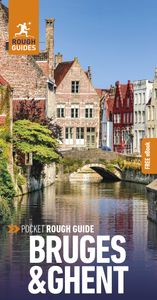
Find even more inspiration here

Planning your own trip? Prepare for your trip
Use Rough Guides' trusted partners for great rates
written by Rough Guides Editors
updated 30.04.2021
Ready to travel and discover Belgium?
Get support from our local experts for stress-free planning & worry-free travels.
- Where to stay
- Travel advice
The Straits Times
- International
- Print Edition
- news with benefits
- SPH Rewards
- STClassifieds
- Berita Harian
- Hardwarezone
- Shin Min Daily News
- Tamil Murasu
- The Business Times
- The New Paper
- Lianhe Zaobao
- Advertise with us
Eight things to do in Belgium, the melting pot of Europe
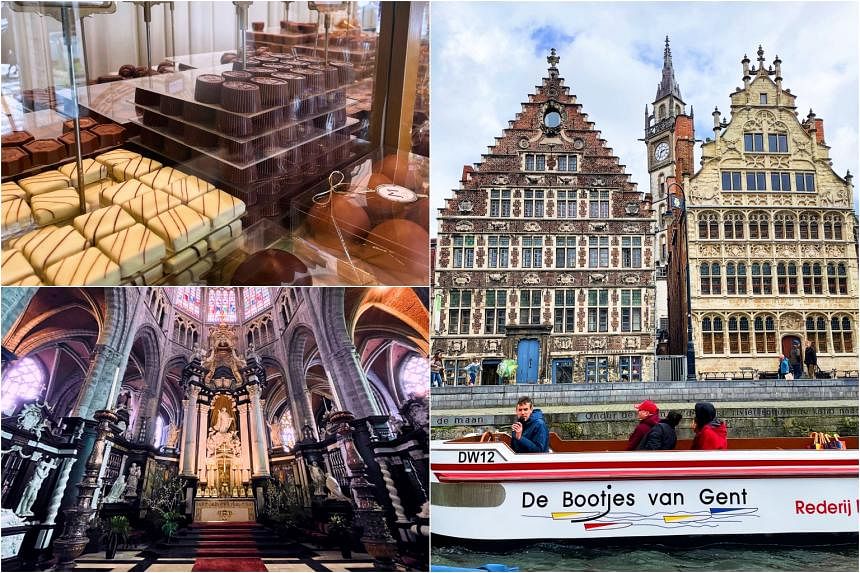
BRUSSELS – Belgium and Singapore have a lot in common. For one thing, both are small countries. Each has also been influenced by its respective regional neighbours. This confluence has resulted in a melting pot of a national identity in both locales.
But, as someone who had mostly associated Belgium with chocolates and the Tintin comics, I wondered what else the country would have to offer.
Already a subscriber? Log in
Read the full story and more at $9.90/month
Get exclusive reports and insights with more than 500 subscriber-only articles every month
ST One Digital
$9.90 $9.90/month.
No contract
ST app access on 1 mobile device
Subscribe now
Unlock these benefits
All subscriber-only content on ST app and straitstimes.com
Easy access any time via ST app on 1 mobile device
E-paper with 2-week archive so you won't miss out on content that matters to you
Join ST's Telegram channel and get the latest breaking news delivered to you.
- Travel and leisure
- Food and drink
Read 3 articles and stand to win rewards
Spin the wheel now
- Credit cards
- View all credit cards
- Banking guide
- Loans guide
- Insurance guide
- Personal finance
- View all personal finance
- Small business
- Small business guide
- View all taxes
You’re our first priority. Every time.
We believe everyone should be able to make financial decisions with confidence. And while our site doesn’t feature every company or financial product available on the market, we’re proud that the guidance we offer, the information we provide and the tools we create are objective, independent, straightforward — and free.
So how do we make money? Our partners compensate us. This may influence which products we review and write about (and where those products appear on the site), but it in no way affects our recommendations or advice, which are grounded in thousands of hours of research. Our partners cannot pay us to guarantee favorable reviews of their products or services. Here is a list of our partners .
The Complete Guide to Eurostar Trains

Many or all of the products featured here are from our partners who compensate us. This influences which products we write about and where and how the product appears on a page. However, this does not influence our evaluations. Our opinions are our own. Here is a list of our partners and here's how we make money .
Table of Contents
Destinations
Club eurostar, eurostar travel classes, lounge access, eurostar recapped.
Eurostar offers high-speed train travel between the U.K., Belgium, the Netherlands, France and Germany. Its trains can reach 186 mph, which means a train from London to Paris takes only 2 hours and 16 minutes. Eurostar merged with Thalys — another European high-speed train company — in 2023.
Taking a Eurostar train between these five countries can be more seamless than flying because you get a solid baggage allowance and don’t need to deal with airports, liquid restrictions in your carry-on and long security lines.
Here’s what you need to know about Eurostar’s destinations, cabin classes, lounges, loyalty program, amenities and pricing.
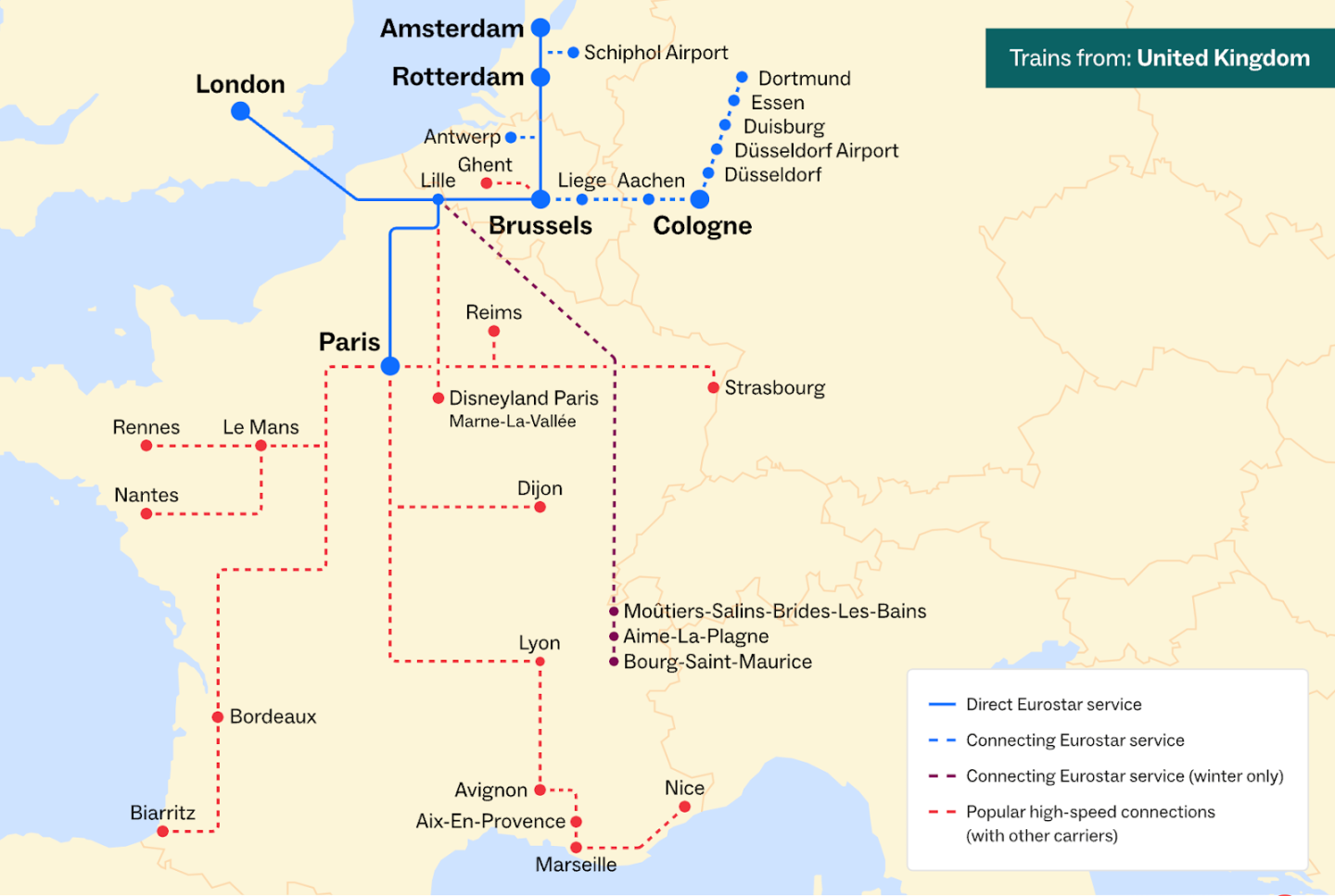
Eurostar offers direct train service to London, Paris, Brussels, Amsterdam and Rotterdam, Netherlands. For all other destinations, you must connect to a different train, potentially with another carrier.
The fastest train journeys are the following:
Paris to Brussels - 1 hour, 22 minutes.
London to Lille, France - 1 hour, 22 minutes.
London to Brussels - 1 hour, 53 minutes.
Brussels to Amsterdam - 1 hour, 53 minutes.
London to Paris - 2 hours, 16 minutes.
London to Rotterdam - 3 hours, 13 minutes.
Paris to Amsterdam - 3 hours, 20 minutes.
Paris to Cologne - 3 hours, 20 minutes.
London to Amsterdam - 3 hours, 52 minutes.
Depending on where you’re headed, taking the train may take less total time than flying. For example, the train from London to Paris takes 2 hours and 16 minutes, while a flight takes 1 hour and 20 minutes. Though the train takes almost an hour longer, other factors involved with flying, including early airport arrival, travel time to/from the airport, security and boarding, make the train the faster option.
The Eurostar operates out of St. Pancras International Station, located in central London and easily accessible by several tube (underground) lines and buses. By contrast, London’s main airports, Heathrow Airport and London Gatwick Airport, are located outside the city and can take an hour or more to get to depending on where you’re traveling from and your mode of transport.
Furthermore, Eurostar’s rules are arguably more traveler-friendly than those of airlines. On even the cheapest tickets, Eurostar allows adults to bring two pieces of luggage and one carry-on with no weight limit. Children can bring one piece of luggage and one carry-on.
You also don’t have to worry about paying for a seat or dealing with liquid restrictions. You can make fee-free changes to your ticket as many times as you like until seven days before departure. Ticket changes within seven days of departure incur a $40 fee unless you’re in Business Premier.
Club Eurostar is Eurostoar’s loyalty program and you can sign up for a free account to start earning points. You earn 1 point per $1 spent on Eurostar tickets. Train + hotel packages also earn points, albeit at a lower rate (1 point per $2).
Eurostar has four membership levels, and with each increasing level you earn more points on travel and get access to additional perks.
All levels can pool points with friends and family, use points to pay a portion of their tickets and upgrade their seats from Standard to Standard Premier/Comfort. If you’re going for elite status with Eurostar, the biggest advantages are companion vouchers, lounge access and priority benefits when traveling.
Rewards can be used for as low as 100 points on various experiences from free tickets to upgrades.
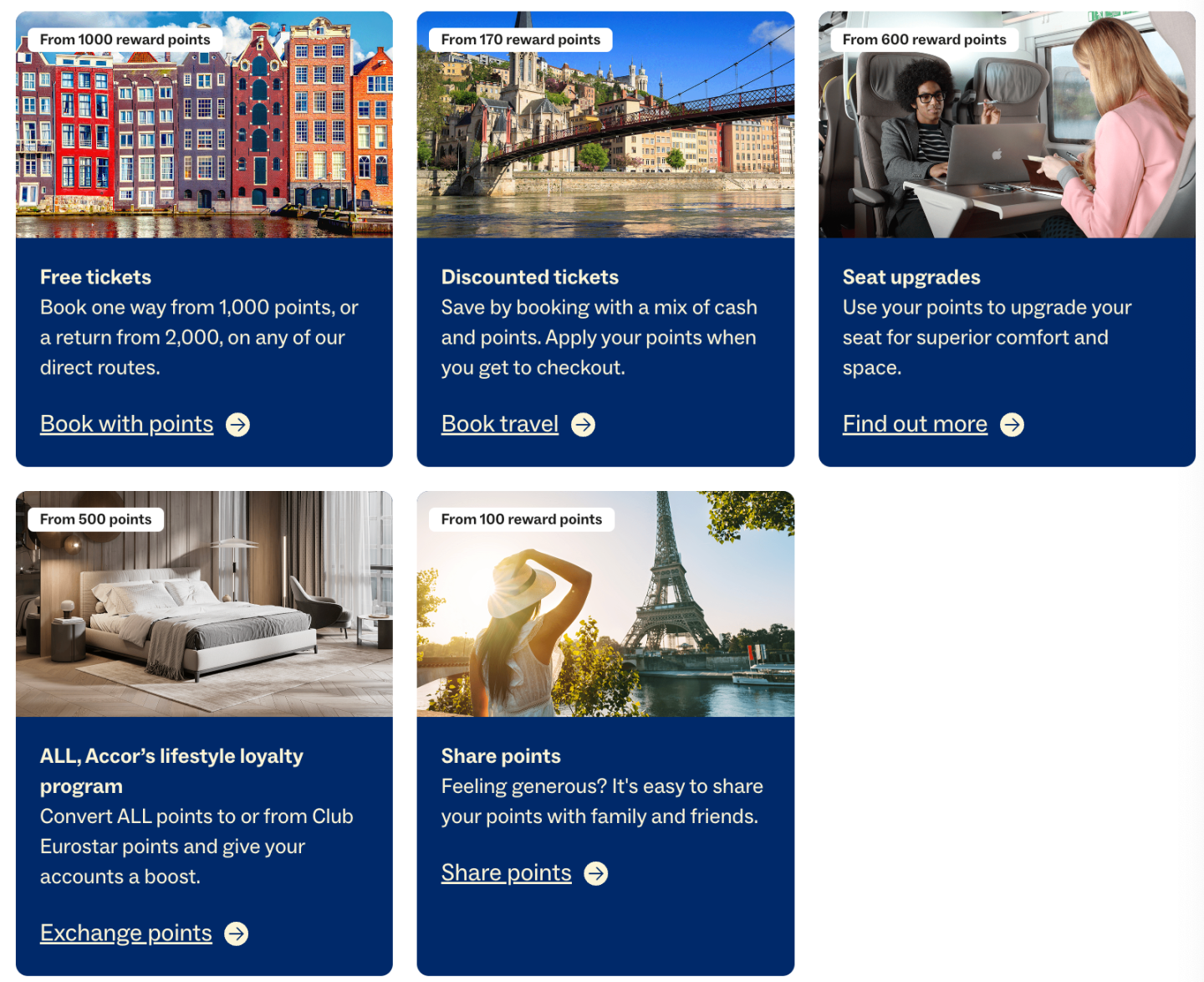
Standard cabin on the train from Amsterdam to Brussels. (Photo by Elina Geller)
Eurostar offers different travel classes, and these travel classes vary by destination. All trains offer Wi-Fi, but in my experience, the Wi-Fi has been awful, with upload and download speeds of less than 1 Mbps.
Trains to/from London
A Eurostar train to/from London offers three travel classes: Standard, Standard Premier and Business Premier. All seats offer U.K. and EU plug sockets. You can also choose your seat when traveling on this route.
Standard: This travel class offers the lowest priced tickets and food and drinks are available for purchase.
Standard Premier: You get free magazines and a more spacious seat, along with a light meal and drinks.
Business Premier: You get the same seat as in Standard Premier, plus additional perks including three pieces of luggage, a carry-on, hot meals created by Raymond Blanc OBE served with champagne, free newspapers and magazines and a dedicated fast-track ticket gate. You also get access to Eurostar lounges and NS International lounges.
Trains between Belgium, France, the Netherlands and Germany
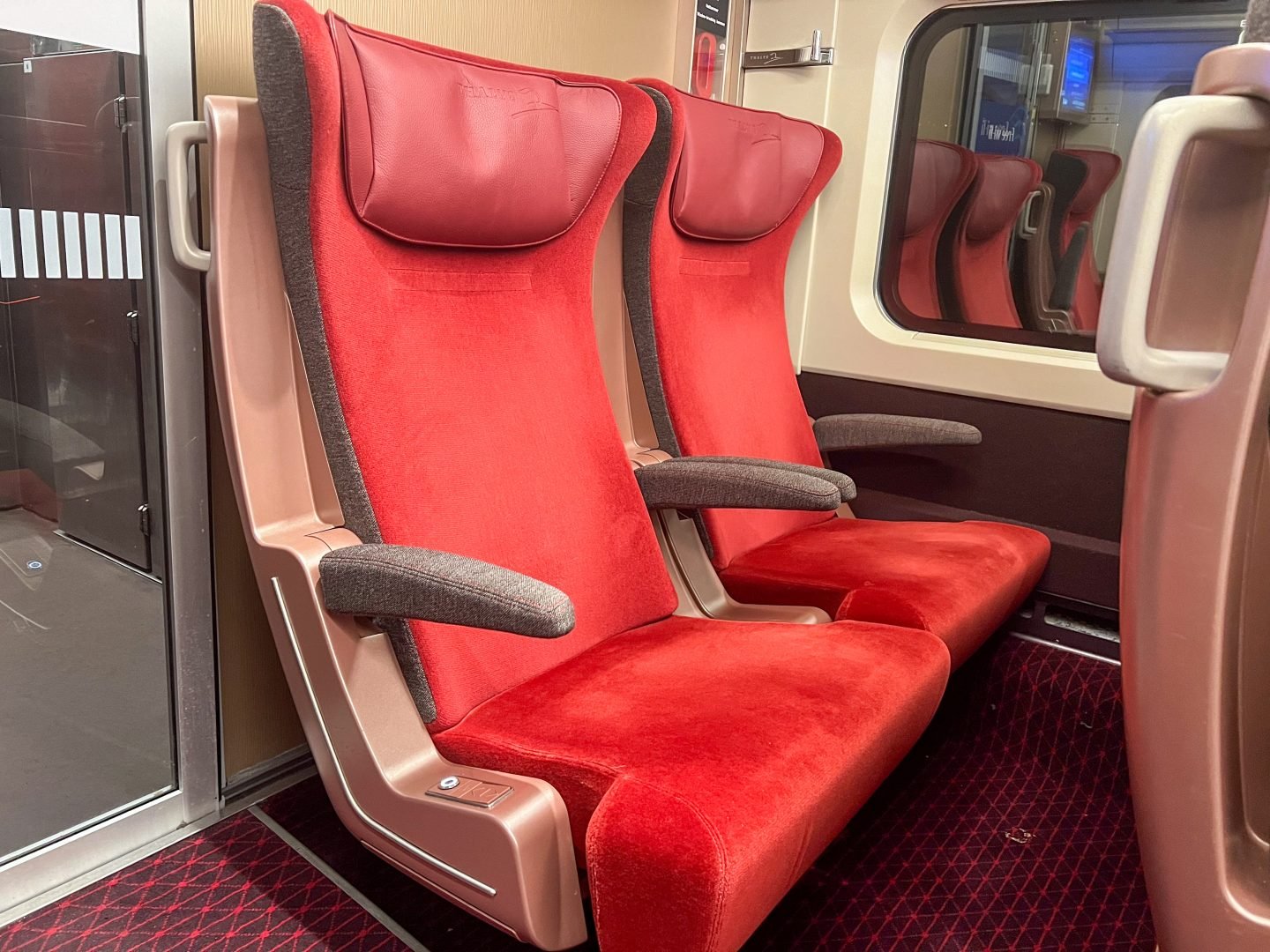
Premium seats on the train from Brussels to Amsterdam. (Photo by Elina Geller)
When traveling between Belgium, France, the Netherlands and Germany, there are three travel classes: Standard, Comfort and Premium. All seats include EU plug sockets.
You also have access to Eurostar’s taxi booking service, which allows you to arrange transport to/from the train station. Unfortunately you cannot choose your seat when traveling between these destinations.
Standard : This travel class has the cheapest tickets. Food and drinks are not included but can be purchased onboard.
Comfort : You get a more spacious seat, but still need to pay for food and drinks. Comfort seats have access to premium Wi-Fi, but I found that Wi-Fi to be just as slow as in Standard class.
Premium : You have the same seat as in Comfort class and some additional perks including a gourmet cold meal served at your seat, access to Eurostar lounges and NS International lounges.
The Eurostar amenities you receive depend on which class you travel in. You receive a complimentary meal in Premium, Standard Premier or Business Premier. Those in Business Premier (only available on London routes) receive three-course meals created in collaboration with Michelin-star chef Raymond Blanc OBE. Passengers in Premium get a meal designed by Belgian chef Frank Fol.
Passengers in other travel classes don’t receive a complimentary meal but can purchase drinks or snacks from the Eurostar Cafe.
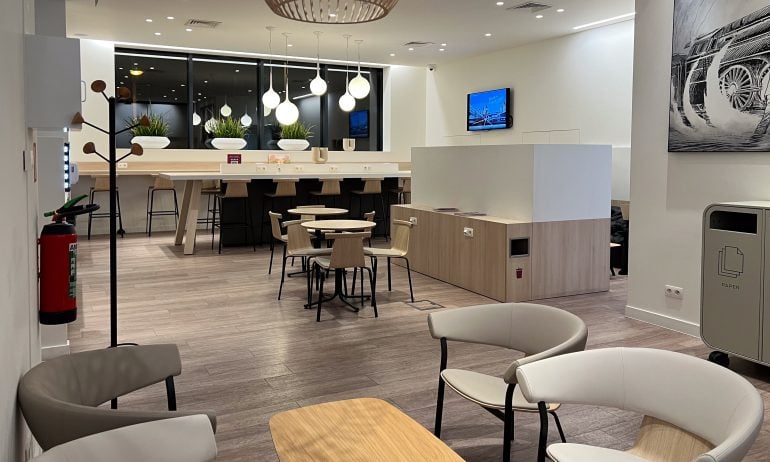
Eurostar lounge in Brussels. (Photo by Elina Geller)
Travelers in Premium can visit the Eurostar lounge in Paris and Brussels, and NS International lounges in Amsterdam and Rotterdam. Those traveling in Business Premier can use the lounge in London, Paris and Brussels.
Club Eurostar elites traveling on any fare class can access certain lounges depending on their elite status:
Avantage, Carte Blanche and Etoile members : Eurostar lounge in Brussels and Paris.
Carte Blanche and Etoile members : Eurostar lounge in London, Paris and Brussels; DB lounges in Cologne, Düsseldorf and Essen; NS International lounges in Amsterdam, Rotterdam and Schiphol airport; Railteam lounges in France, Belgium, Switzerland and Austria.
Check each lounge’s information page for opening hours. Generally, you can expect to find various seating spaces, complimentary newspapers and magazines, free Wi-Fi as well as food and drinks to enjoy.
Eurostar allows you to book tickets up to 120 days in advance, and the sooner you book the better. You’ll generally find the cheapest tickets on Tuesday and Wednesday. Since you can change your ticket fee-free as many times as you want until seven days before departure, you might as well book as soon as possible.
There are also special or discounted fares for the following groups:
Children under age 4
Kids ages 4-11
Passengers under 26 or over 60
Travelers in a group
Wheelchair passengers and companions
The availability of discounts depends on your destination, so you’ll want to check Eurostar’s page for guidance.
If you have a credit card that earns travel rewards, you’ll want to use it for this purchase since trains are part of the travel category. Here’s a sampling of cards that earn extra rewards for travel and don’t charge foreign transaction fees.

on Chase's website

• 2 points per $1 spent on travel, including train travel.
• 3 points per $1 spent on travel, including train travel.
• 2 miles per $1 on every purchase.
• 3 points per $1 on transit, including train travel.
Terms apply.
Earn 60,000 bonus points after you spend $4,000 on purchases in the first 3 months from account opening. That's $750 when you redeem through Chase Travel℠.
Earn 60,000 bonus points after you spend $4,000 on purchases in the first 3 months from account opening. That's $900 toward travel when you redeem through Chase Travel℠.
Enjoy a one-time bonus of 75,000 miles once you spend $4,000 on purchases within 3 months from account opening, equal to $750 in travel.
Earn 40,000 Membership Rewards® Points after you spend $3,000 on purchases on your new Card in your first 6 months of Card Membership.
You can pay in U.S. dollars when buying Eurostar tickets online. However, if you plan to buy anything on board the train, and you’ll be in Europe anyways, you’ll want to use a card that waives foreign transaction fees .
» Learn more: Best travel credit cards
Is it cheaper to fly or take Eurostar?
The answer to this question depends on how far in advance you purchase your ticket, your day of travel, whether you need to pay for luggage, and the difference in costs between traveling to the airport and to a Eurostar train station.
Here’s a sampling of Eurostar fares in September 2024 from London to Paris.
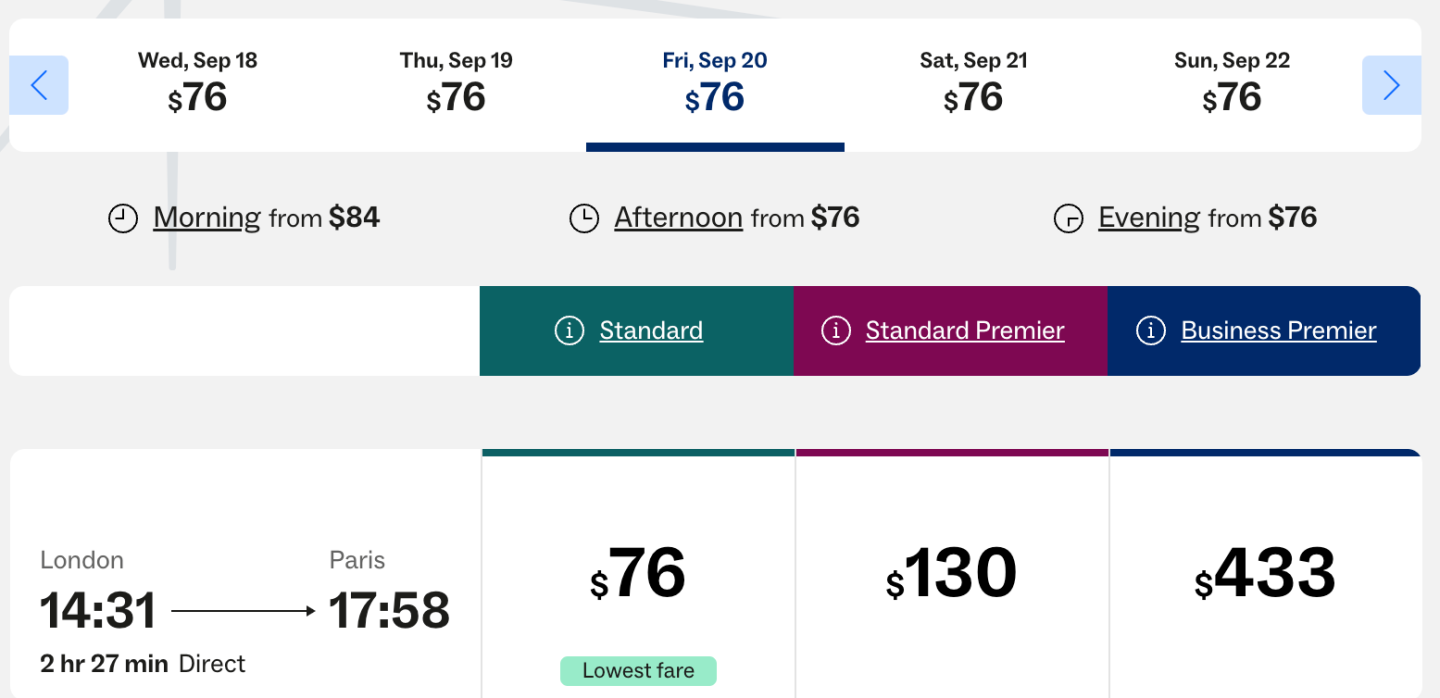
Here’s a selection of flights from London to Paris on the same day.

Although the cheapest flight is $13 less than the train, bag fees are not included in that price. And since Eurostar stations are generally more centrally located, your overall cost may be cheaper on the train after factoring in a rideshare or taxi to the airport.
Eurostar offers a convenient way to travel between the U.K., Belgium, Netherlands, France and Germany. If you’re deciding whether to fly or take a Eurostar, factor in the cost, travel time (including the time spent getting to and from the airport, as well as the time spent at the airport) and how many bags you're bringing as part of your decision.
How to maximize your rewards
You want a travel credit card that prioritizes what’s important to you. Here are our picks for the best travel credit cards of 2024 , including those best for:
Flexibility, point transfers and a large bonus: Chase Sapphire Preferred® Card
No annual fee: Bank of America® Travel Rewards credit card
Flat-rate travel rewards: Capital One Venture Rewards Credit Card
Bonus travel rewards and high-end perks: Chase Sapphire Reserve®
Luxury perks: The Platinum Card® from American Express
Business travelers: Ink Business Preferred® Credit Card
On a similar note...


IMAGES
VIDEO
COMMENTS
In Belgium, free public restrooms are virtually non-existent. Most public facilities charge and few accept credit cards, so you'll want to carry loose some euros and cents in change. Expect to pay around €0.50 (US$0.54) per visit - get into the habit of using the washroom before leaving the hotel or restaurant.
This is an area of deep, wooded valleys and heathy plateaux, often very wild and excellent for hiking, cycling and canoeing. Use either Namur or Luxembourg City as a jumping-off point for the heart of the region, at Bouillon or La Roche-en-Ardenne. Discover more places in Belgium. Antwerp and the northeast Travel Guide.
Day 1 - Brussels. After arriving in Brussels, most people head straight to the Grand Place to see the spectacular square and all its grand guild houses. One of the capital's most iconic attractions, it lies right next to Manneken Pis - the city's famous statue of a small peeing boy.
Belgium Travel Costs. Accommodation - For a dorm bed in a hostel, prices range from 25-35 EUR per night for dorms with 4-6 beds. Larger dorms with 10 or more beds cost around 18-25 EUR. Private rooms cost between 70-150 EUR per night. Free Wi-Fi is standard and some hostels include self-catering facilities.
Last but not least, no visit to Bruges is complete without a visit to the Groeningemuseum, a fine art museum with an impressive Flemish Primitive collection. 4. Antwerp. Best for fashion and design. Home to the world-renowned Royal Academy of Fine Arts Antwerp, Belgium's second city is also its coolest.
Belgium Travel Guide. Belgium is a travel destination made for history buffs and chocolate addicts. Though the nation is small, it plays a big part in the world's history. There are over 3,000 castles to explore, battlegrounds from the World Wars, and every museum imaginable. After you've had your history fill, you can kick your feet back ...
8 of the best places to visit in Belgium. Dec 4, 2023 • 8 min read. From cultured city breaks in Brussels or Bruges to relaxing in hot springs or on the beach, here are the best places to visit in Belgium. National Parks. Belgium's best national parks and nature reserves: a short guide to its wild side.
Belgium in Winter: Fun Things to Do + Travel Guide A few things to keep an eye out for are the Basilica of Holy Blood, Bruges' Town Hall, Bruges' windmills, filming locations from the movie In Bruges (if you need some travel inspiration before your trip to Belgium, give it a watch!), and lovely Minnewater Lake.
Belgium travel guide: quick facts. Size: it's a small country at 30.528 km² or 11,787 sq mi People living there: more than 11 million Capital: Brussels Governmental structure: federal constitutional monarchy with a parliamentary system National day: July 21 Time zone: Central European Time / UTC+1 / GMT+1 Currency: euro (EUR) Power voltage and socket type(s): 230V, plug types E and C.
This seven-day itinerary will take you on a journey through some of the country's most iconic cities, including Antwerp, Ghent, and Bruges. I'll also share a few hidden gems and off-the-beaten path places to help you fall in love with Belgium. You can see a map of the various locations below.
Day 1: Arrive in Brussels and visit Belgium's capital. Day 2: Take a day trip to the medieval city of Bruges (and Ghent if you want to make an extra stop) Day 3: Visit Dinant, Vêves Castle and Walzin Castle in the Walloon Region of Belgium. Day 4 (optional): Spend a day in Antwerp, the diamond capital of the world.
Belgium falls through the cracks. Wedged between Germany, France, and the Netherlands, and famous for waffles, Smurfs, and a statue of a little boy peeing, it's no wonder it can get lost in the mix. But Belgium rewards with richer sights than you might expect — and fewer tourist crowds. You'll encounter some of Europe's finest cuisine, including the best beer, creamiest chocolates, and ...
17. Look out for museum free days. One of the best ways to save money in Belgium is by scoping out free days in advance for major museums. In Brussels for example there's a lot museums free on the first Wednesday and first Sunday each month. Antwerp has a similar thing for the last Wednesday of the month.
Some popular places require advance bookings: Gravensteen in Brussels is one, the Belfry in Bruges is another. No matter where in Belgium you go, you won't have trouble communicating in English. We talk about language and a ton more fun facts and observations in our Top Tips for Traveling in Brussels article. 1.
Bruges is one cutest old towns in Europe - one of the best things to see in Belgium. #21 The second most picturesque city in Belgium is Ghent. Ghent is the capital of the Flanders region, the city is also covered in canals and Flemish architecture making. It has a fairytale castle, Gravensteen castle, with a lovely bridge.
Brussels Tourist Agency. Rue Royale 2-4, 1000 Bruxelles. +32 2 513 89 40. [email protected]. visit.brussels. Welcome to Belgium! We're delighted that you have chosen us for your next holiday. Discover our surprising regions and let yourself be seduced by all Wallonia, Brussels & Flanders has to offer.
13- Arlon: Uncovering Stories of Battle-Scarred History. Arlon, a charming city located in the southern region of Belgium, holds a significant place in the country's history. This picturesque destination invites visitors to uncover stories of battle-scarred history dating back centuries.
Brussels. Explore the Grand Place, Manneken Pis, and delicious Belgian chocolates. Welcome to travel-belgium.be, your ultimate guide to exploring Belgium. Discover enchanting cities, delightful cuisine, and travel tips for an unforgettable Belgian adventure.
The official languages are French, Dutch and German, but English will do. 2. Not all Belgian chocolate are good. 3. Belgium has plenty of UNESCO World Heritage Sites. 4. Ghent is better than Bruges. 5. You might not like Brussels the first time you visit.
Spring and Autumn are great times to go backpacking in Belgium. Prices will be more reasonable, crowds will be thinner, and the weather will still be "comfortable.". Student towns, like Ghent and Leuven, will also be active during this time, which means there will be plenty to do at night.
Visit important landmarks and museums on the way with this self drive itinerary, with enough time to explore cities such as Brussels and Rotterdam on the way. view trip ⤍. 10 days / from5564 USD. Taste of Three - Belgium, France and Switzerland. Start your journey in Belgium and explore Brussels, Ghent and Bruges.
Top attractions include indulging in Belgian snacks, spotting street art and viewing the world's most stolen painting. Read more at straitstimes.com.
Hello! Welcome to Belgium, Explore our beautiful little country, which has all the benefits of a modern and comfortable rail network. Be sure not to miss out on visiting the cities of Antwerp , Brussels , Liège, Ghent or Maasmechelen Village, all of which are serviced by several trains per hour. Whether you are a tourist for a day or a week ...
In the "Antwerp Travel Guide 2024," discover everything you need to know to make the most of your visit to this enchanting Belgian gem. Must-See Attractions: Explore the majestic beauty of Antwerp's historic landmarks, from the iconic Cathedral of Our Lady to the imposing Antwerp Central Station. Delve into the city's artistic legacy at the ...
Eurostar offers high-speed train travel between the U.K., Belgium, the Netherlands, France and Germany. Its trains can reach 186 mph, which means a train from London to Paris takes only 2 hours ...